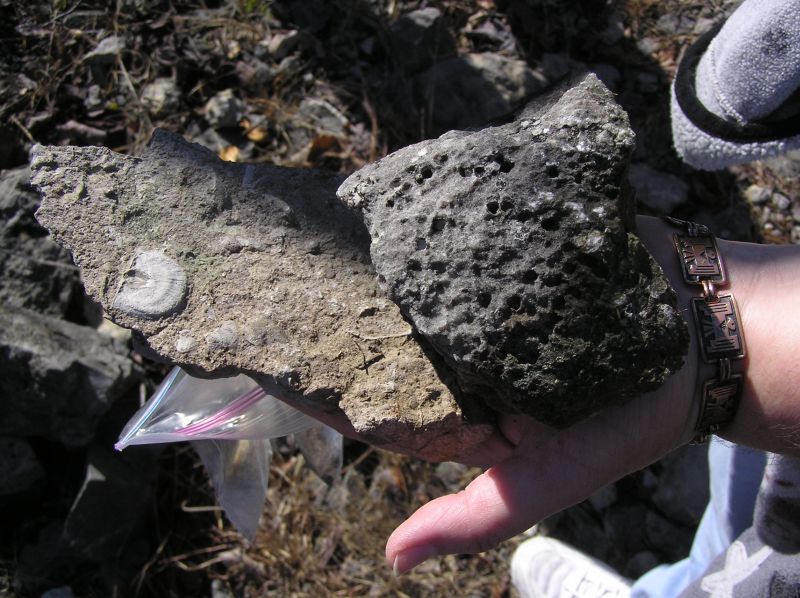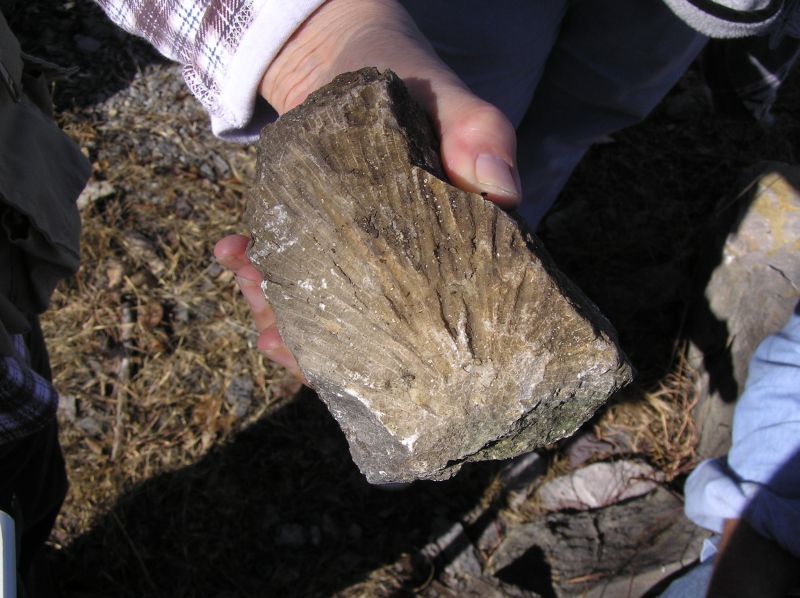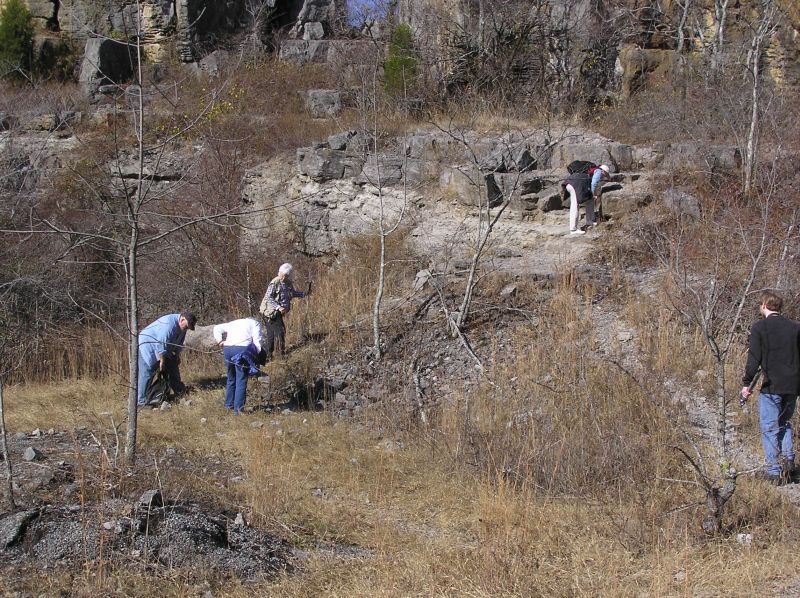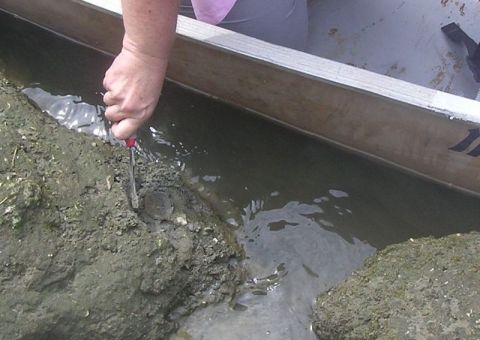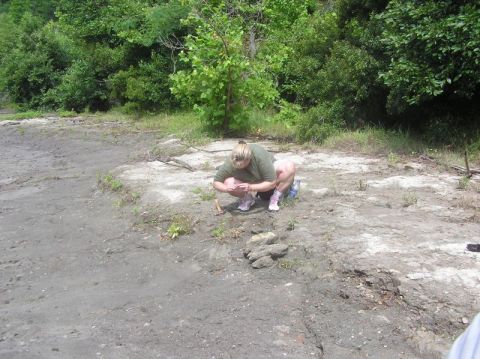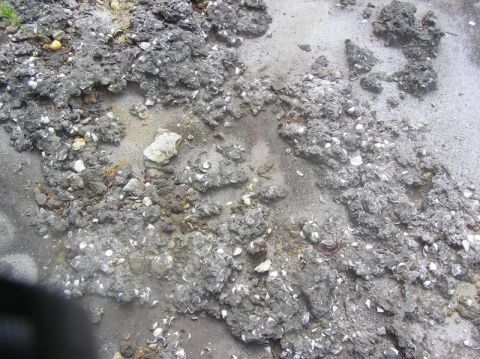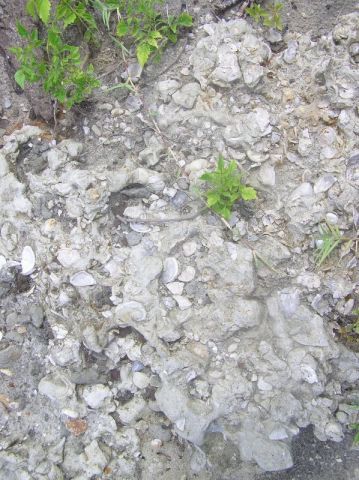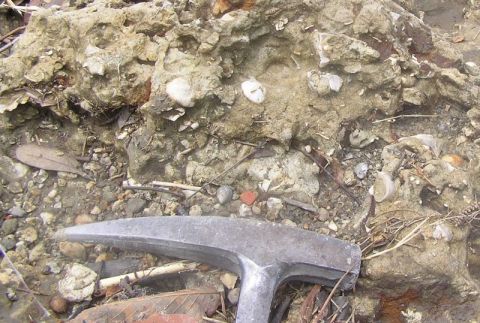Shells and echinoids in matrix. These rocks are pretty hard, so these were left in place.
2006
January 14, 2006 - Cambrian Fossils, Cherokee Co, AL
Neither rain, nor sleet nor snow nor lake wind advisories will deter the BPS from hitting a favorite NE Alabama site. No kidding about the snow! As we assembled in the morning at the rest area little flakes were seen drifting down. We all bundled up and headed out anyway. In spite of the weather, we had a great turnout of 24 1/2, with members coming from as far away as Atlanta and Selma to hunt trilobites on a lake in Cherokee county.
First stop was a primo site for finding brooksella and several nice pieces were found. Vicki found an unusual one shaped very much like a small starfish. "Brooksella" are believed to be the internal mold of a "primitive jellyfish", possibly from the Conasauga Fm, Dresbachian stage, late Cambrian approximately 515 million years ago. Nancy worked hard at trying to persuade Daisy the Dawg to sniff out fossils, but Daisy would rather play with Paige and search around for a squirrel or two! After experiencing the freezing wind which would almost blow one over, it was time to warm up - on to the next site.
After a timeout to repair a flat tire for Michael we took off for our 2nd site. Temps in the 40's (felt like the 30's!) and the whitecaps on the lake were a hint that maybe we should NOT go out in the boat, so we contented ourselves with the shoreline. Nevertheless, everybody found good amounts of trilobites. Steve found an exceptional trilobite specimen on a hard pebble, and Hitoshi found a beautiful stromatolite specimen. Since frostbite seemed imminent it was decided to retreat to the restaurant and get hot food and tell tales of the day and of other trips and fun. Michael and Sylvie had an exciting announcement: the arrival of baby "Elias" due in May! While we warmed our bods, Leisa was out "visiting". She met a local person who invited us to his house where he said there were trilobites behind the house, and sure enough, there were plentiful outcrops of the Conasauga Shale. (He also gave her a very nice 4 inch trilobite he had found in California - lucky lady! Just shows what happens to nice people!) Trilobites found today ranged from 1/8 inch to about 1 1/2 inches. These fossils are from the middle Cambrian Conasauga Fm. Albertan stage, and are approximately 530 million years old. Cephalon (heads), pygidium (tails), and several whole specimens of Coosella, Coosia superba, Kingstonia, Densonella, Holcacephalus, and Norwoodella were found.
Edited by Vicki Lais
(pictures courtesy Lea Martin and Vicki Lais)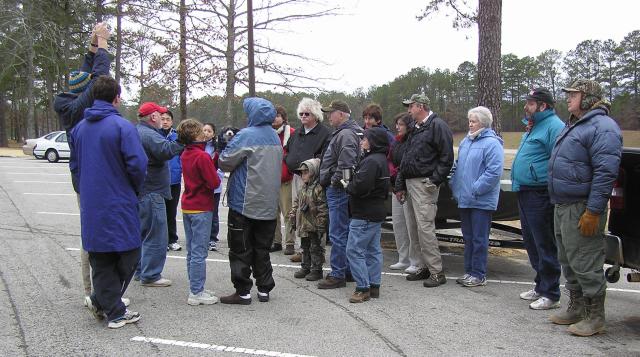
At the meeting location, Greg is informing the group of the day's upcoming activities.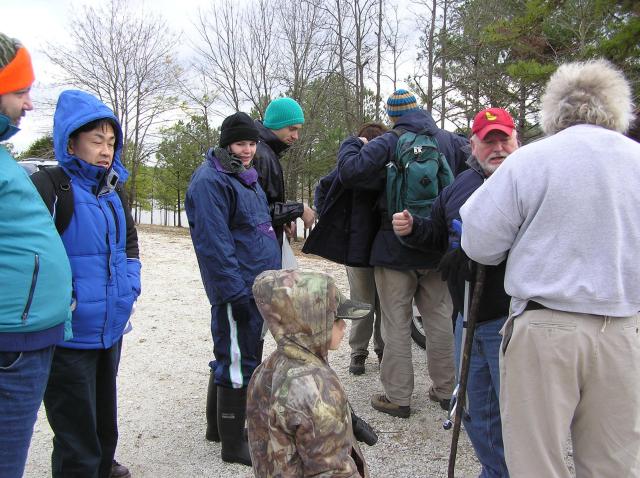
Greg discussing what will be found at the first site, and showing his collecting tool.

Part of the group searching for brooksella specimens. This lakeshore is composed of mostly pebbles.
Yeah... let's see.... thats Greg, and Michael, and, um, Jan, and Lea, and uh, who's that in the blue jacket?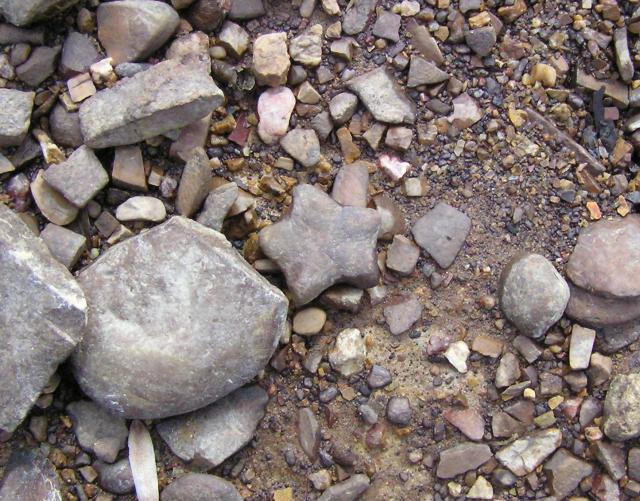
A nice brooksella found by Vicki.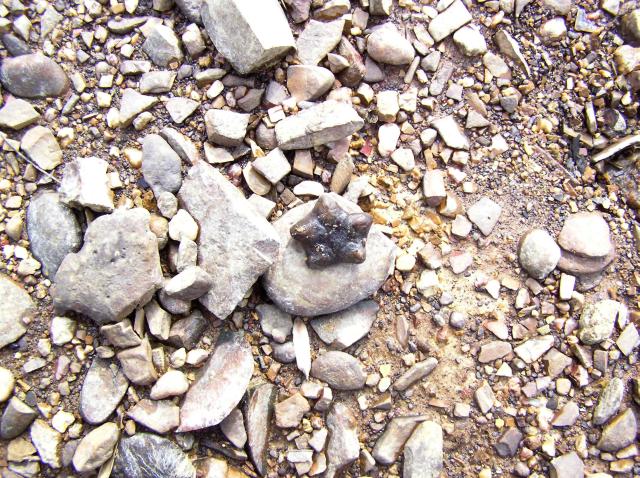
Other side of the same brooksella.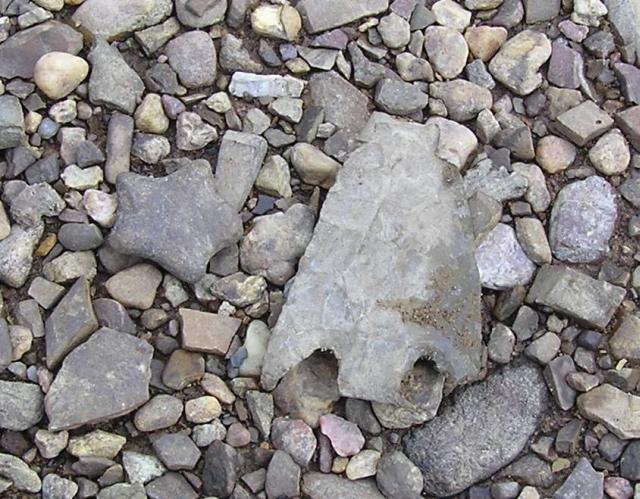
Vicki found a nice point on the beach, too.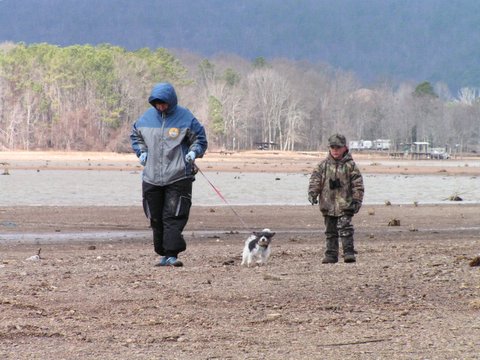
Nancy, Daisy, and Steve surveying the lake shore.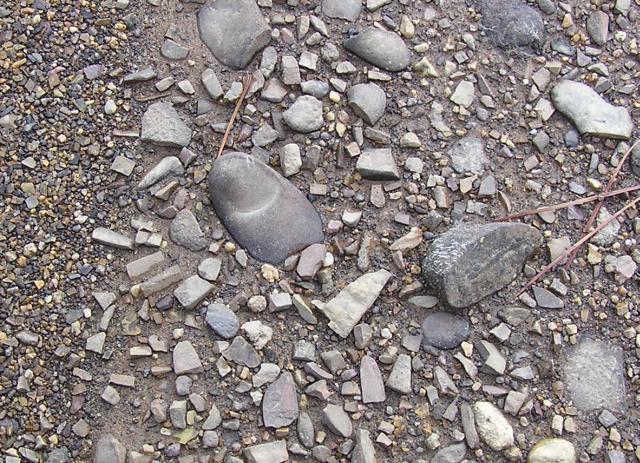
Another unusual find, there's obviously a fossilized man under here!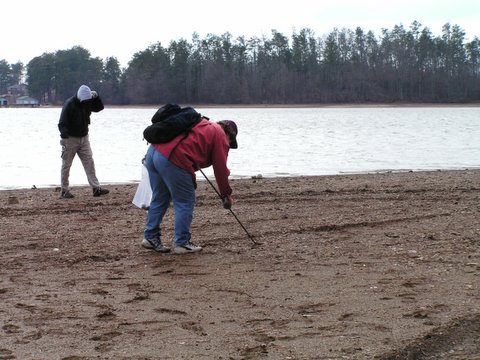

Carl has decided to examine every rock in this spot.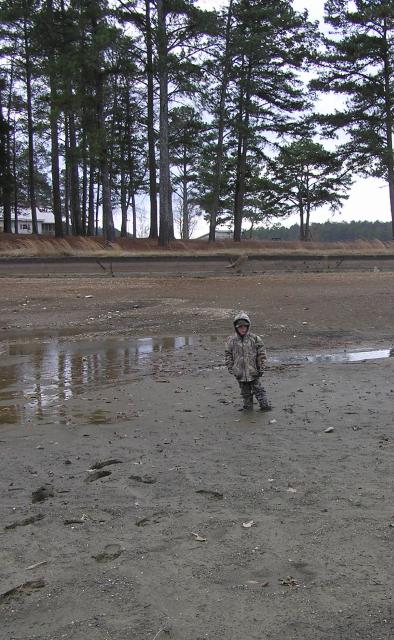
Oops.... I'm stuck and I can't move! Dad Steve went to rescue Steven, and got stuck himself! The mud is so bad in places it will pull your shoes off.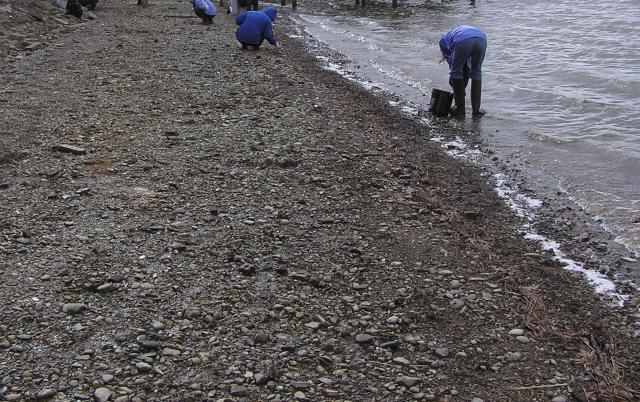
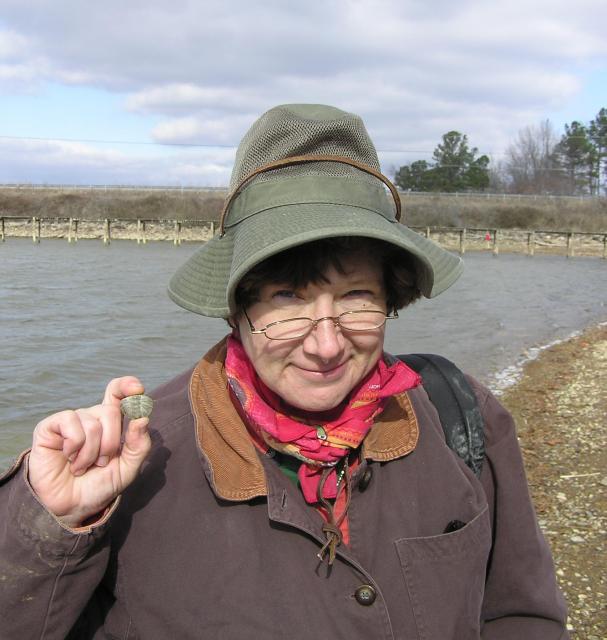
Claire has found a nice pygidium.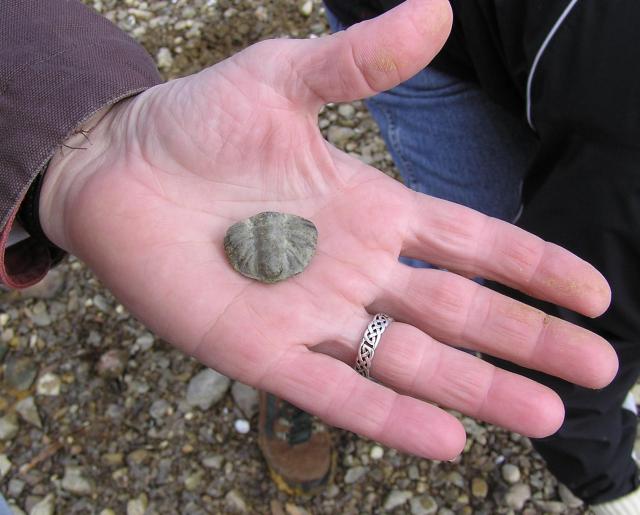
A closer look at Claire's trilobite find.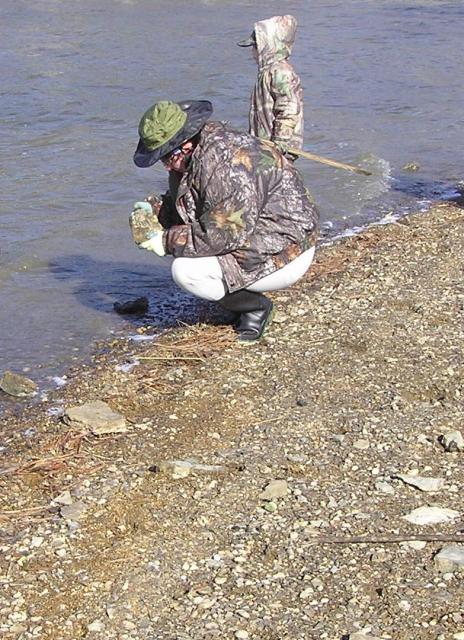
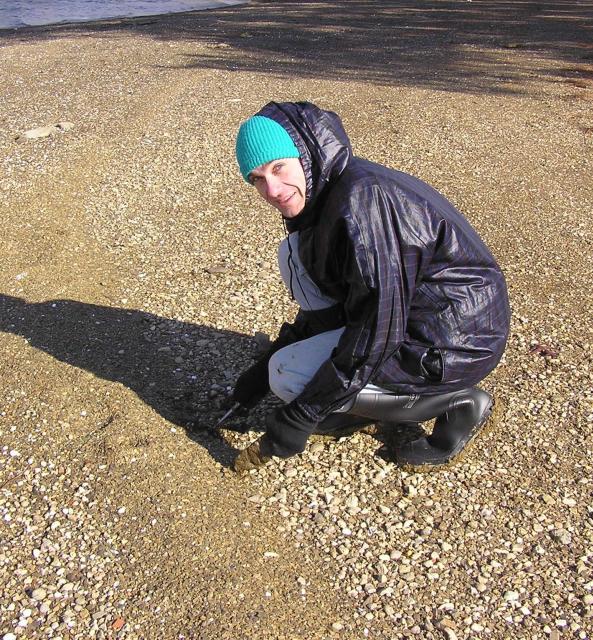
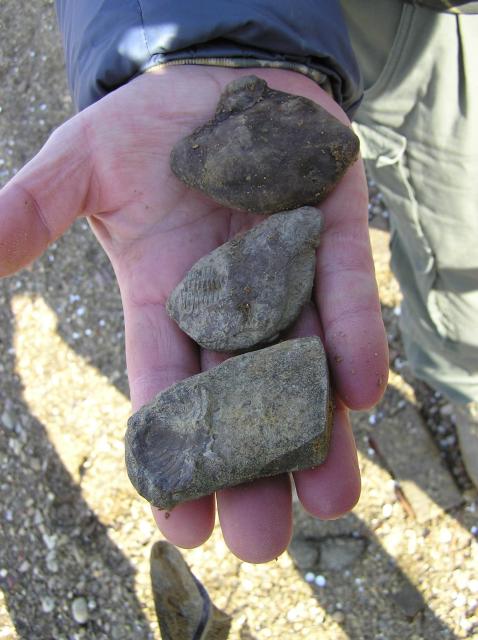
Some trilobites found today.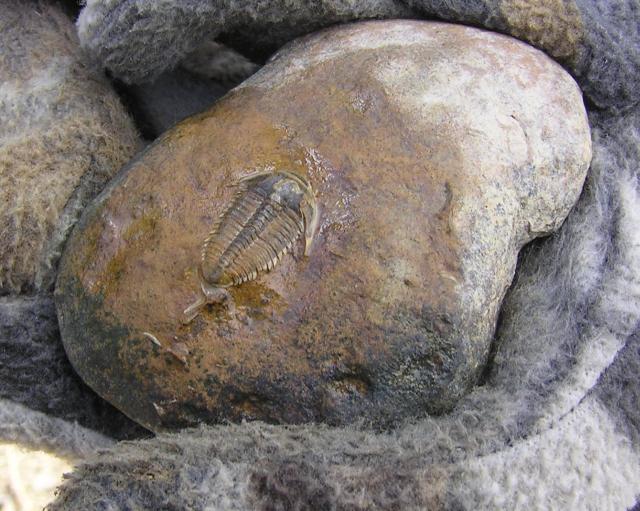
Very nice trilobite found by Steve.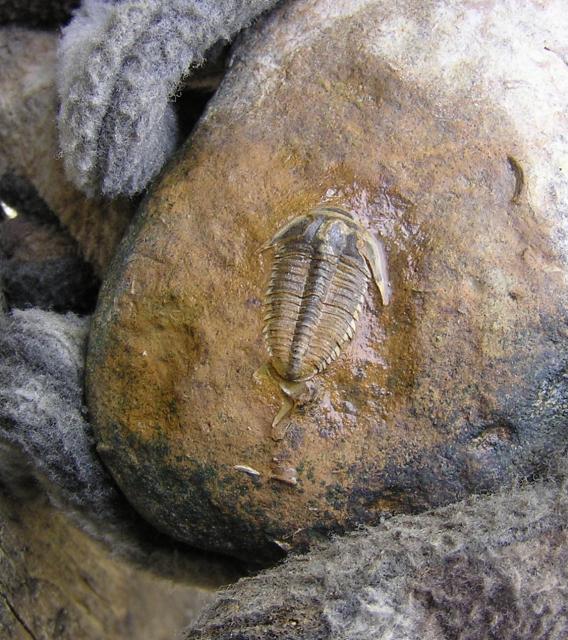
A closer look.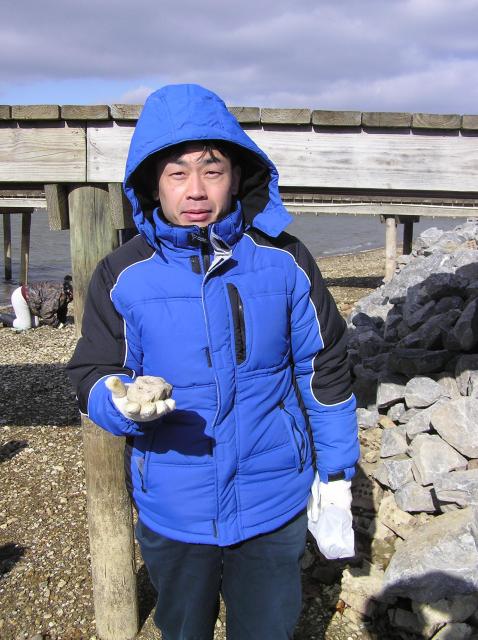
Hitoshi has found a very nice stromatolite specimen.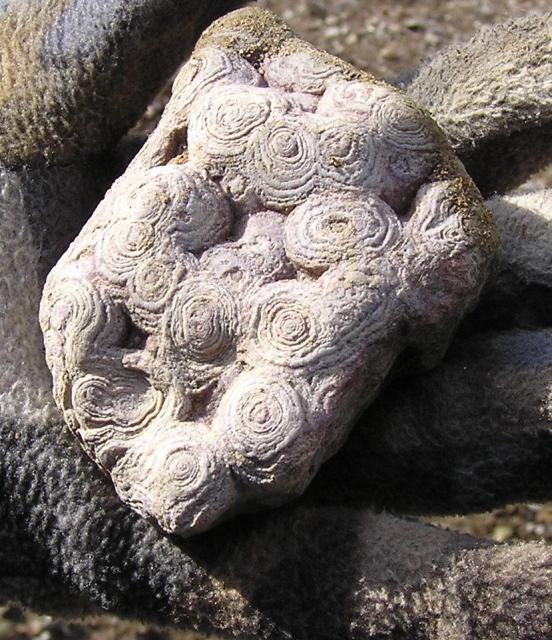
A closer look at Hitoshi's stromatolite find.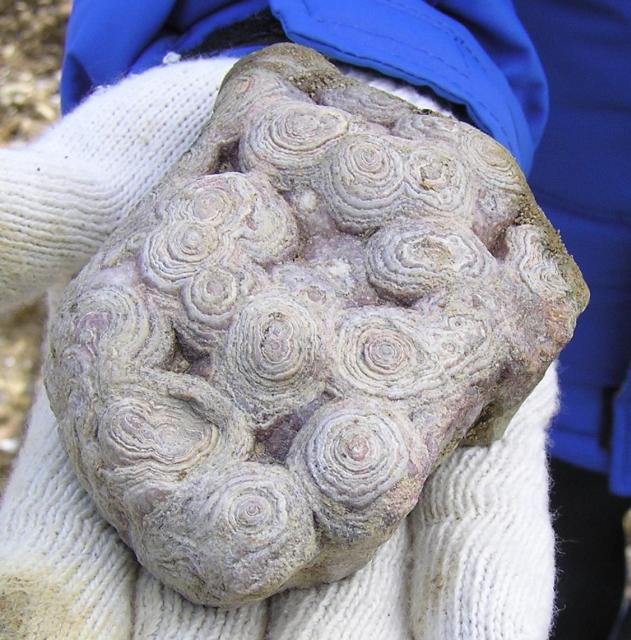
An even closer look.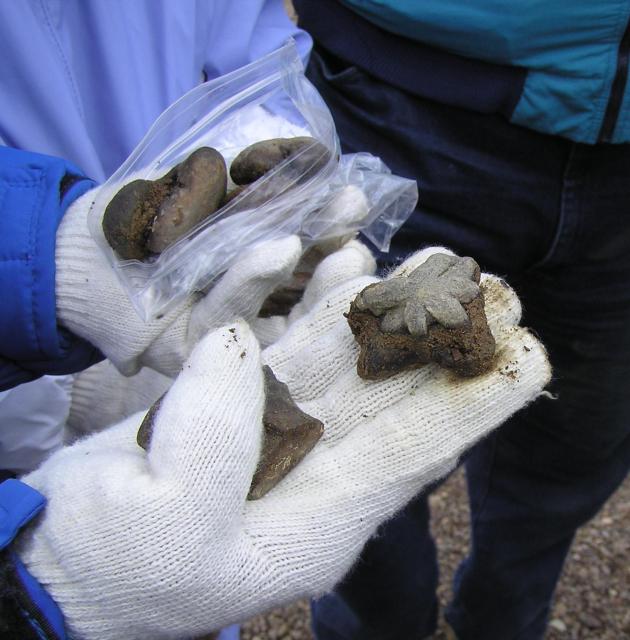
Hitoshi had a good day today! Nice brooksella!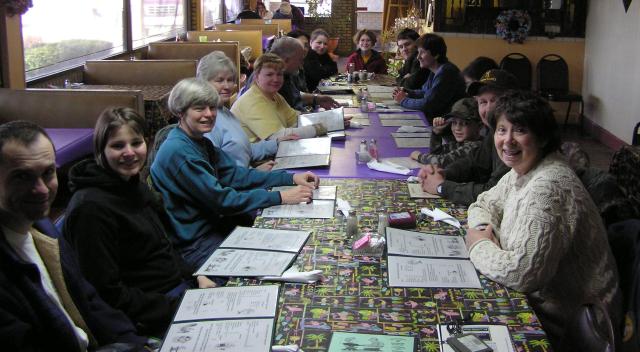
Here's most of the group getting warm and cozy. Several members decided to stay out collecting, and Leisa was out negotiating for another collecting site. Sylvie (2nd from left) announced she and Michael are expecting a new member of the family in May! Congratulations!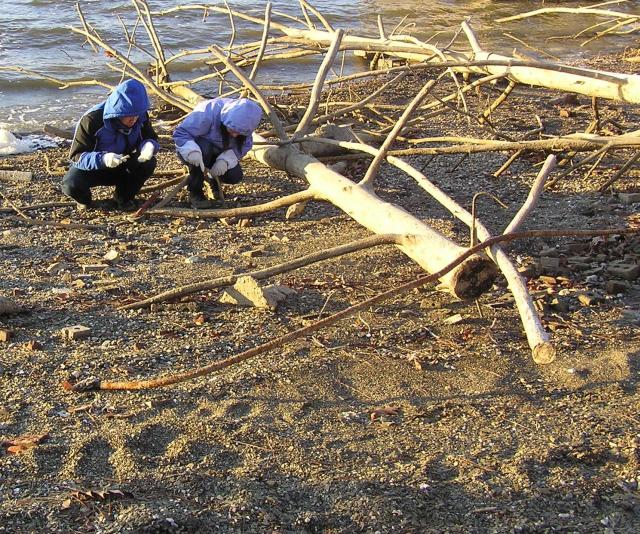
The lakeshore at the 3rd site of the day was mostly Conasauga shale, much of it already weathered out and broken into tiny pieces.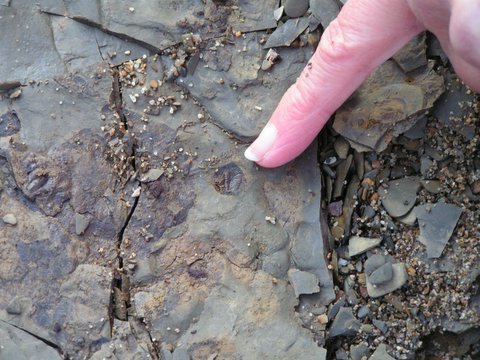

Nice outcrop of shale, and a trilobite found on a pebble.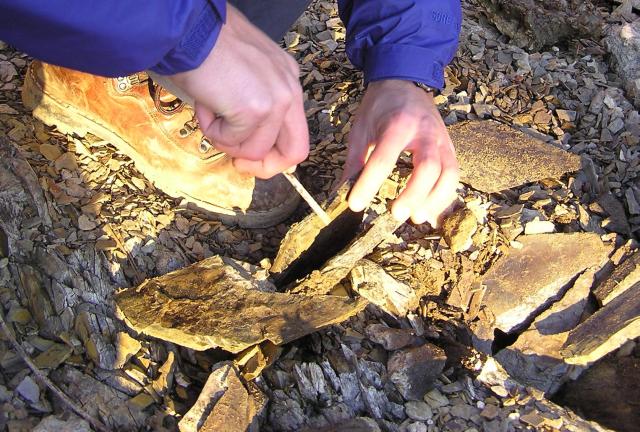
When the shale is split, numerous trilobites are exposed.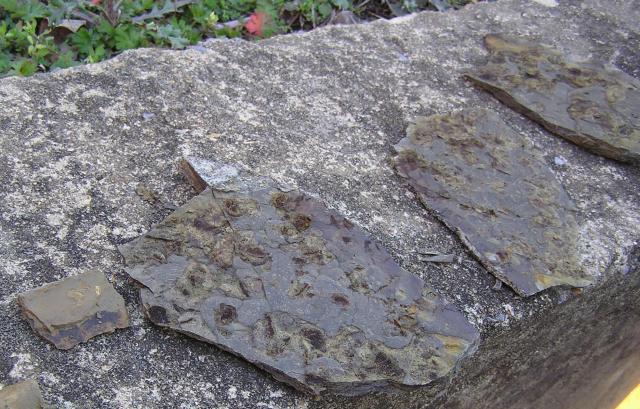
Each dark spot is a small trilobite.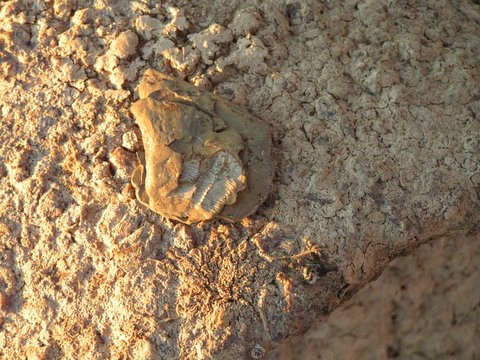
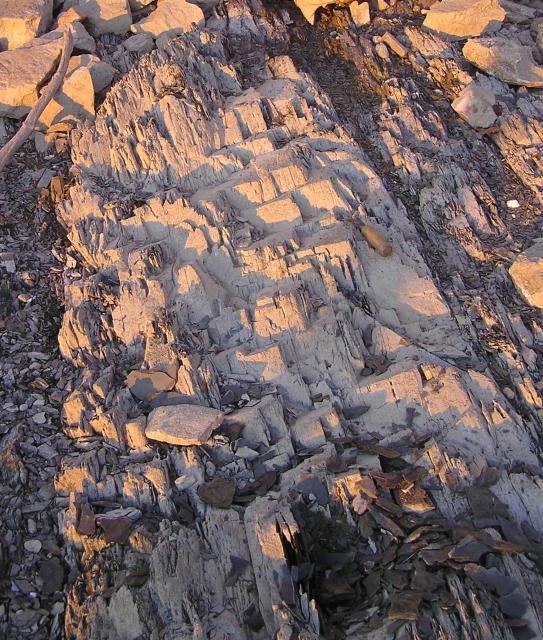
A nice outcrop of Conasauga shale.
Leisa found a rock that appears to be worked, probably a scraper.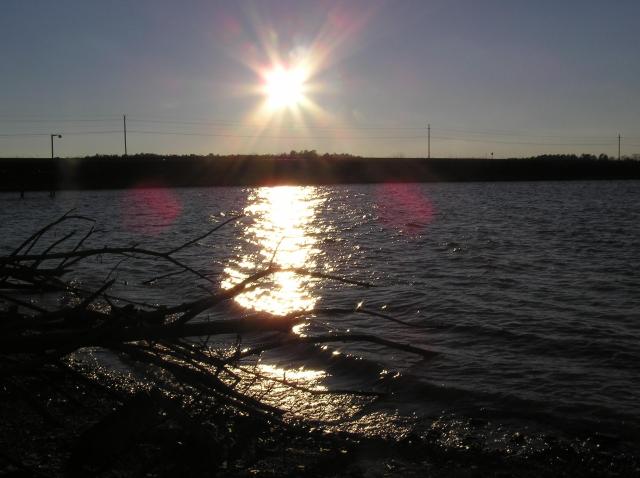
A pretty ending to a fine day of collecting!
February 18, 2006 - Pennsylvanian Fossils, Bibb and Shelby Co, AL
Another trip not put off
for "rain, nor sleet, nor snow
etc."
Near-freezing temperatures, 100% chance of rain, an overcast sky and
icy drizzle to begin the day were all on the menu at the BPS field trip
in February to strip-mine sites in Bibb and Shelby county. To
give you an idea of what we decided to brave, our host at our first
stop, an active coal washing site, didn't show up until we called him,
because he thought that nobody in their right mind would be out
there! Well, you know, as Nancy remarked, "Once you start
finding
things, you forget how cold you are!" And this from somebody
wearing a "Teenage ninja fossil-hunter suit." Of course, all
were
outfitted in attractive hard-hats, an MSHA requirement for visits to
active mining sites. Just try keeping those on while bending
over
to find bits and pieces of neat stuff!!! Next time, we should
bring little elastic strings to hold them on! Perhaps we
should
have been wearing them on the parts of our anatomy most-often turned
towards the sky!
So, there were the most hard-core of the BPS'ers, happily
finding
plenty of plant fossils. Our first site was at a coal washing
facility, where a variety of plant
material was found, including numerous stem impressions, casts,
and parts of tree ferns. Excited cries, of "Wow, look at this
one!" made
it hard to leave for the next site, an abandoned mine a few miles back
in the woods, but, the word that we could lose the hardhats, among
other attractions, won the gang over.
The second site was in the boonies, even for that
area of the
state, way down a long dirt road through the woods, through a locked
gate, near where a prison used to house people who were busting rocks
against their will, so to speak. This second site was very
prolific, and members found tree ferns, calamites, and a few tree fern
seeds.
Some very nice specimens were found, including new "doorstops" for some
members.
It was decided to move on to a third site, but the road was
too muddy
for us to drive up to it. This must be a good place, though,
because at
least one nice specimen was found near the entrance: a beautiful little
silhouette of lacy fern leaves from so very long ago.
One more stop, to look at a site containing remains of bark
impressions
and calamites casts. There were some nice tree fern specimens in very
fragile, easily
crumbled rock. A number of fossils were in rocks too large to lug home,
and our hands were too frozen, anyhow! Then we finally
decided it
was time to think about
heading home for hot baths, hot laundry, hot food and a nice,
long rest. Maybe our next trip will be graced with sunshine
and
gentle breezes!
--Edited by Vicki Lais
(photos
courtesy Vicki Lais)

Some of the
group on top of a spoil pile.
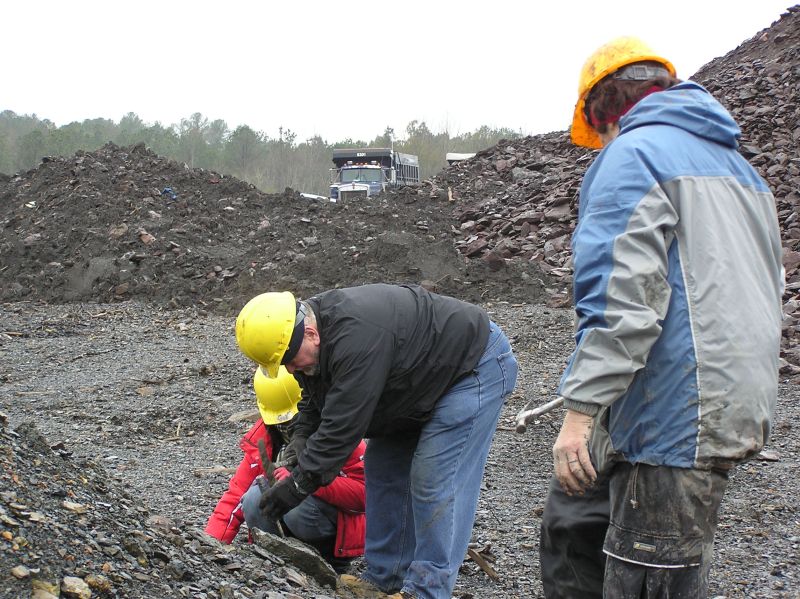
Greg
demonstrating how to get the fossil out safely without taking home
the entire rock.
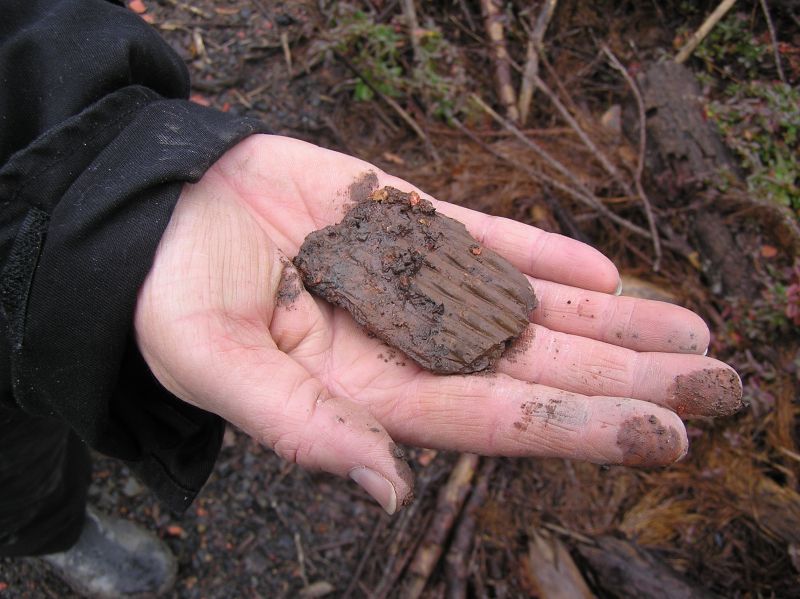

Small balls of iron ore used in
the ironmaking process. These apparently date to the 1940's
and
50's when coal mines in the area were in full force and trains carried
various materials between the mines and the steel plants.

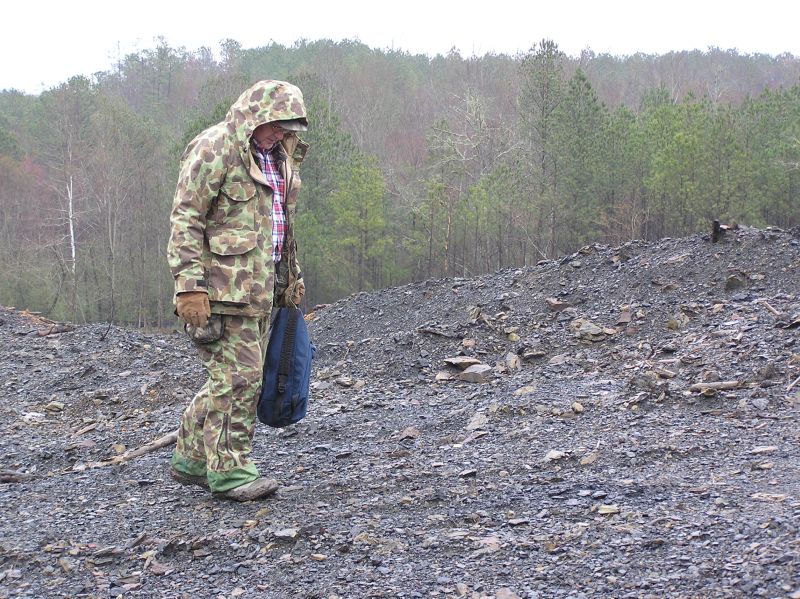
Bill
searching for more fossils.

At our second
site, many of the rocks were red rather than
gray.
This was due to the rocks being "burned" at some time in the past,
perhaps with a smouldering coal fire.
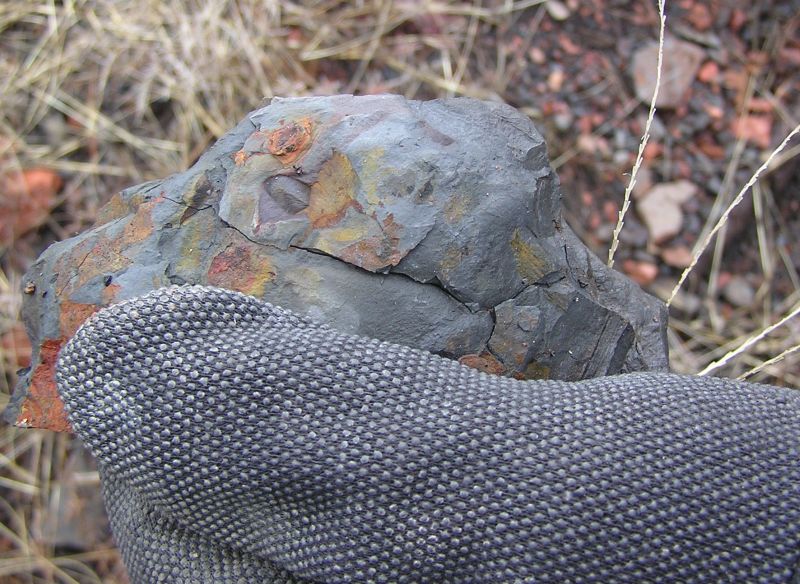
Nice "tree
fern" seed fossil found by Greg.

Leisa helping identify the fossil Ryan has found.
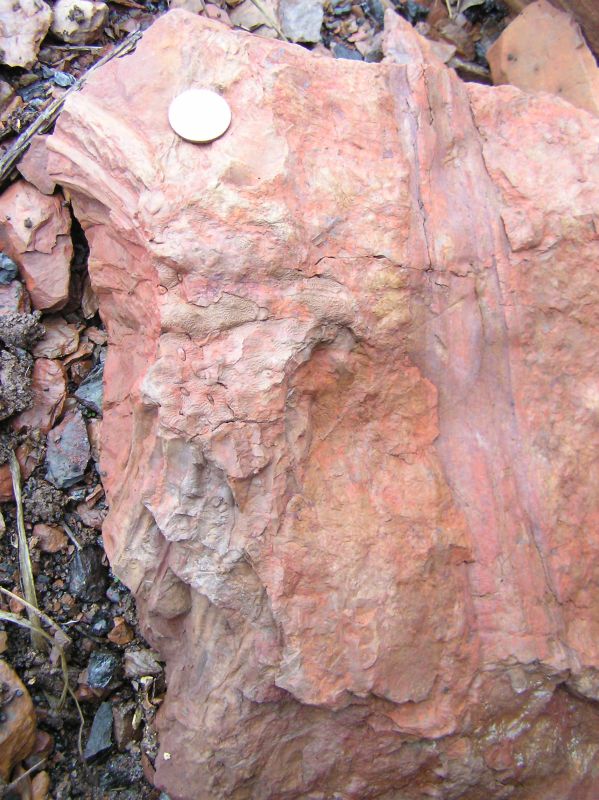
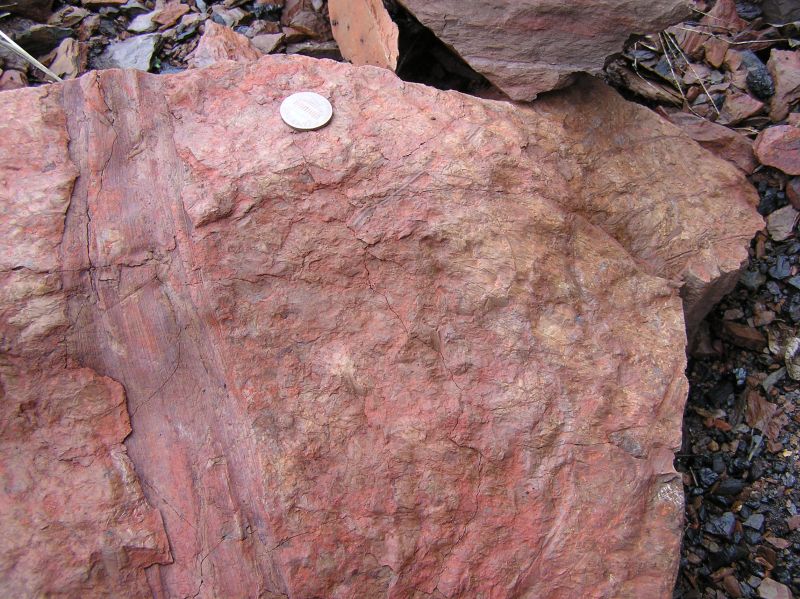
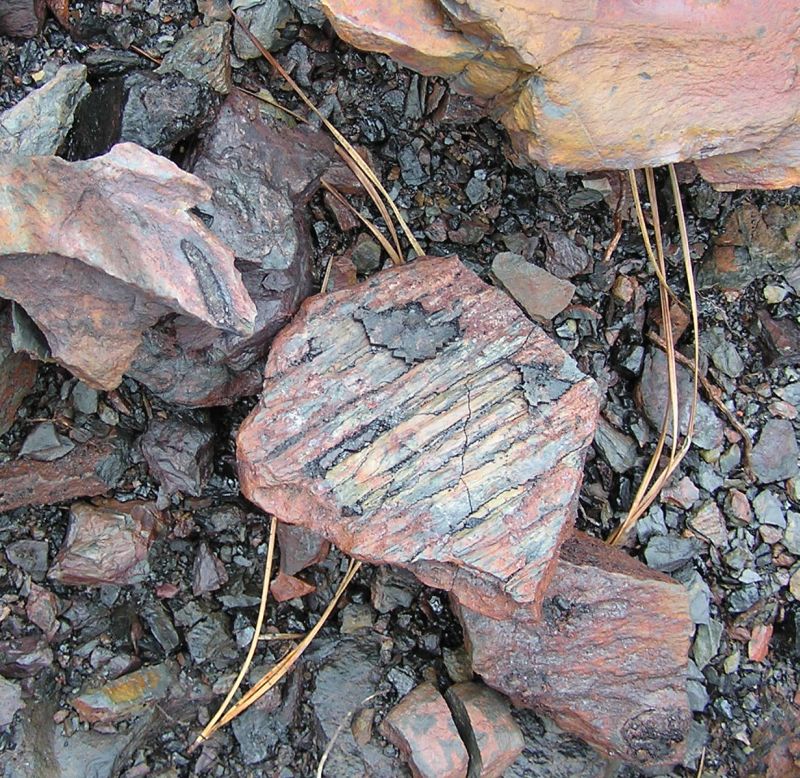
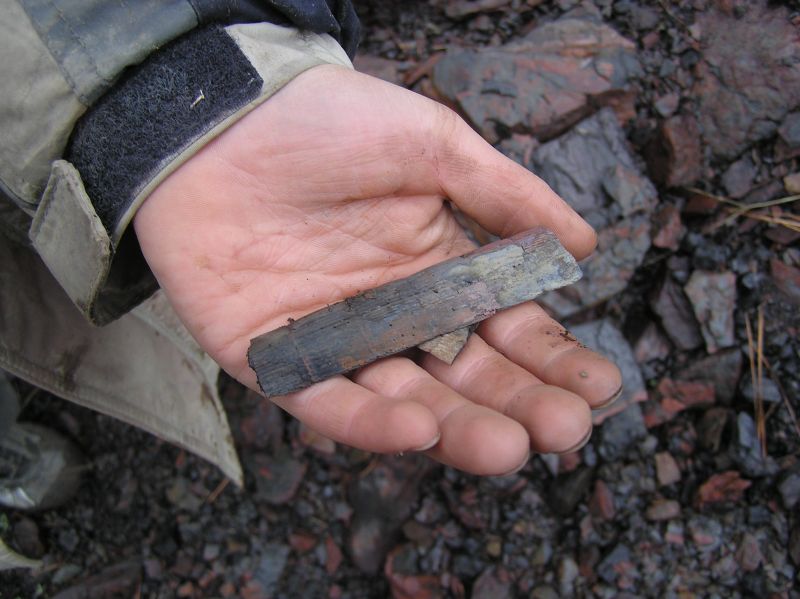

Ryan has
found a nice fossil.
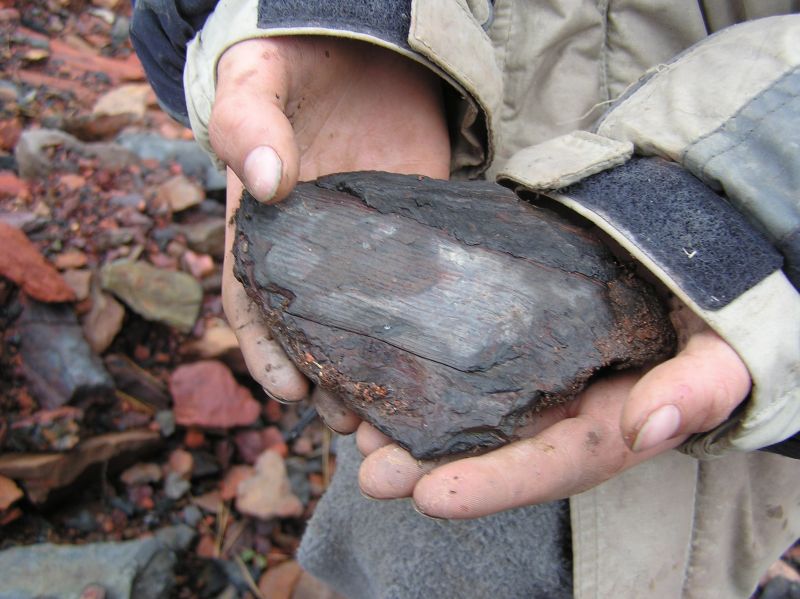
A closer look
at the calamites Ryan has found.
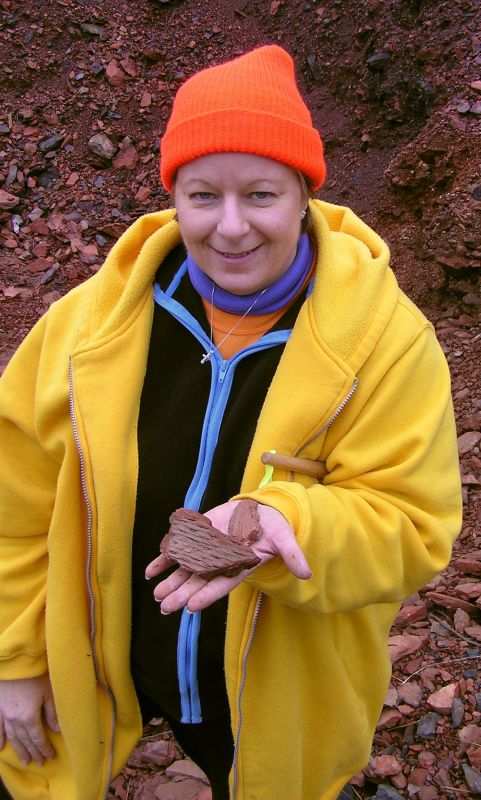
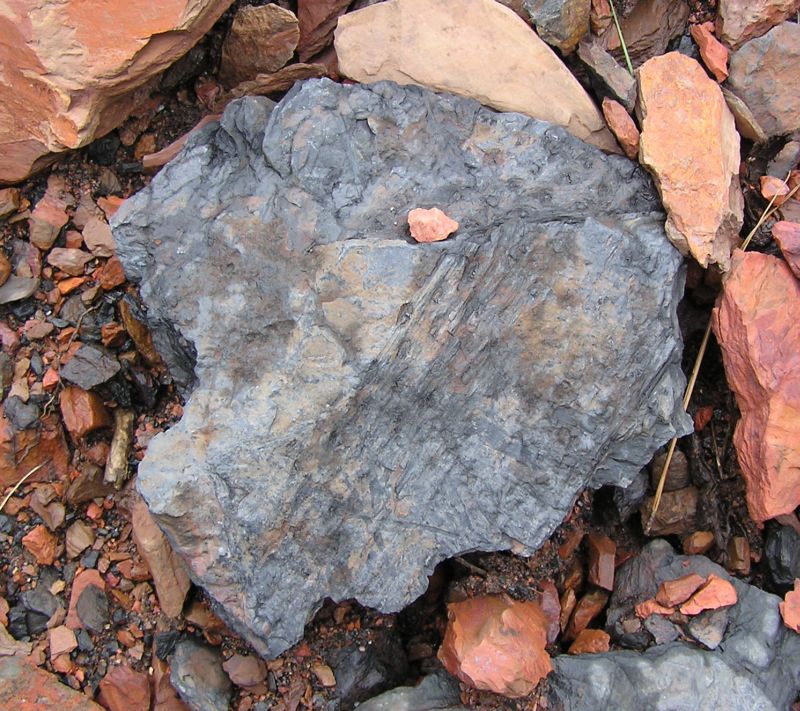
Stigmaria
(roots of a Lycopod, possibly Lepidodendron)
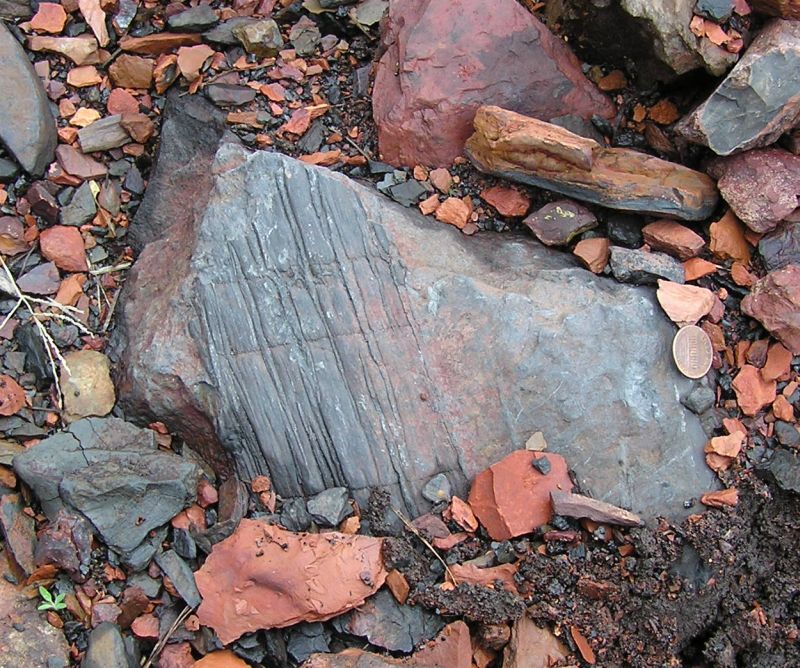
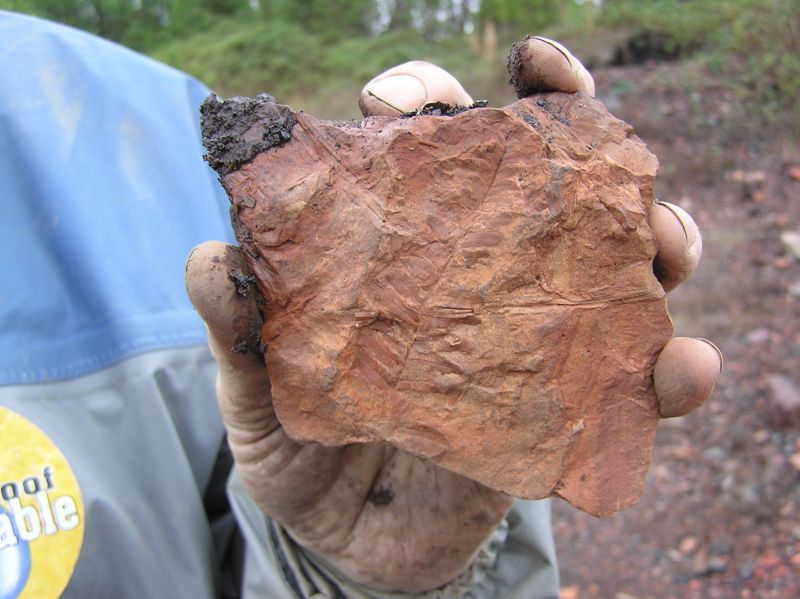
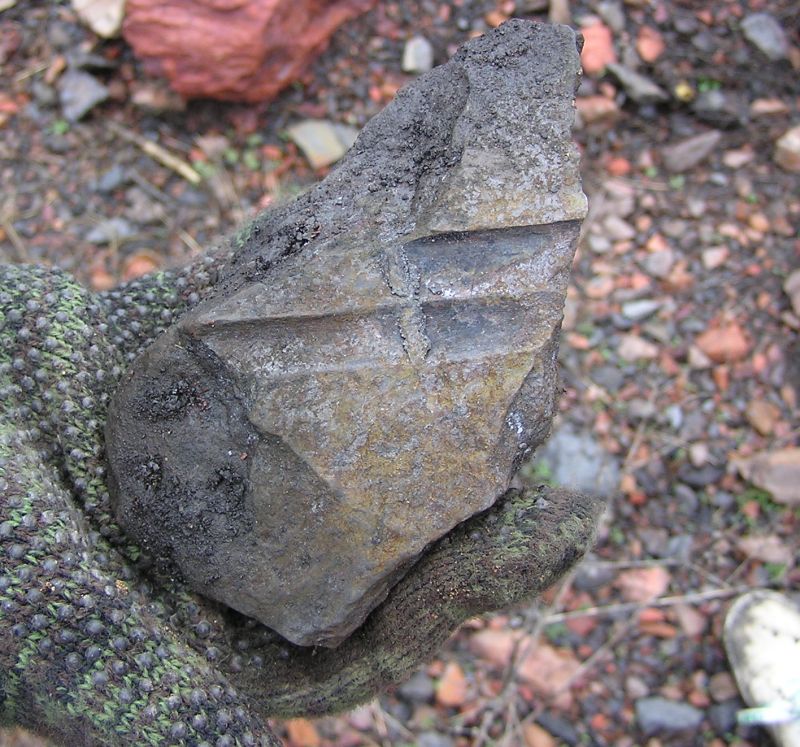


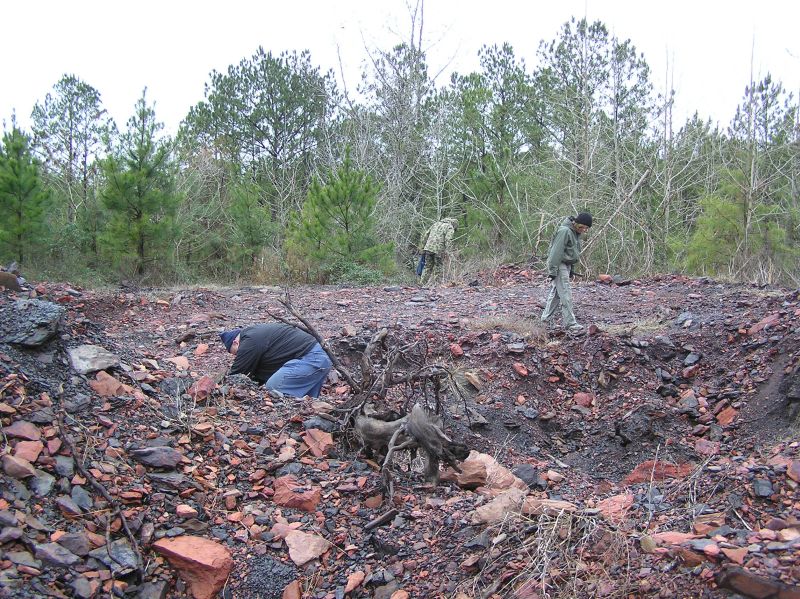

Nice fern,
possibly Sphenopteris.
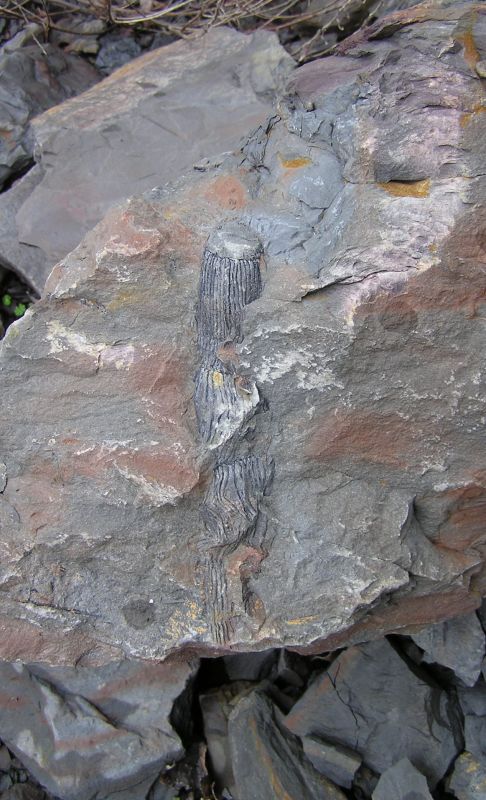
Calamites
stem cast.
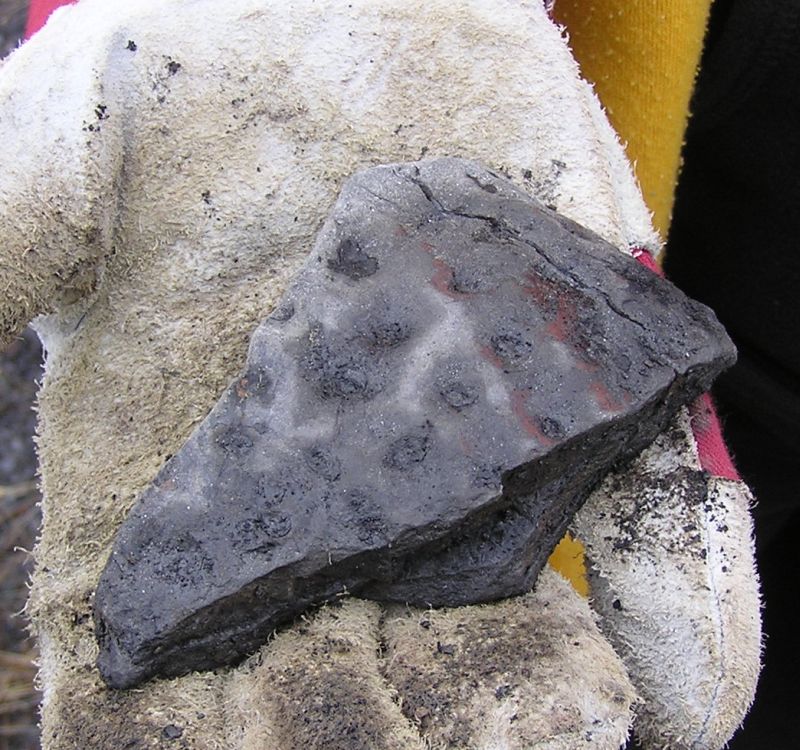
Probably
Stigmaria, a lycopod root.
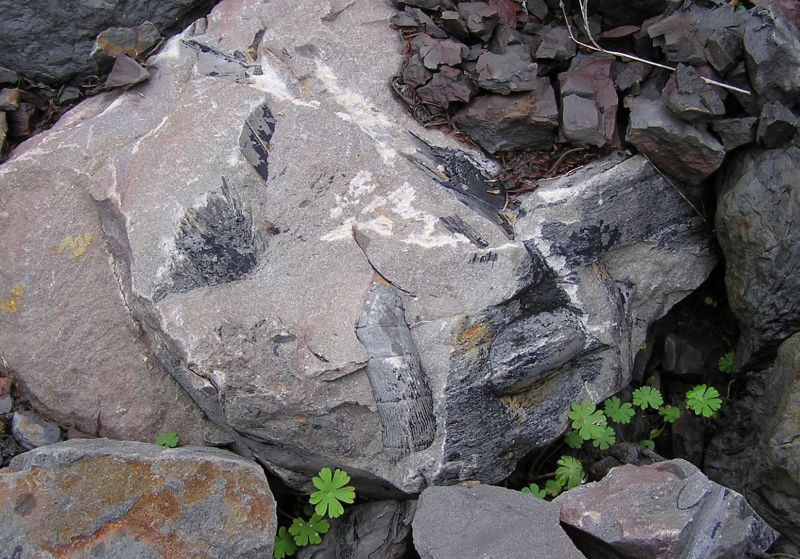
Calamites
stem cast.
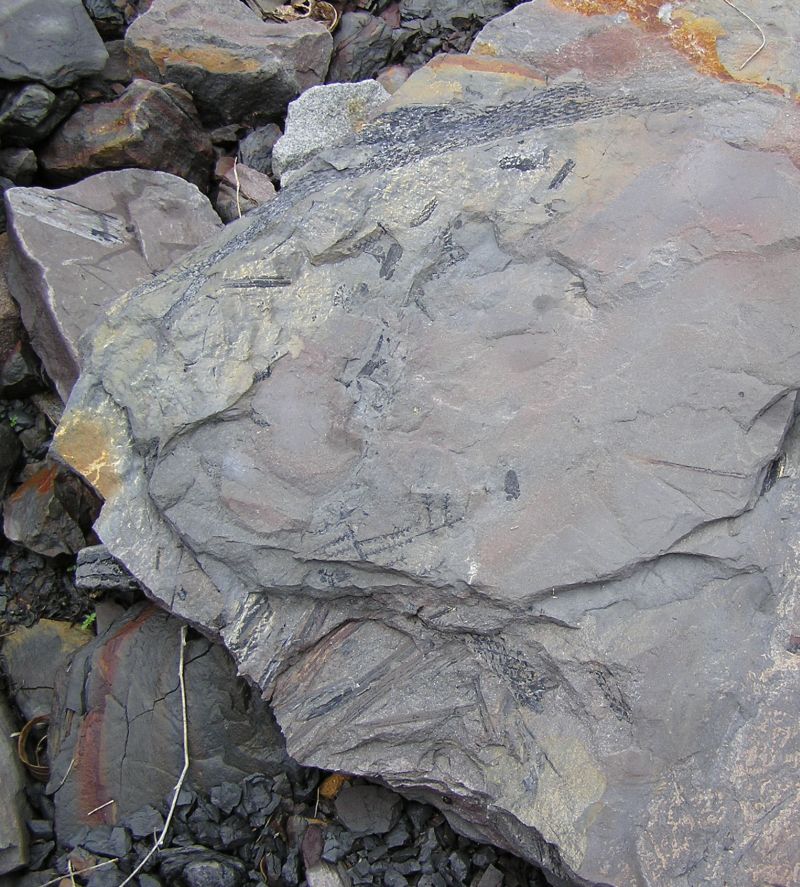
Tree fern
outer stem covering and fern-like leaves, probably
Sphenopteris.

A hash of
leaves and stems.
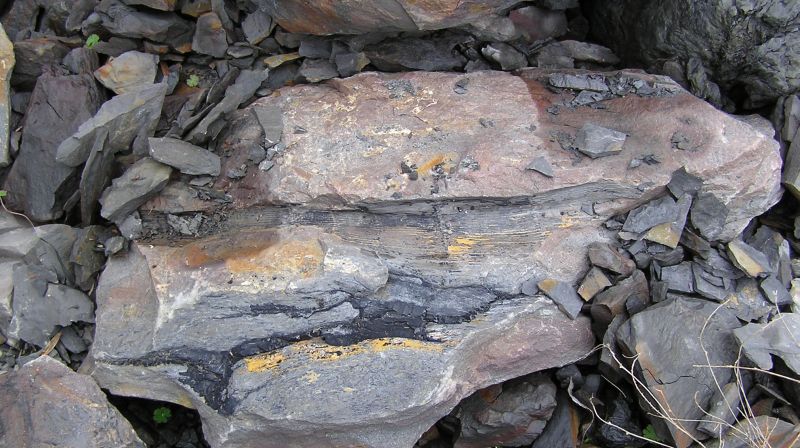
Calamites
stem cast.
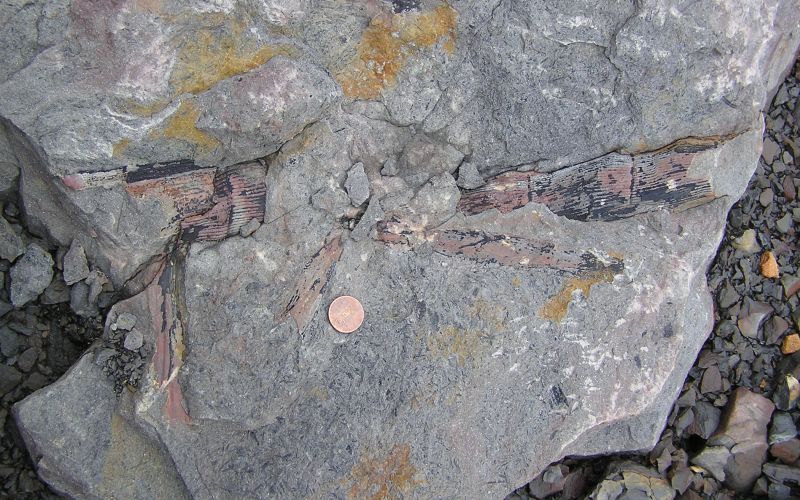
Nice
calamites stem.
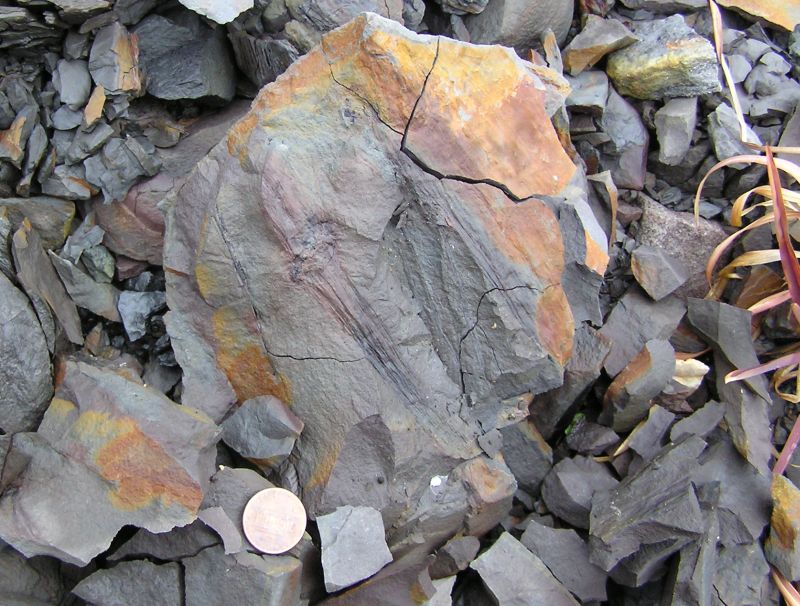
March 18, 2006 - Mississippian Fossils, St. Clair Co, AL
Edited by Vicki Lais
(photos courtesy Steve Corvin and Vicki Lais)
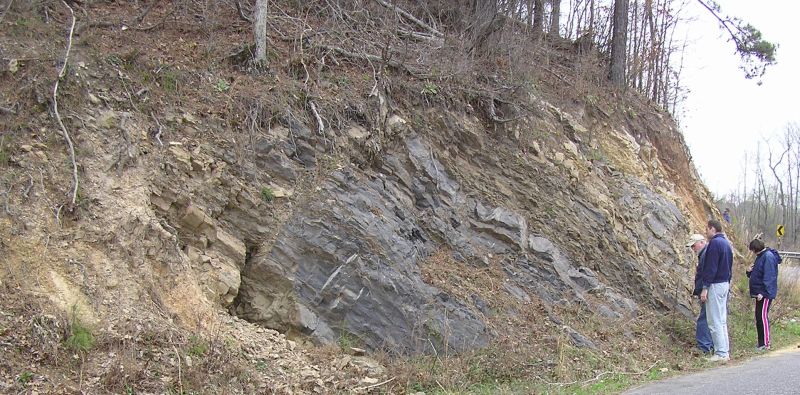
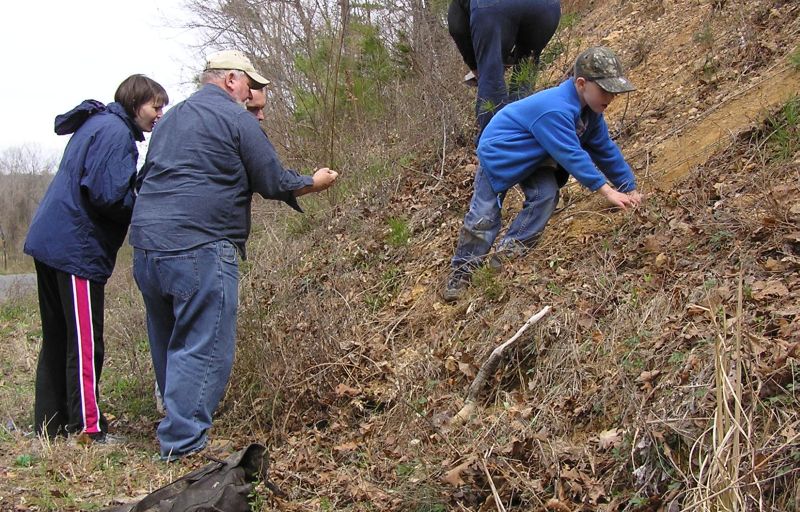
Greg is explaining how to spot the fossils.
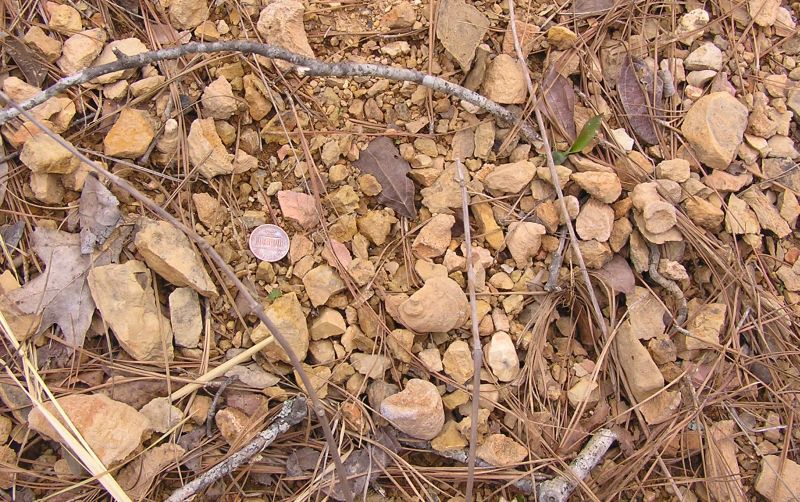
Look closely in the rocks and several horned corals and broken pieces can be spotted. They blend in well.
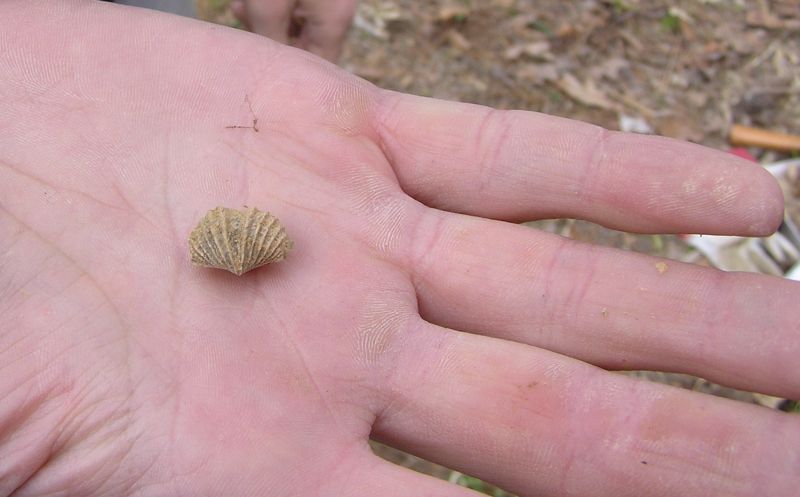
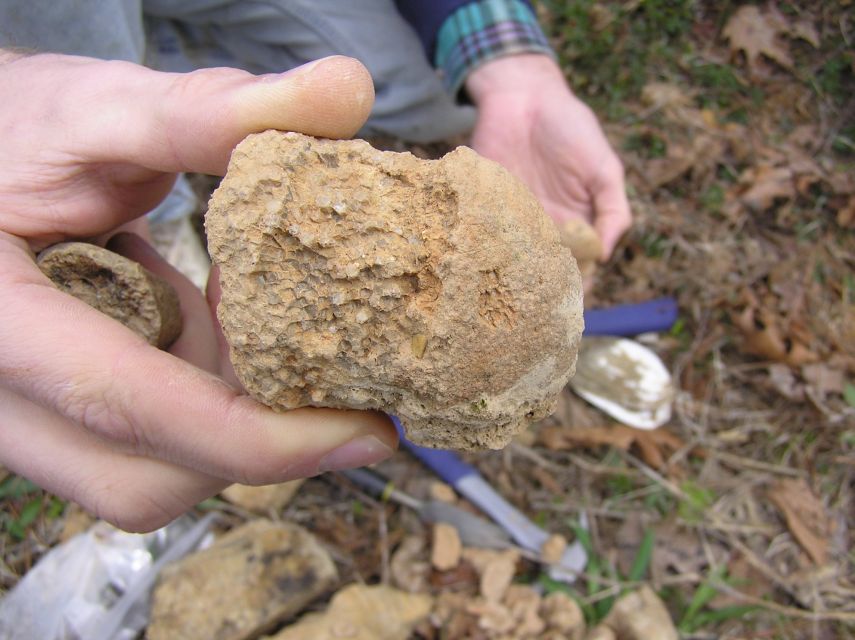
Michael has found a couple of items we believe to be sponges.

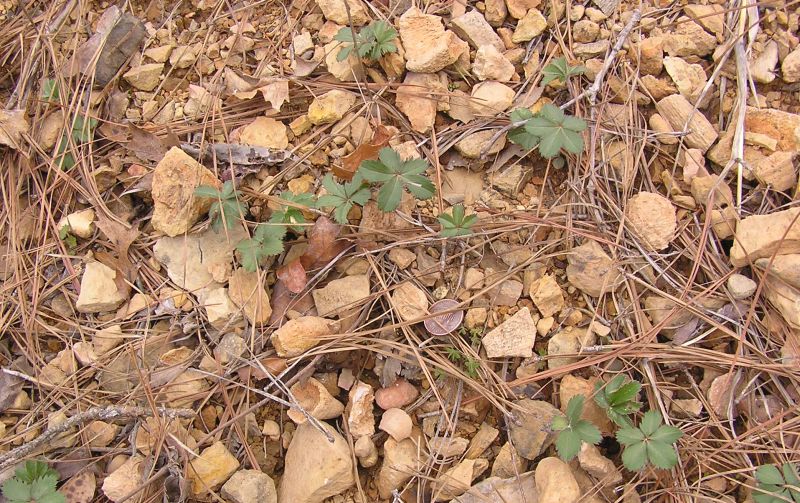
More rocky area, with numerous fossils waiting to be collected.
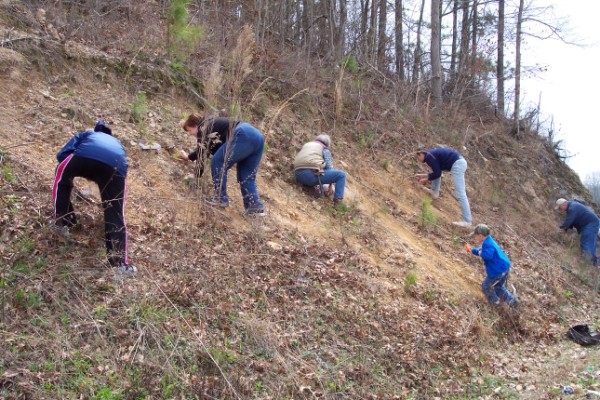
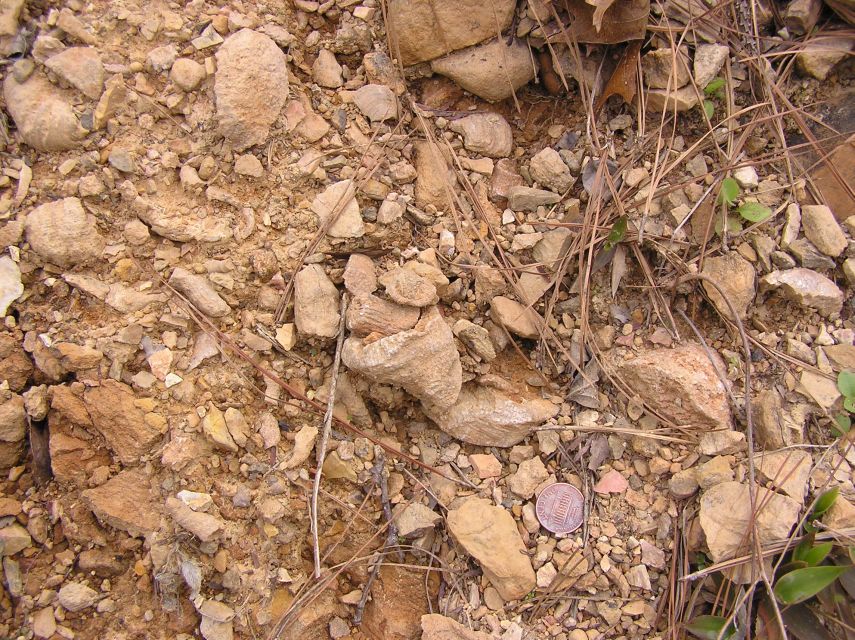
Another view of the ground littered with broken and whole fossils.
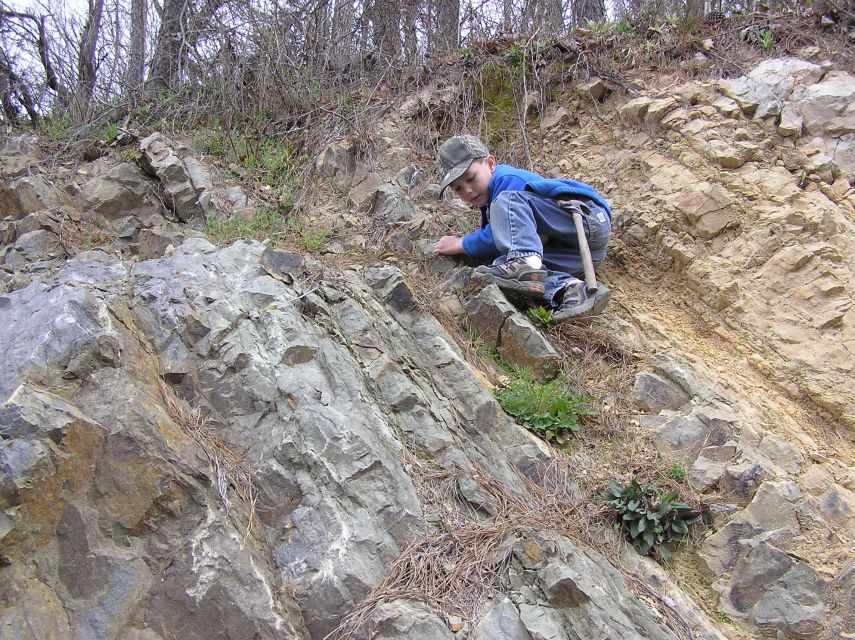
Steve is heading to the top, to see if there are different fossils up there. Or, maybe he just likes to climb!

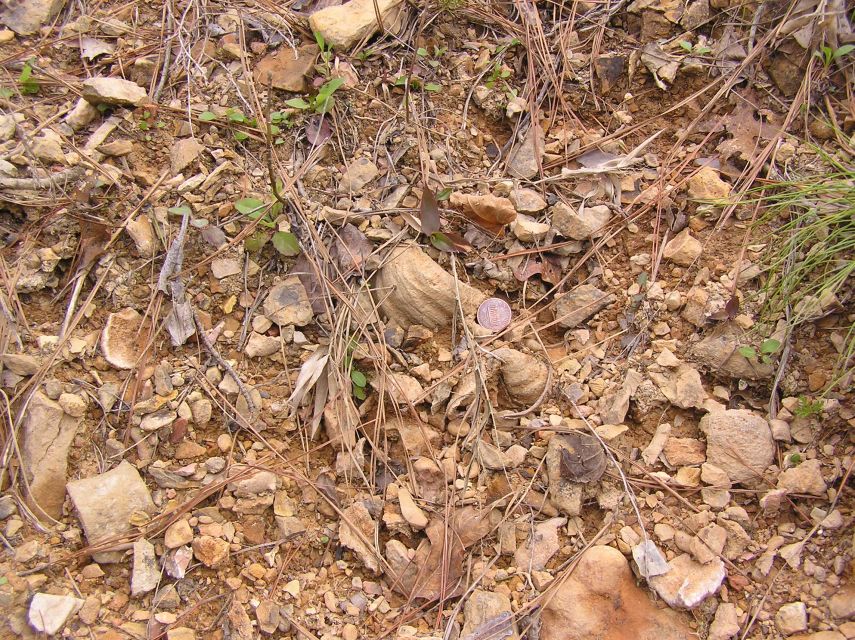
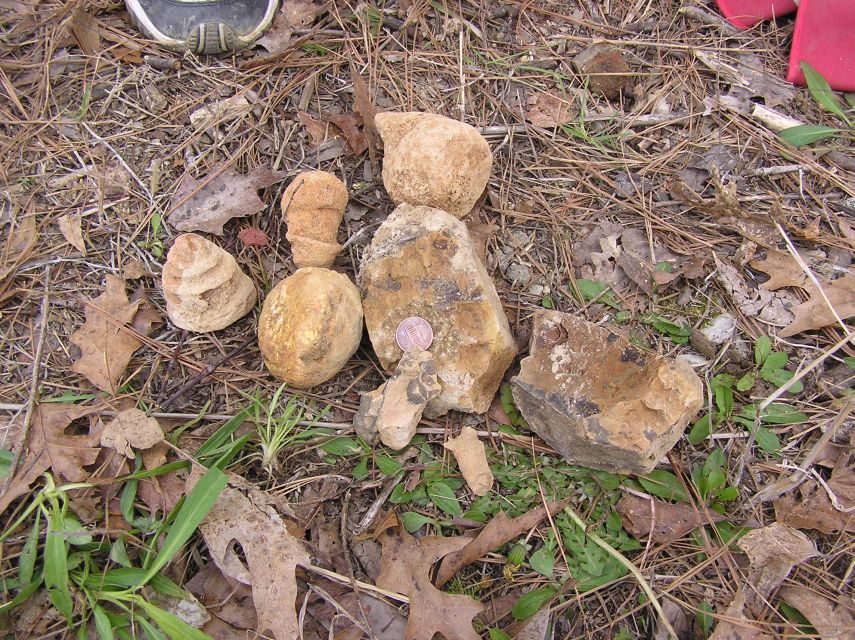

Some interesting fossil material found by Steve.
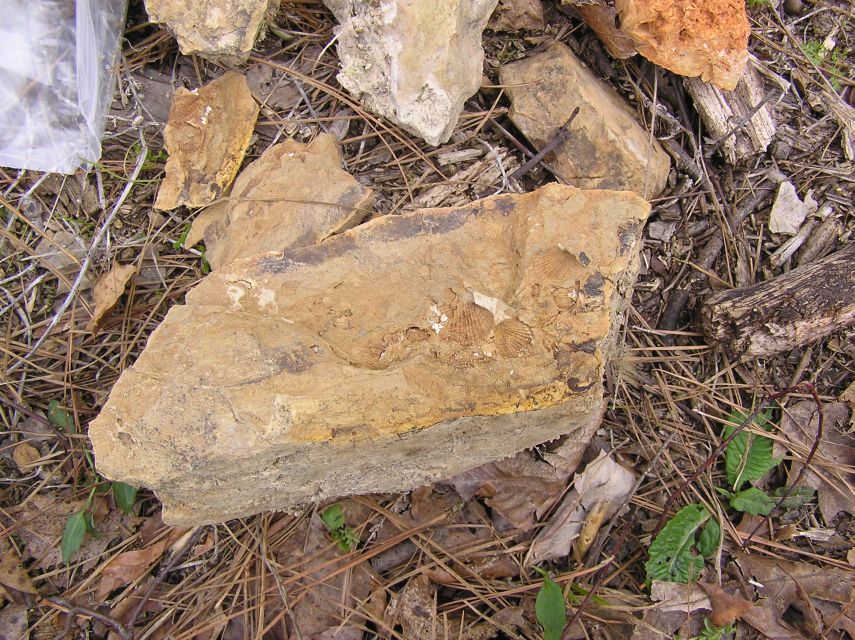
Note the nice brachiopods.


Claire has found a nice coral head.
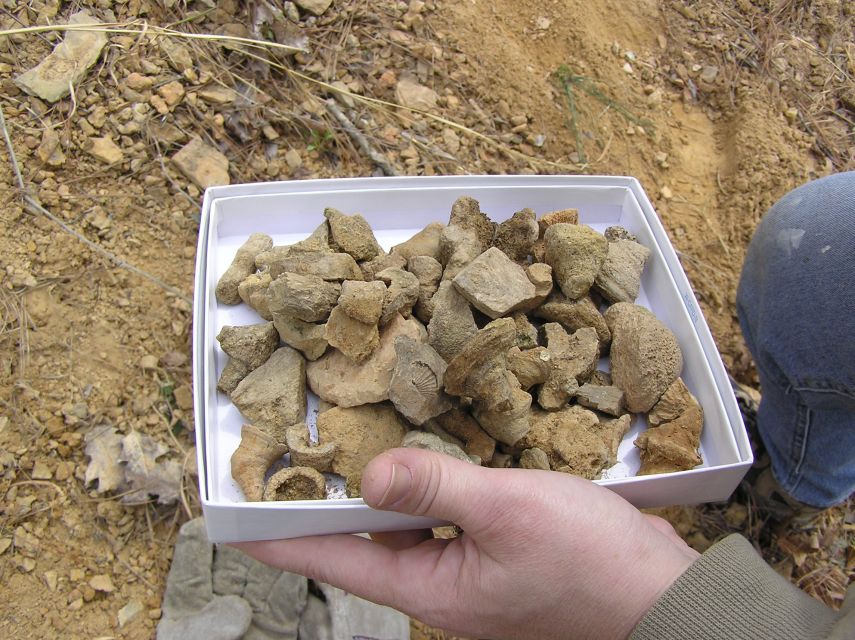 More nice finds by
Claire.
More nice finds by
Claire.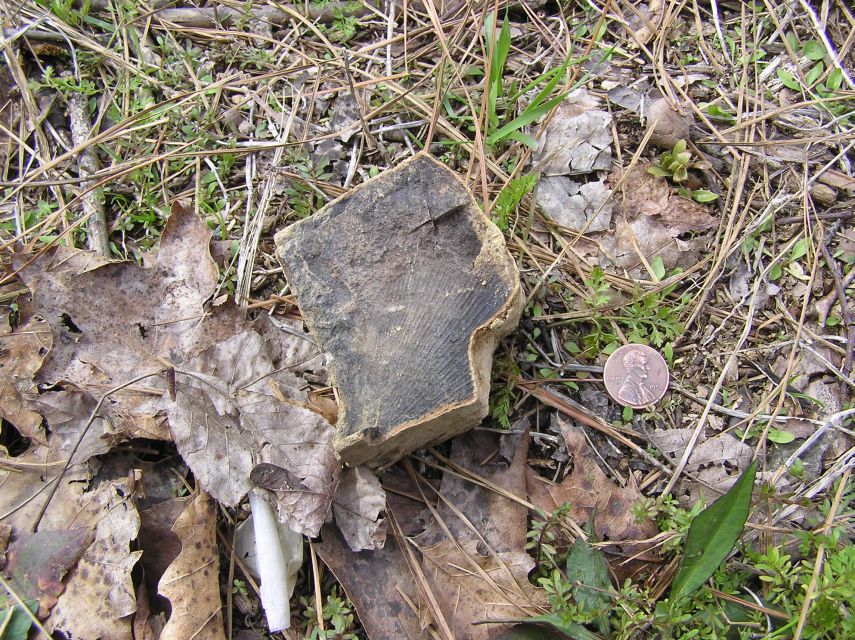
Another nice specimen, probably coral, found by Vicki.

Michael and Sylvie showing off their coral and sponges.
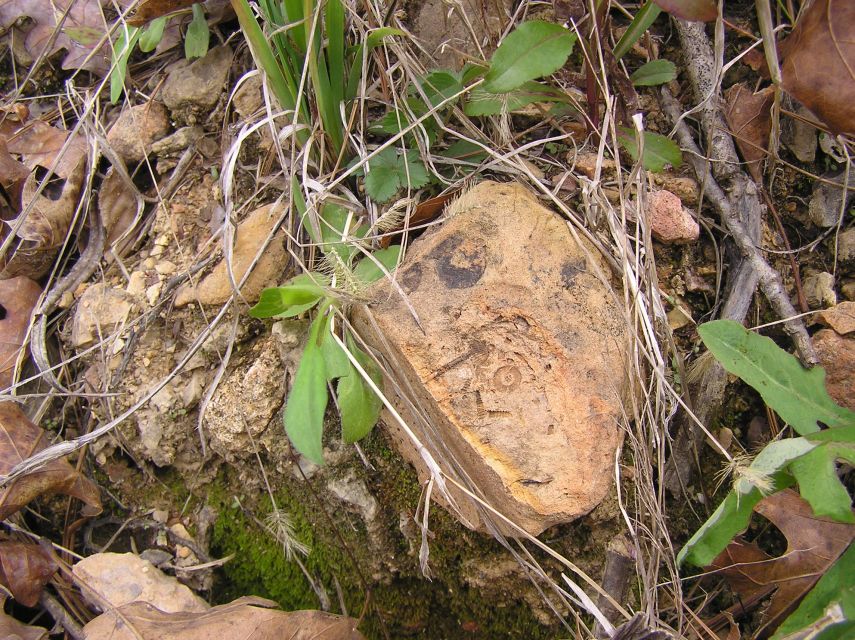
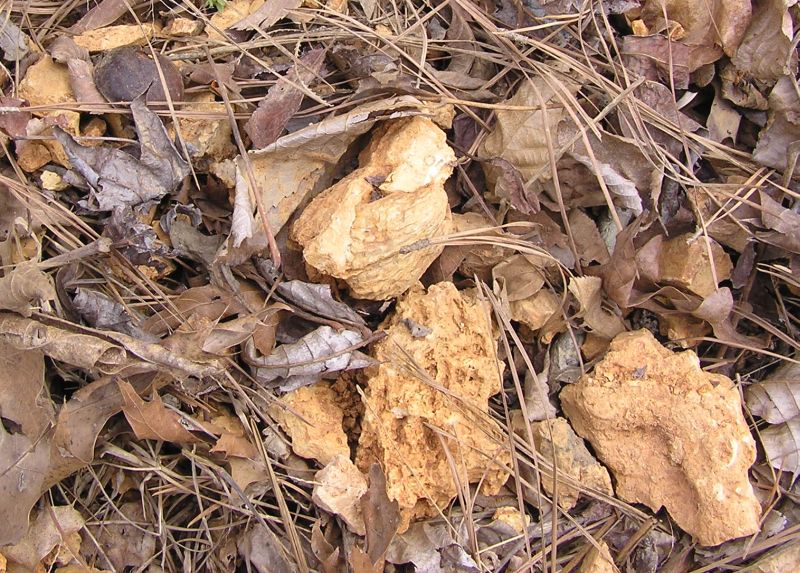
Note the nice shell on the upper rock in the middle. When the fossils are the same color as the matrix, they are difficult to spot.
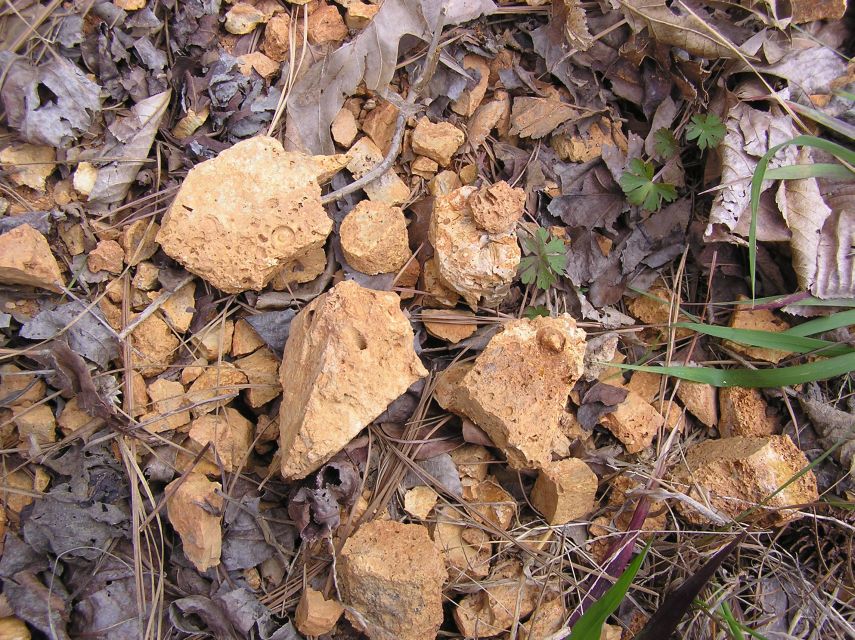
Crinoids have left impressions on these rocks. A different area from where the coral is found.
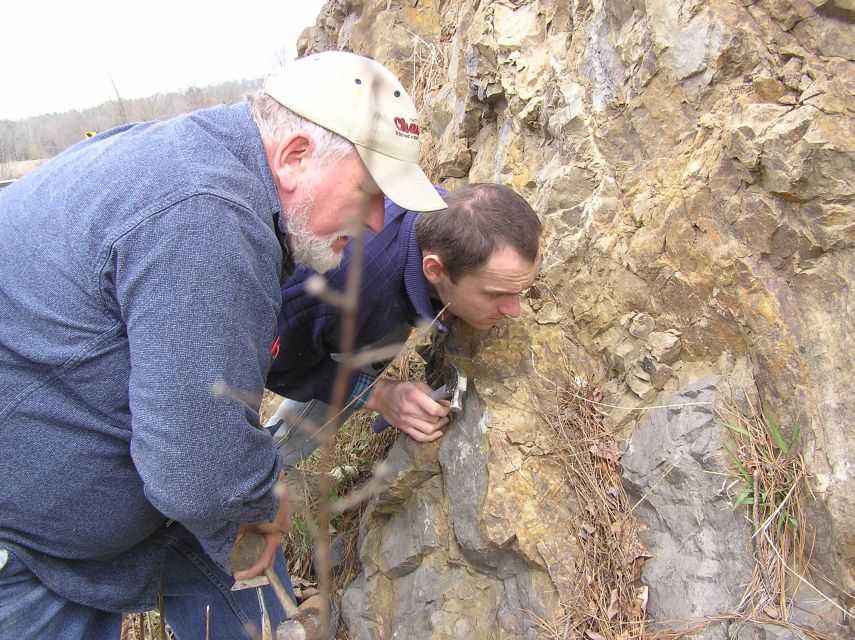
Greg and Michael searching for the trilobite layer.

Leisa has found some nice horned coral.

A closer look at Leisa's finds.
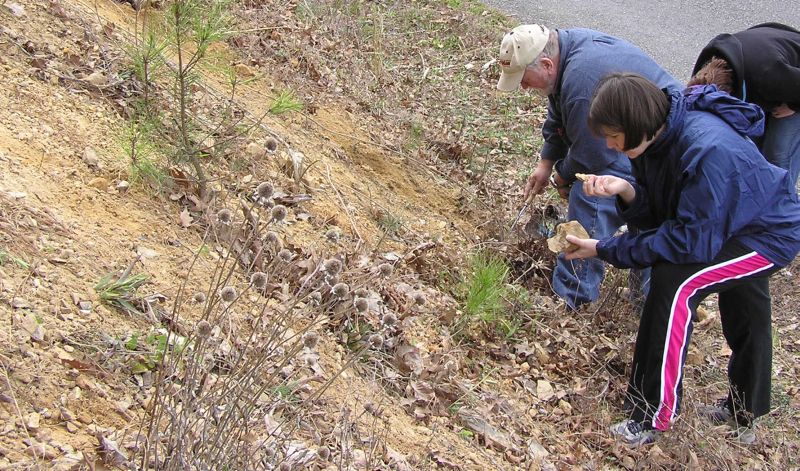
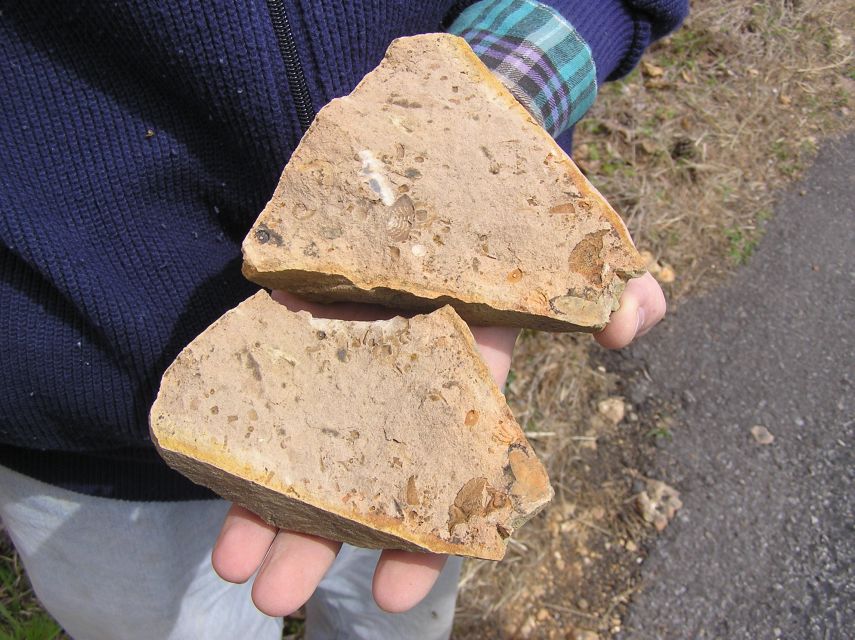
After diligent searching, Michael found the trilobite layer!
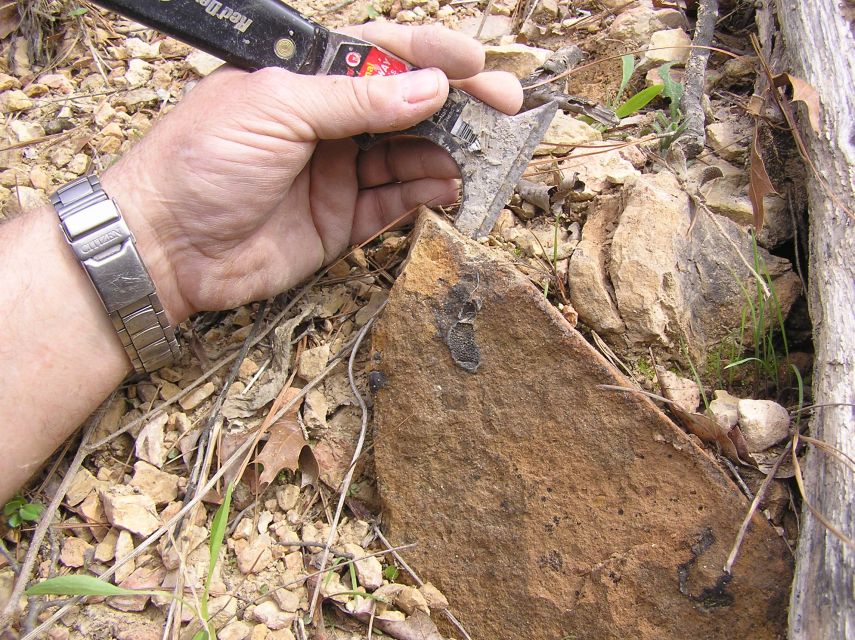
Greg has found part of a trilobite - the black coloration at top of rock. The larger oval is the head, the smaller one is an eye.

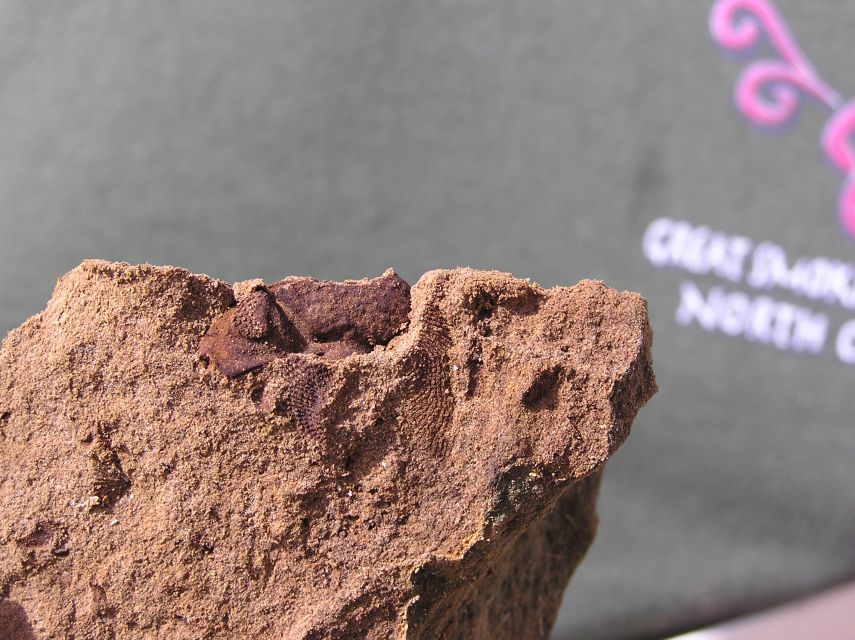
A close view of a trilobite.
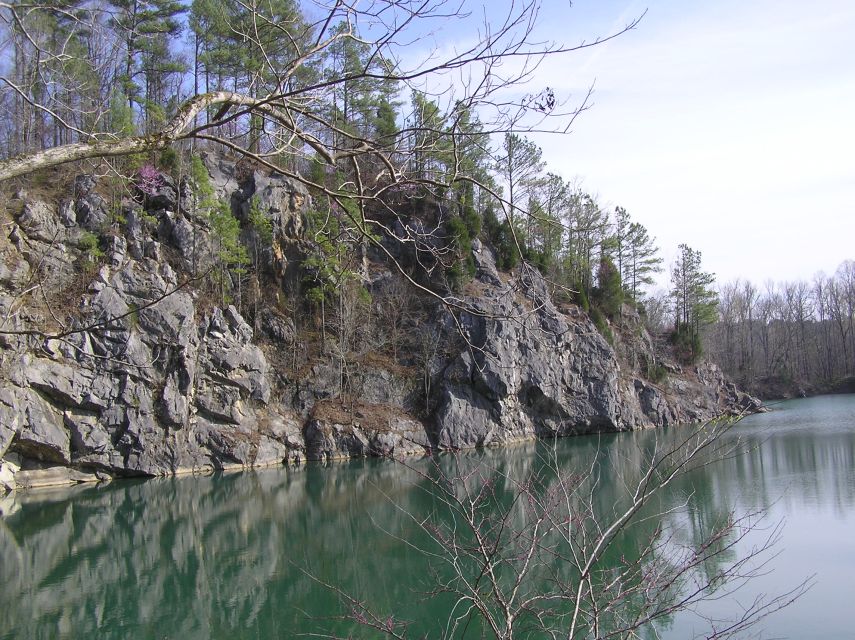
We briefly scouted this quarry and found some interesting structures and fish, but no fossils.
April 1, 2006 - Cretaceous Fossils, Russell Co, AL
This Cretaceous site is slated to become a subdivision in the near future, so a dig to excavate and conserve material from the best layers was organized and coordinated by Patrick Sean Bingham, a grad student at Auburn University. Patrick's thesis topic is “Stratigraphic and Paleoenvironmental Context of the Ingersoll shale, an Upper Cretaceous Conservation Lagerstätte, Eutaw Formation, Eastern Alabama”. Another grad student from Auburn University, Terry Knight, was also working on his thesis, “Exceptionally Preserved Soft-Bodied Fossils of the Ingersoll shale, an Upper Cretaceous Konservat-Lagerstätte in the Eutaw Formation of East-central Alabama".
Many well known professionals from around the country volunteered their time and expertise to assist on the dig, including Dr. David Grimaldi and Collections Manager Carl Mehling from the American Museum of Natural History in New York City. Dr. Grimaldi was especially interested in the nice specimens of amber found at the site. Others who provided assistance and knowledge were Dr. Chuck Savrda and Dr. Ron Lewis, both from Auburn University, Dr. Bill Bevil from the Fernbank Museum of Natural History, Atlanta, Ga, and Dr. Bill Frazier, Dr. David Schwimmer and Dr. Dent Williams, all from Columbus State University, Columbus, GA.
It was a real treat to work with these professionals and others who participated in the dig, and everyone got “down and dirty”, quite literally, as various plant leaf and stem impressions, some actual leaves, fish scale impressions, and even pieces of amber were unearthed!
(Editors note: Research on this site is described in the June 2008 issue of Palaios Journal, and some excellent photos are shown on the cover.)
(Photos courtesy Vicki Lais)

An overview of the dig location. Several feet of overburden was removed with a small bulldozer prior to the manual digging with picks and shovels.

Patrick Bingham explaining the geology of the site to Dr. Henry Barwood.
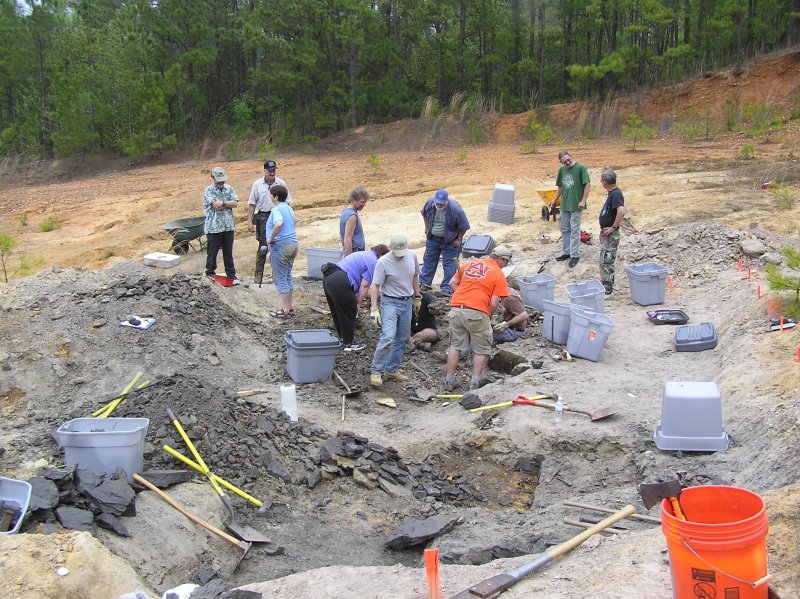
Overview of the site. Material was placed in the large tubs and taken back to the university for research. Note the orange spikes on the far right - the site was gridded, and one layer was designated "the middle", so some of the material is "above" or "below" that layer.
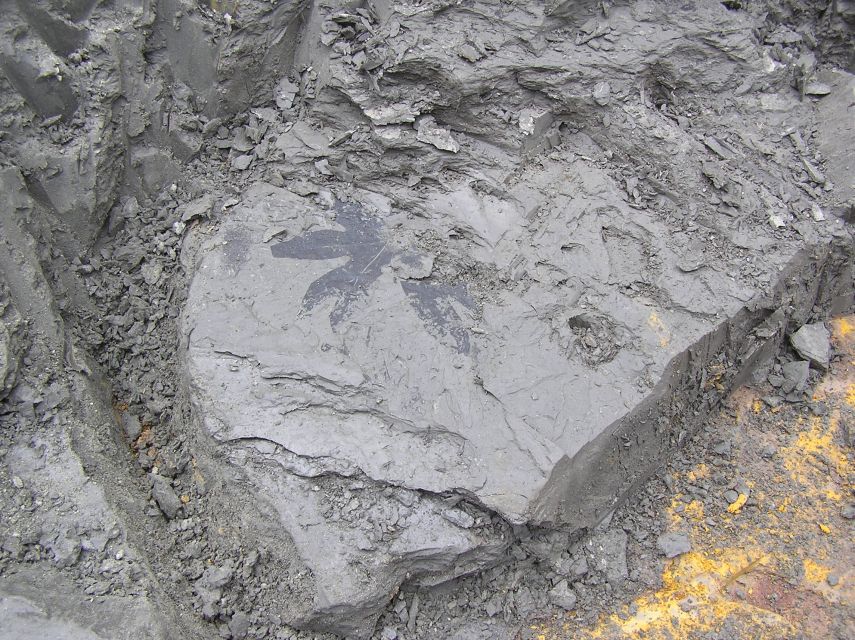
Numerous Cretaceous leaf impressions were found at the site.
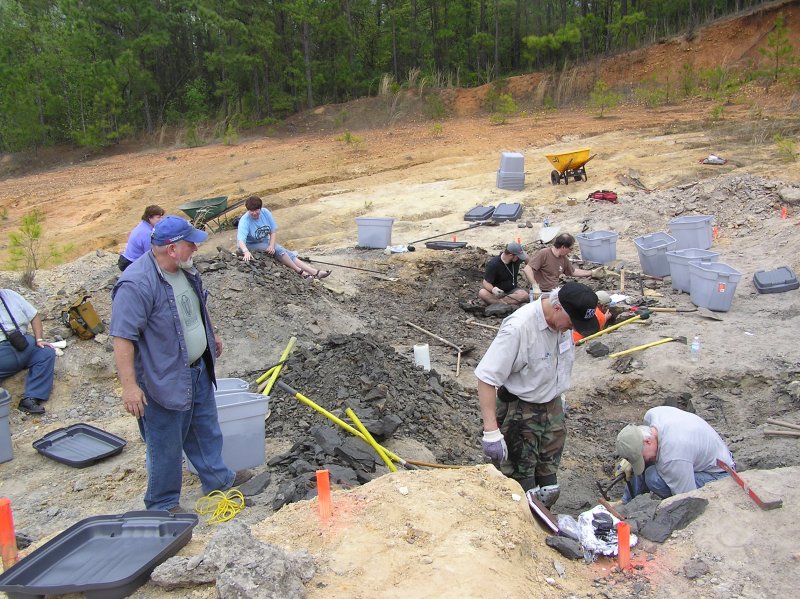
BPS members observe the dig operation and look through the discard pile for samples to collect. Later in the day, we were allowed to help load tubs and Greg assisted with the excavation.
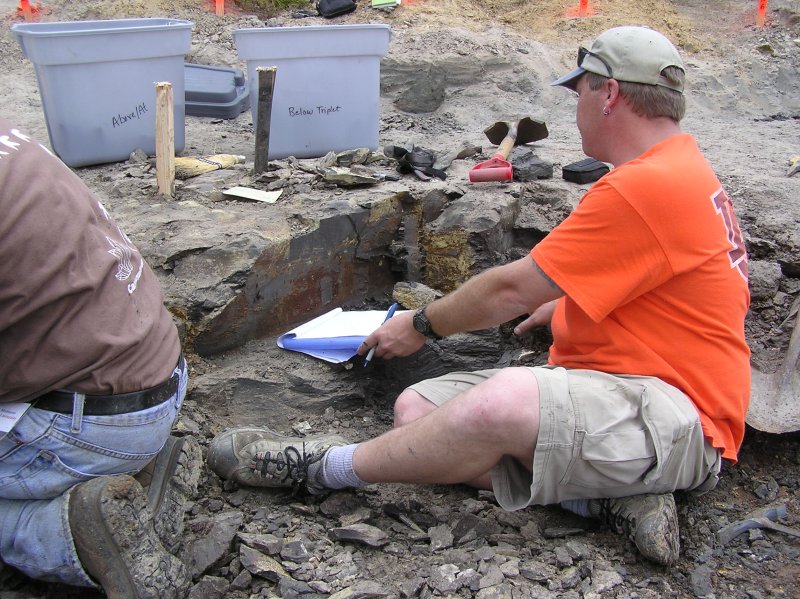
Terry Knight is keeping a log of the geologic layers as they are removed.

Dr. John Interlandi with the pick and Dr. David Grimaldi examining leaf specimens.
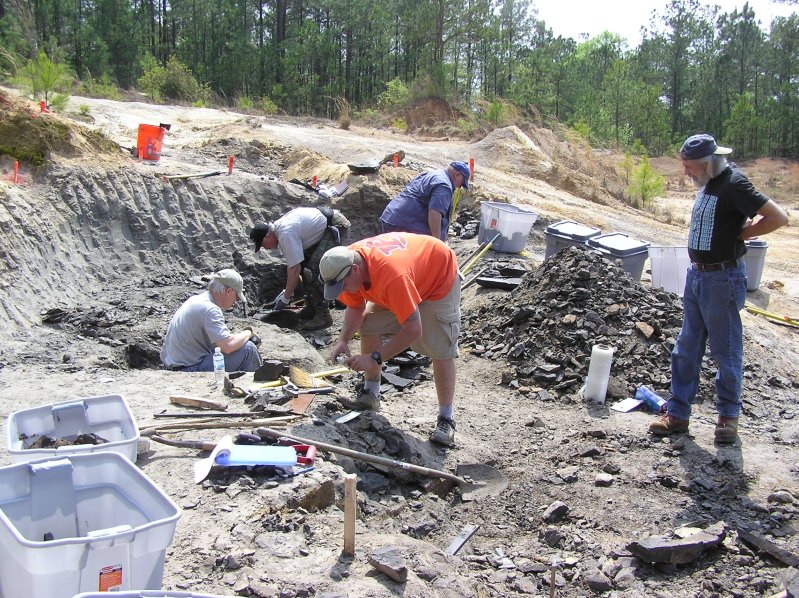
Dr. Bill Frazier (far right) observing the dig operation.

Humm . . . . did we miss any?? Better check those rocks carefully! Left to right - Vicki Lais, Bill Montante in back, Carl Mehling in black in front, Dr. Chuck Savrda, Dr. Bill Frazier, Terry Knight, Amanda Savrda.
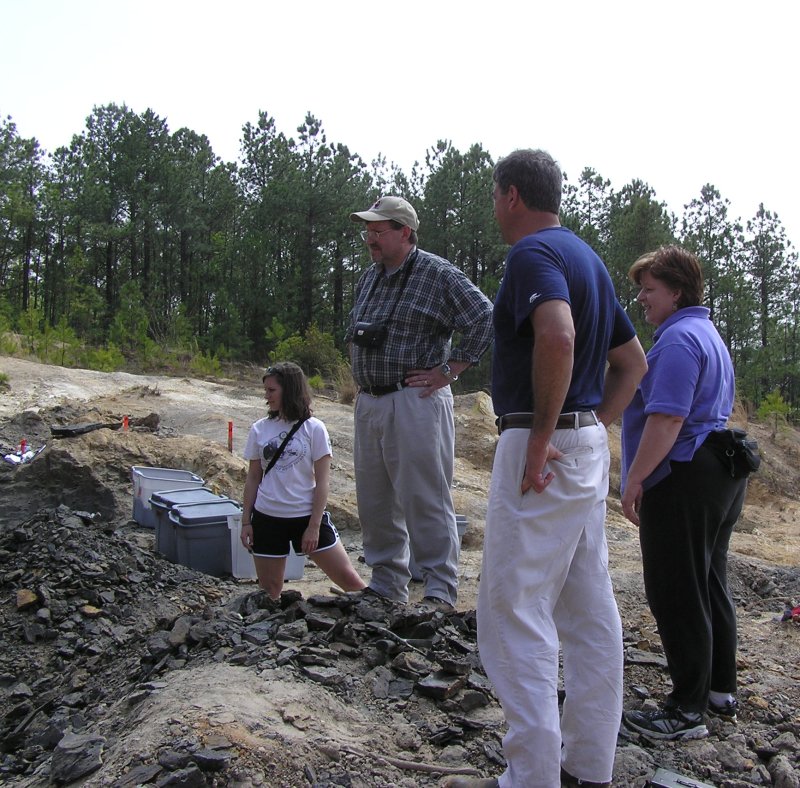
Amanda Savrda, Dr. Chuck Savrda, Michael Brocato, and Leisa Whitlow observing the diggers.
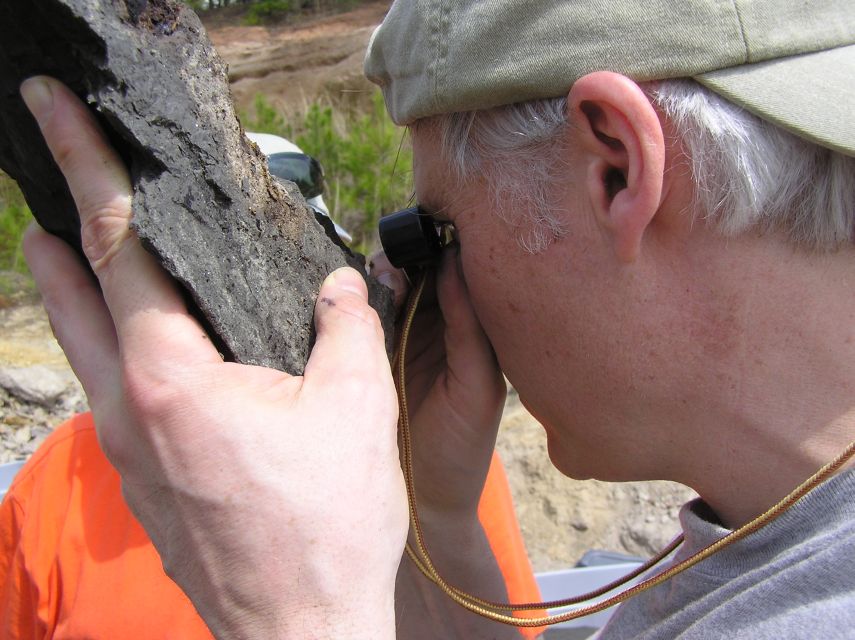
Dr. David Grimaldi getting an up close look.
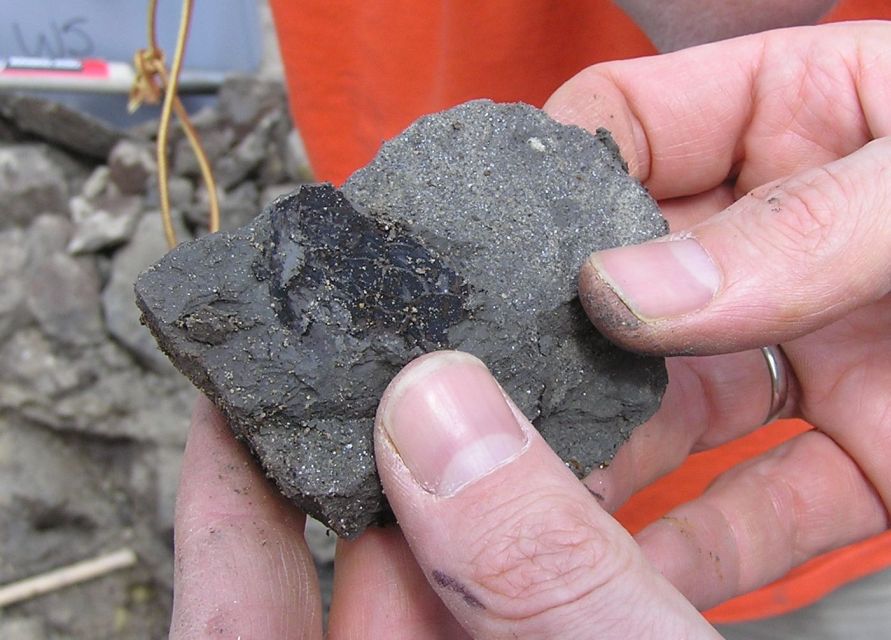
Beautifully preserved fossil, one can see scales using a magnifying glass.
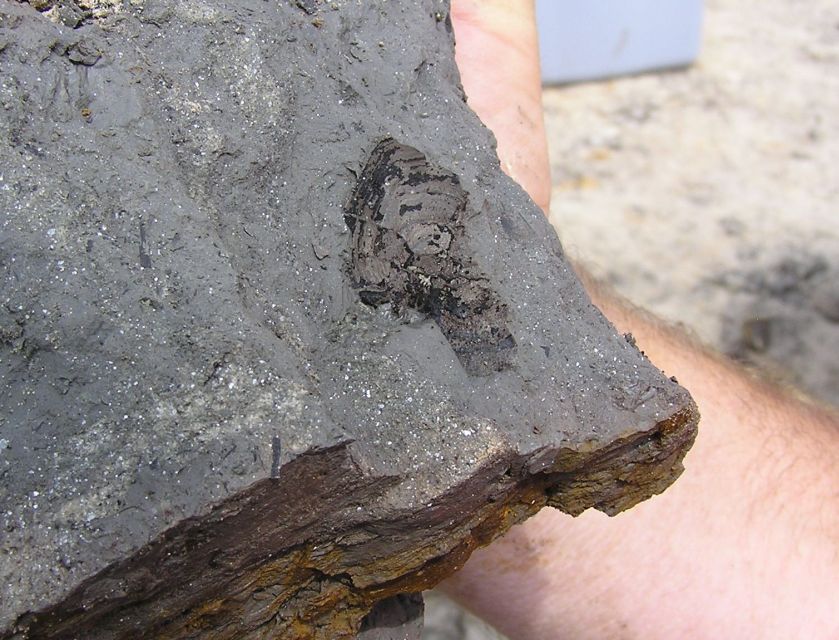
A well preserved mussel impression, including the foot.

This fossil leaf was quite long, more was exposed as the overburden was removed.
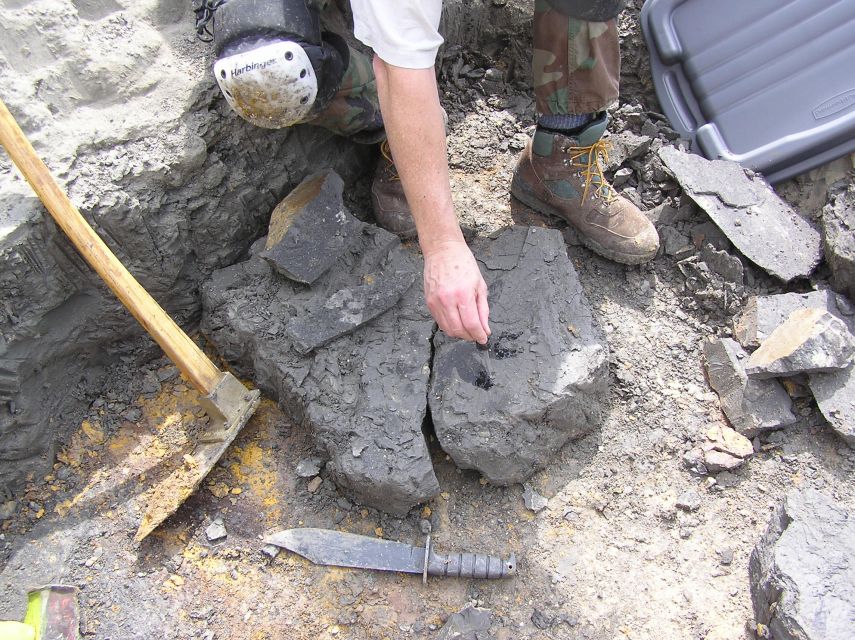
Dr. John Interlandi is applying a fixative to a fossil leaf to help preserve it. This clay material is damp when excavated, but the hot sun dries it out quickly. When it dries, the exposed surfaces crack and curl up like dried mud, destroying any fossil that might be there.
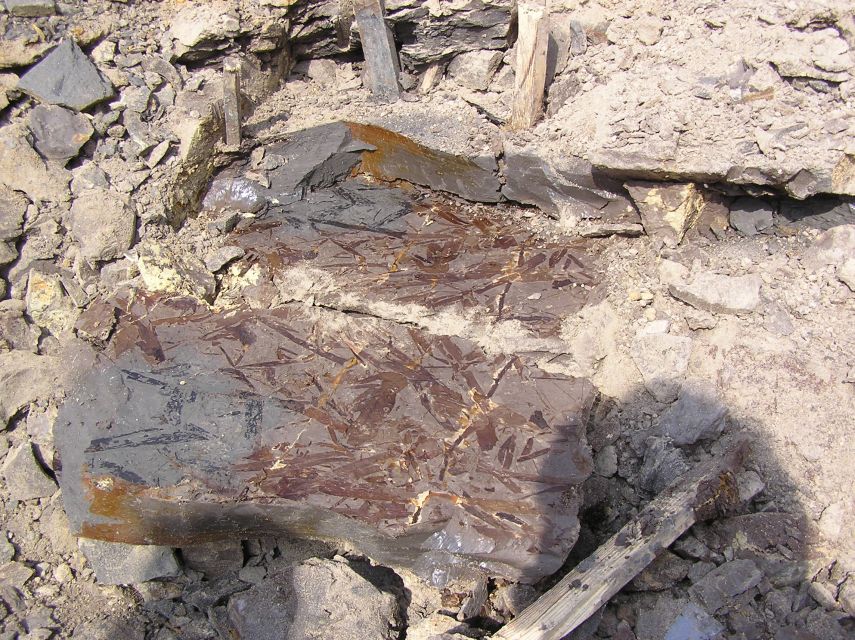
Large exposure of matted leaf material.
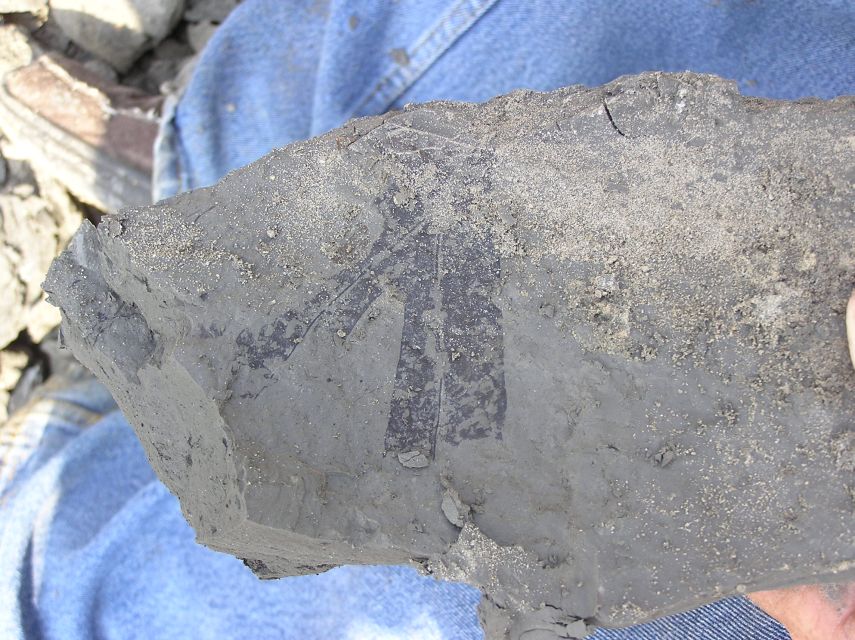
Another plant fossil.
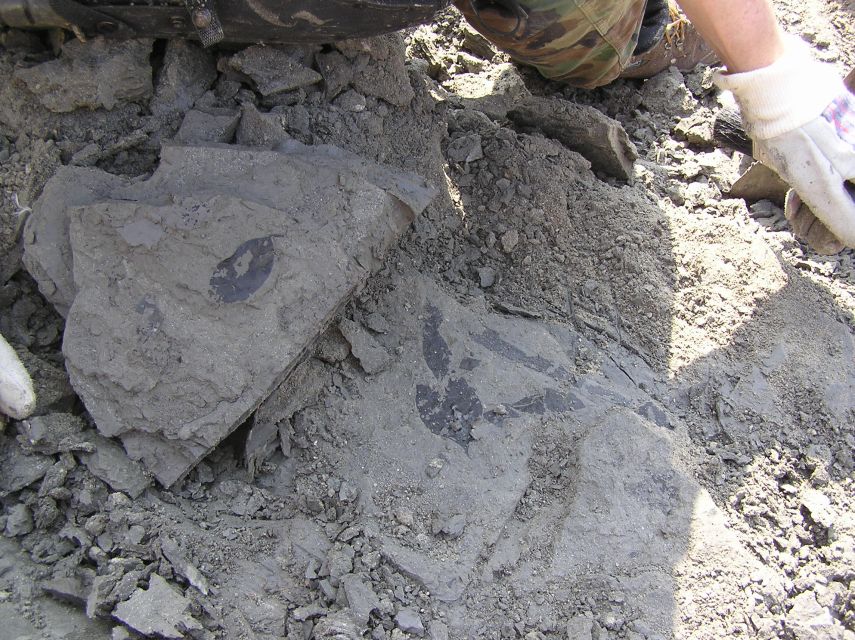
Several leaves.

This is an extension of the long stem/leaf shown several pictures above.
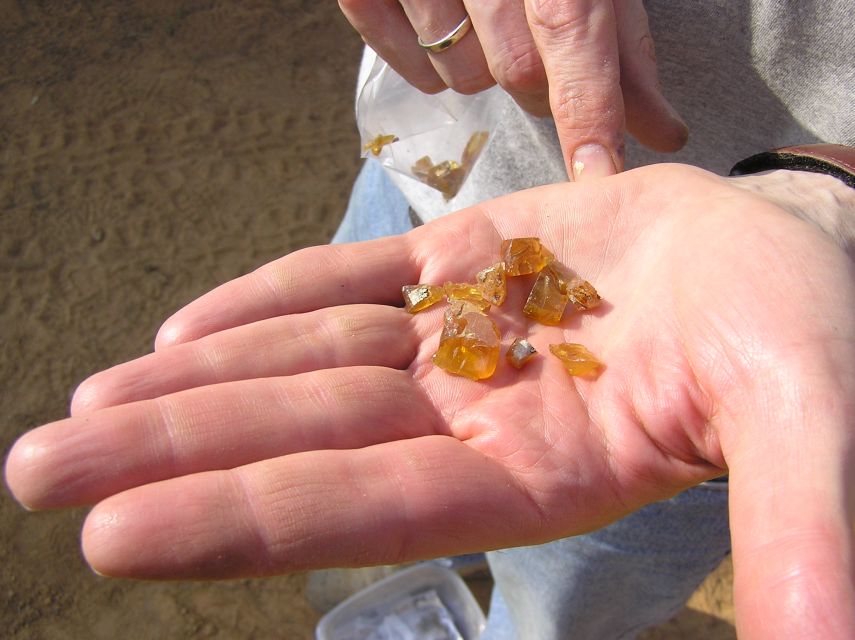
Dr. Grimaldi (author of Amber: Window to the Past) was specifically hunting amber, and he was not disappointed, as several pieces were found. Many of the amber pieces contained inclusions of small insects.

Seeds found at the site.
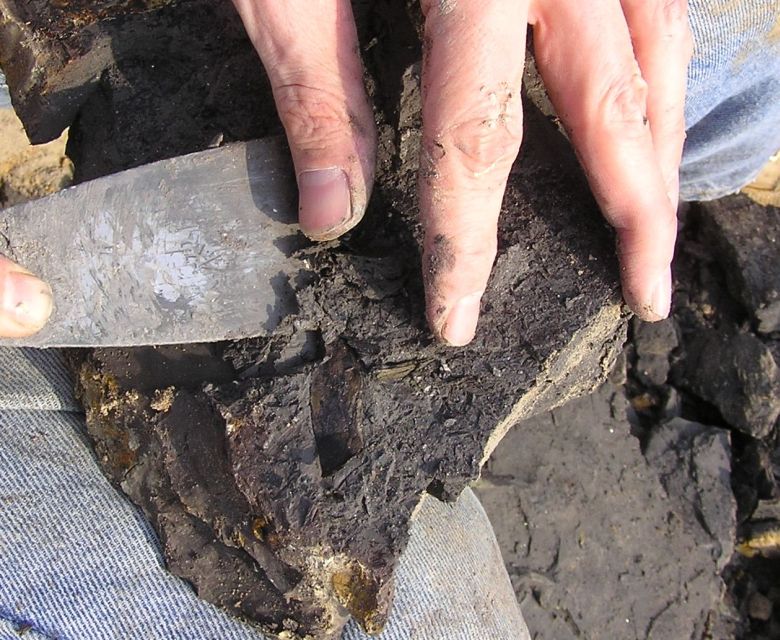
Most of the previous photos capture impressions of ancient fossils - where the fossil used to be, and now there is only an image pressed into the clay. This photo shows an actual leaf which was preserved in the soft clay, note the curled up edge of the leaf.
May 6-7, 2006 - Cretaceous Fossils, Lowndes Co, AL
This May found the troops encamped in Lowndes County for a whole weekend of fossils and good company. Tents, camping vans, pop-up trailers all turned out for the great weekend of food, hunting and sleeping out thanks to the generosity of the hunting camp. Our hosts supplied rides out to gullies and a creek on their property via ATV’s and trailers. Even Sylvie made the bumpy ride out to the creek, although some of us did do a quick, quiet poll as to who knew how to deliver a baby or how long it would take to make it to the nearest medical facility, JUST IN CASE she hit one bump too many! We had a great crowd, and some excellent specimens of fossil crabs, shells, ammonites and various teeth were found. After a long day of collecting, we gathered around a roaring fire for a low country shrimp boil and good conversation. Everyone seemed to be demonstrating that everything does taste better outside! Michael and Sylvie had left early, Sylvie declaring that she was now ready to go home and have a baby!
Even the rainstorm that burst on us Sunday morning didn’t dampen spirits. Sleeping with the rain pounding down while you are warm, dry and cozy is one of life’s lovelier experiences! The early risers gathered under one of the many “porch” shelters in the camp and revved up the little propane stoves to make breakfasts of pancakes, cereal, coffee, tea...all the comforts of home, but more fun. Finally, all but the most dedicated decided to call it a day and head home. Nancy left a few of her belongings behind, so Vicki and Martha decided to return them via Selma, wait out the storm and do a little more looking around before heading back.
It was great to see so many of us, old and new members AND guests, turning out for all or most of the weekend. THANK you to our hosts for making us feel so welcome and providing all the facilities. Also thanks to our hosts, and to Shannon and Jim for providing vehicles and trailers, and to Vicki and everybody who helped organize the weekend and the shrimp boil!
This month we were collecting in the Ripley Formation, Cretaceous Period, Maastrichtian Age. According to information published by George Martin, Soil Data Quality Specialist with the USDA, most (if not all) of the crabs found on the trip are Avitelmessus grapsoideus Rathbun, or “Muffin Crabs.” These crabs have been documented from the Ripley Formation in Alabama, Mississippi, and Tennessee. Along with crabs, members also found numerous teeth, including mosasaur, sawfish, swordfish, and various types of shark teeth. Also found were numerous shells and pieces of ammonite.
--Edited by Vicki Lais
(Photos courtesy Jan Novak and Vicki Lais)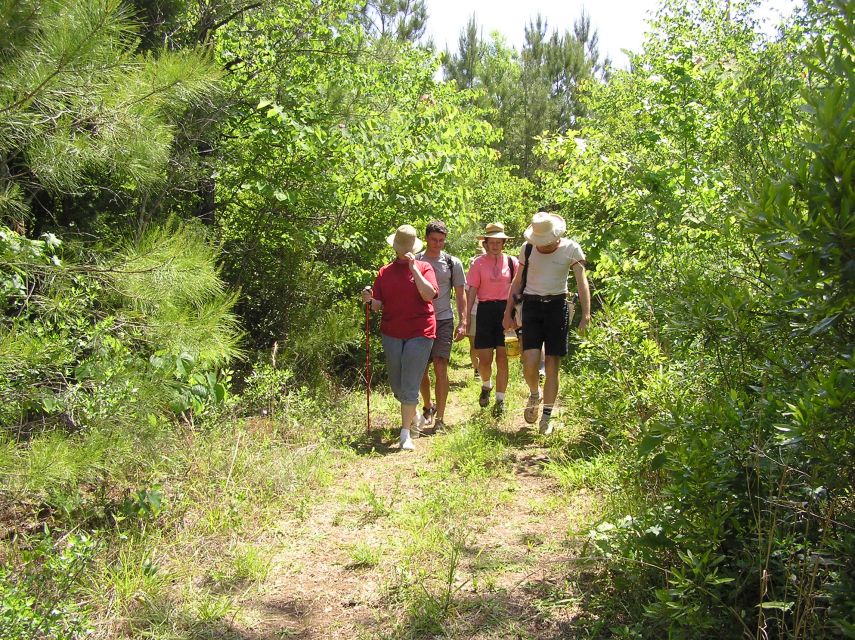
A long drive by ATV, then a short hike to the gully.
The gully where we began the day.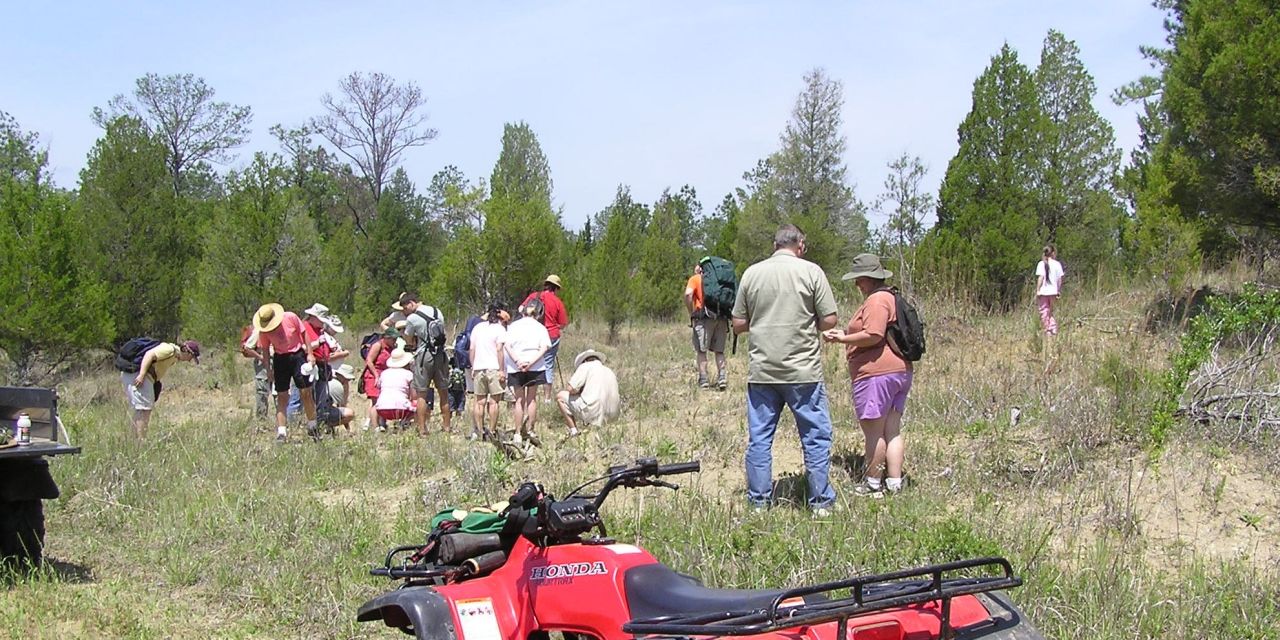
Greg has just given instructions on "how to collect in a gully", so everyone is being very cautious and searching carefully.
This is a rather small gully, with very little chance of getting lost here. Gullies in the Ripley are very unusual.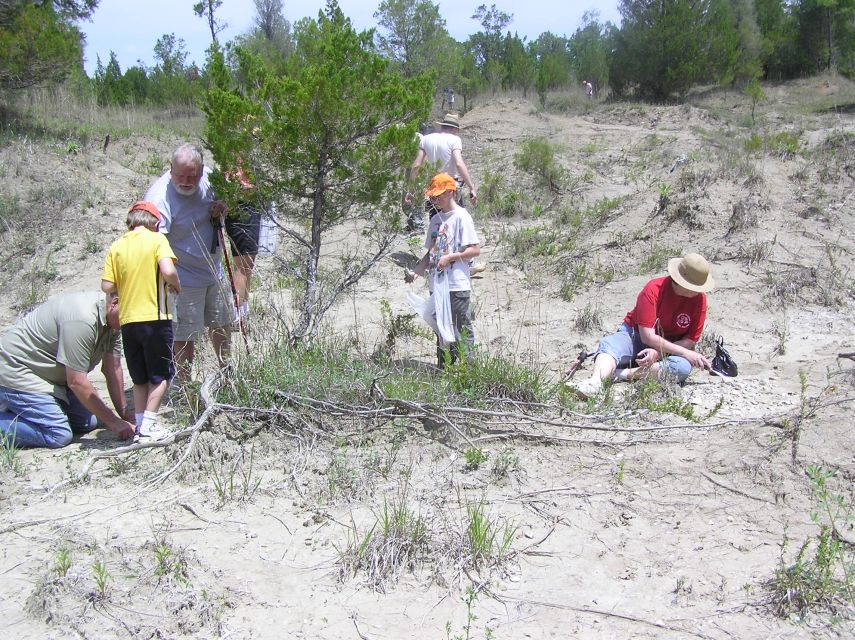
Sometimes it was easier and more productive to just sit in one spot and let one's eyes get accustomed to the patterns.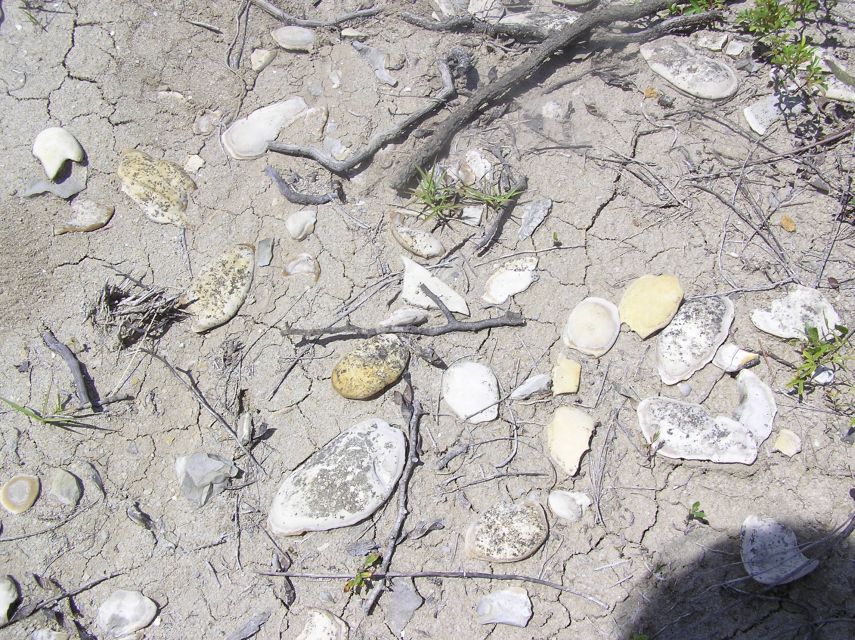
The gully is littered with numerous pieces of broken shell, nodules and sometimes fish and shark teeth.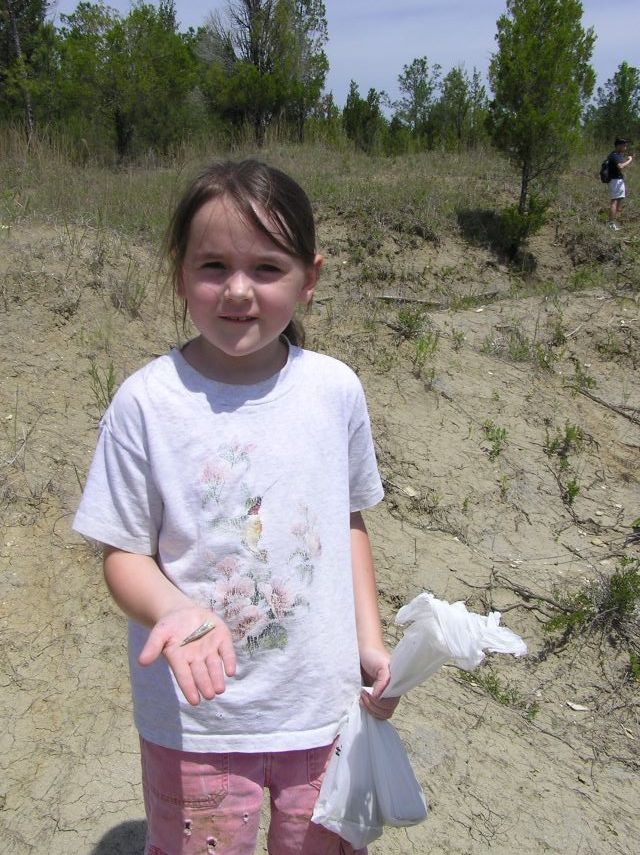
Loni's grand-daughter has found a sawfish tooth.

Lea has found the bottom part of a bivalve, possibly exogyra.
Shannon has found a new use for our logo patch - his son John's backpack.
Melanie has found . . . something . . . .
Tooth from a late Cretaceous swordfish, probably Protosphyraena.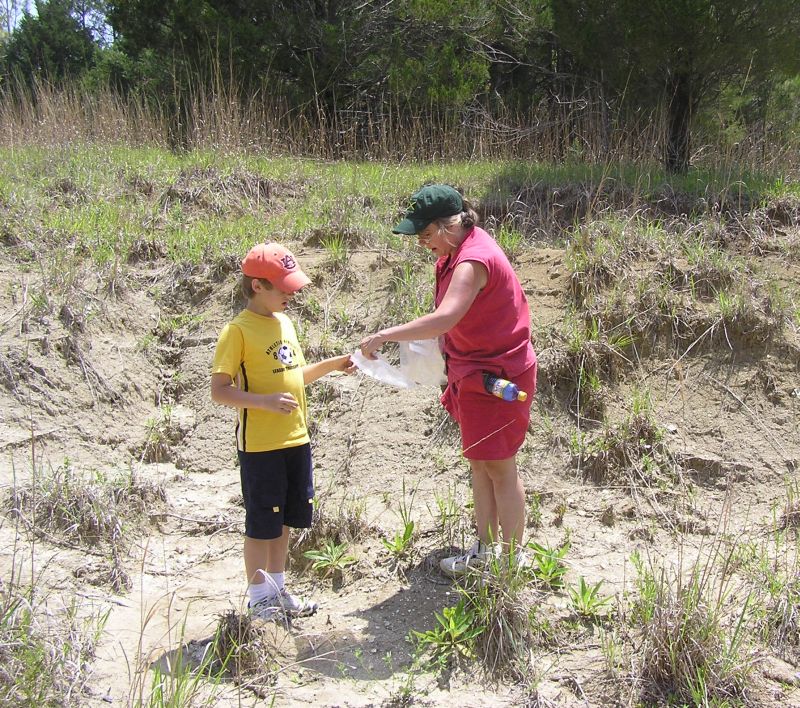

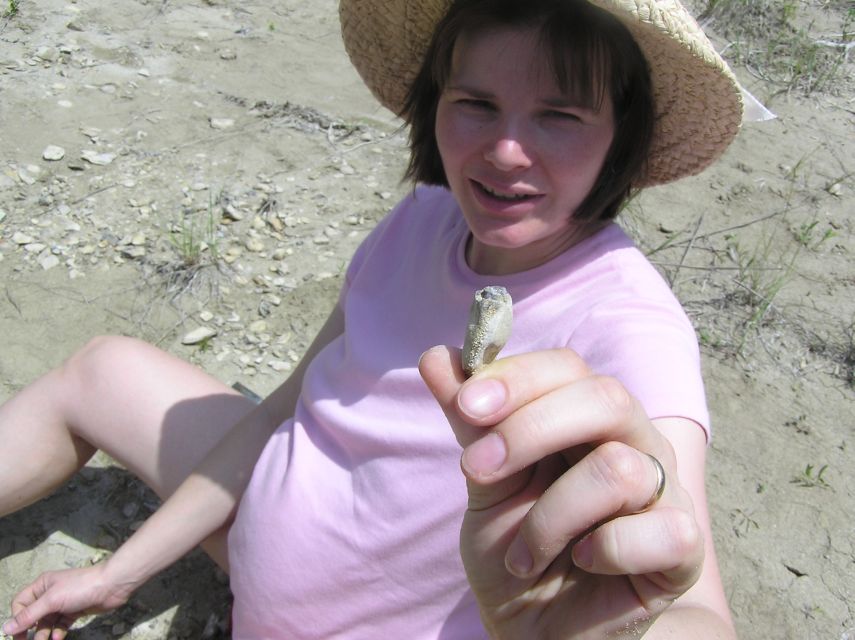
Sylvie has found part of a crab leg.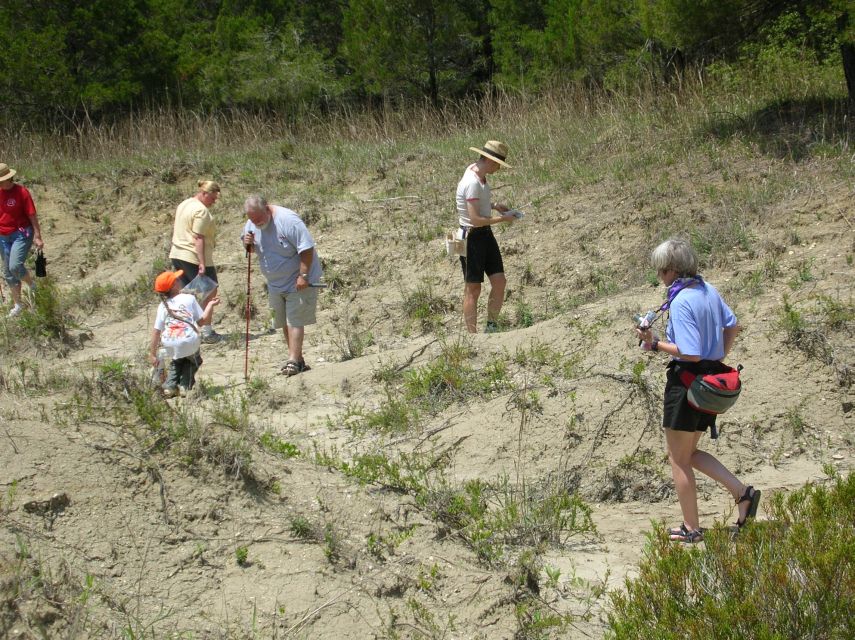
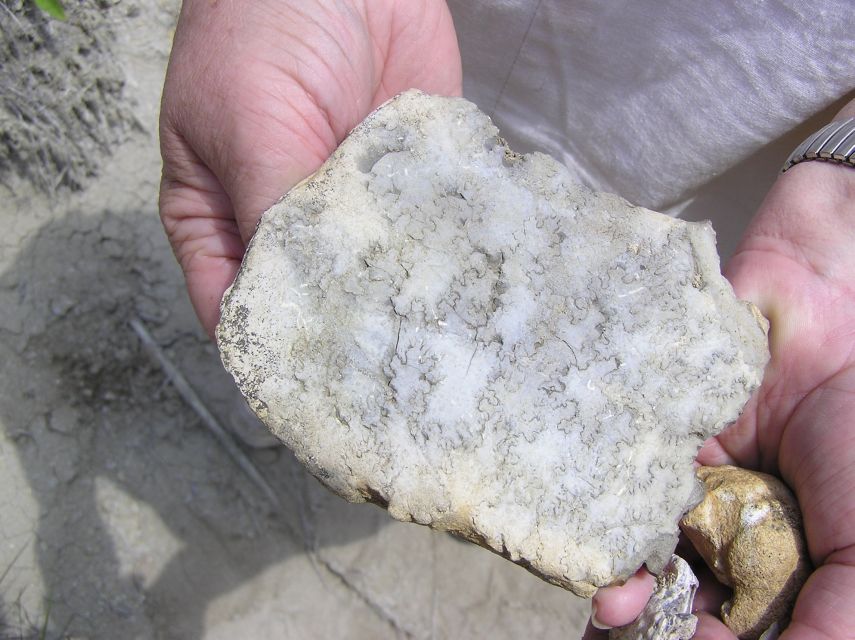
Small fragment of ammonite showing the tell-tale intricately patterned suture marks, which distinguish it from a nautiloid.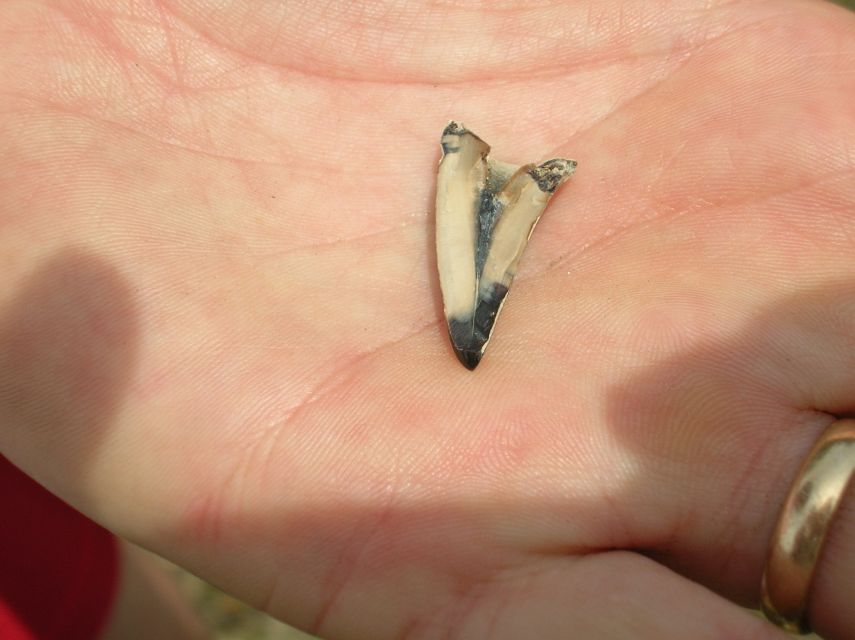
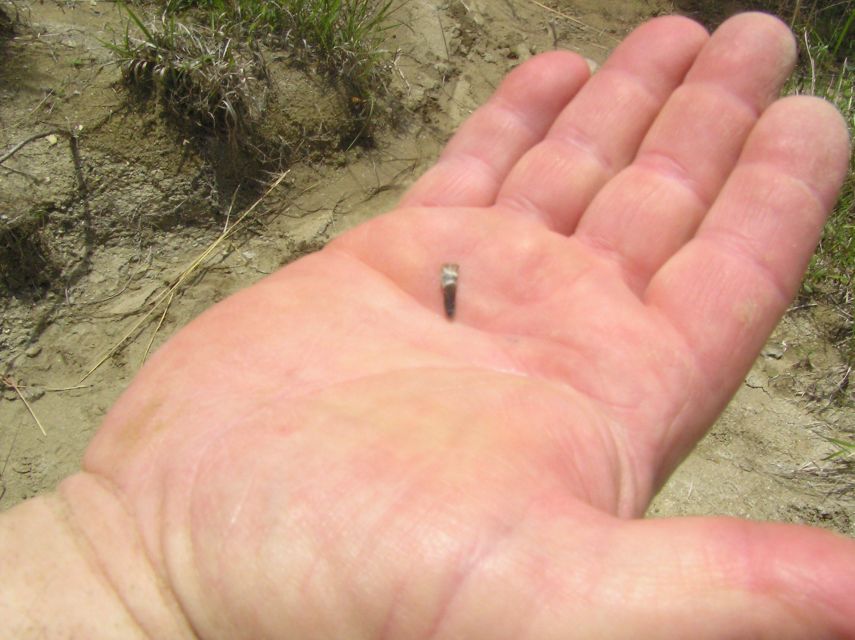
Mosasaur tooth.
A variety of shark teeth, and the long upper left one is a swordfish tooth.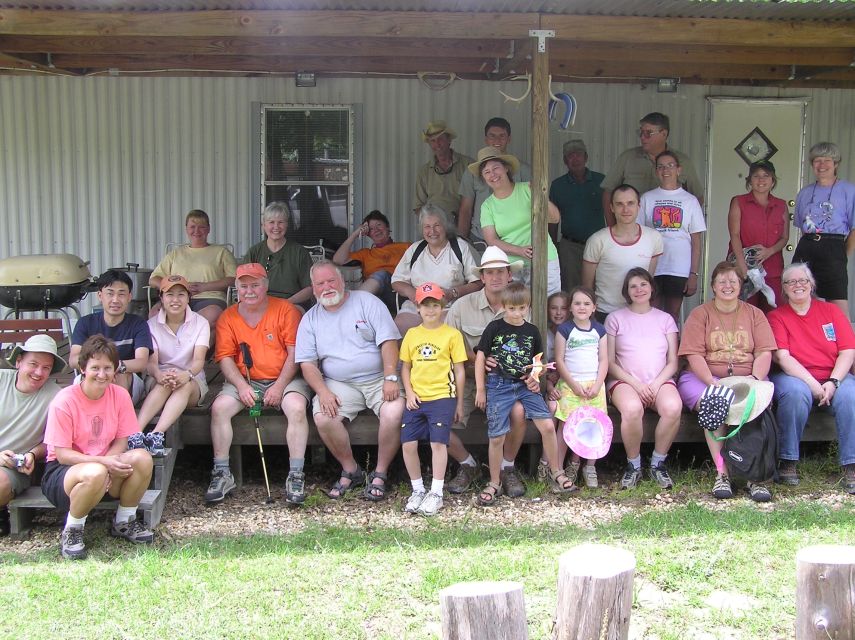
After a really hot morning, we returned to camp for lunch and a group picture. Uhh.... where's Claire, did we leave her??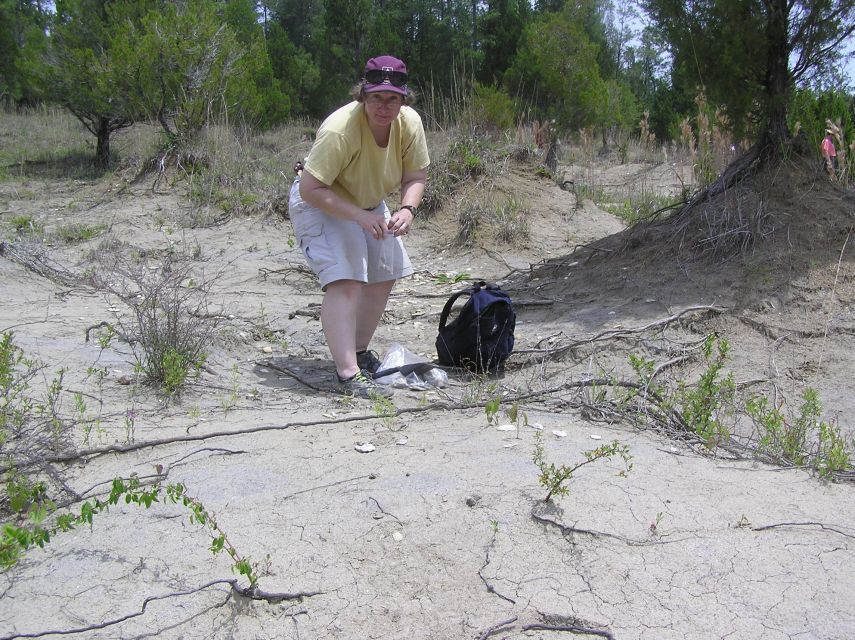
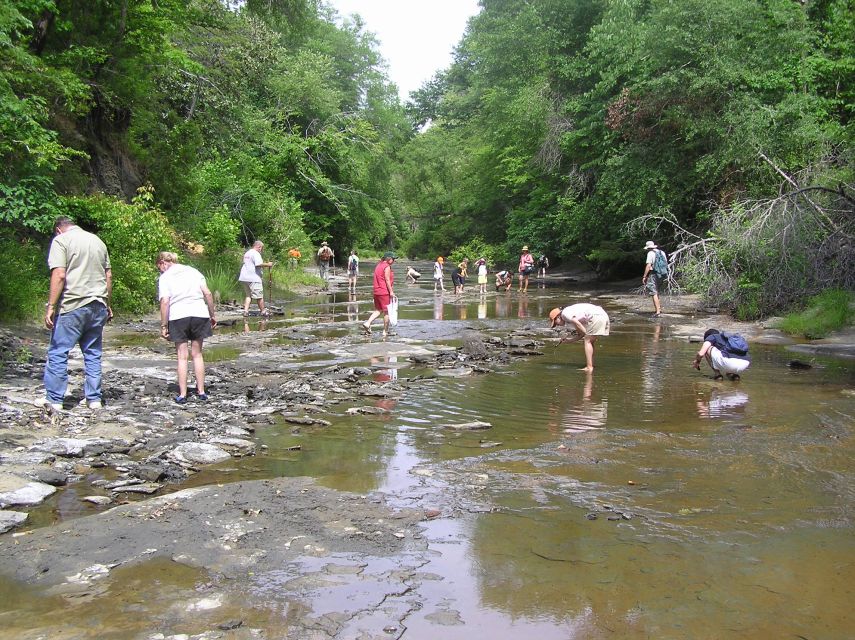
Members spread out to search the creek bottom and banks. Some go upstream, some go downstream.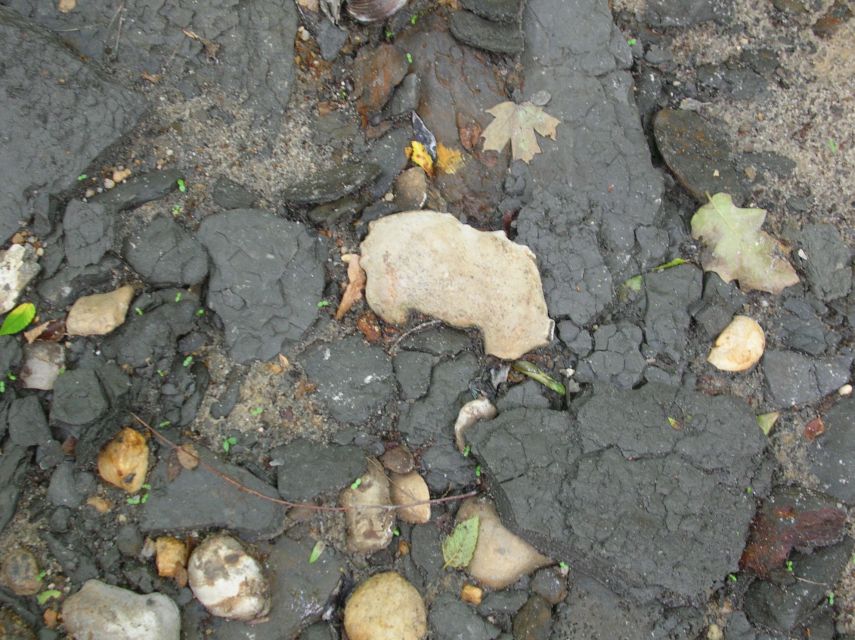
Nice crab. Note the dark gray clay. It is quite slippery in the creek and along the shore.
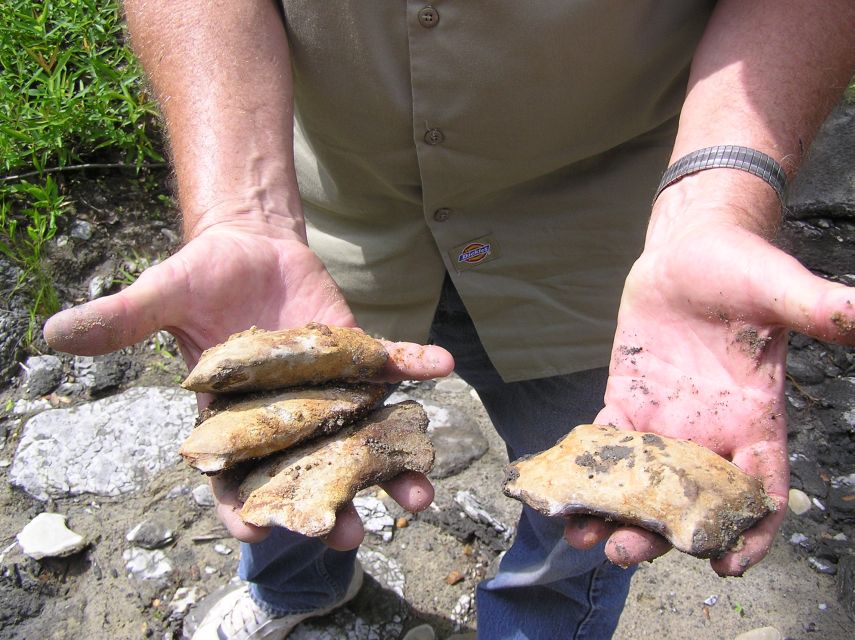
Some nice crabs.
An odd round item found by Vicki.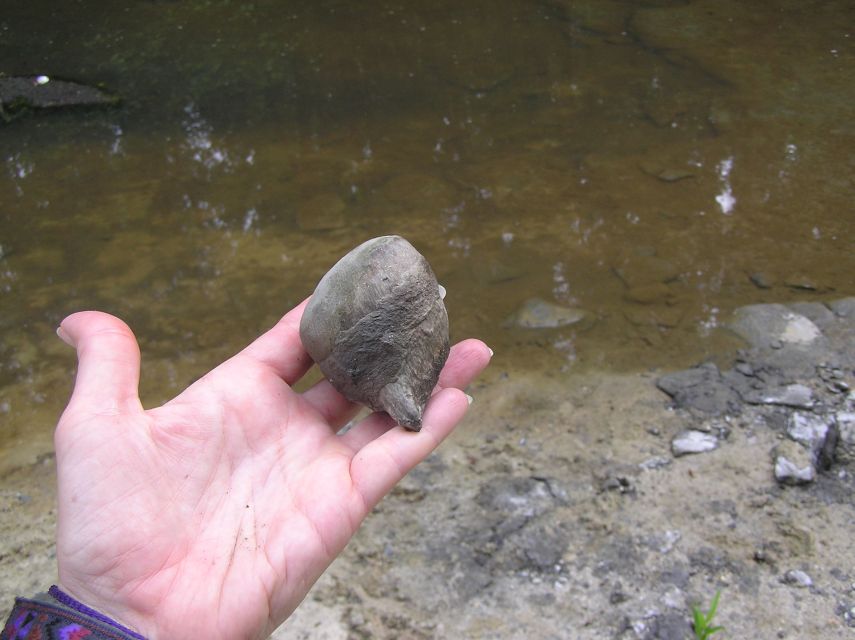
A closer look at the "round thing".
Rychard has found a nice deer skull, recent, not a fossil.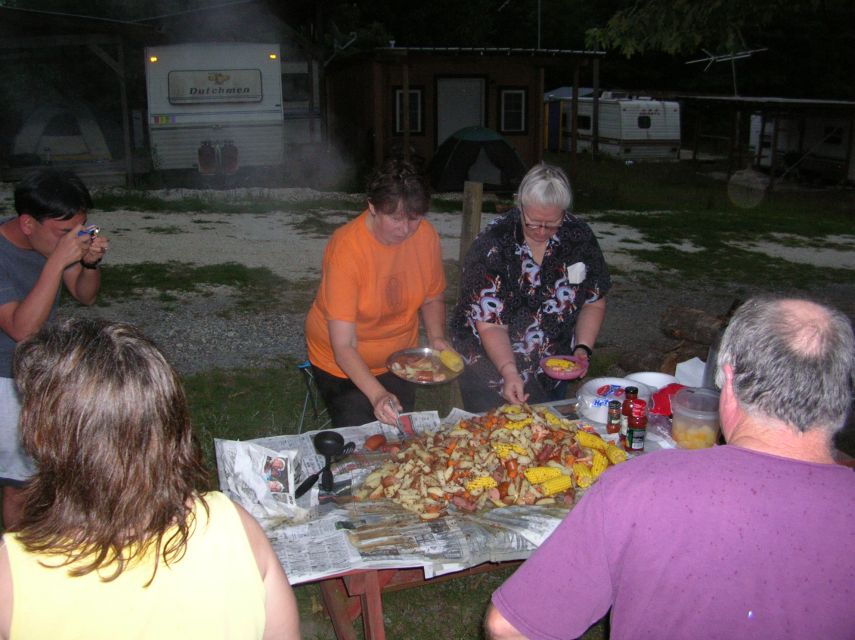
Back in camp, the food fun starts! Members and guests enjoyed a fine low country shrimp boil, with head chef Greg Mestler. Numerous members contributed to its preparation and its disappearing act!
THIS JUST IN ! ! SYLVIE AND MICHAL ARE THE PROUD PARENTS OF ELI MRUG ! Born May 23, 2006.
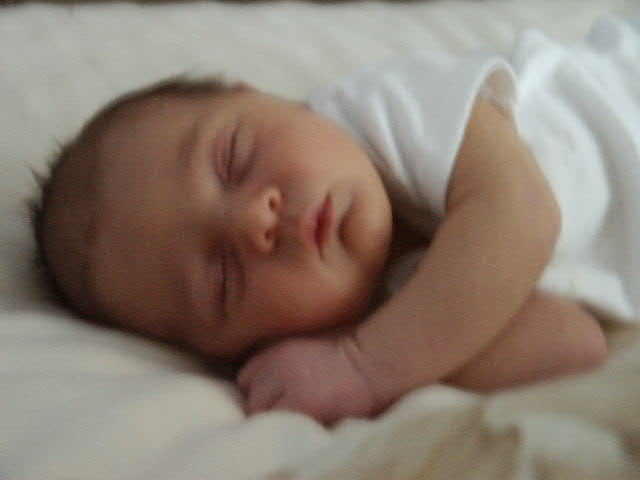
June 03, 2006 - Paleocene Fossils, Clarke and Wilcox Co, AL
Later in the day we headed to Wilcox County, Alabama, to some huge road construction rubble piles. These rocks were from the Paleocene, Midway Stage. Several nice nautiloid casts (Hercoglossa ulrichi) were found at this site, as was an extremely nice vertebra, which has not yet been identified. The nautiloids are made of compressed sand, and the actual shell has disintegrated. Though they are very heavy and appear sturdy, if left exposed to the weather, or cleaned with water, they will crumble into a pile of sand.
Update: July, 2006 - on the trip, Martha found a large bone that appeared to some of us to be recent, as it was very lightweight; however, Jun Ebersole and James Lamb of the McWane Science Center asked to examine the bone, and determined it is from the only early whale of this species ever found in the state. The specimen has been sent to an early whale expert for study.
(photos courtesy Steve Corvin and Vicki Lais)
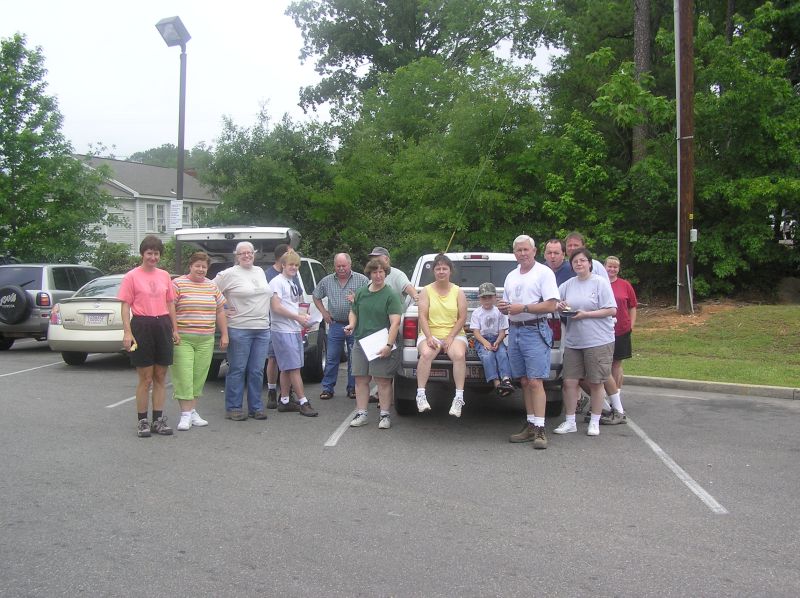
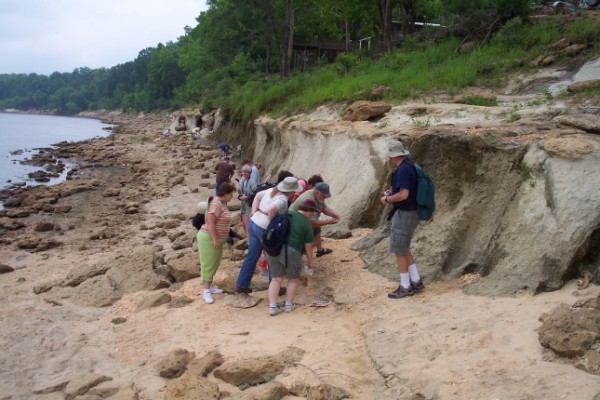
Greg is showing the group some specimens from this site - nice corals.
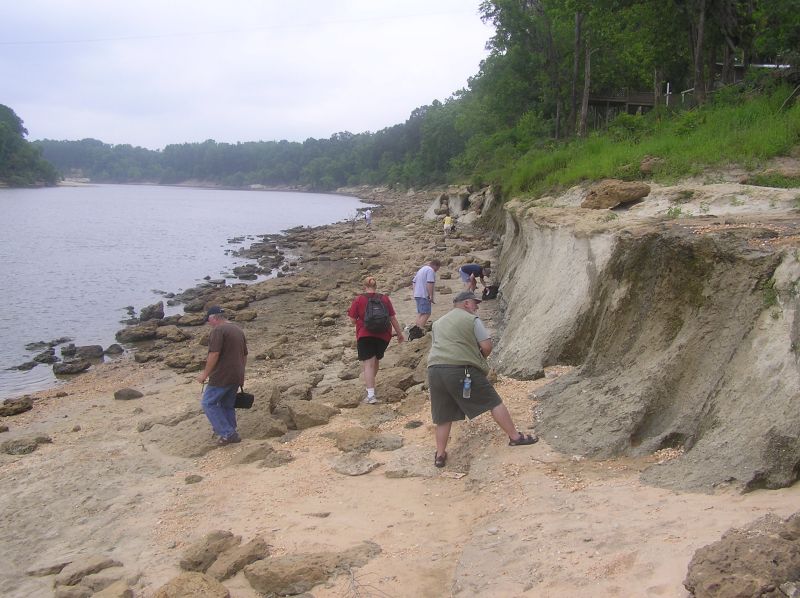
And the group scatters - the low water level makes hunting easy.

All the rocks at this site are filled with shells and corals. The trick is getting them out whole, as they easily crumble.
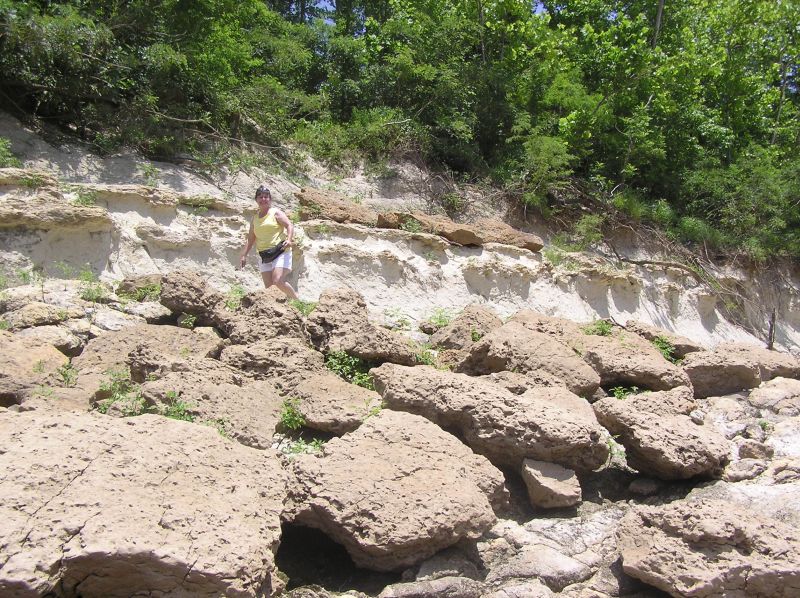
Becky is looking high . . .

and Anca is looking low!
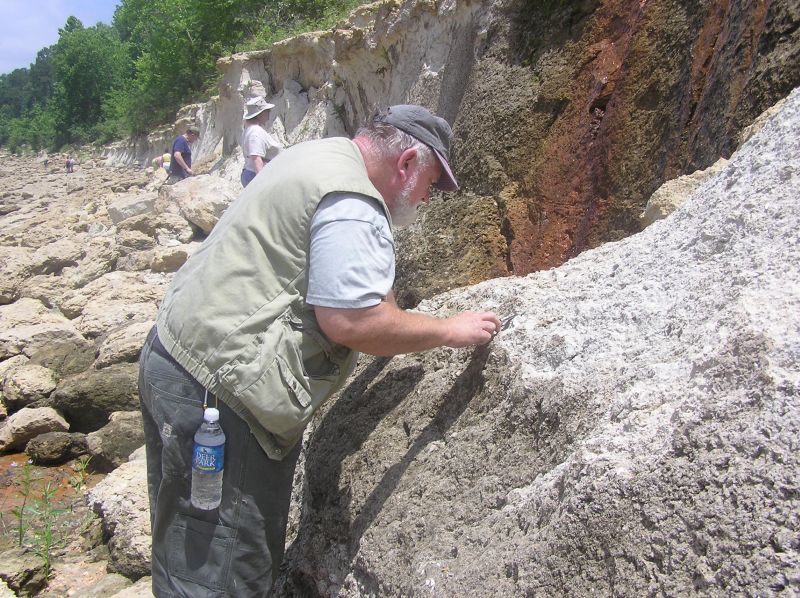
Greg carefully easing out a small coral.
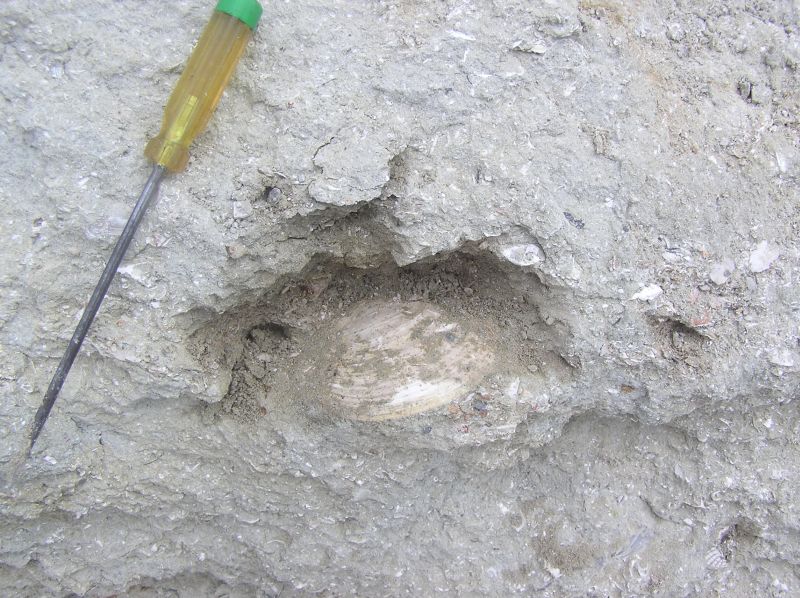
A nice bivalve found by Vicki.

Nice gastropods found by Leisa.

A large piece of bone found by Martha. According to James Lamb, it appears to be another bone fragment from an early whale found in this area. This specimen has been sent to an early whale expert for study.

David is heading to another location. The corals and shells were found from the bluffs to the waterline, while Steve engages in his favorite activity, getting wet!
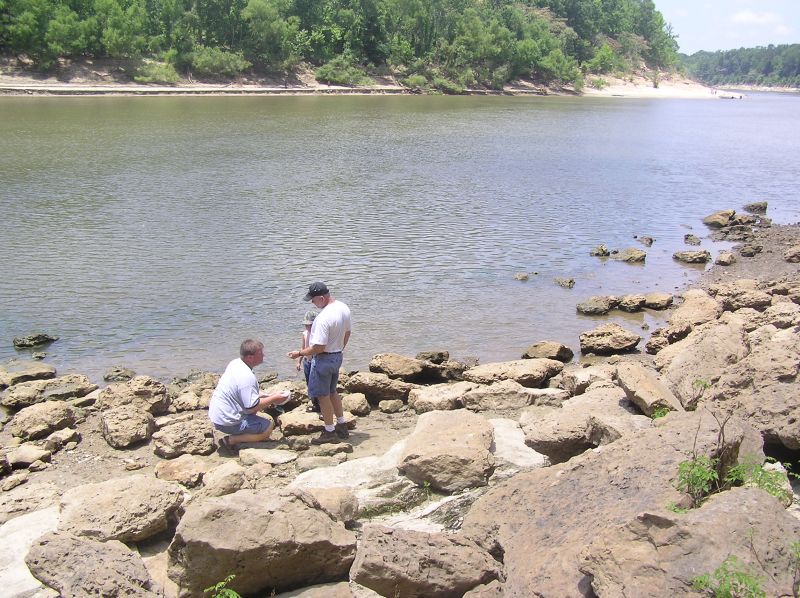
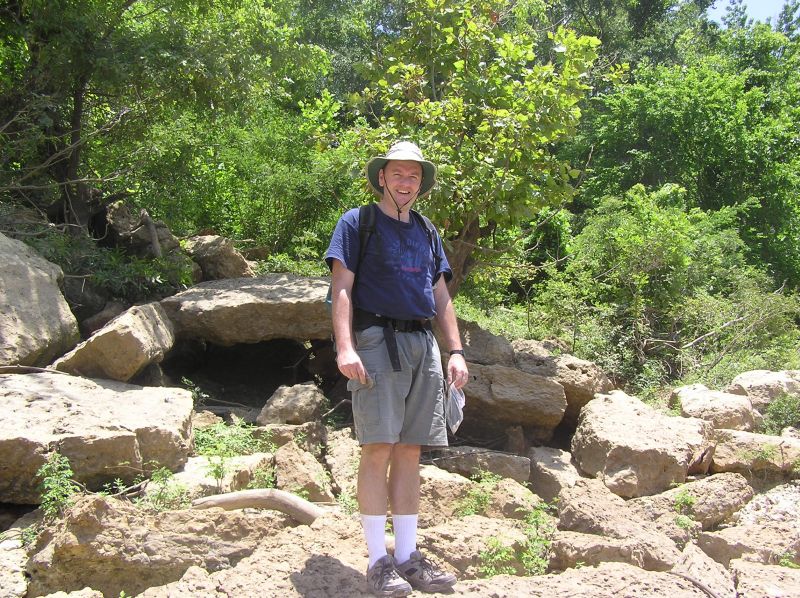
Jan, look over here!
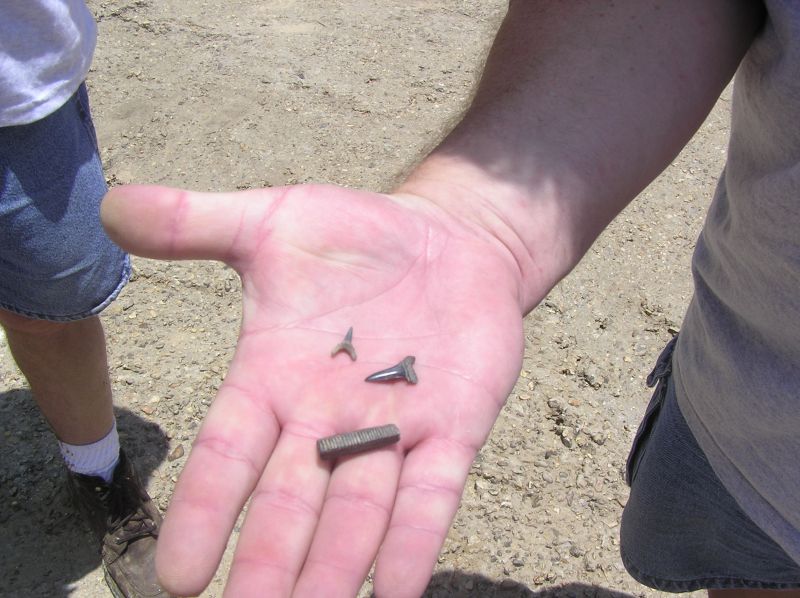
Shark teeth and a ray "tooth".
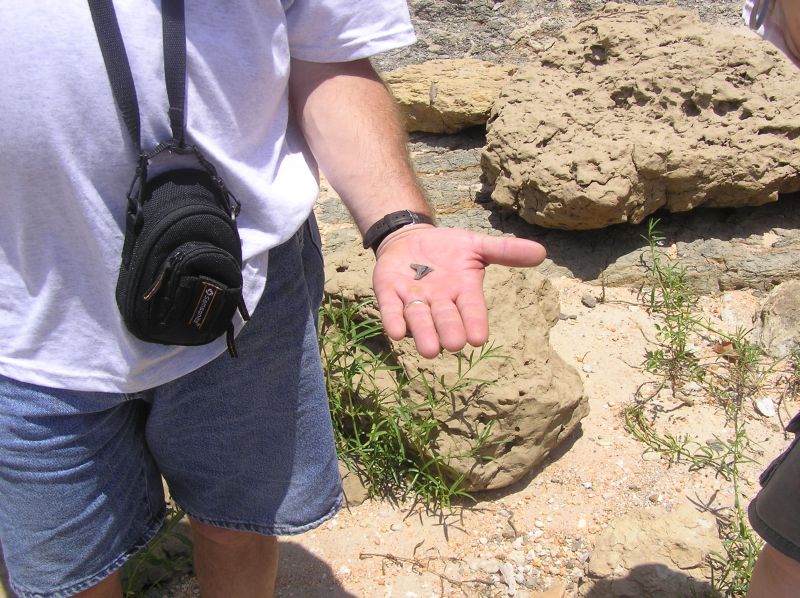
A nice larger shark tooth found by Steve.
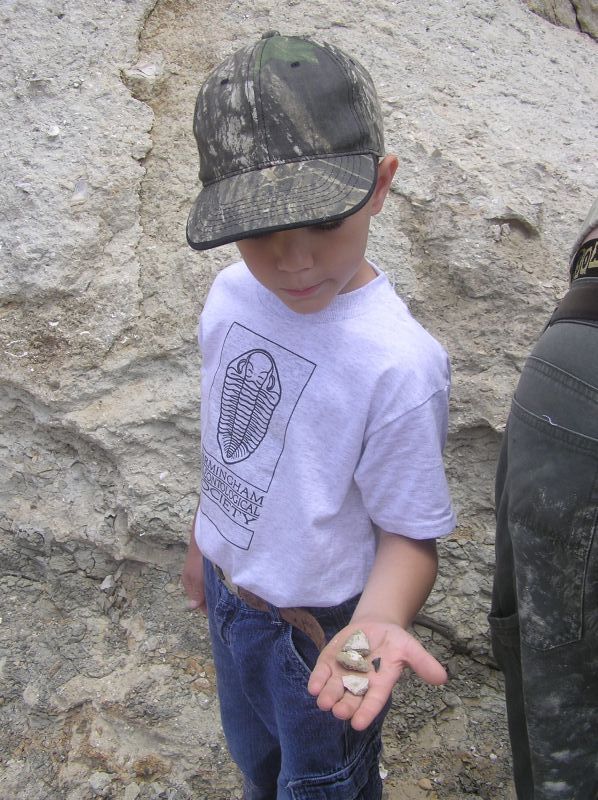
Steven has found coral and a shark tooth.
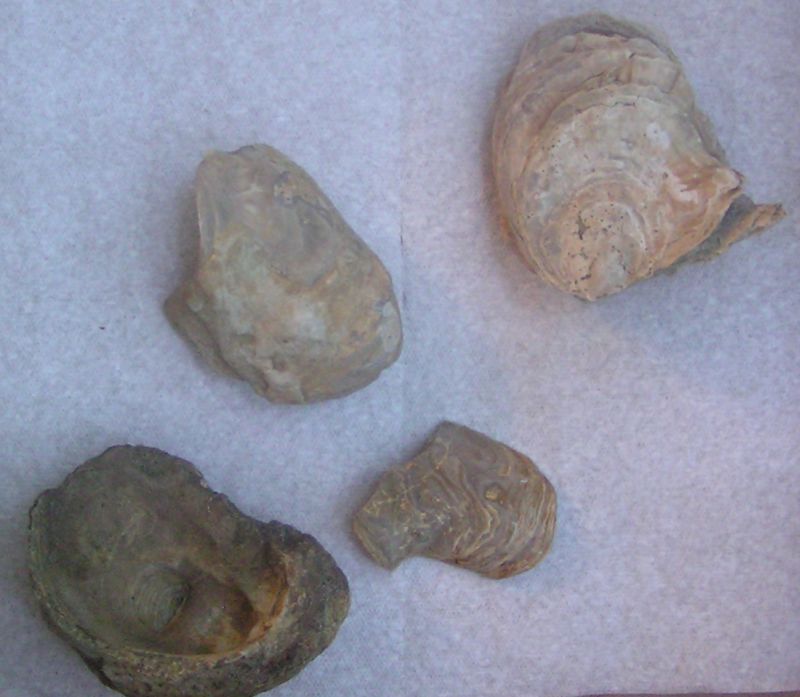
Some shells found by Vicki.
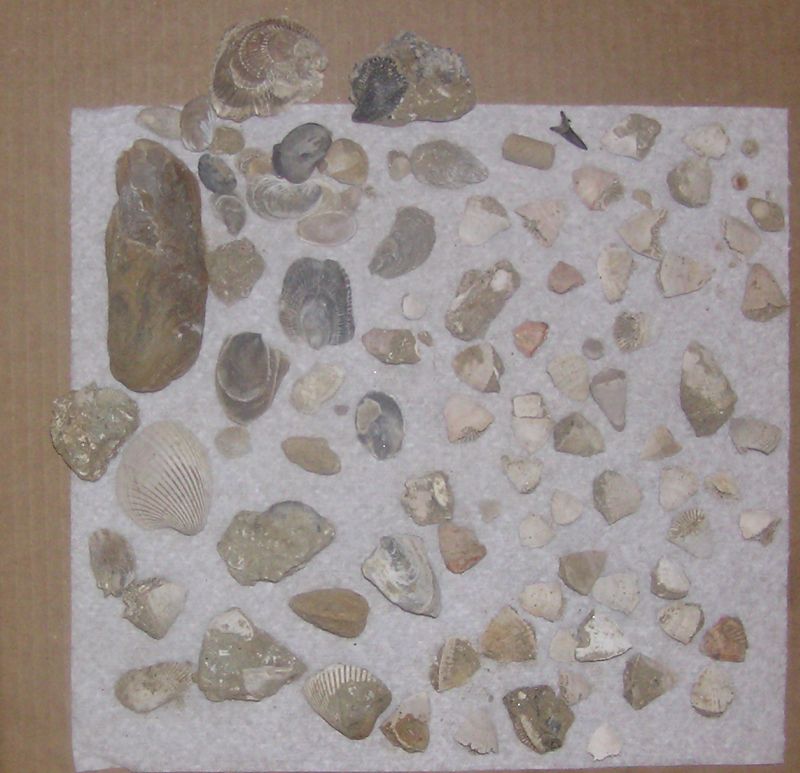
Shells and corals in Vicki's bag.
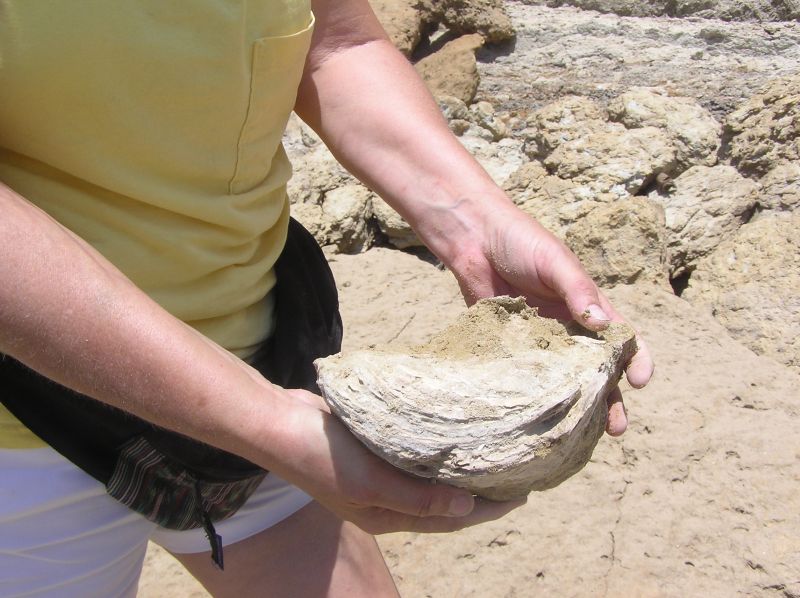
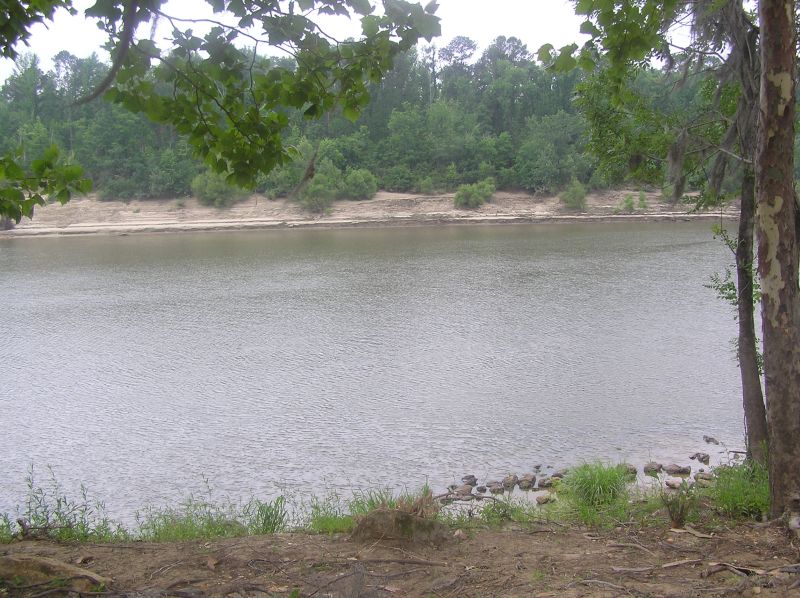
One last look at the river before we head for lunch, then on to the next site.
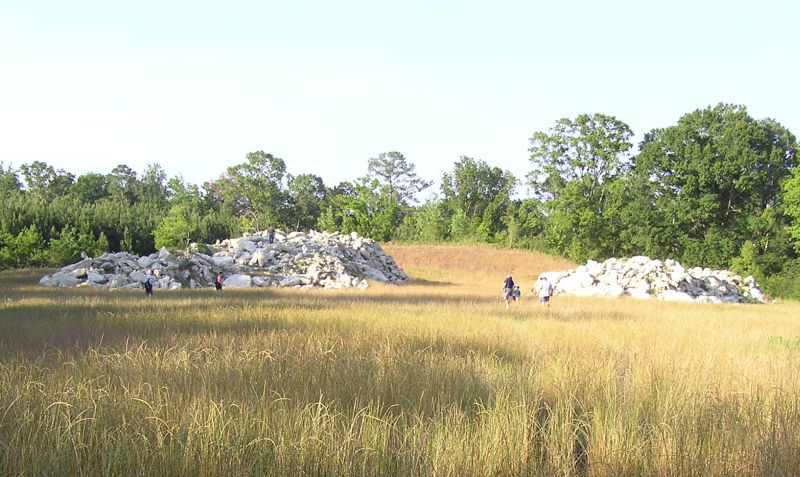
Later in the afternoon we headed north to Wilcox county, to this pile of rocks from nearby road construction.
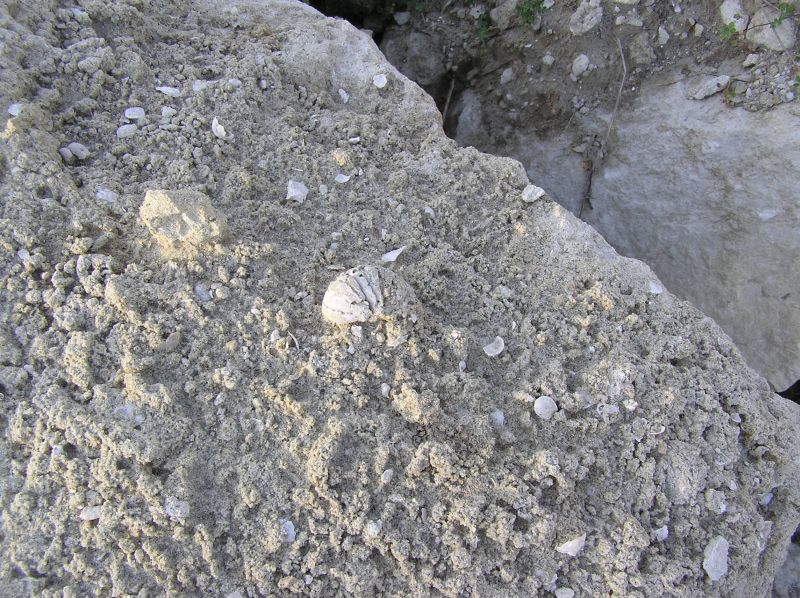
This was spotted on the way in, but the rock was too hard to easily remove the fossil.
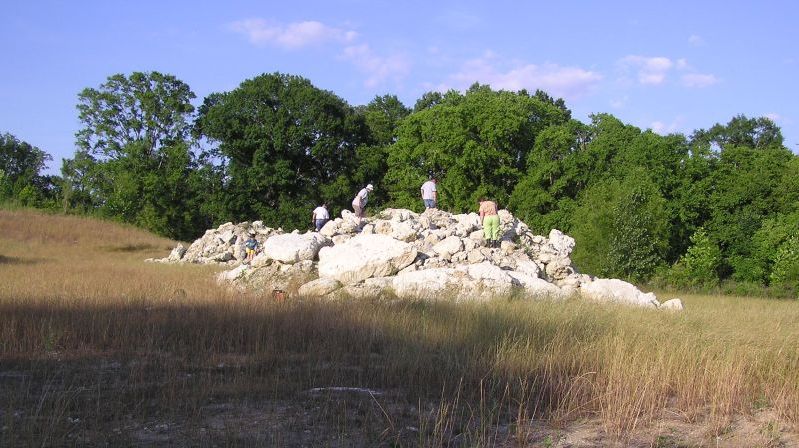
Jan and Lea headed over to this pile of rocks where they found . . .

a cast of a very large nautiloid!
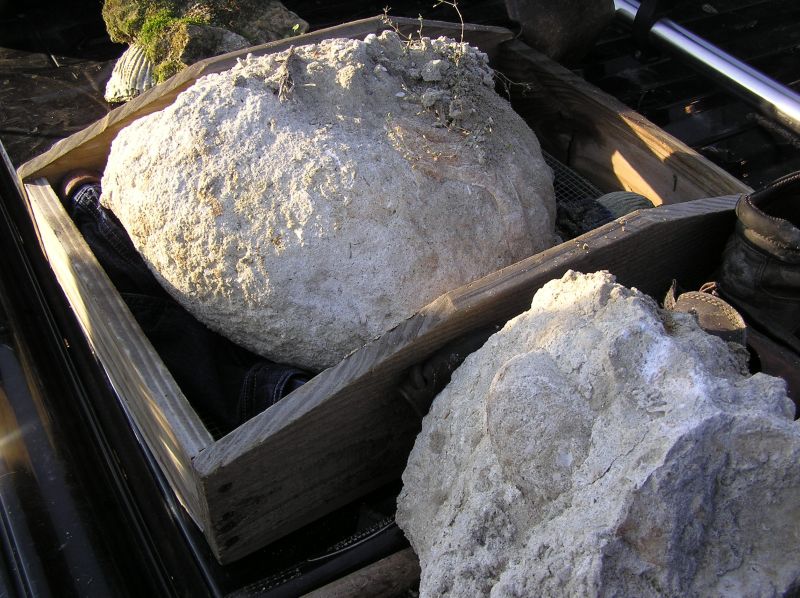
More nautiloid casts.
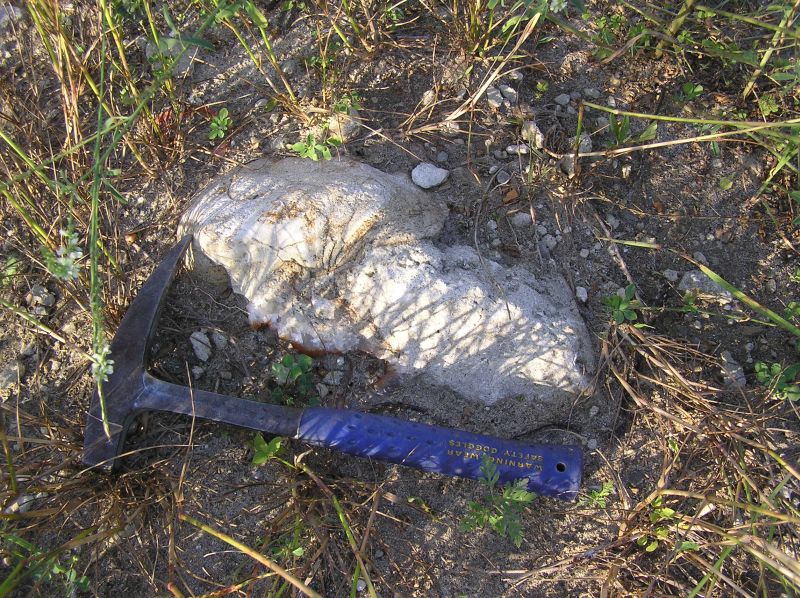
Claire found this piece of nautiloid barely out of the ground. She dug quite a while to work it loose.
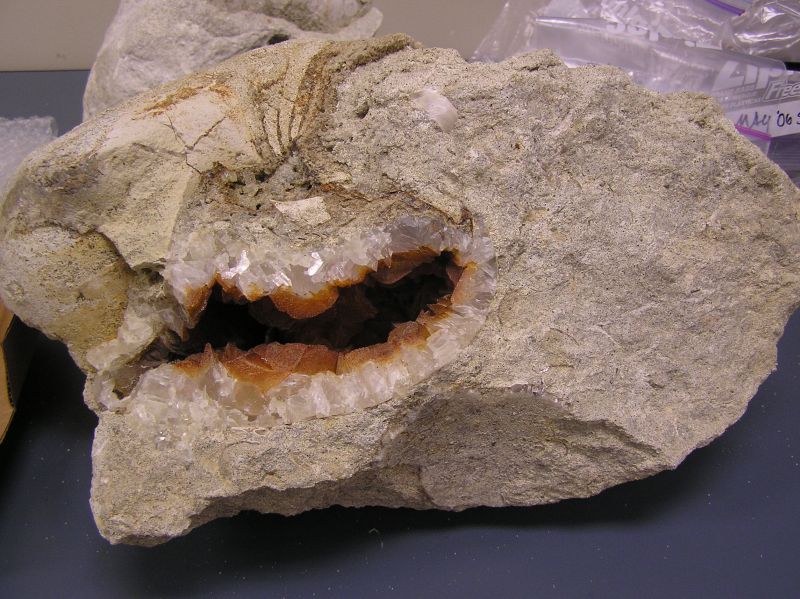
This is what Claire found inside the nautiloid after removing the matrix. Beautiful quartz crystals!
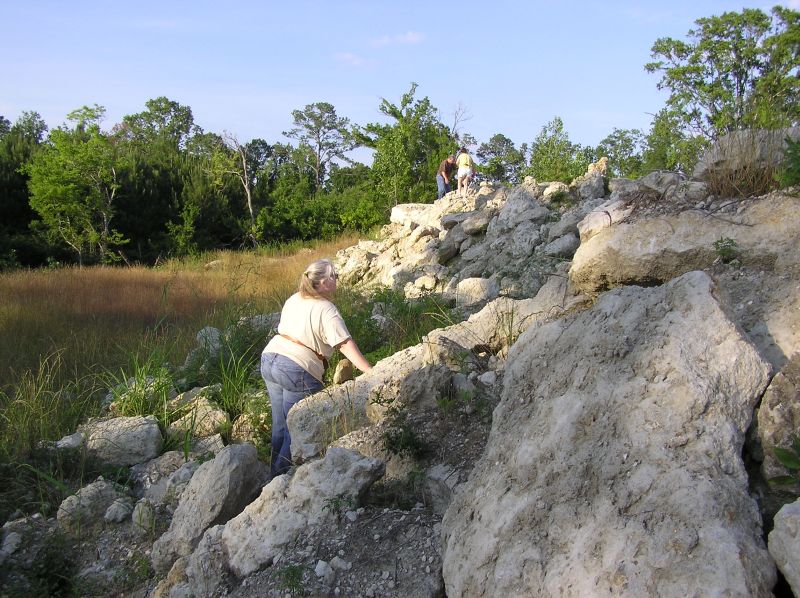
Martha searching for an easy way up, which required the skills of a mountain goat!
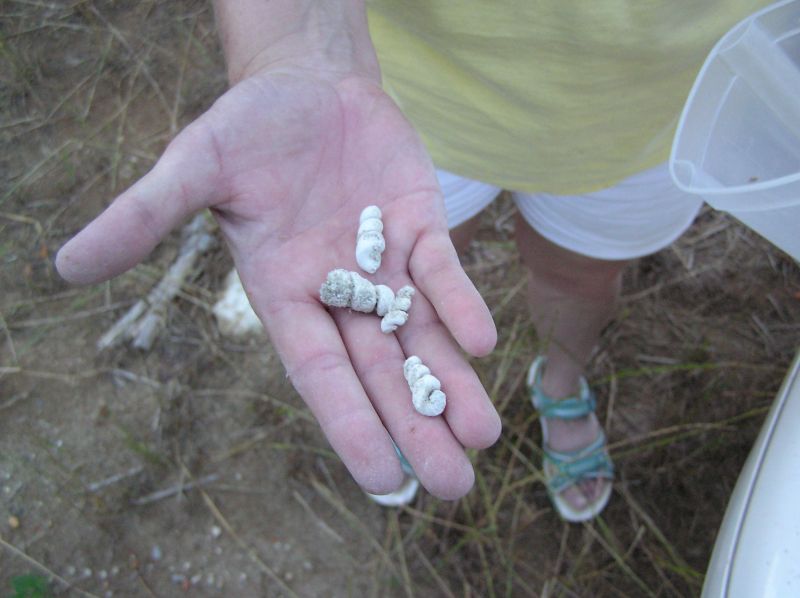
Becky has found some nice gastropods.
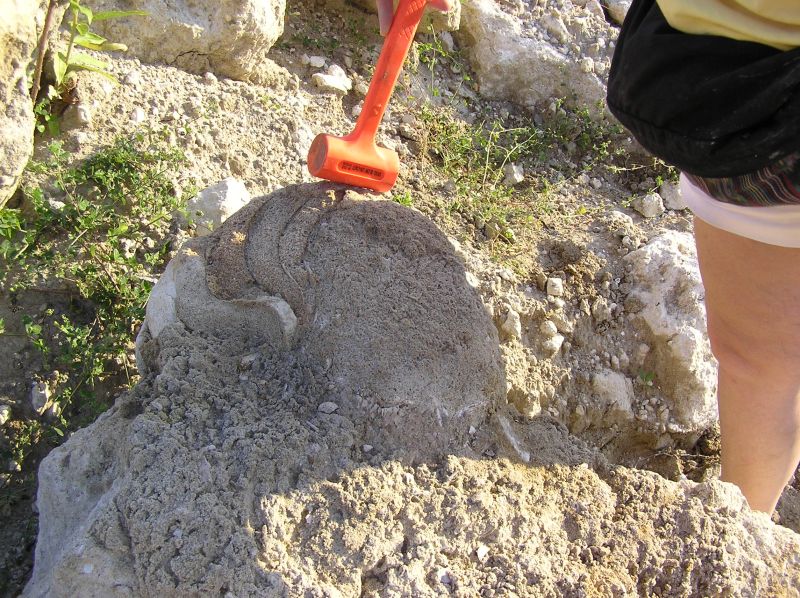
And a large nautiloid cast in extremely hard rock!
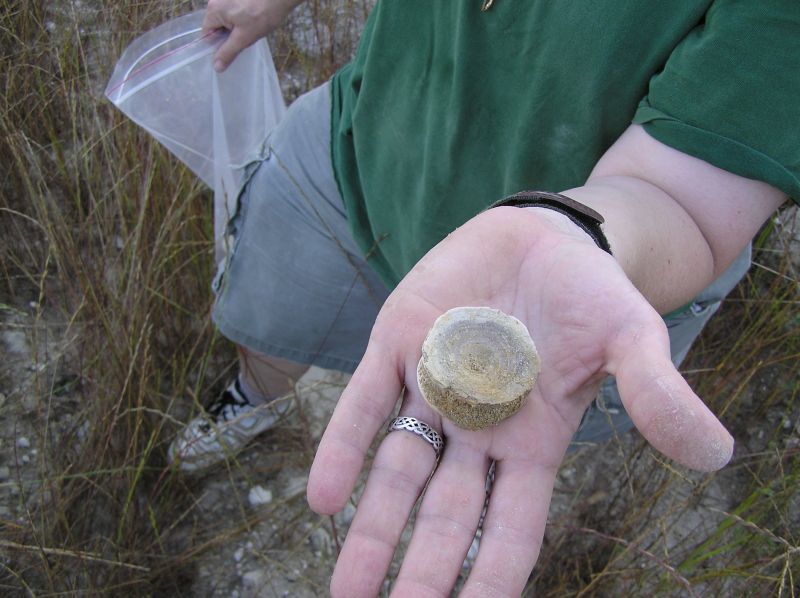
Claire had a very nice day. In a wash near the nautiloid filled with crystals, she found this large vertebra.
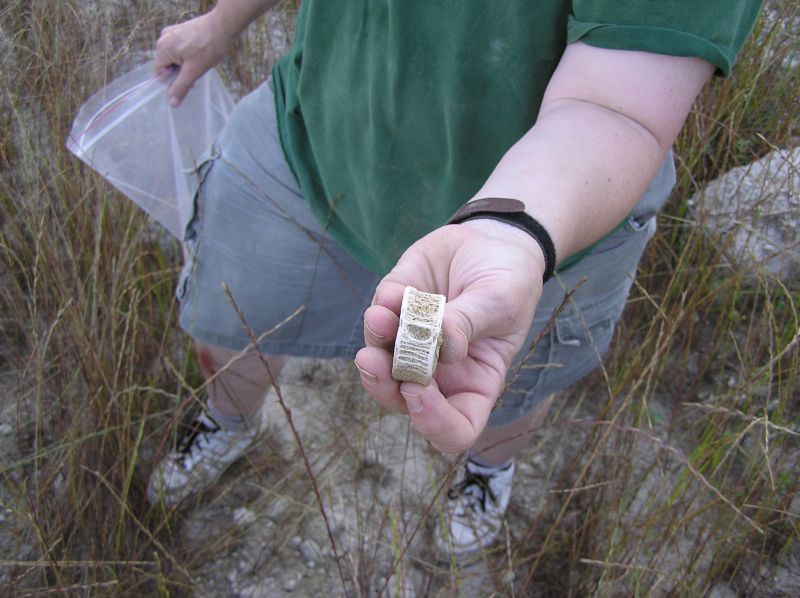
Side view of the vertebra.
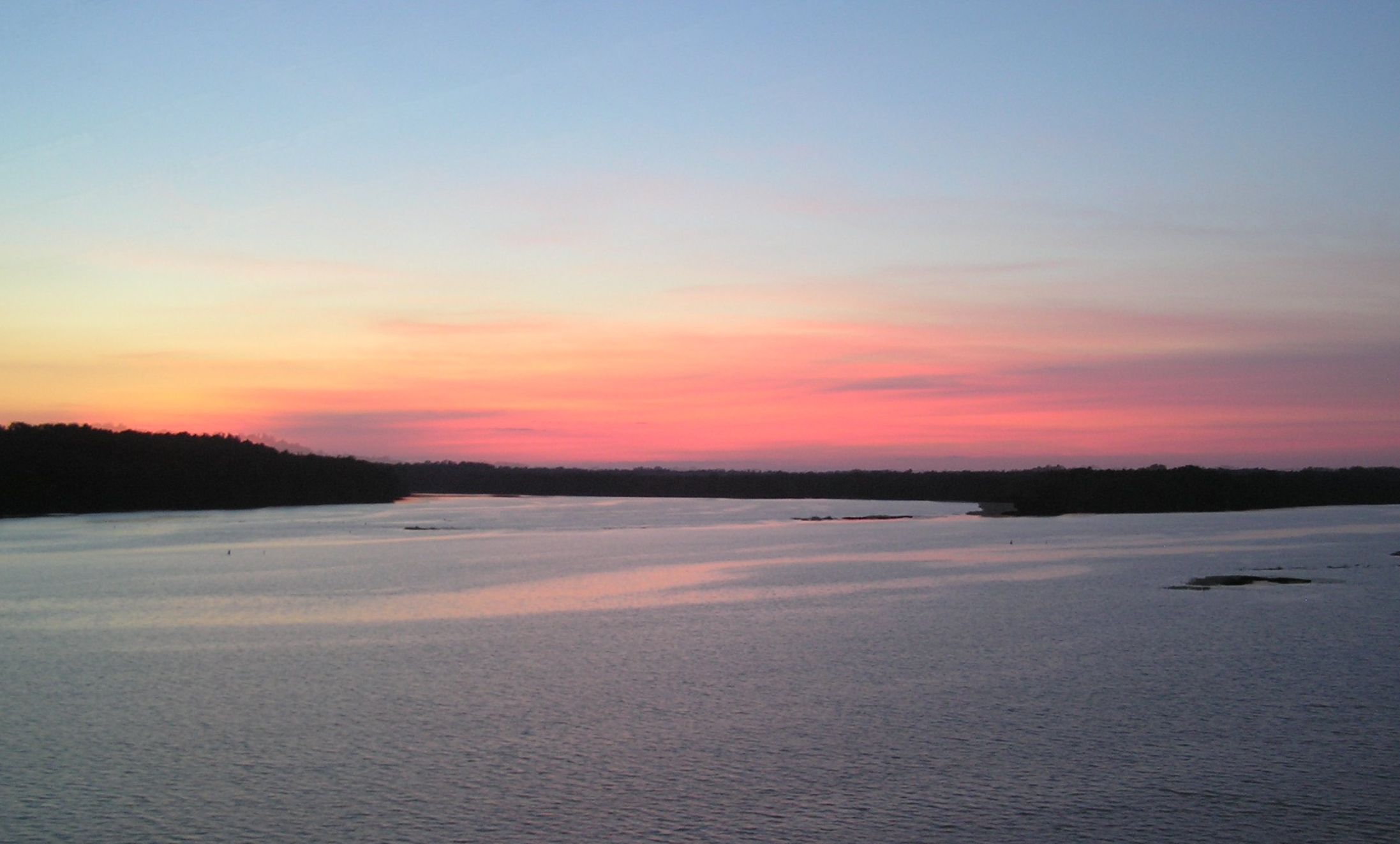
As the die-hard fossil hounds called it a day, we were treated to a beautiful sunset!
June 24, 2006 - Cretaceous Fossils, Montgomery and Elmore Co, AL
A relatively small group of BPS members went to a creek in
Montgomery
County for today's trip -
could it be some people were scared off by the thoughts of 95 degree
weather in the sweltering sun? To get an idea of our weather,
go
to your
bathroom,
turn the shower on the hottest it will go, close the door so steam can
build up, turn off the A/C, then take your laptop in there
and
view
our trip photos - you will have a good idea of our day! Leisa
brought
her canoe, and she and Claire floated/pushed/dragged it upstream and
then back down. This late Cretaceous site once again yielded
numerous echinoids and ammonites, though most of the ammonites could
only be "collected" via photos, due to their fragile
composition.
We
also found huge quantities of shells, a few shark teeth, a couple of
mosasaur vertebra, two large vertebra, possibly shark, and
pyritized coprolites.
Several people decided to call it a day after getting too hot
for
comfort. After a refreshing afternoon lunch in an
air conditioned restaurant, the die-hards brains began coming up with
another potential
collecting site in Elmore county. Since we have a canoe, lets
go
look for petrified
wood. Now understand, we had one canoe, one paddle, 3 life
jackets and 4 people to go on this escapade. After a quick
stop
at the local discount store for an additional paddle and PDF, we
scouted access points. The put-in we decided on was
steep.
Really steep. Really really steep. But we finally
got it
down the several hundred feet to the water, only to find a boat wasn't
necessary,
the water was low, the shore was easily walkable, and petrified wood
was everywhere. So we
collected
it (ask Jan how much his pack weighed!), took some pictures of a tree
that was about 4 feet in diameter, and
noticed it was getting darker. And windy. And there
was
thunder. And
lightning. And lots of cold rain (boy, did it feel
good!)
And we had
the canoe at the bottom of a huge hill. But Leisa,
resourceful as
ever,
had a plan; just hook the boat to her van, and pull it out.
(photos
courtesy Vicki Lais)
-
-
Claire has found a couple of shark teeth, one still embedded in the rock matrix.
-
Leisa very quickly found a nice vertebra. After collecting the vertebra, Leisa and Claire headed up the creek, and we didn't see them again for several hours.
-
An ammonite impression in the matrix.
-
Melanie is examining her latest find. She found quite a few tiny shark teeth in this area.
-
In a different part of the creek from the echinoids, numerous shells are embedded in the matrix.
-
More shells in matrix.
-
Echinoids in matrix.
Pages
July 29, 2006 - Fossil Exhibit, Homewood Library, Jefferson Co, AL
(Photos courtesy Vicki Lais)
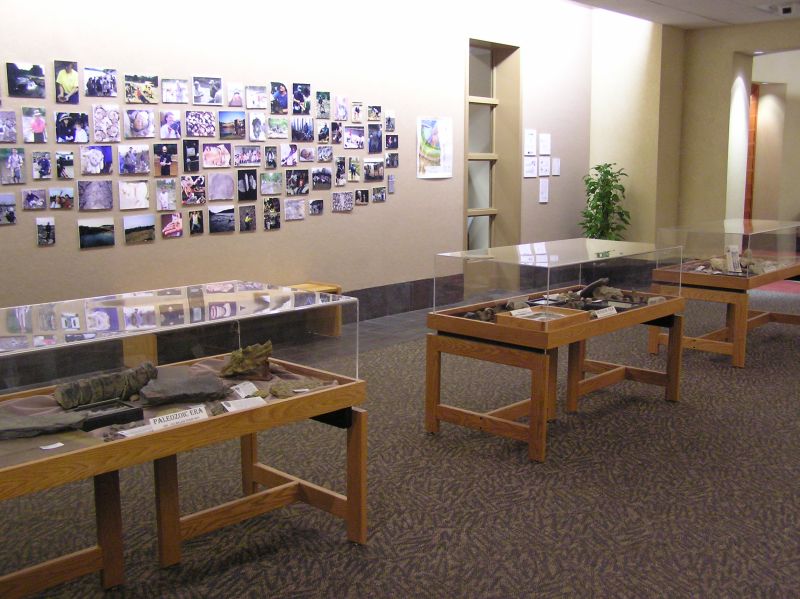
On July 29, members of BPS gathered at the HPL with bones, stones, posters and other materials to set up the exhibition that has become a tradition with the Library. We gathered in the round auditorium and laid out our fossils on paper mock-ups of the display cases.
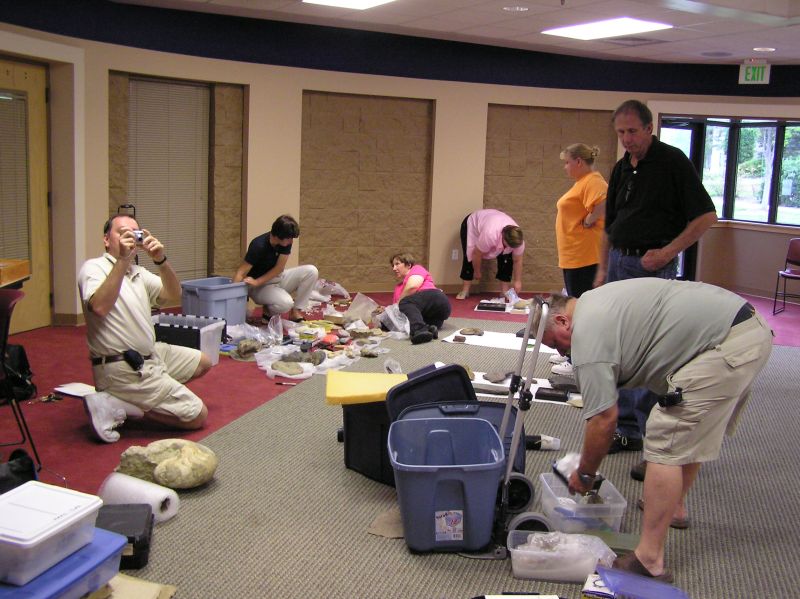
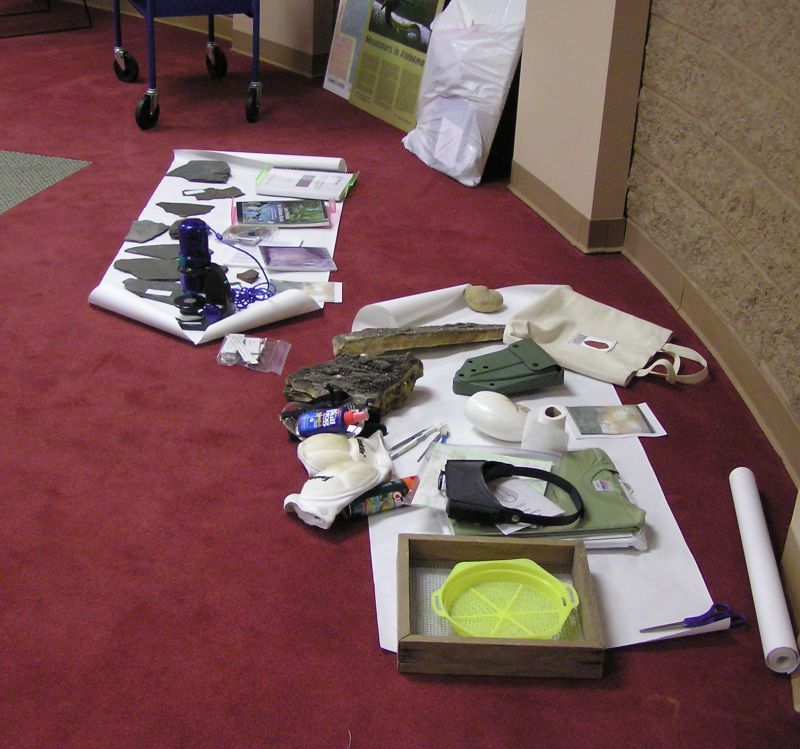
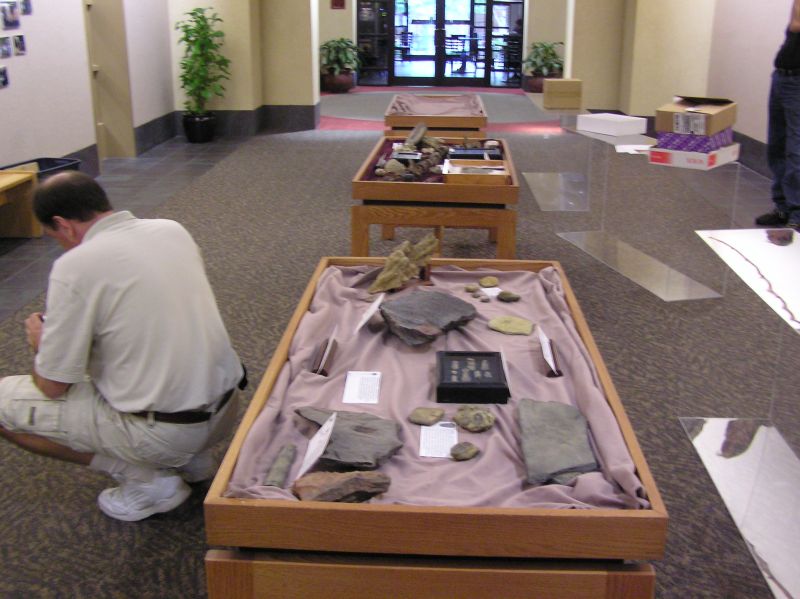
Once again "Bigbee" is the star of the show on a beautiful custom-made banner, donated by the McWane Science Center.
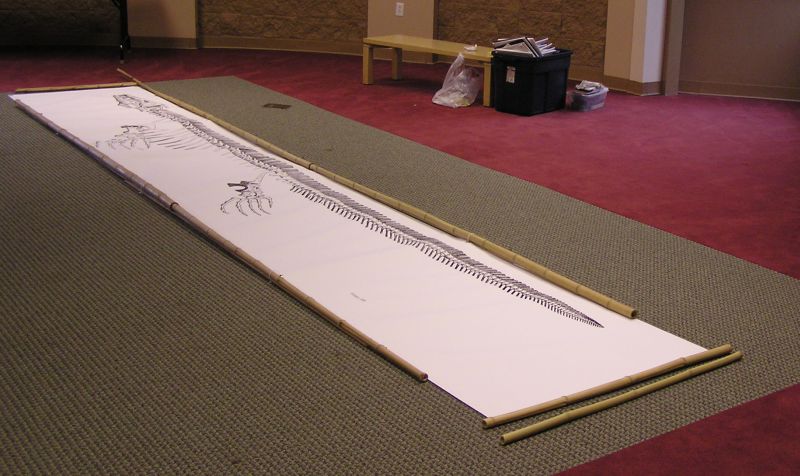
Hmmm.... Oops... well, we thought it would fit in last year's frame....
The display cases in the main exhibit hall are filled with fossils, all from Alabama. Specimens are organized by era:
Paleozoic Era -
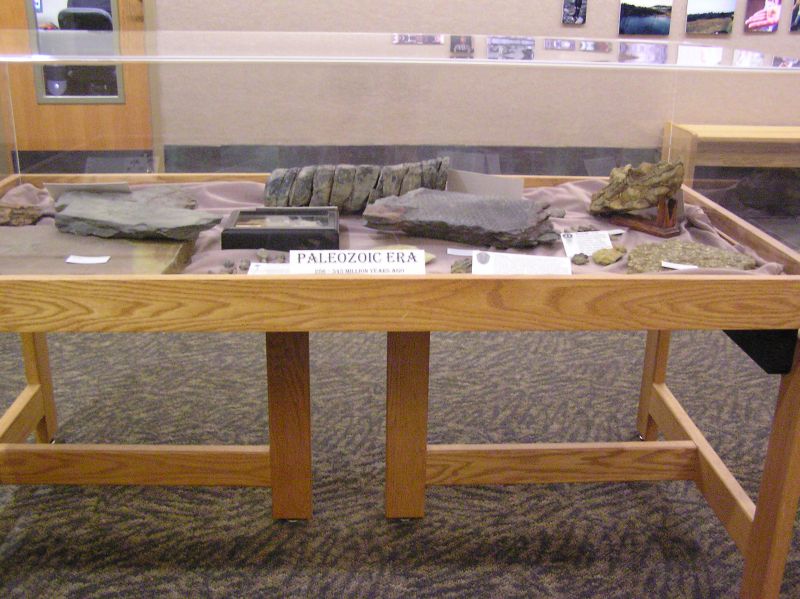

Mesozoic era:

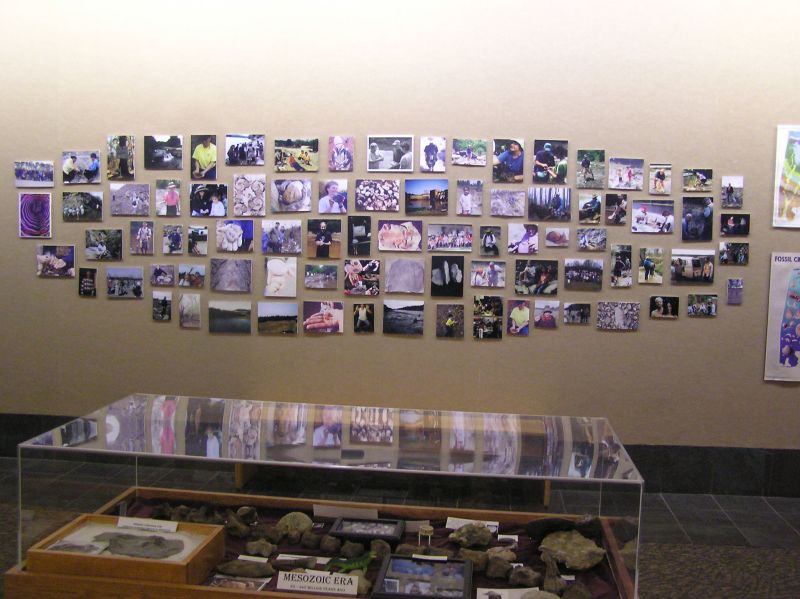
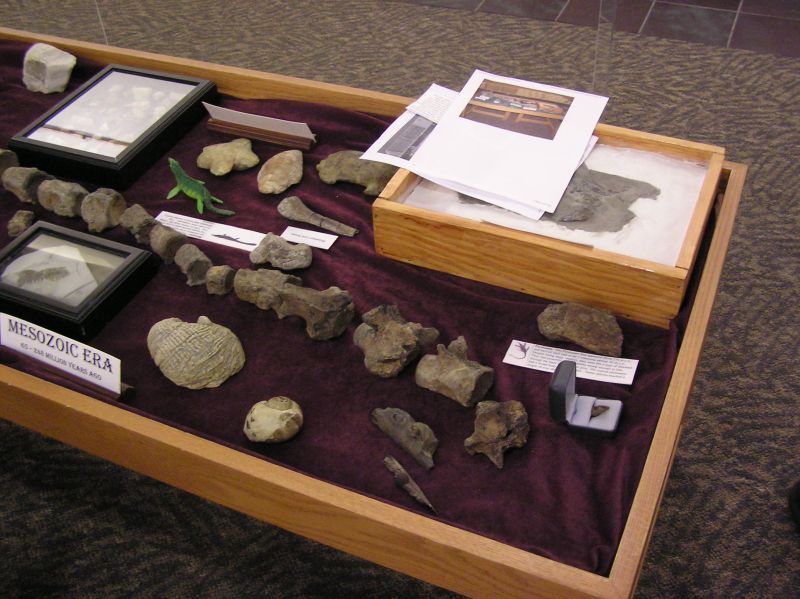
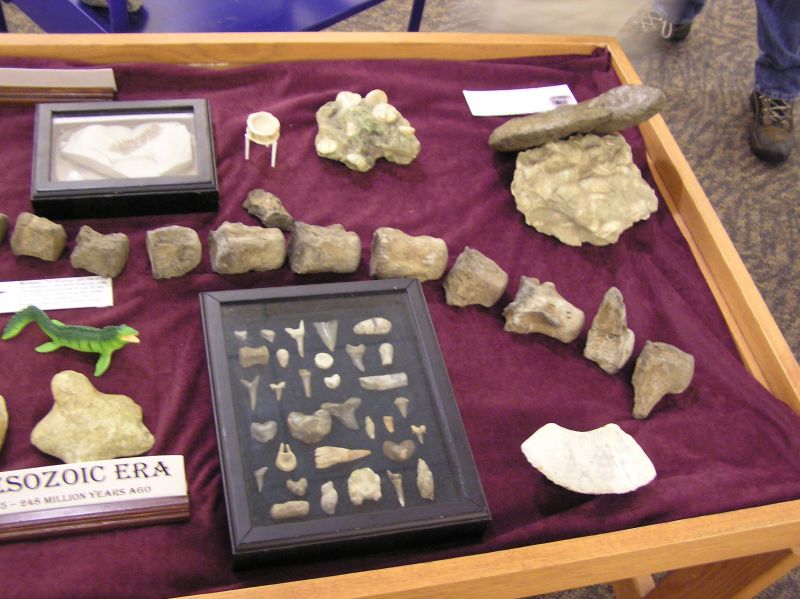
Cenozoic Era:
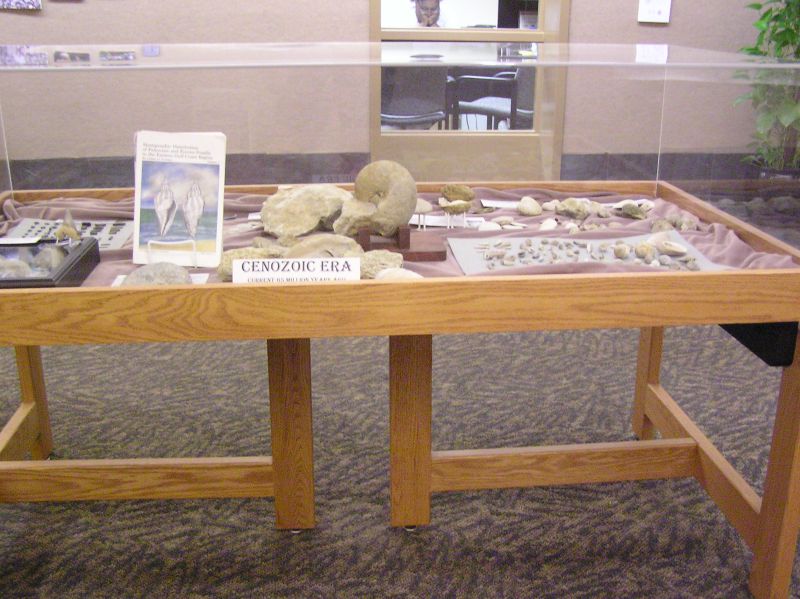
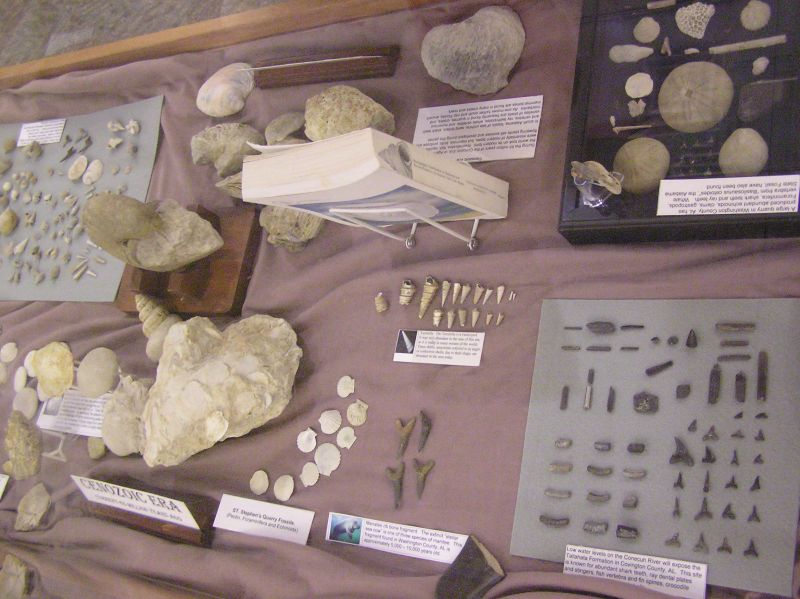

Hey, guys - what a great space for the new mosasaur banner!
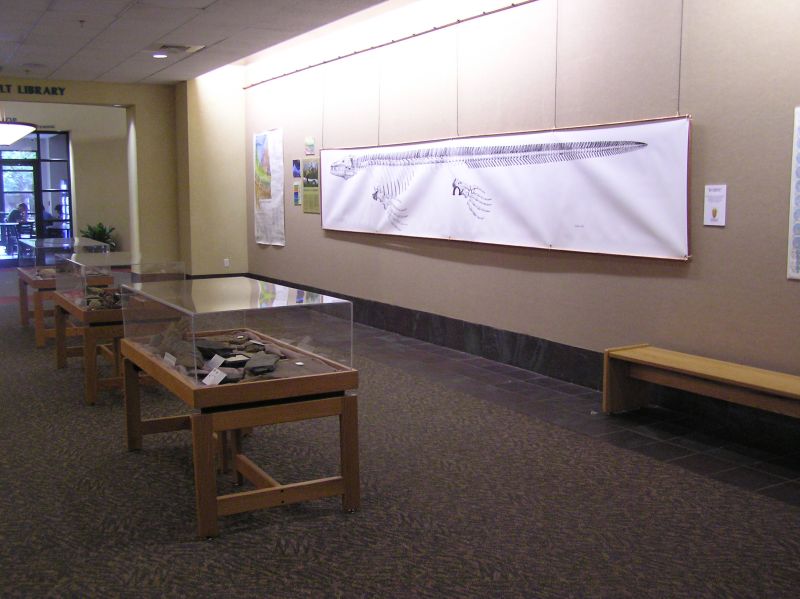
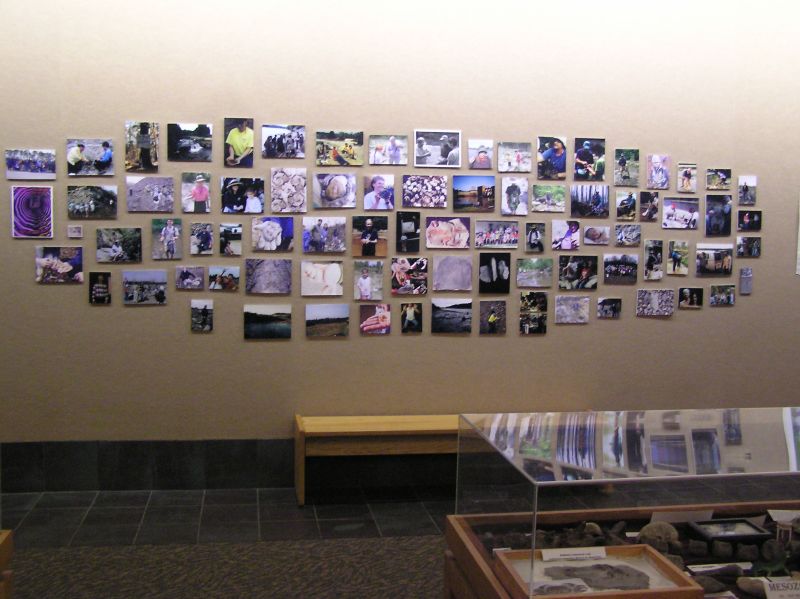
In the main gallery is a collage of BPS field trips over the years.
There are also two wall display cases at the entrance to the main library, one of which shows some of the tools we use in surveying, collecting and preparing the specimens, and another wall display case with a number of items related to the Union Chapel Mine.
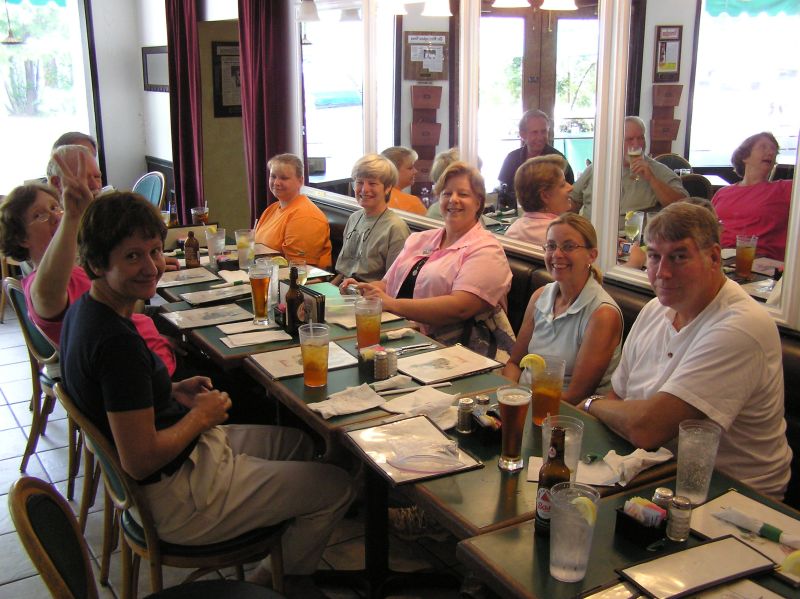
Today's worker bees, Bobby, Greg, Claire, Lea, Jan (behind camera), Jim, Mary Ann, Leisa, Vicki, and Michelle. Chris and Joseph left a few minutes earlier to go work their computer tech magic for someone. All of them deserve a great big THANK YOU!
At lunch, the discussion turned to the need some felt to visit the great outdoors again. When?? Well, like, tomorrrow? So a very quickly-organized "Scouting Outing" to Elmore County was arranged for the following day.
July 30, 2006 - Elmore Co, AL
Yesterday's exhibit setup was fun, but indoors. Several
people
wanted to go on a field trip in spite of the hot weather and the fact
they had an opportunity to get their "fossil fix" for the month
yesterday. The small group that was able to come on such
short
notice split into two so that more areas could be scouted.
One
group in a canoe had lots of good luck with some great finds (seems
Vicki had been to this site years ago, and remembered a stash of
permineralized wood hidden in a very inaccessible location), while the
other group drove off to try and locate additional access points,
without success. Well, nothing ventured, nothing gained. To complete
the day properly, some of us went home the long way, via the Wetumpka
astrobleme. Another great day in Alabama!
(all
photos on this page
courtesy Vicki Lais)
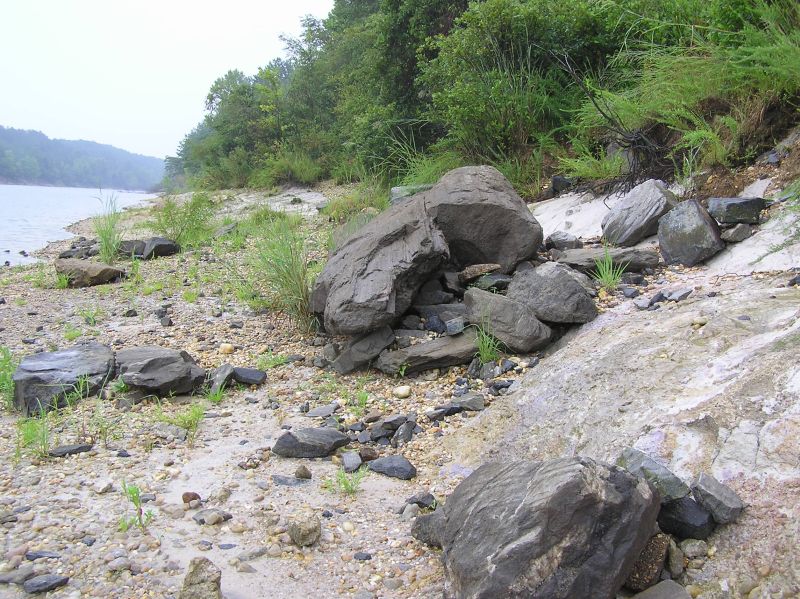
Large
tree on the shore.

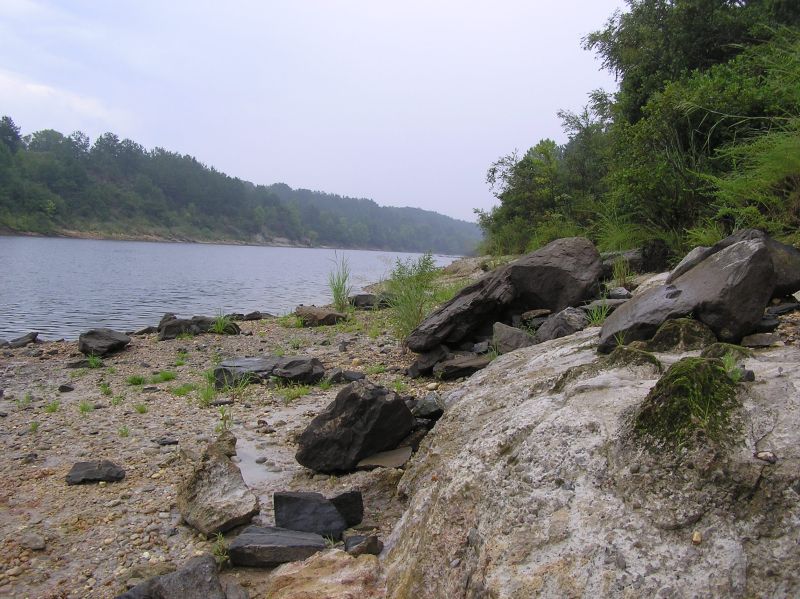
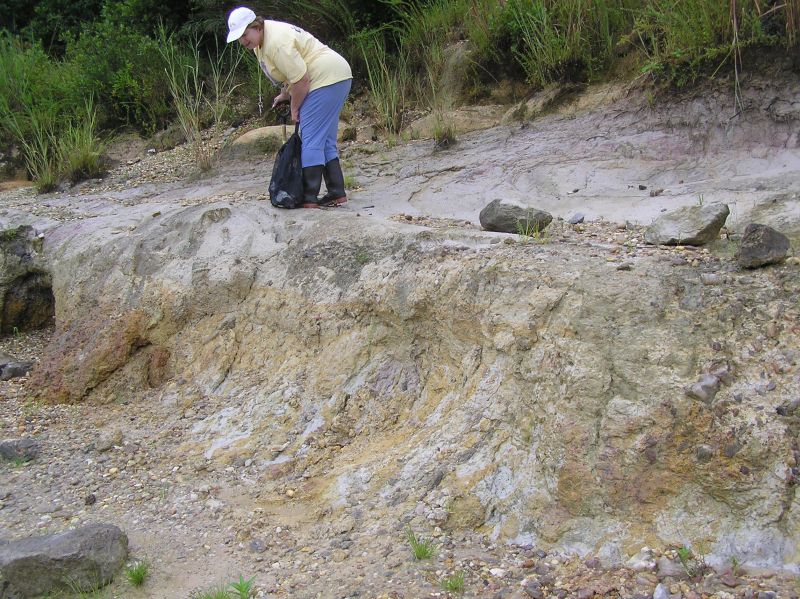
Leisa checking out the clay embankment.
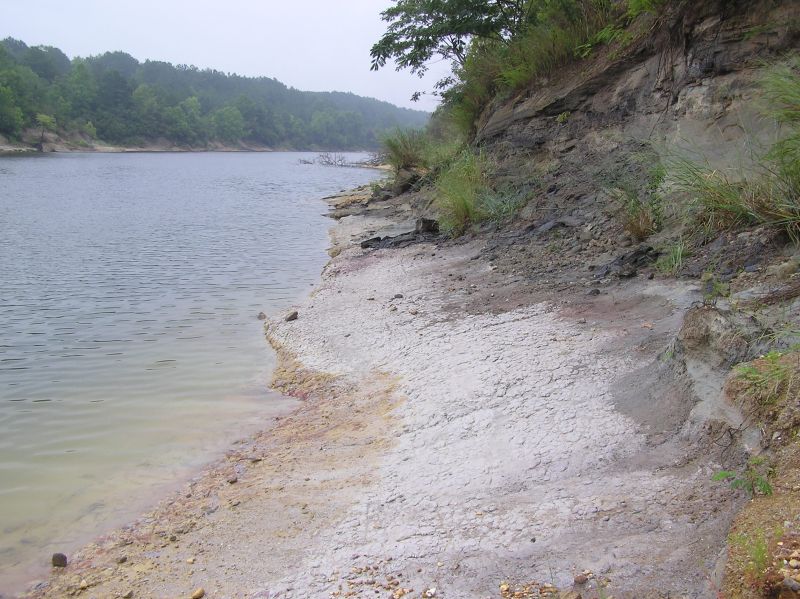
Parts of the shore were very slick clay/chalk material, and was quite
colorful in places.
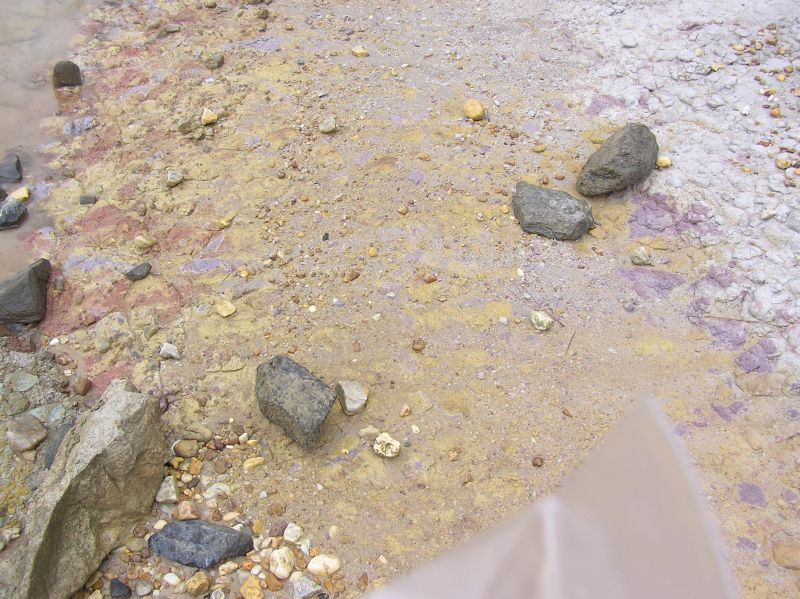
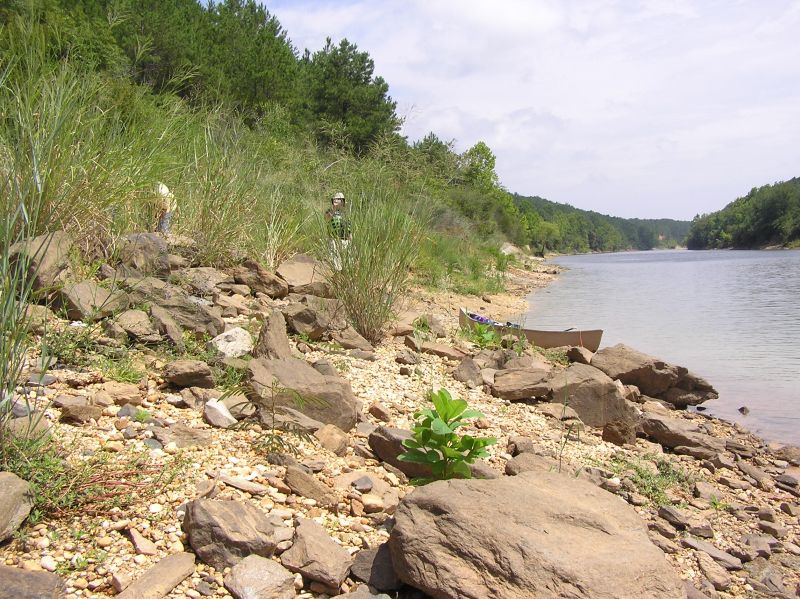
Leisa and Jan searching the opposite shoreline.
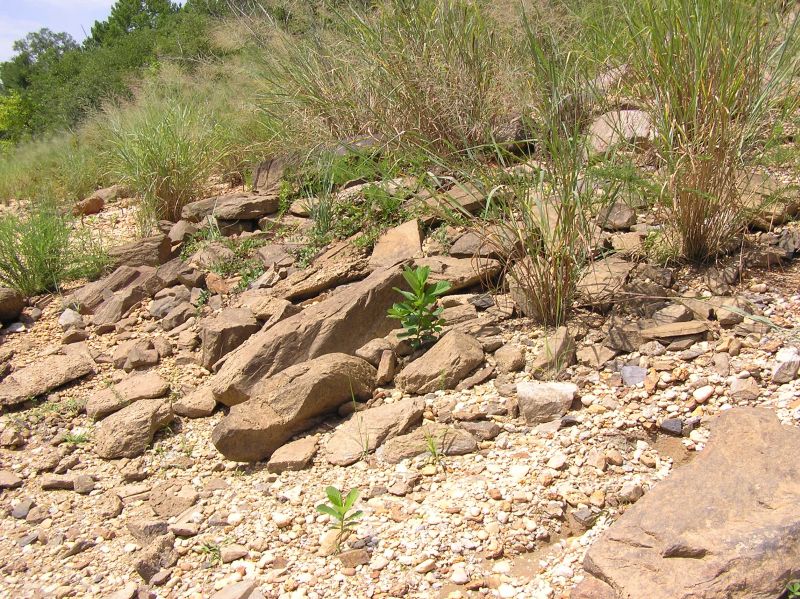
Most of the shoreline was quite rocky. Many of
these pieces are
broken
up pieces of permineralized wood, but either lacking detail, or too
heavy to lug back up the hill to the cars.
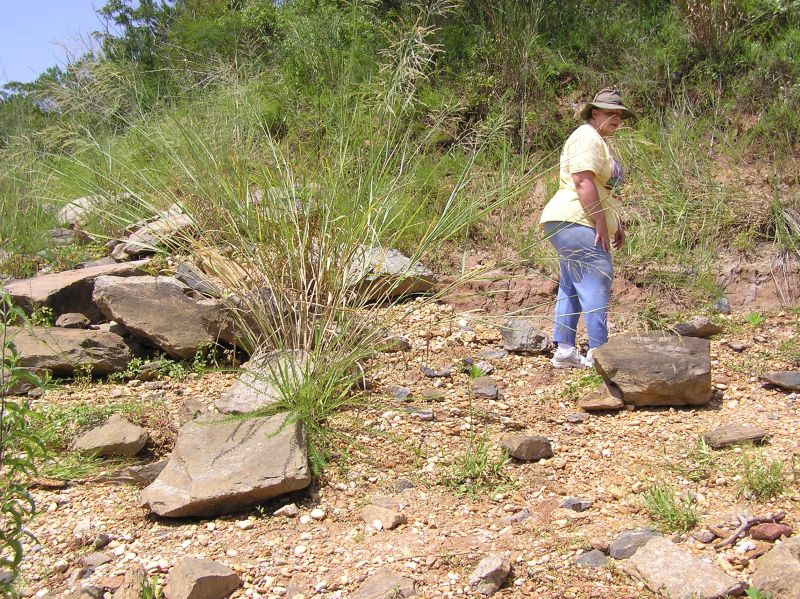
Leisa looking through the 1000's of rocks for that special specimen.

Leisa found some schist, with tiny garnets embedded it it.

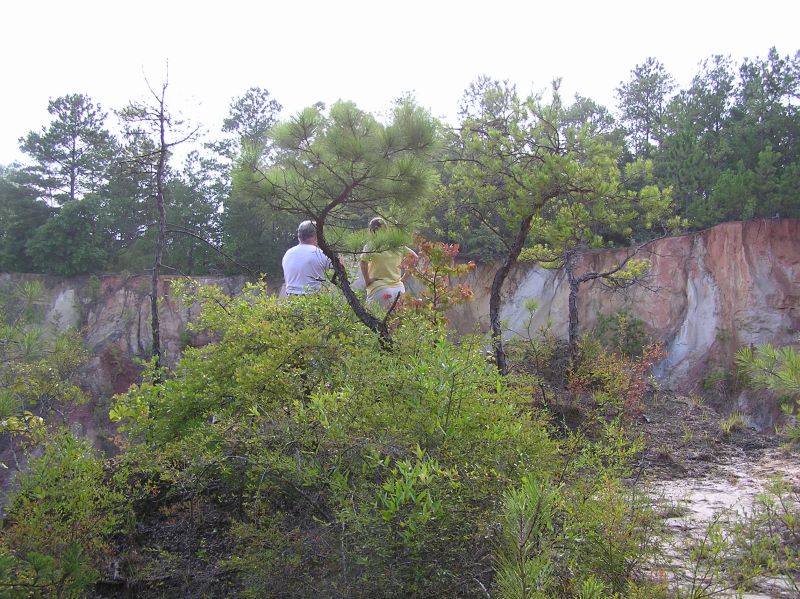
David and Becky check out the astrobleme site.
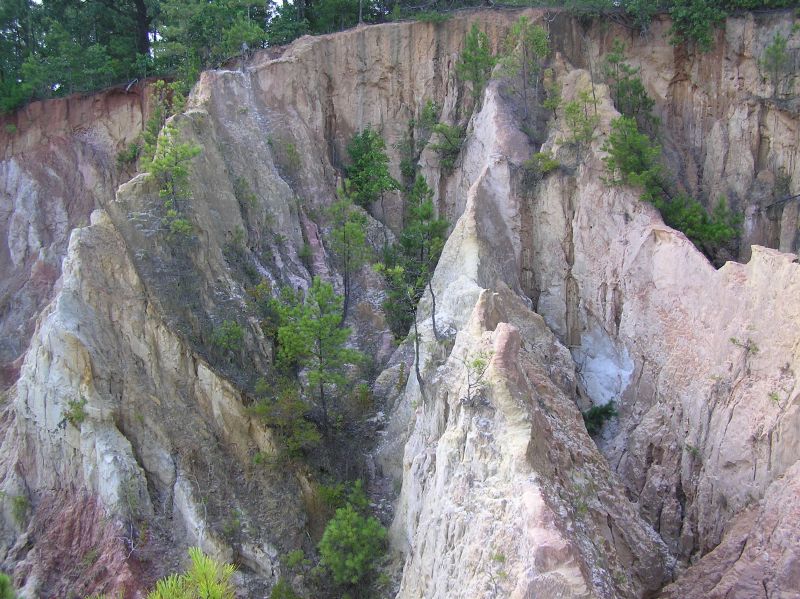
Layers that were heaved into the "wrong" sequence when the meteor hit.
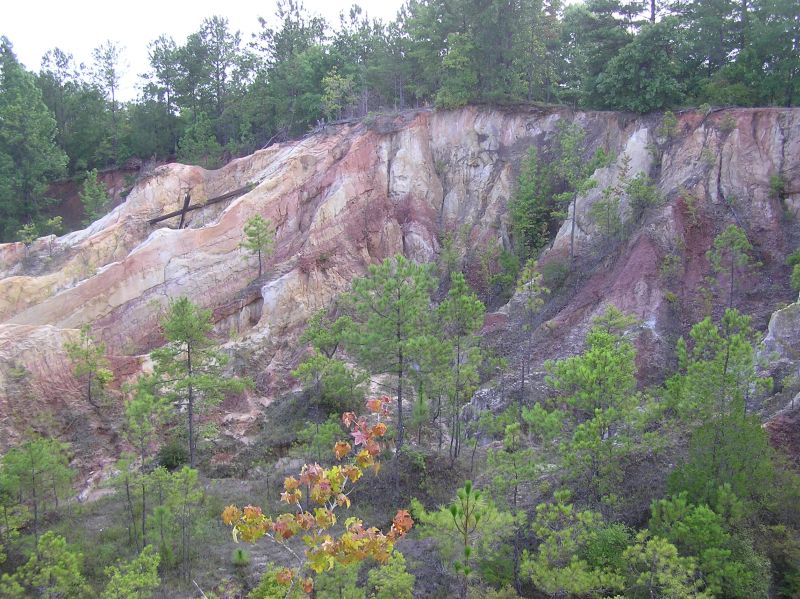
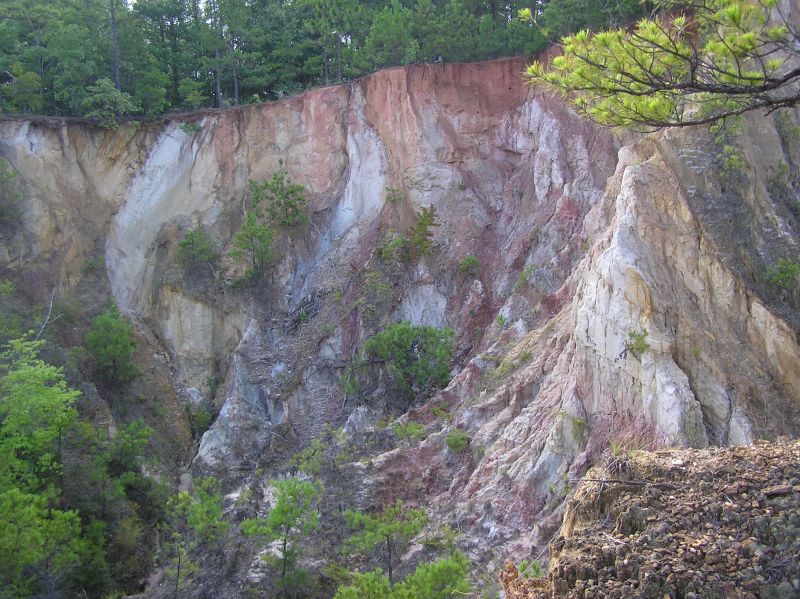
August 19-20, 2006 - Cretaceous Fossils, Lowndes Co, AL
We explored several small creeks in the area for the first time, where we found a number of crabs and other items, including clams, in nodules. Sandy found an outcrop in the first creek where she gathered numerous samples for her research.
The main creek yielded great samples for all: more crabs and clams, and unknown items in concretions. Sandy located another interesting outcropping and took more samples of microfossils. Michelle found some nice ammonite pieces, including one piece showing beautiful suture marks.
Since the Ebersole's needed to leave that night, our hosts set up an impromptu trip to a gully for the evening. Sandy and Jun wanted to see if this was part of the Ripley Formation (current thought is - probably not). Jun got a quick lesson on ATV driving and we hit the gully where we found teeth and bits of shells.
The next morning before the mist had burned off, we went to a different gully that had not been explored for several years, but did not yield many finds. After returning to camp, and meeting new arrivals, two groups were formed. One group went back to the creek where the crabs had been found, and another group consisting of Vicki, Michelle and Becky took off on a scouting adventure to explore yet another “new” creek. This turned out to be a great spot with some decent finds of brachiopods, clams, gastropods, exogyra, shark vertebrae, and possible pieces of bone.
Later in the day, diehards Becky and Vicki explored the main creek again, using a different access point and went a little ways up the stream until the creek got too difficult to navigate.
After two days of excellent collecting, all went their way home and look forward to the next field trip.
Edited by Vicki Lais
(Photos courtesy Vicki Lais)

On the way again! Riding to the site is almost as much fun as the collecting itself!
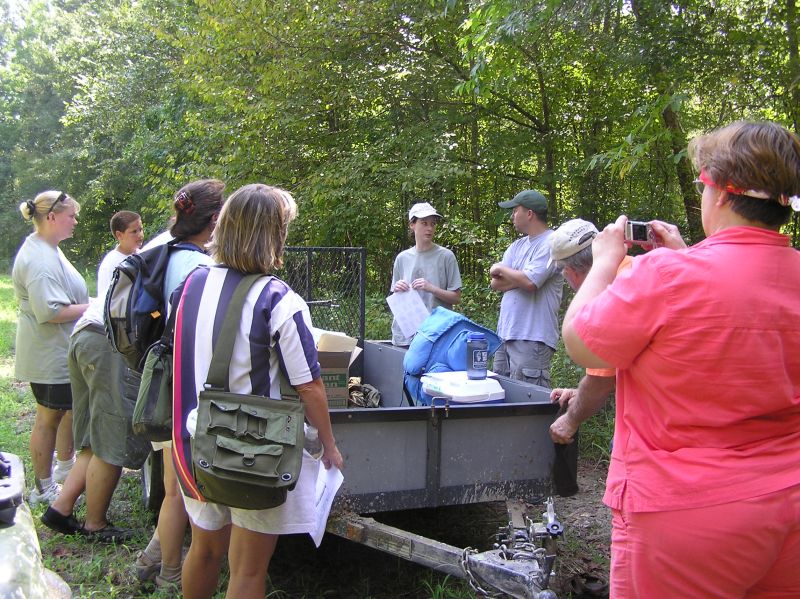
Sandy and Jun provide handouts and short lectures on the geology of the area.
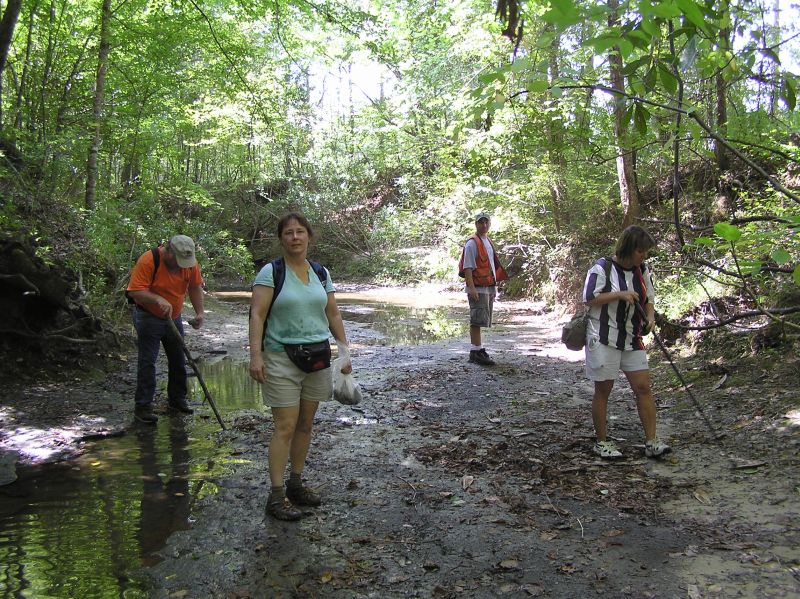
General area where several crab nodules were found.

This outcrop has numerous small bits of shell and other material embedded in it. Sandy took lots of samples for her research.
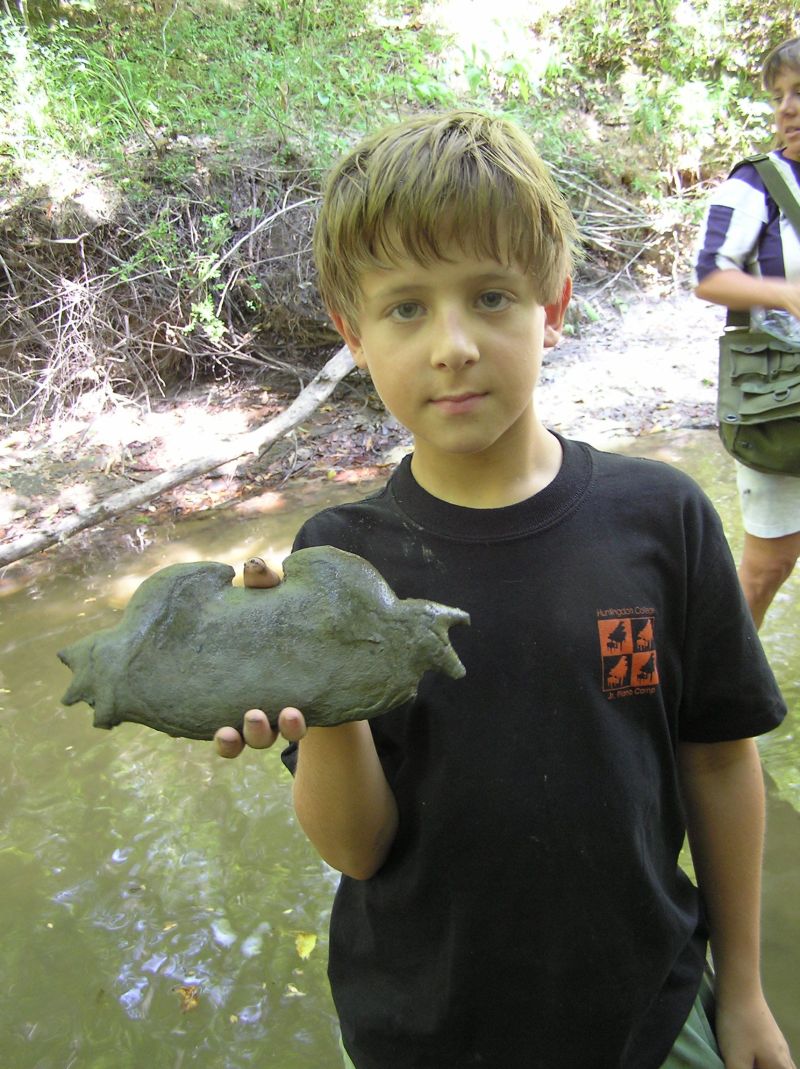
Richard found a very nice crab.
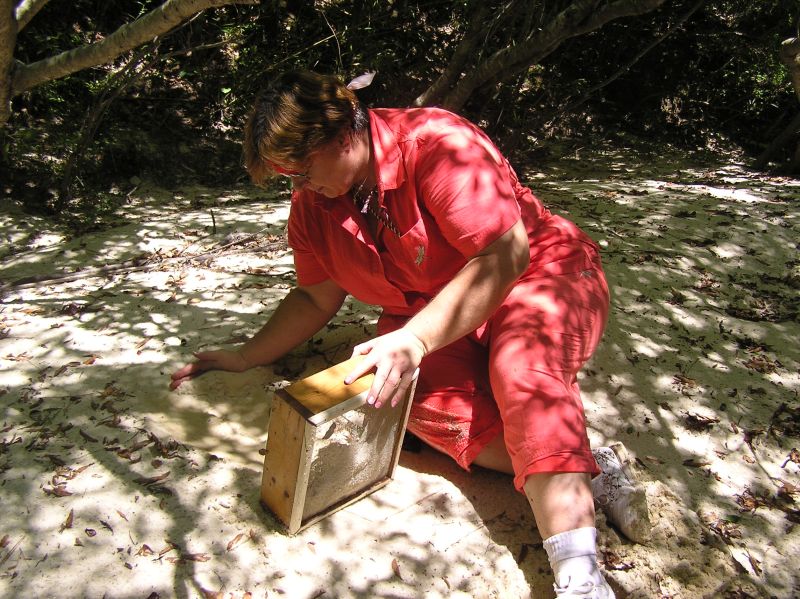
Leisa decides to sift the fine sand in her search for smaller fossils.
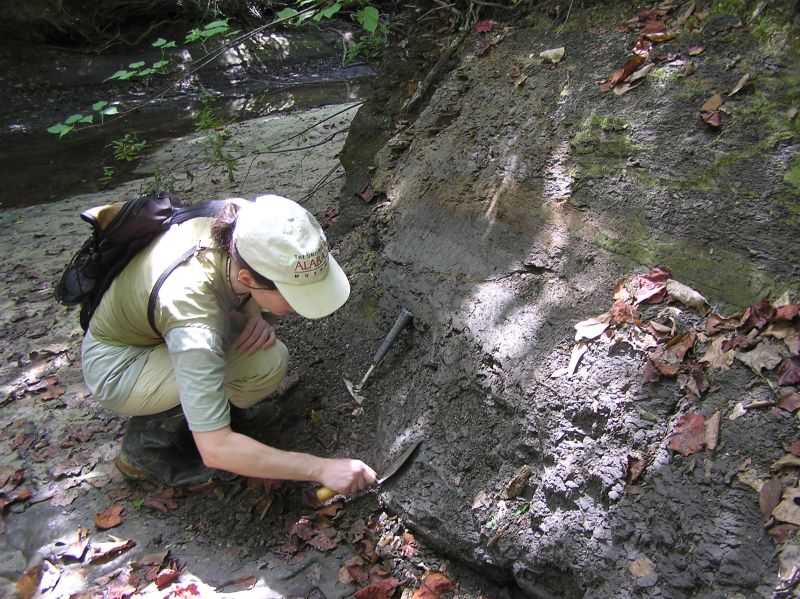
Collecting samples for research.
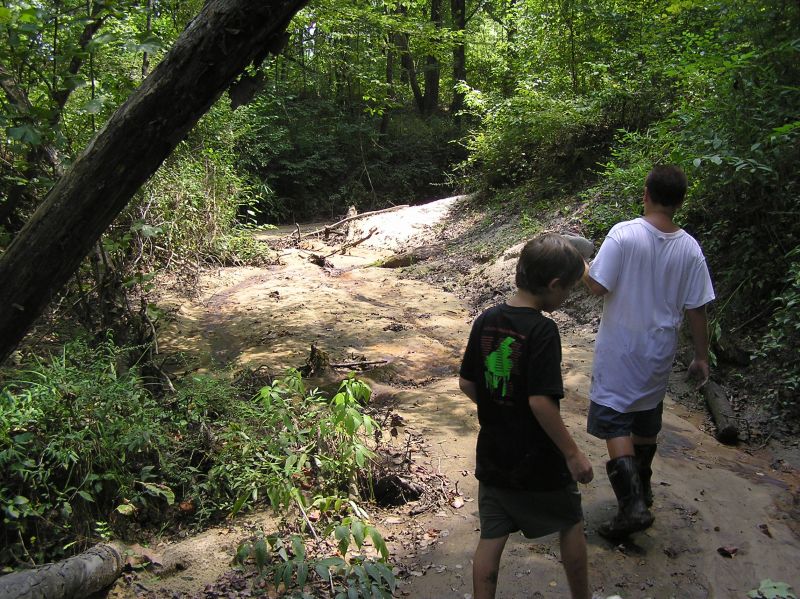
A dried up creek we explored in the area.

We explored the main creek a good long while.
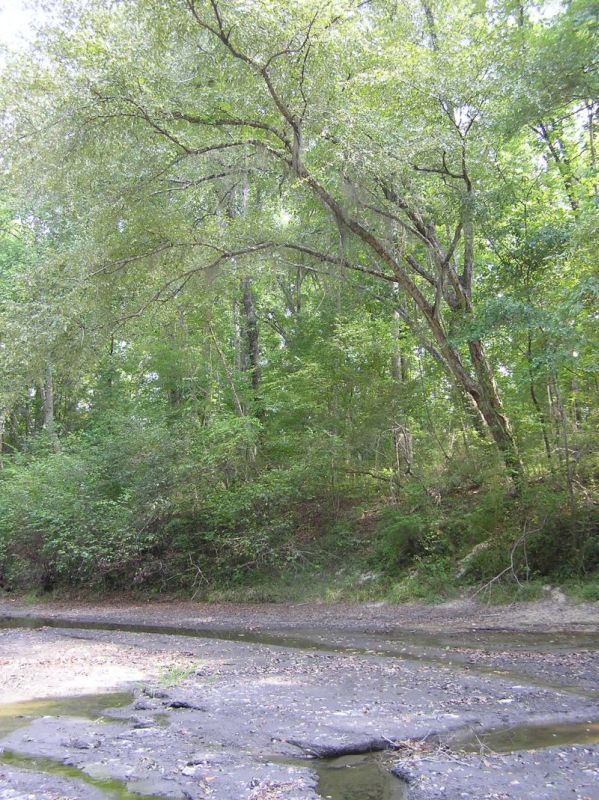
Nice view of the creek, which is almost dry in some areas due to the lingering drought. Notice the Spanish moss hanging from some of the trees.

Aaron found a nice, large crab.
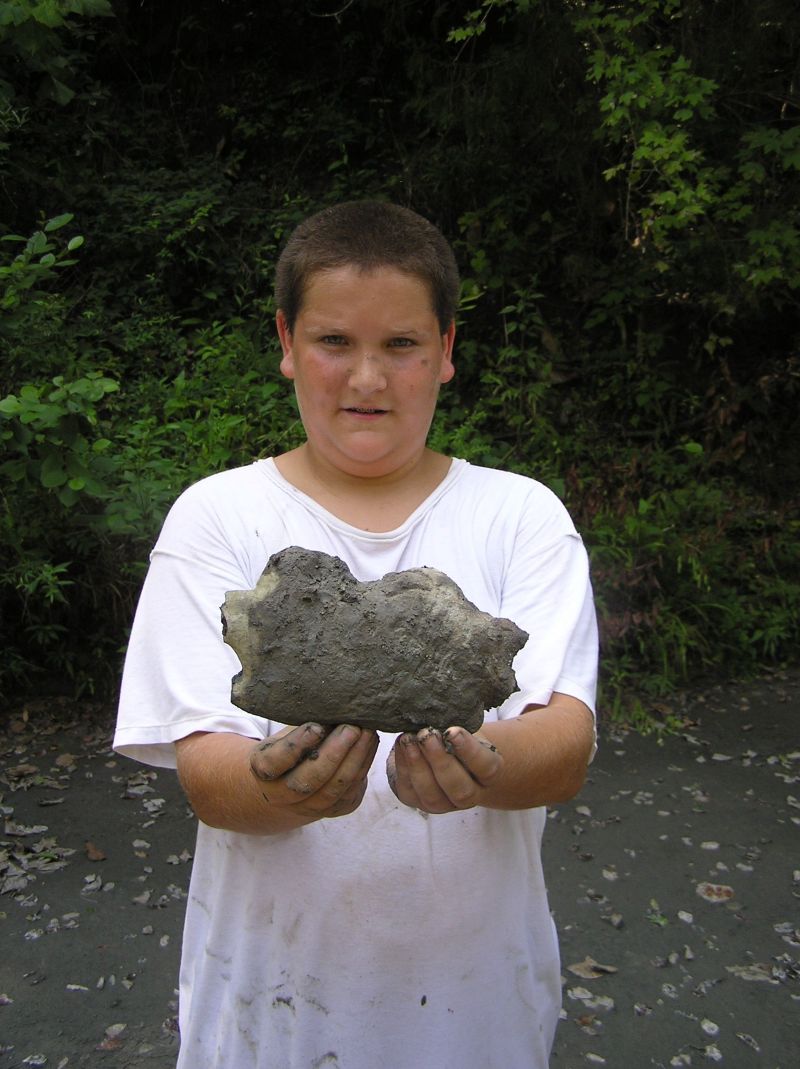
Closer view of Aaron's large crab nodule.

Richard is digging out a very nice crab.
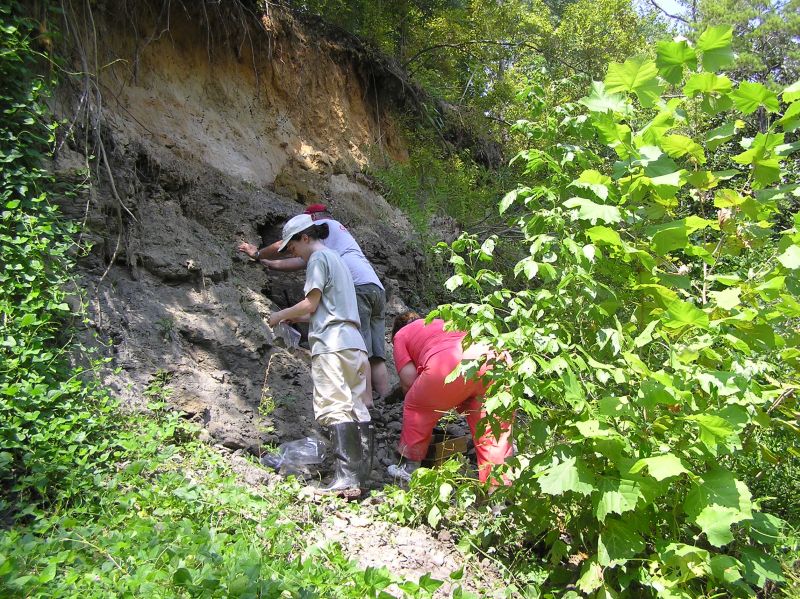
Another outcrop that Sandy found interesting. Many soil samples were taking from this location.
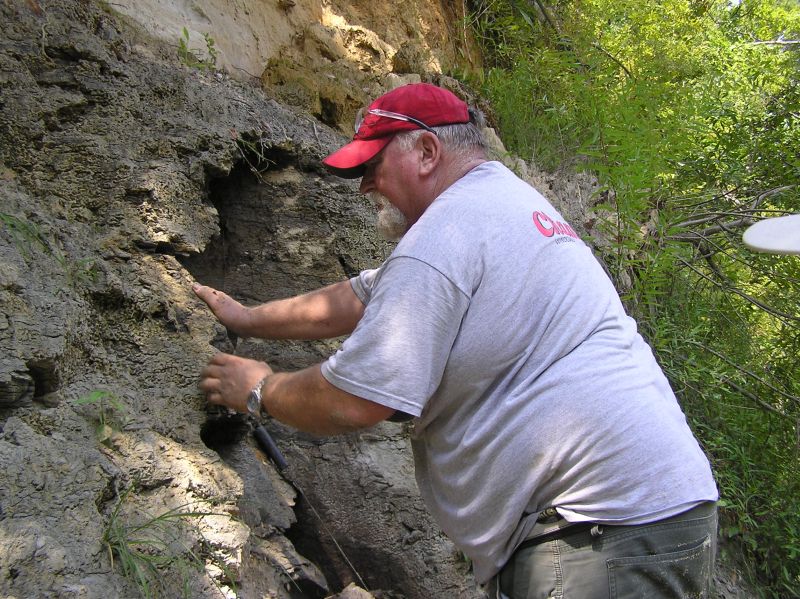
Greg is assisting in collecting the soil samples.

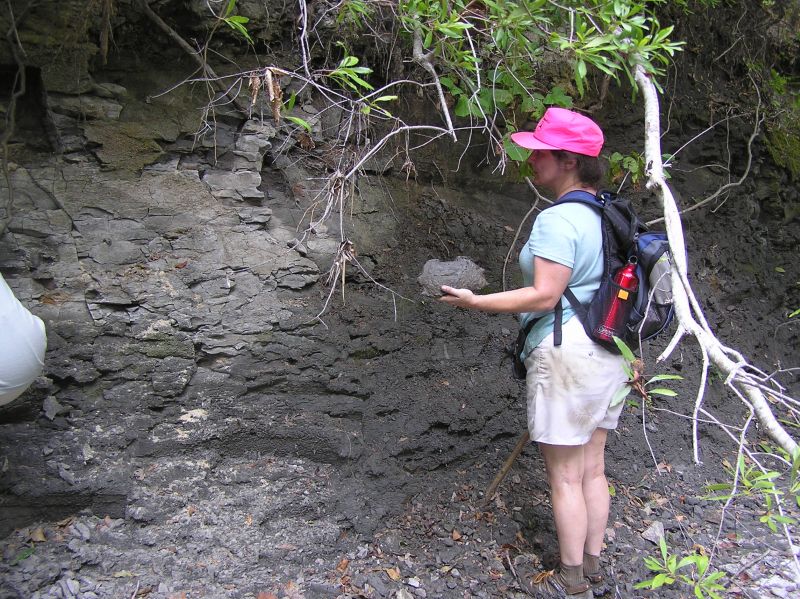
Becky found this nice crab nodule.
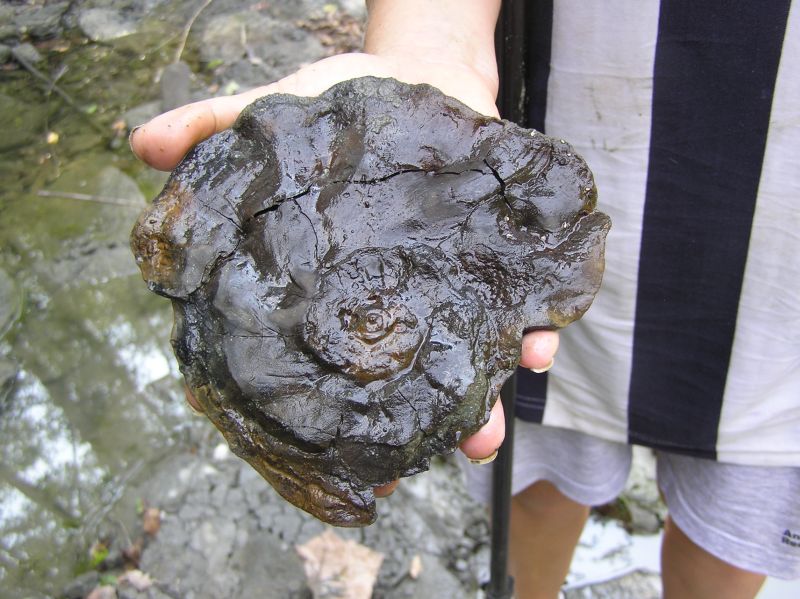
Michelle found part of an ammonite.

More ammonite found by Michelle.
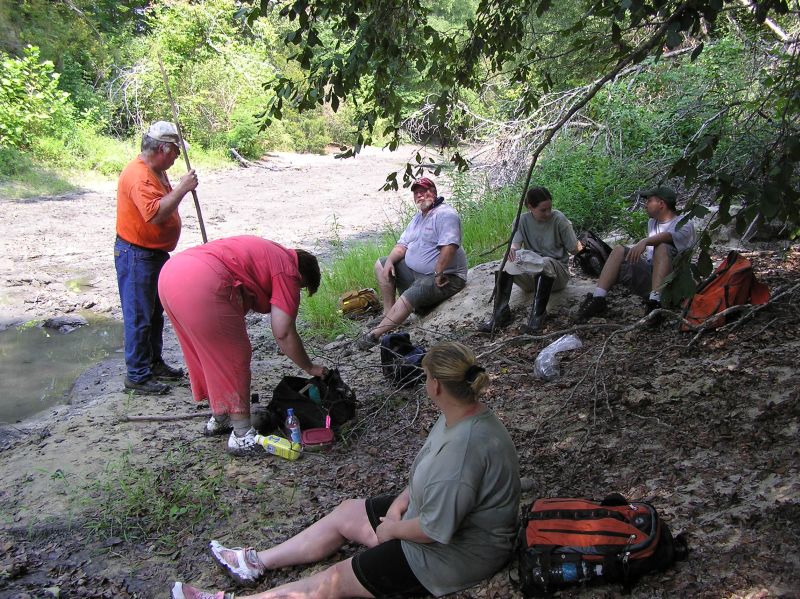
Taking a rest after a long, hot day on the creek.
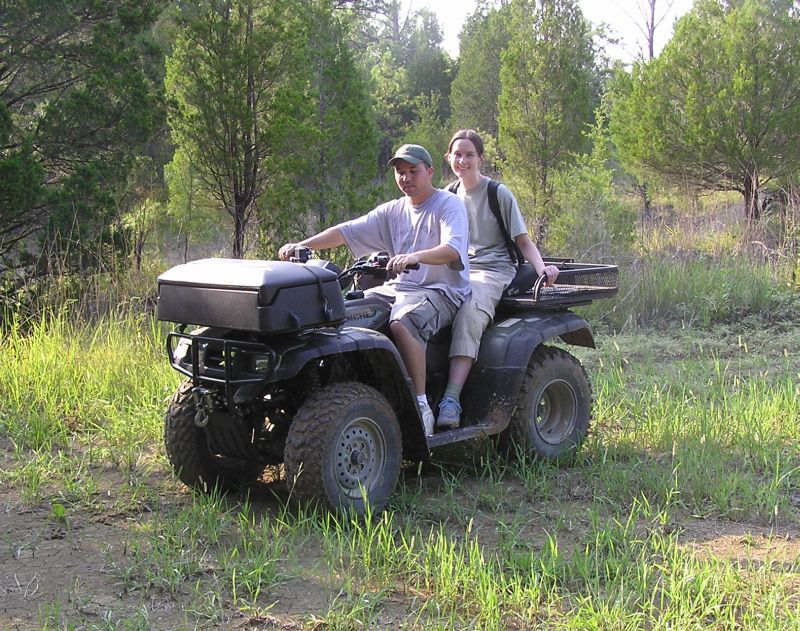
Jun and Sandy probably had more fun than the rest of us getting to the next collecting location - this was Jun's first opportunity to drive an ATV!
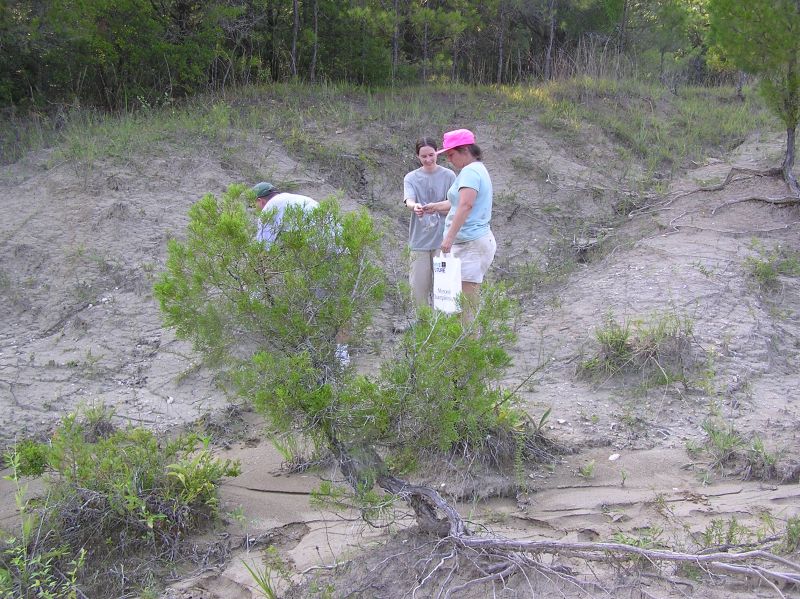
After a bit of a rest, we decided to explore a gully late in the afternoon.
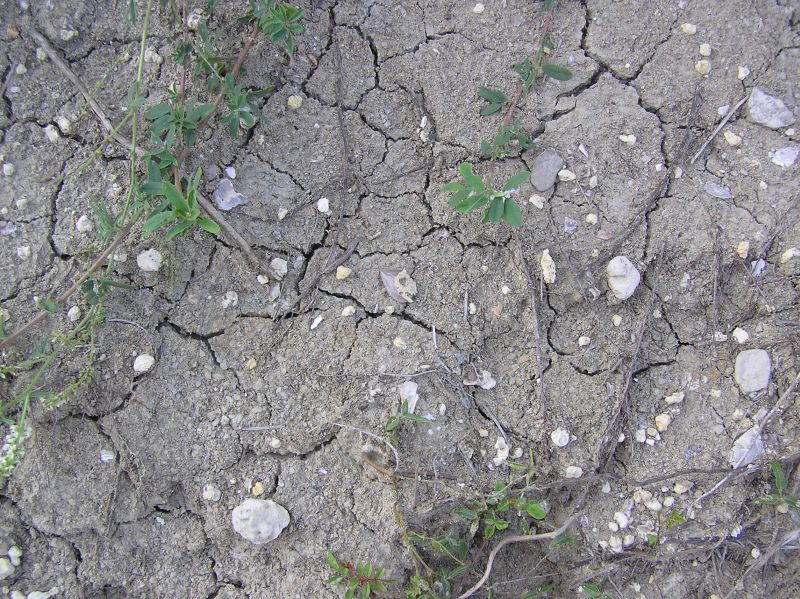
This is how the gully looks when you get closer to the ground - a lot of shell bits and pieces. Can you find the shark tooth in this picture? It takes a while to get one's eye attuned to the coloring and patterns.
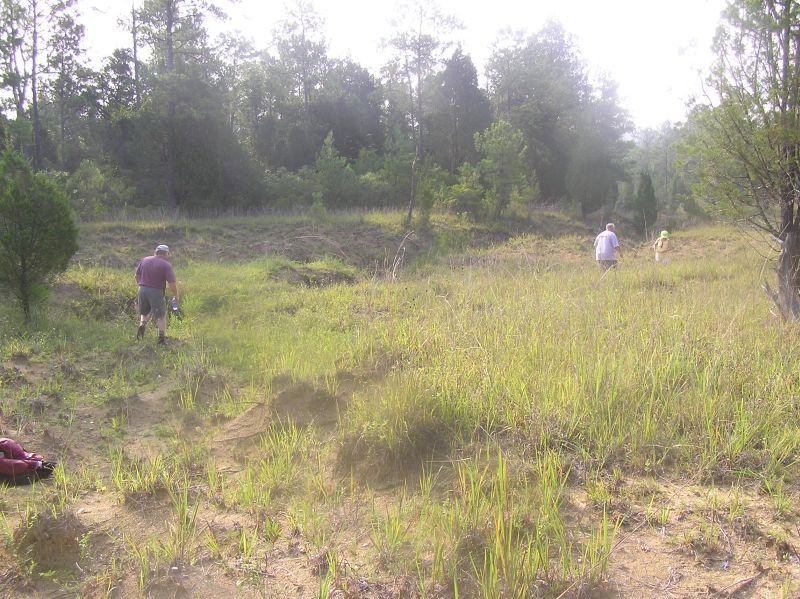
Early Sunday morning, we headed to a gully that had not been surveyed in several years. No items of interest were found here, mostly bits of shells and broken nodules, and a lot of caliche.
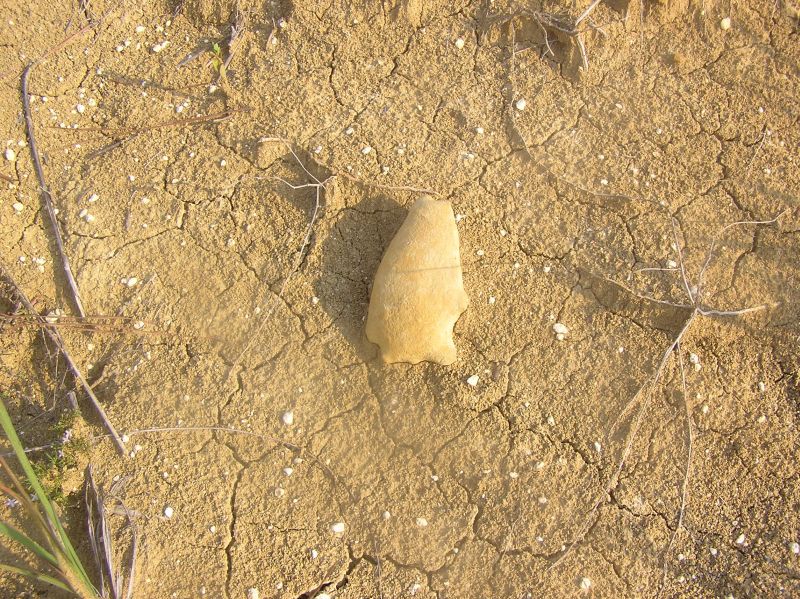
Closer view of the ground and a nodule.

After the gully trip, one group headed back to the main creek for crabs, and the Three Musketeers, Becky, Vicki, and Michelle, headed off for an adventure to find and scout a new creek.
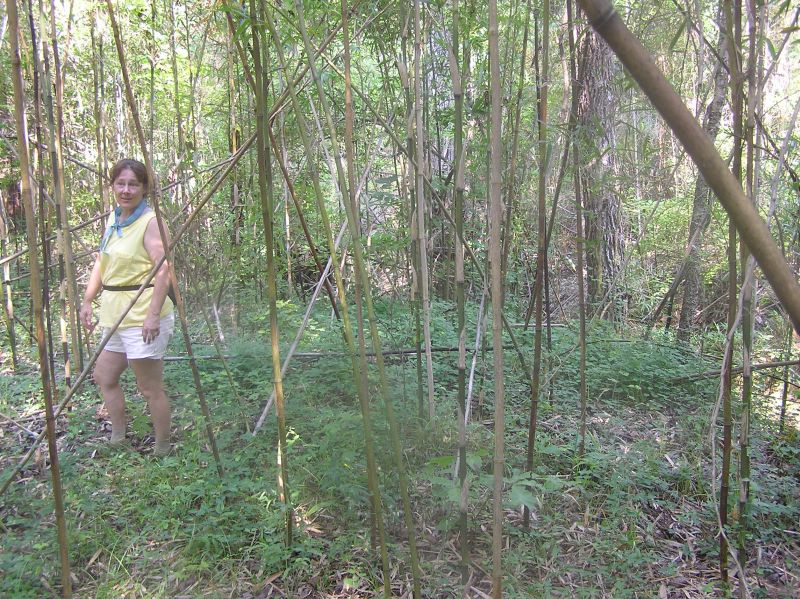
Becky amongst the fishing poles.

Finally, we made it to the creek, which was littered with shells, primarily exogyra.
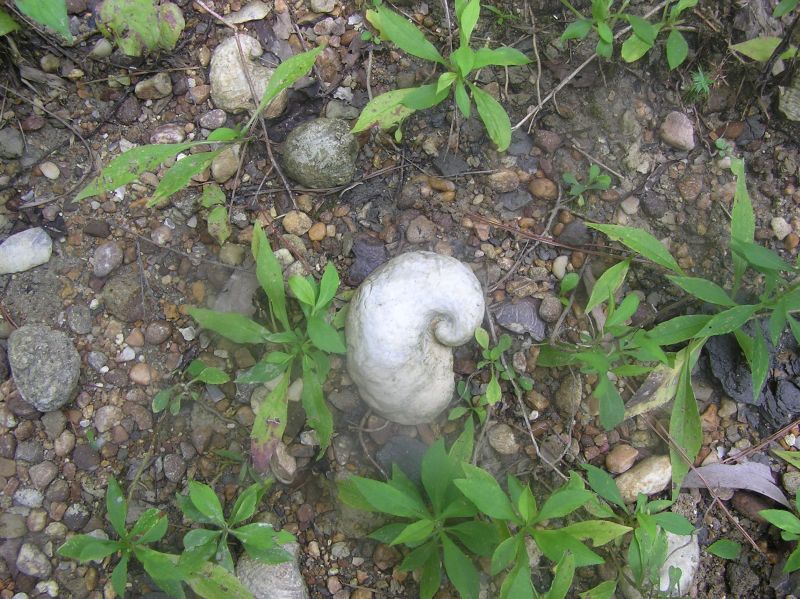
Exogyra.
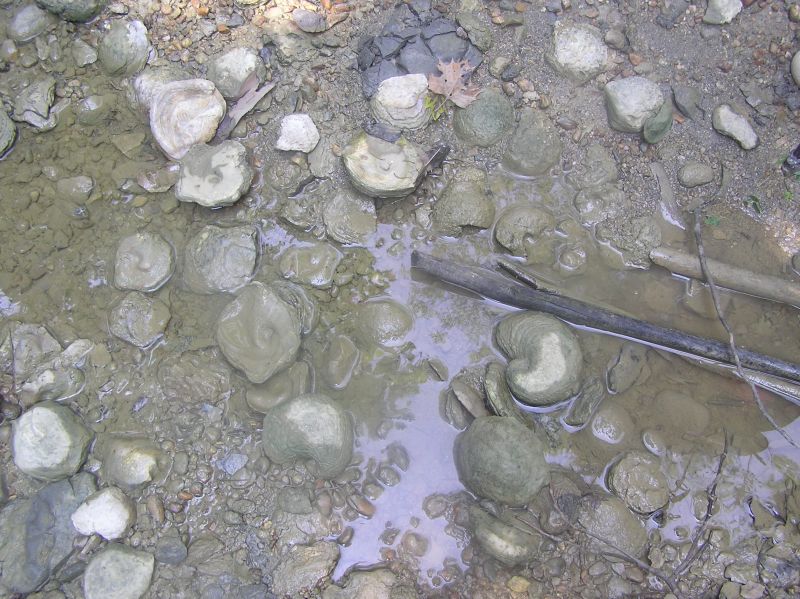
More exogyra pieces. The slightly circular pieces with the dimple in the middle are the other half of the exogyra, though we did not find any articulated specimens.
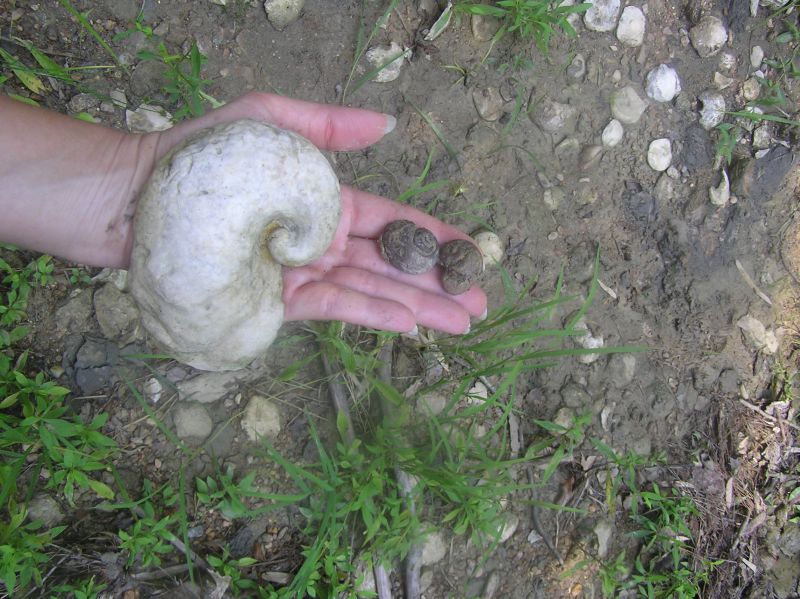
Exogyra and a couple of gastropods found by Vicki.
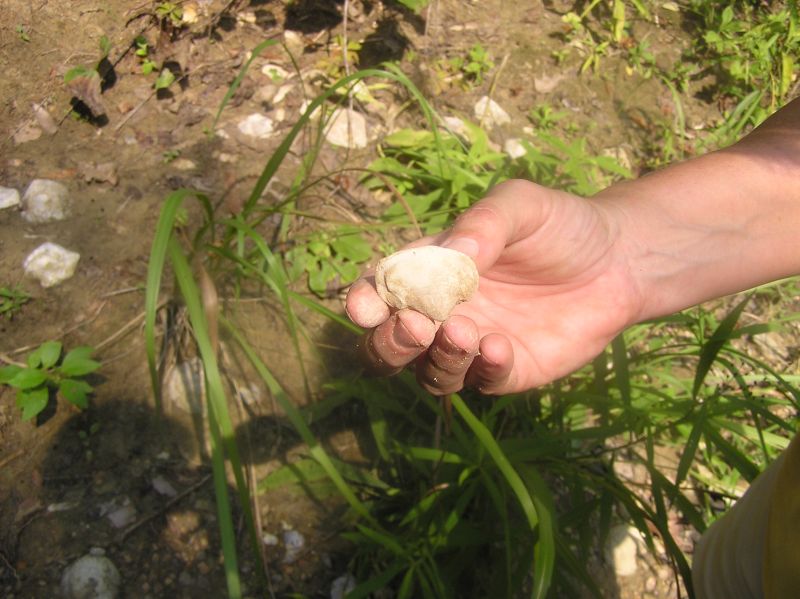
Nice bivalve found by Becky.
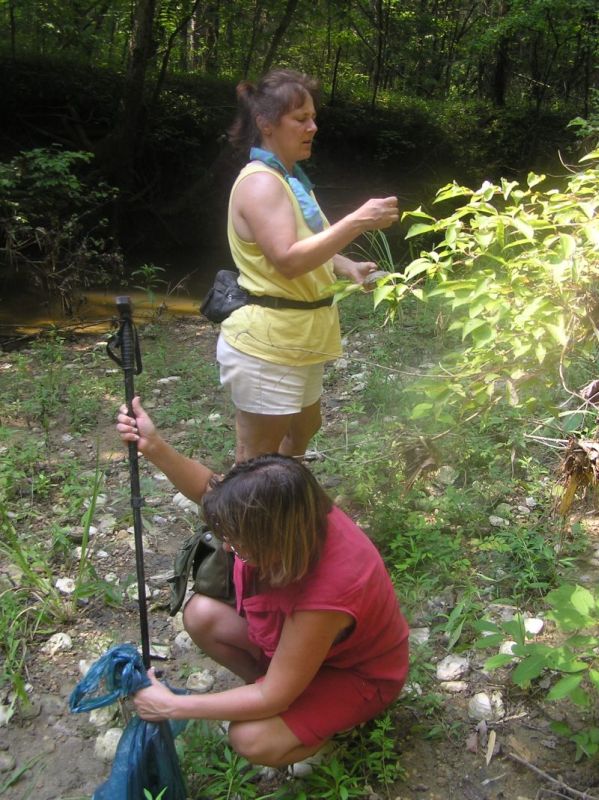
Michelle and Becky looking for fossils.

Small vertebra found by Vicki.
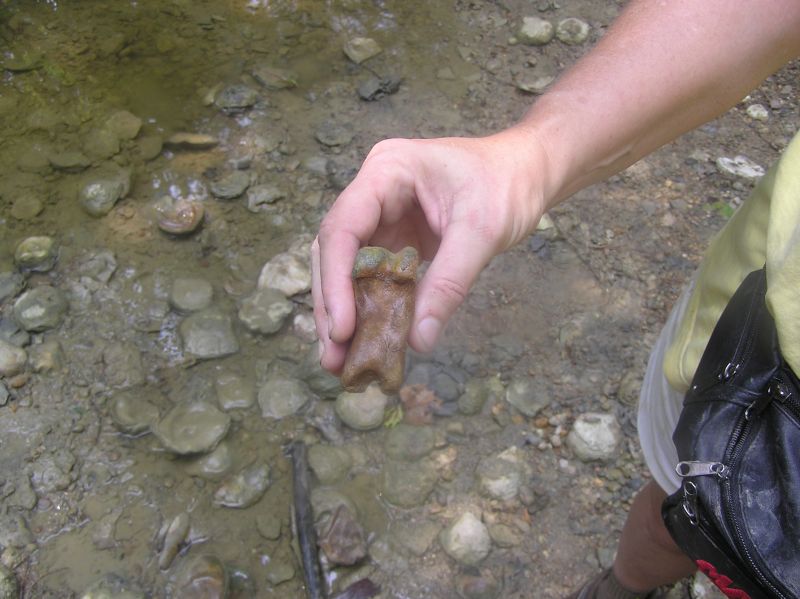
Bone, but unfortunately, it appears to be recent.
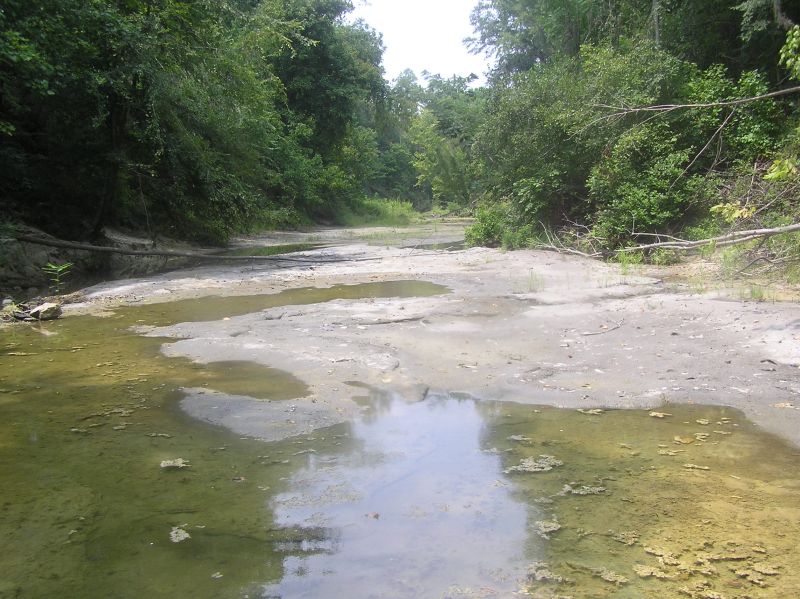
Last creek to be explored.

This rock filled with shells was found at this creek, but not much else, so all headed home.
August 27, 2006 - Fossil Exhibit, Homewood Library, Jefferson Co, AL
The main hall held several exhibit cases filled with Alabama fossils. But what if you want to touch and hold the fossils? So in the auditorium, BPS had two tables covered with fossils that visitors could pick up and examine closely. The scanning microscope proved to be a big hit for the “close examination” part. Plenty of food added to the good time. A great video on view, “The Making of ‘Walking With Dinosaurs” was a big hit. At one point during the day, Greg gathered a crowd around him, and took off for the main exhibit hall, where he did a quick presentation regarding the exhibit. But the biggest hit of all was the sand pile outside which had been liberally salted with Alabama fossils to “discover.” Kids and grown-ups alike dug in and had fun! We were delighted at the crowds who showed up and the interest shown in the paleontology of Alabama. There was a lot of surprise expressed that Alabama has such a wide variety of fossils.
The annual exhibition and reception gives us a great opportunity each year to share our knowledge, collections and enthusiasm with the Birmingham community. Huge thanks are due to the Homewood Library for providing such a wonderful facility and helping make this all possible!
--Edited by Vicki Lais
(photos courtesy Vicki Lais)

Setting up the fossil tables and video. Greg (far left) was coordinator of the Exhibit.
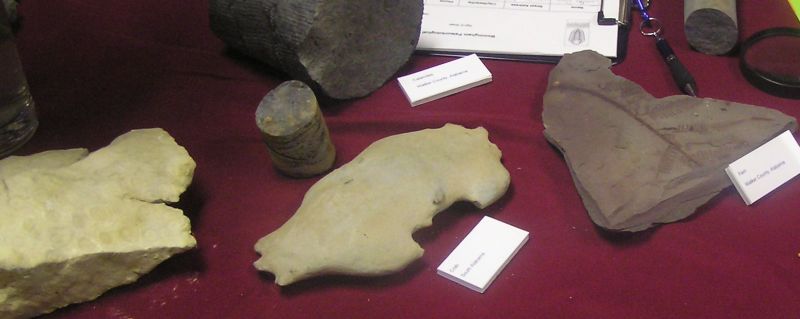
Some of the fossils on display.
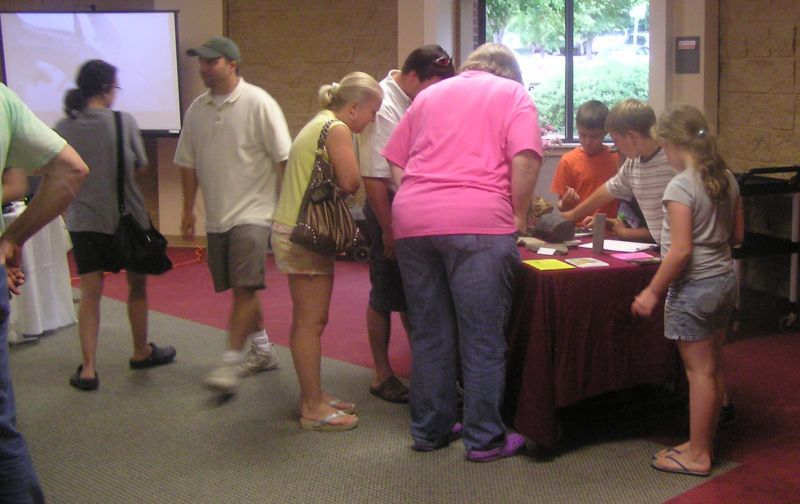
Visitors examine the fossils.
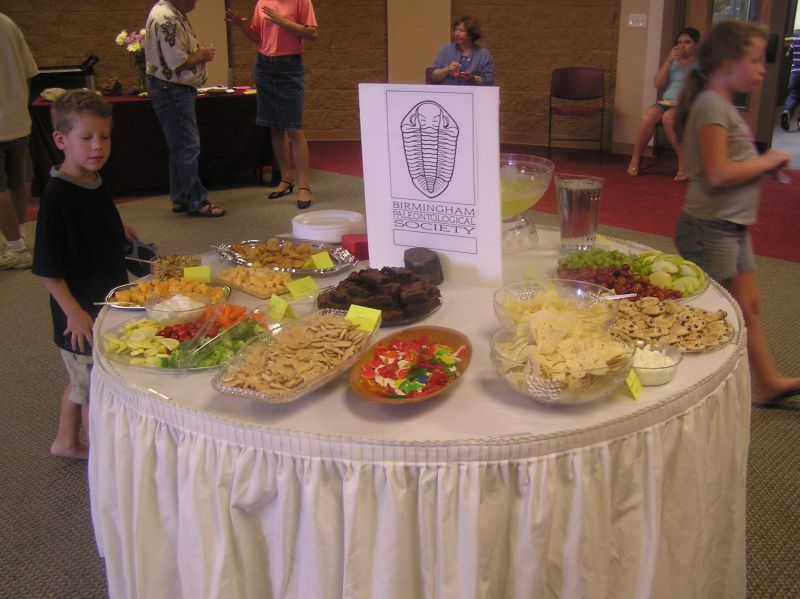
Carole handled food and publicity for the event, and did a super job! Thanks, Carole ! ! ! Mary Ann and Leisa also donated some home-made goodies - those trilobite cookies and brownies sure went fast, didn't they !
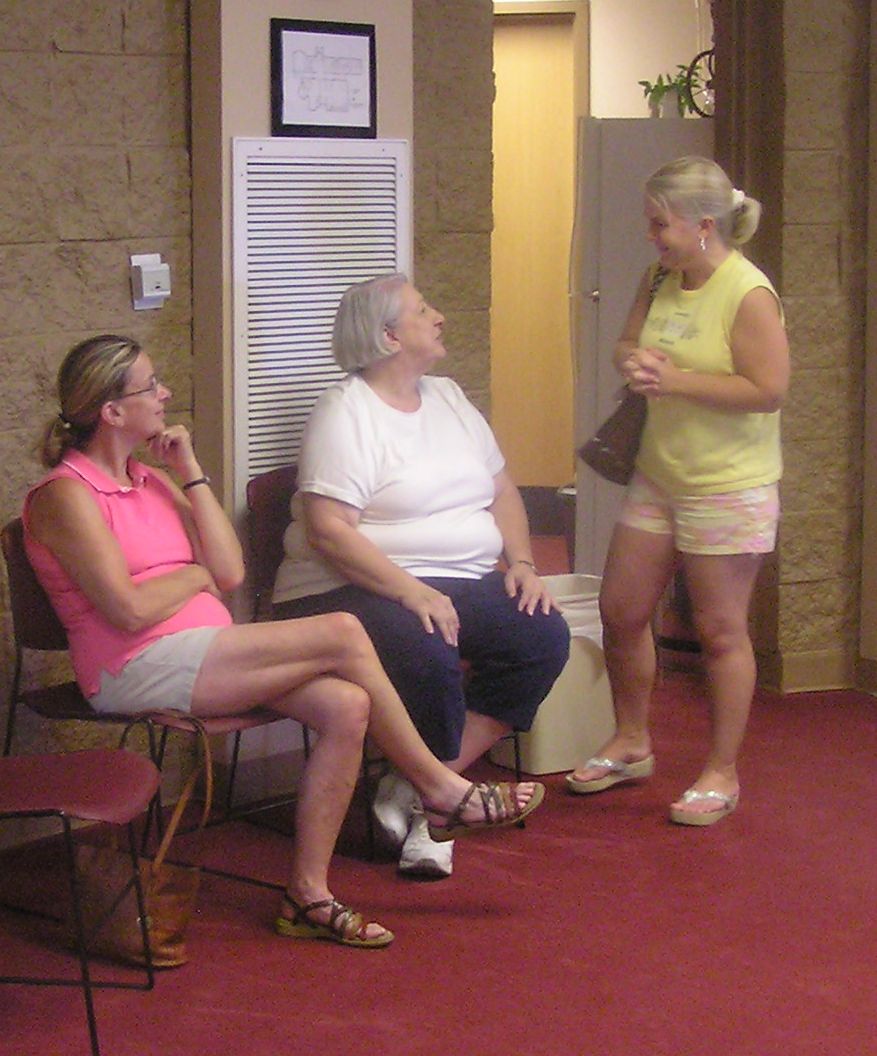
Mary Ann and Carole talking with a visitor.
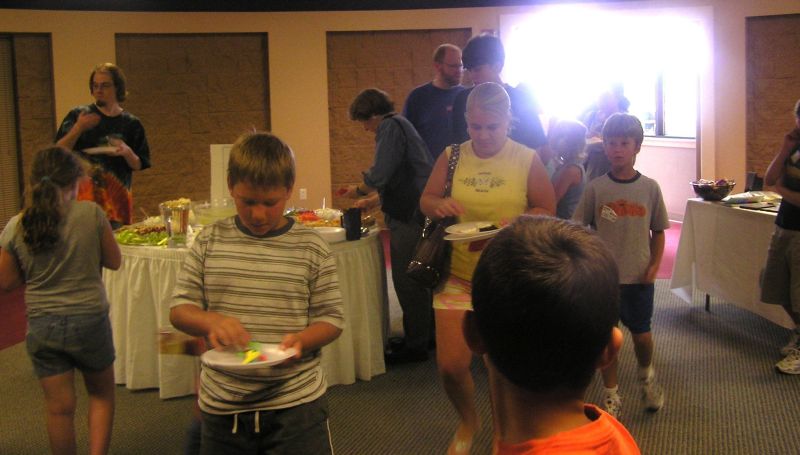
And they examine the snacks even closer !
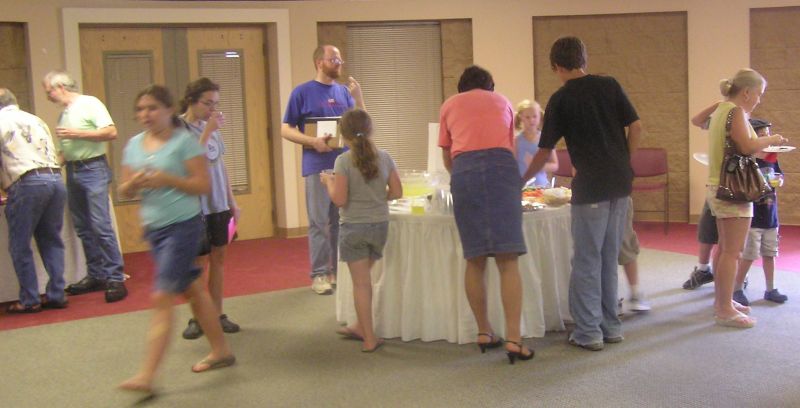
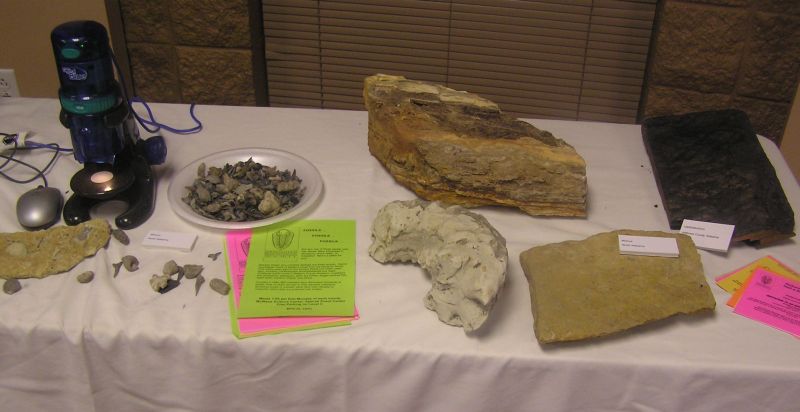
More fossils on another table, and a digital microscope to get a close up look at some of the microfossils.
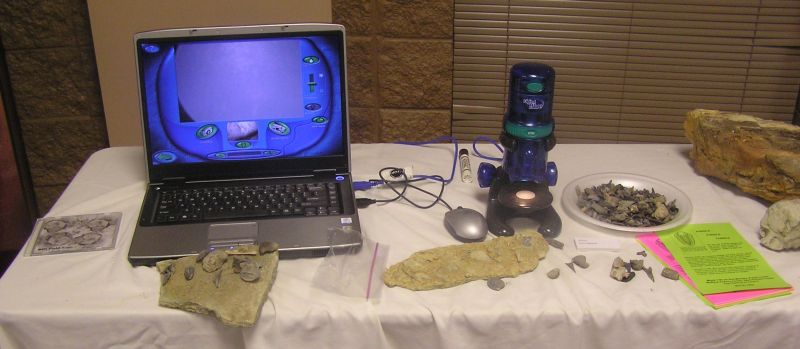

Looking at images under the microscope (shown on the laptop screen).
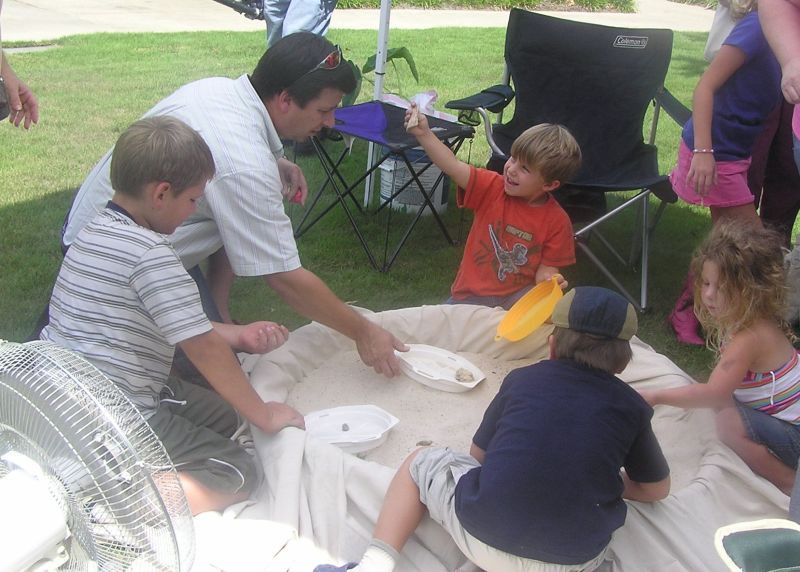
As interesting as it was inside, the sand pile outside was where the action was! Kids of all ages got to search for their very own fossil in the generously seeded sand box. Fossils from all over Alabama were donated by BPS members for the day's event.

It got even more interesting when Channel 6 news showed up to see what all the fun was about!

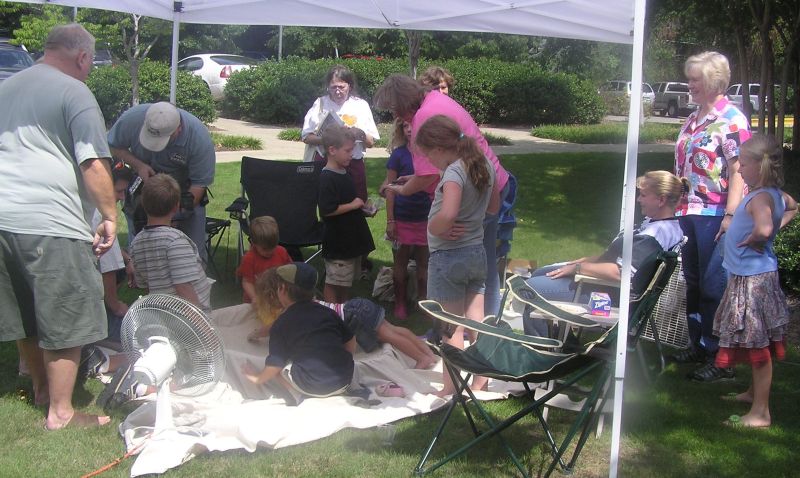
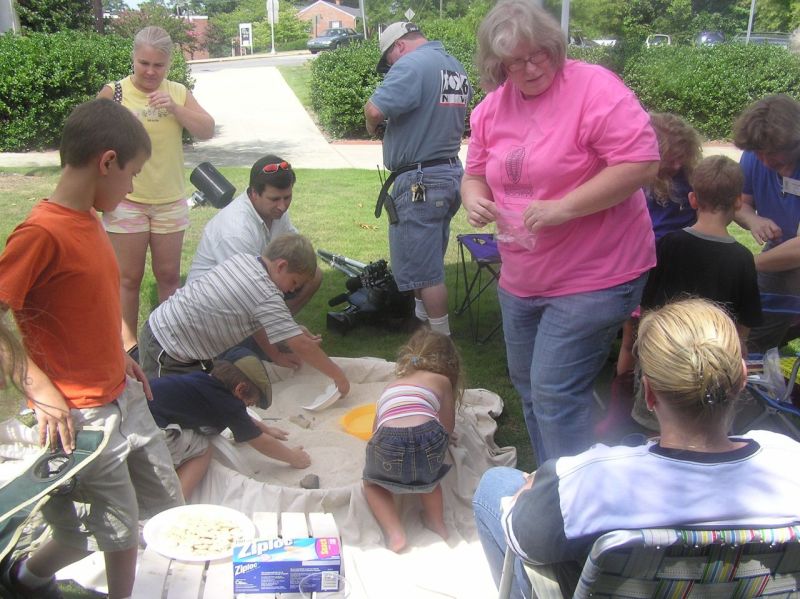
Martha, in pink, was coordinator of the sand pile activities.
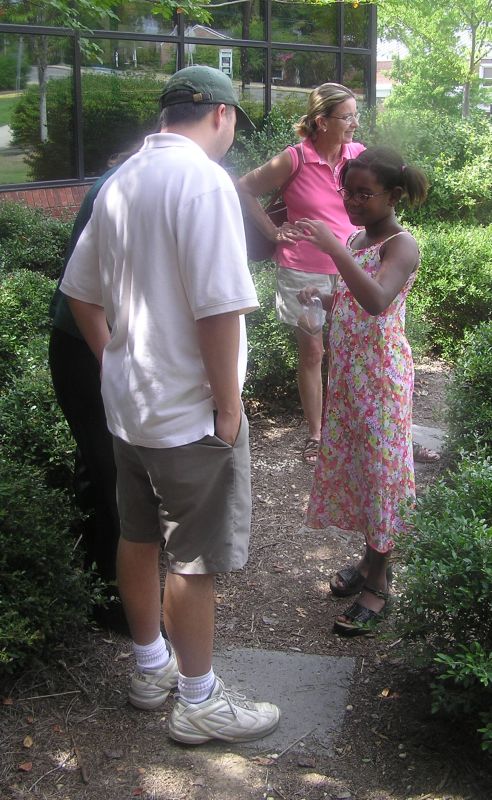
Young lady showing off her find to Jun and Sandy.
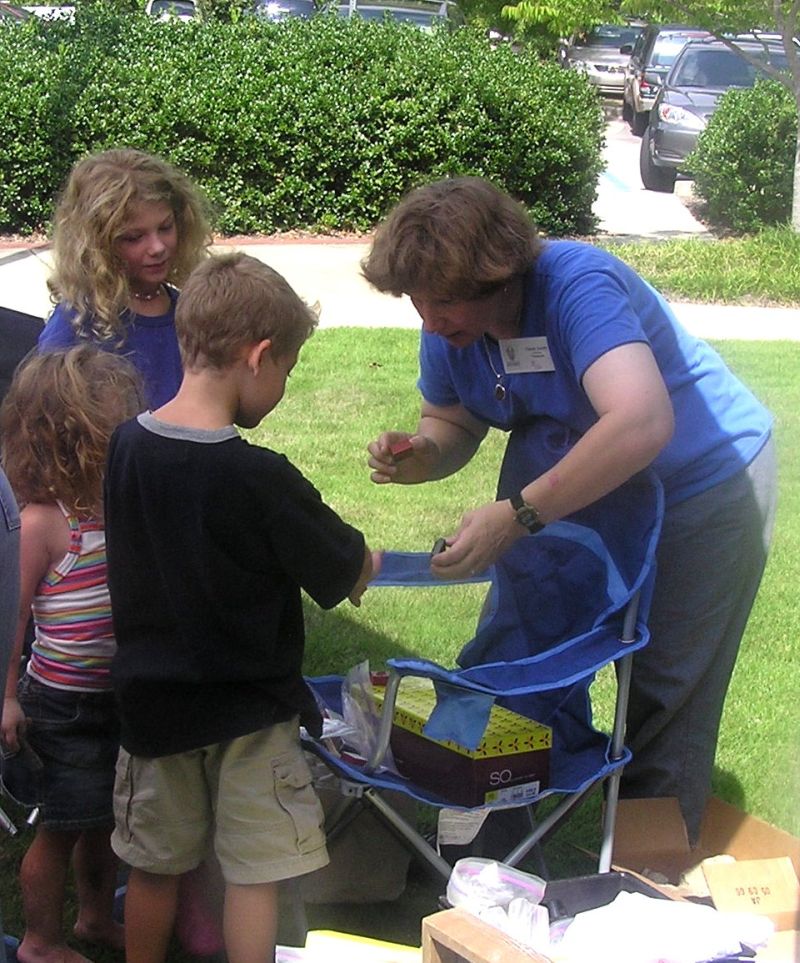
The dinosaur stamps also were a big hit!

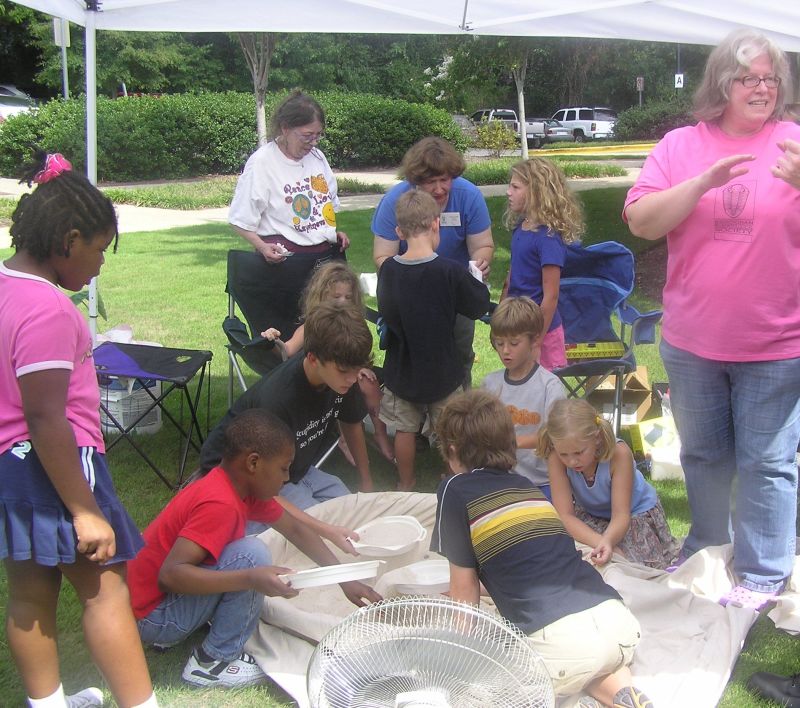
September 30, 2006 - Paleozoic Fossils and Rocks, Jefferson Co, AL, Part 2
The Red Mountain road cut rocks were formed million of years ago when North America was covered by a shallow sea. Fossils from the Ordovician, Silurian, Devonian, and Mississippian ages are found at this site. Members found a good selection of fossils, including numerous brachiapods, the pygidium of a Llandovacaste birminghamensis trilobite (used in the BPS logo), graptolites, unidentified plant stems, gastropods, a number of trace fossils, and even some nice samples of calcite and dolomite crystals.
(Photos courtesy Chris and Vicki Lais)

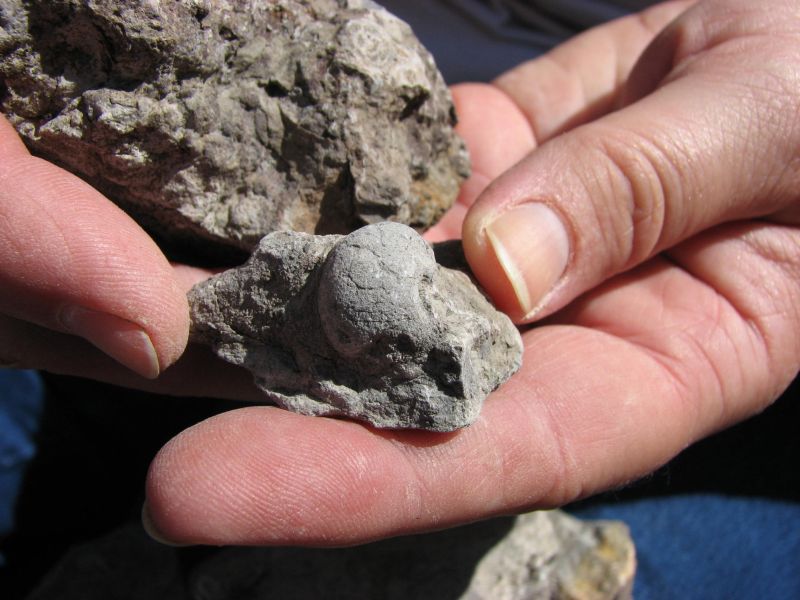

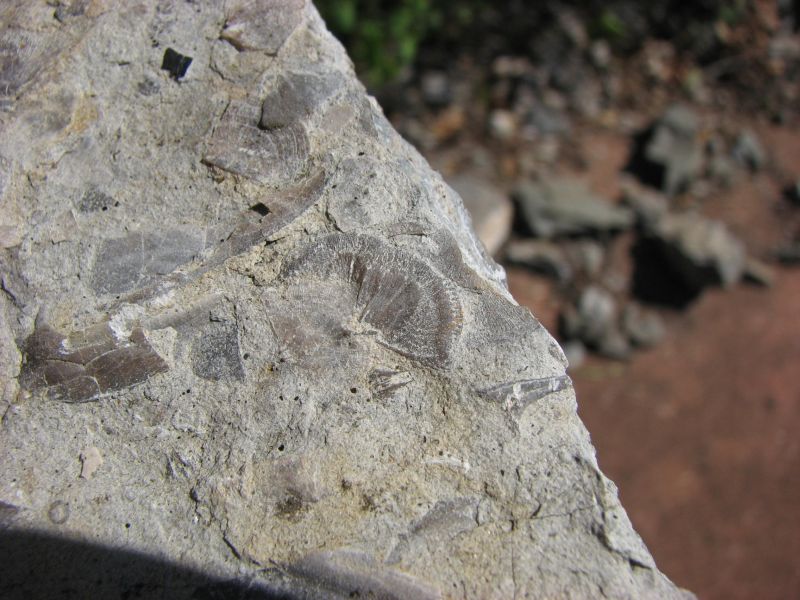
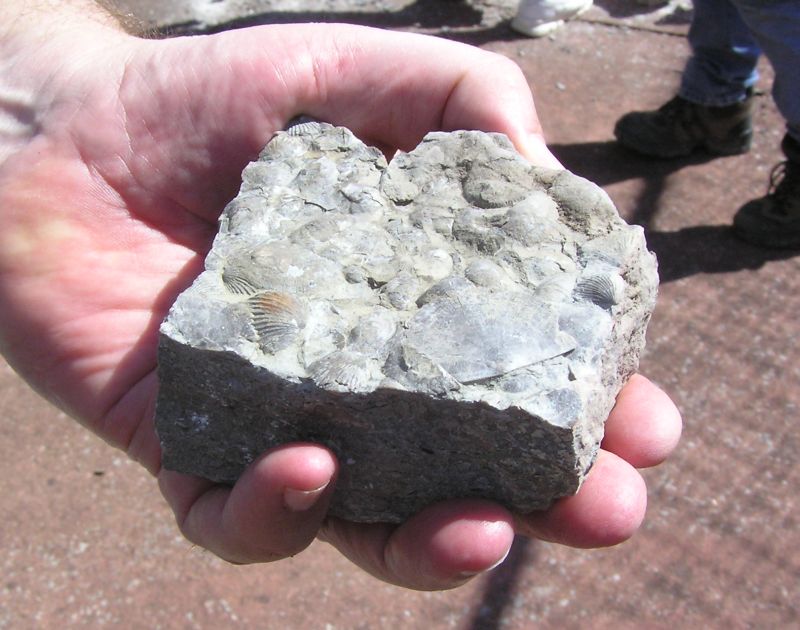
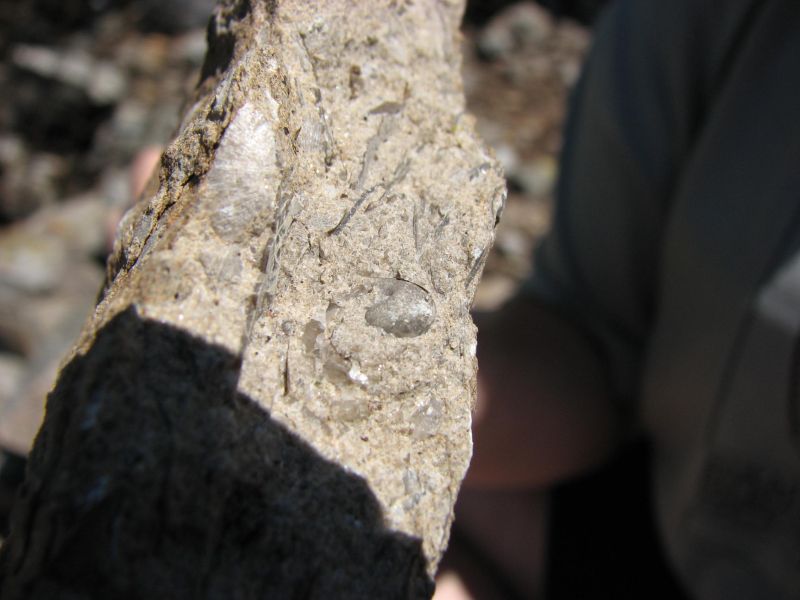
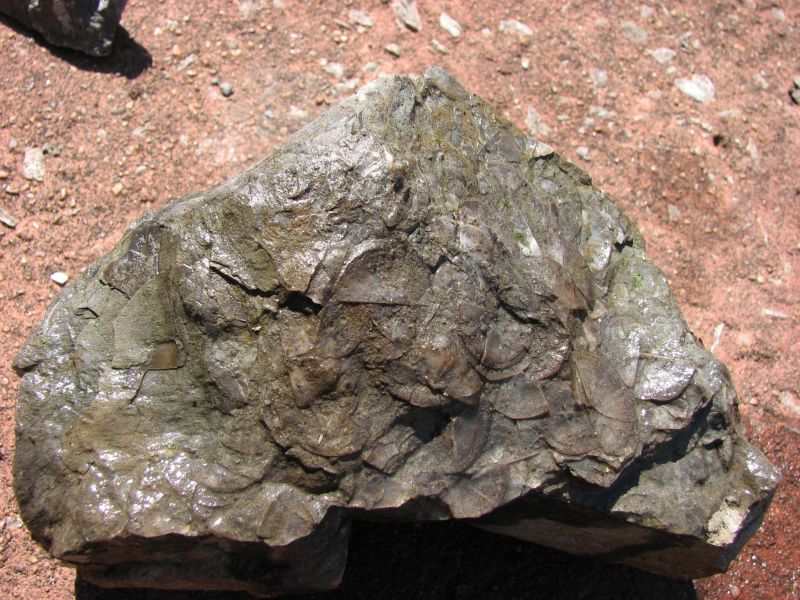
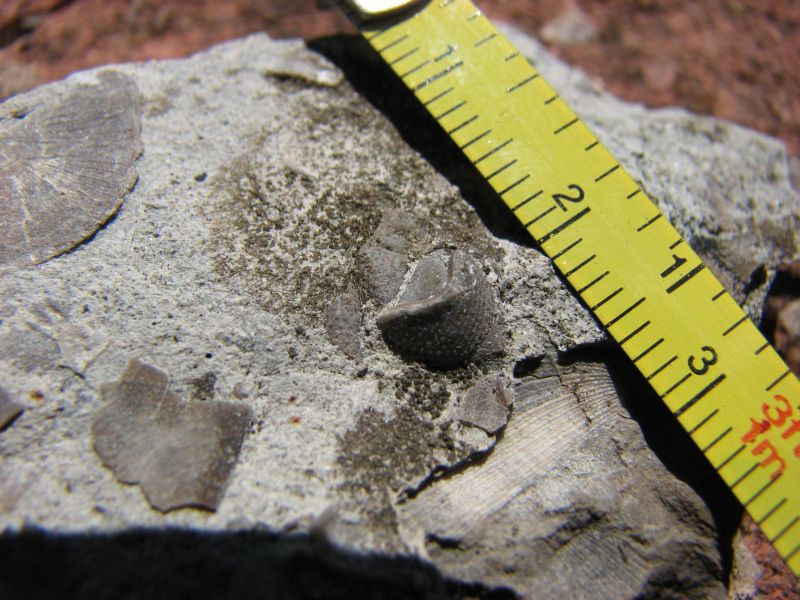

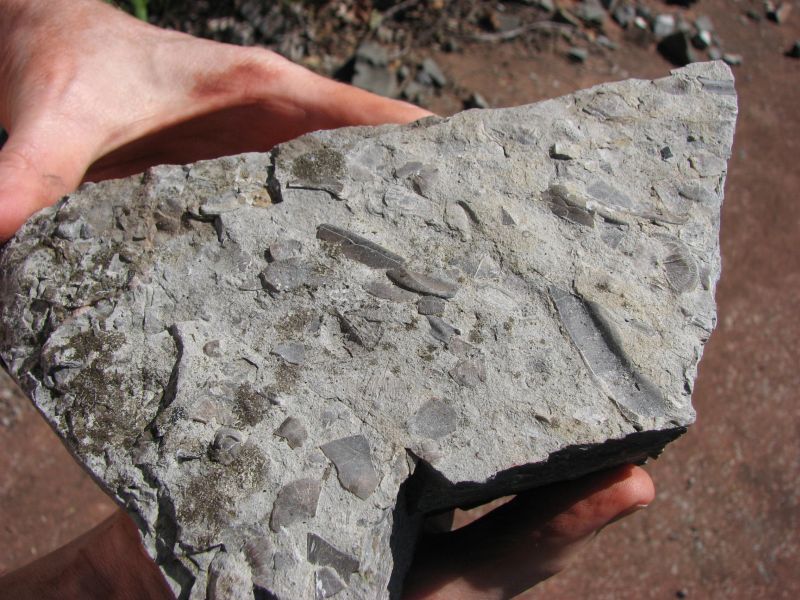



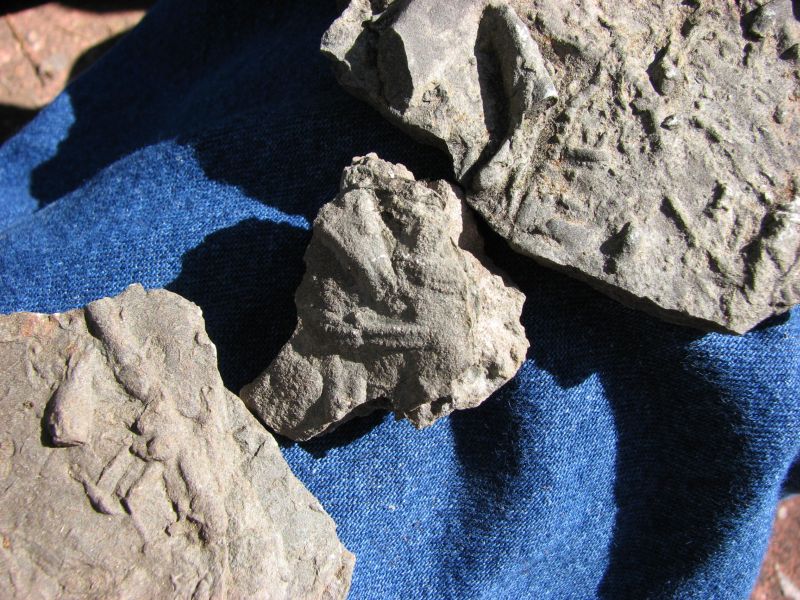
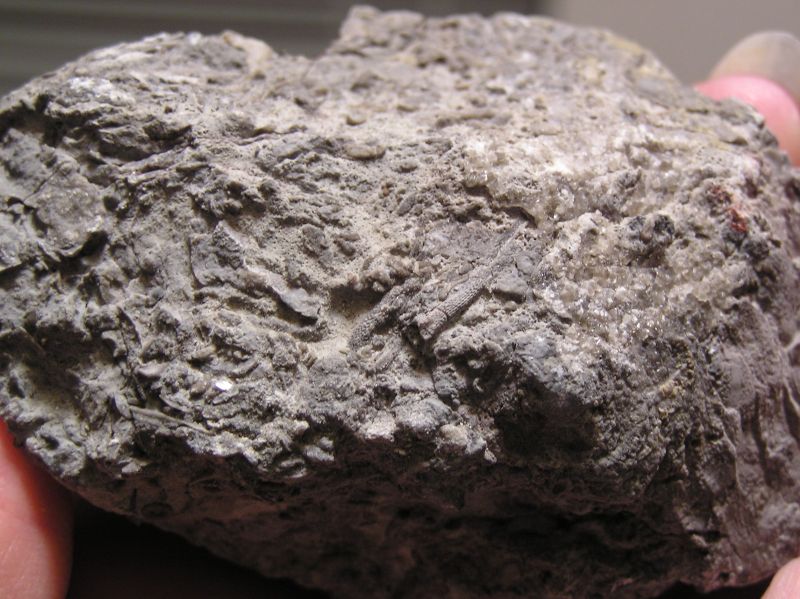

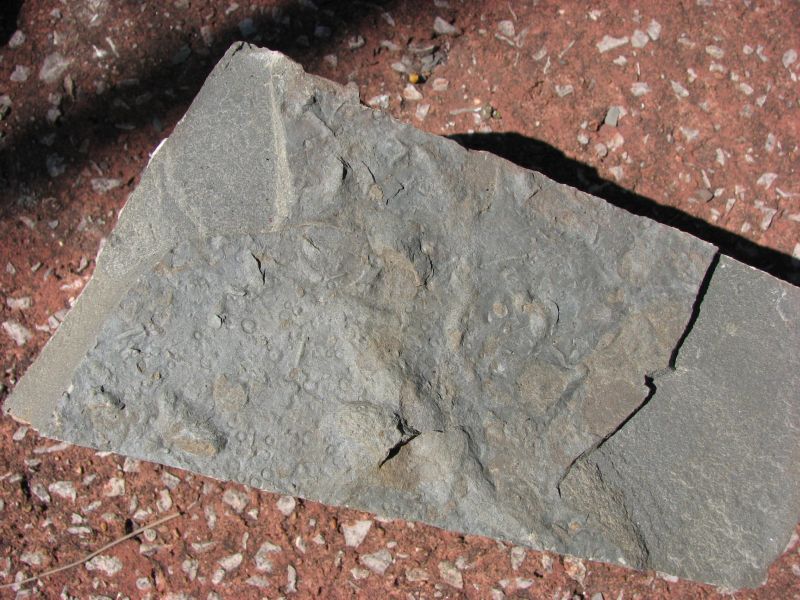
And some mineral specimens:
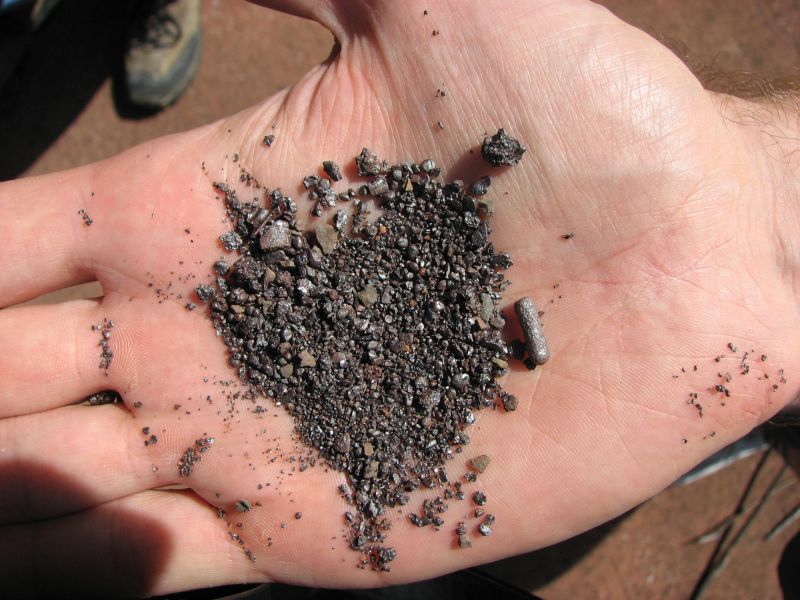
Hematite

White calcite crystals.
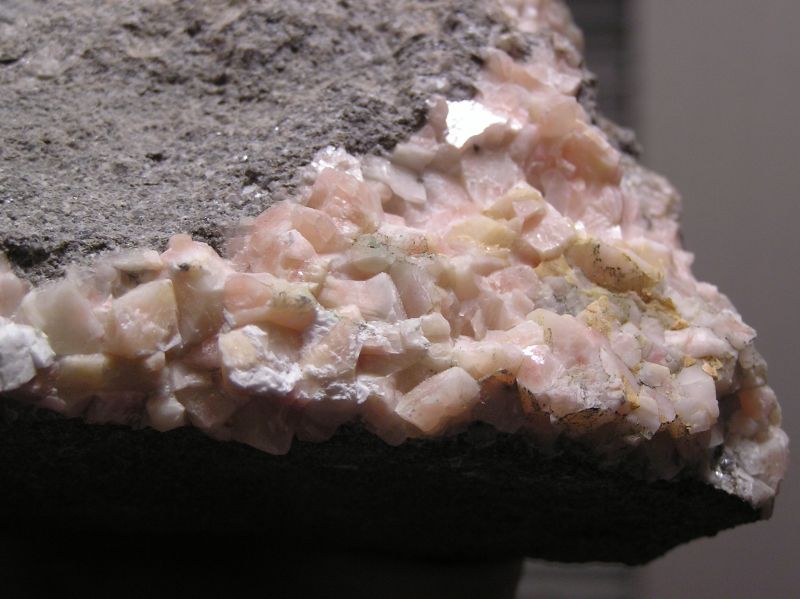
Pink calcite (dolomite) crystals.
Page 1 - General trip photos
Page 2 - Fossils and minerals (this page)
September 30, 2006 - Paleozoic Fossils, Jefferson Co, AL
Page 2 - Fossils and minerals
The BPS September field trip found us at the site of the Red Mountain Road Cut, which is also the site of the former Red Mountain Museum. The fossils that were formerly housed in the RMM now reside in the Alabama Collections Center of McWane Science Center. A good deal of the interpretive work still remains, and several members helped clear vines and bushes that had overgrown the walkway and signs. Jun Ebersole, Collections Manager at the McWane Science Center, started us out with a safety lecture, particularly pointing out areas that were somewhat less secure than others. We were fortunate to have James Lamb along to provide commentary and information regarding the road cut and history of the RMM, along with his wonderful sense of humor. James' lecture was accompanied by an excellent printed handout, covering the geology and history of the road-cut, and pointing out the many fossils which are unique to this site. He pointed out several geologic items of interest such as the fault line, volcanic ash layer, iron ore, and reef formations that make up Red Mountain, as we went on an exploring trip along the exposed area of the cut.
We happily welcomed Eli Mrug, our youngest member of the group on his first BPS field trip with his parents, who were acting as translators for his grandparents who were visiting from the Czech Republic. There was an excellent turnout for this trip of old members, new members, and guests. All-in-all this was BPS at its best and most fun, one of the best trips of the year.
The Red Mountain road cut rocks were formed million of years ago when North America was covered by a shallow sea. Fossils from the Ordovician, Silurian, Devonian, and Mississippian ages are found at this site. Members found a good selection of fossils, including numerous brachiapods, the pygidium of a Llandovacaste birminghamensis trilobite (used in the BPS logo), graptolites, unidentified plant stems, gastropods, a number of trace fossils, and even some nice samples of calcite and dolomite.
Edited by Vicki Lais
(Photos courtesy Steve Corvin, Chris Lais, and Vicki Lais)
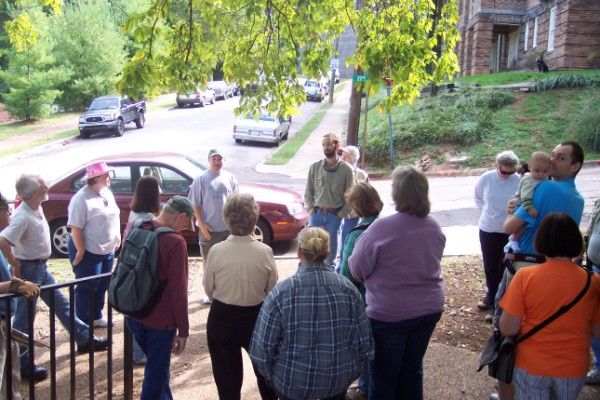
Jun gives a safety lecture regarding dangerous aspects of the cut and walkways to the group.

The whole gang (except Chris, behind the camera).
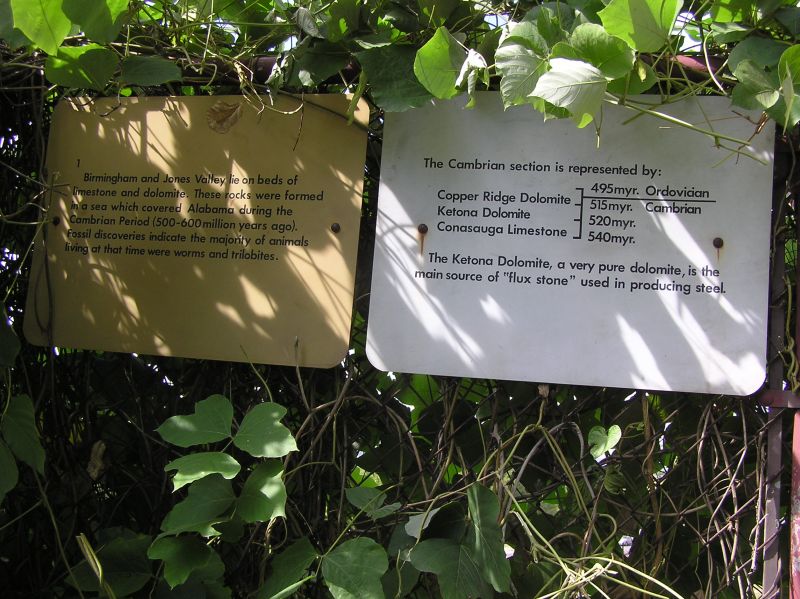
Amazingly, though Red Mountain Museum has been closed for several years, a number of the signs are still in place, though covered by kudzu and other vines.

There is a lot of rubble against the fence, most filled with bits of fossil material.
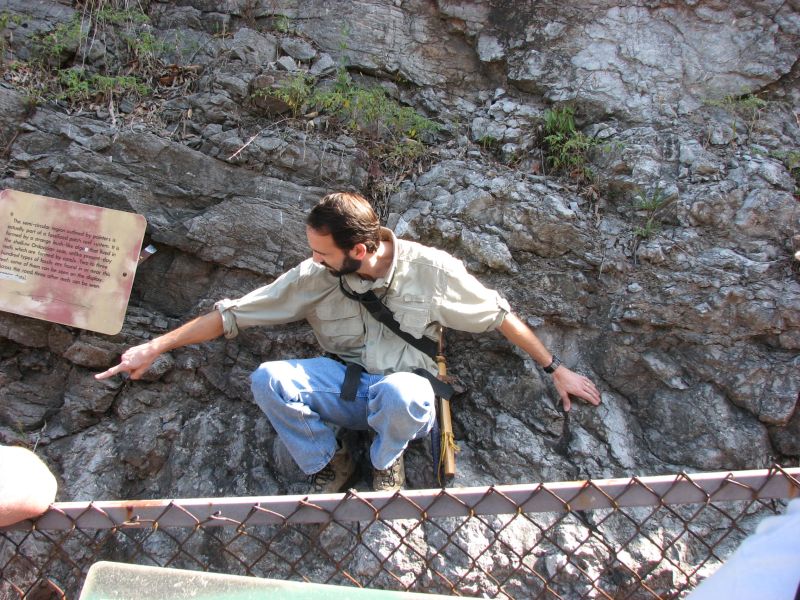
Lamb pointing out part of a fossilized patch reef system formed by a bush-like algae . . .
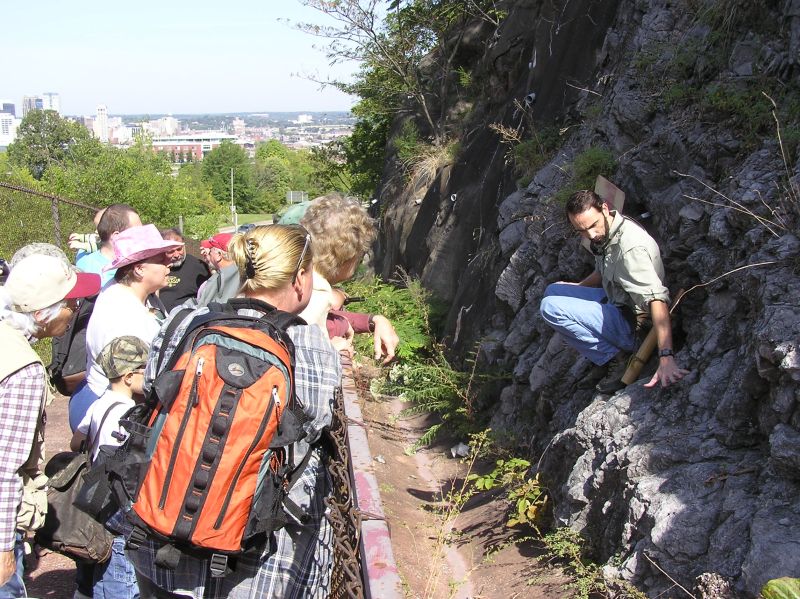
. . . as members listen intently, and start being able to identify various shading in the rocks that denote shells, layer transitions, faults, and other items of geologic interest.

Claire and Melanie searching through a large rubble pile.

Pam and others choose a leisurely way to collect!
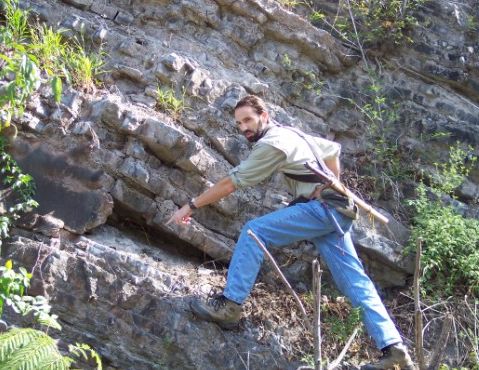
Lamb points out volcanic ash (bentonite) from volcanoes which were active in the area approximately 445 million years ago.
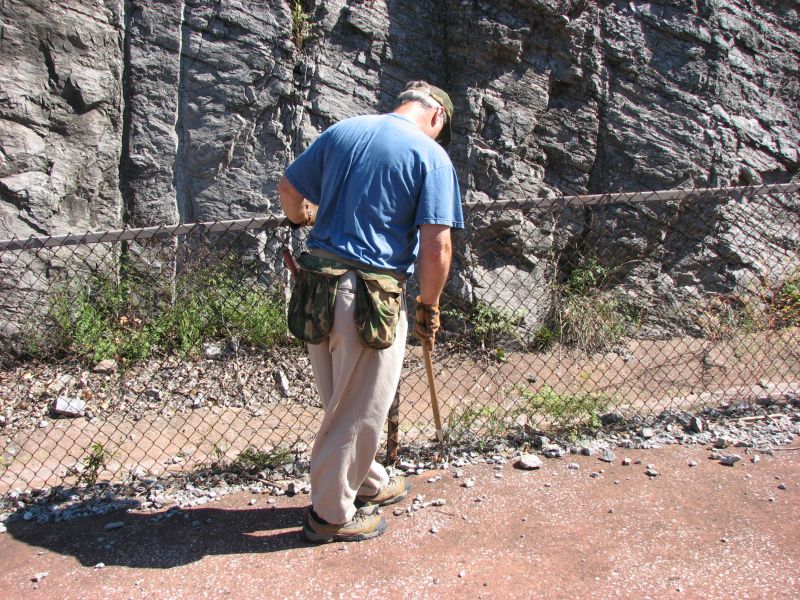
Bill with his "rock flipping tool".
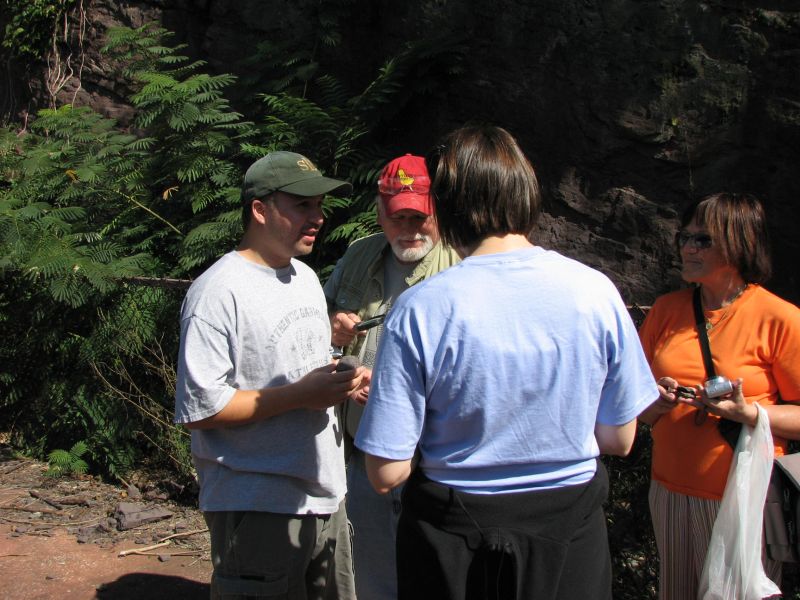
A frequent event of the day - Jun, what's this?
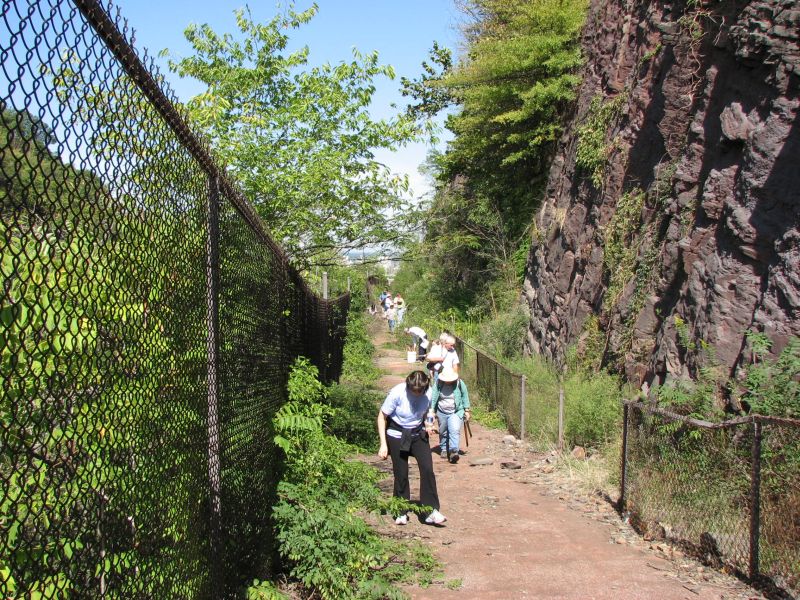
Walking along the road cut.

Jun trying to hide after his attempt to put a 15 pound rock in Vicki's fanny pack (while she was wearing it!).
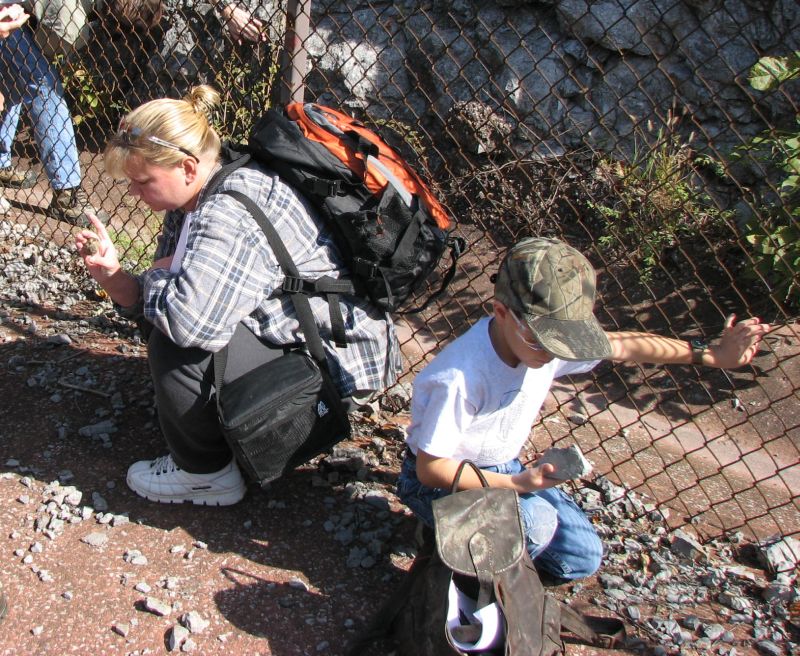
Melanie and Steven examine each rock carefully.
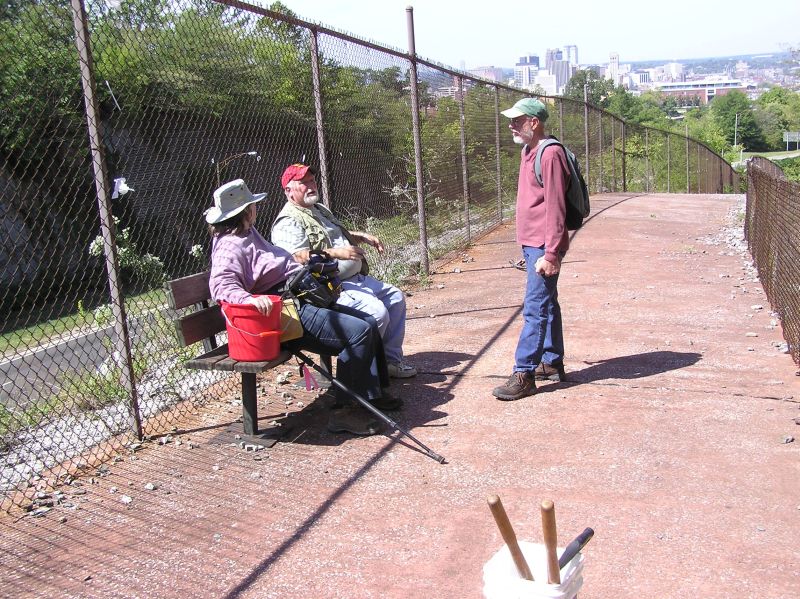
Time to relax with the Birmingham skyline in the background.
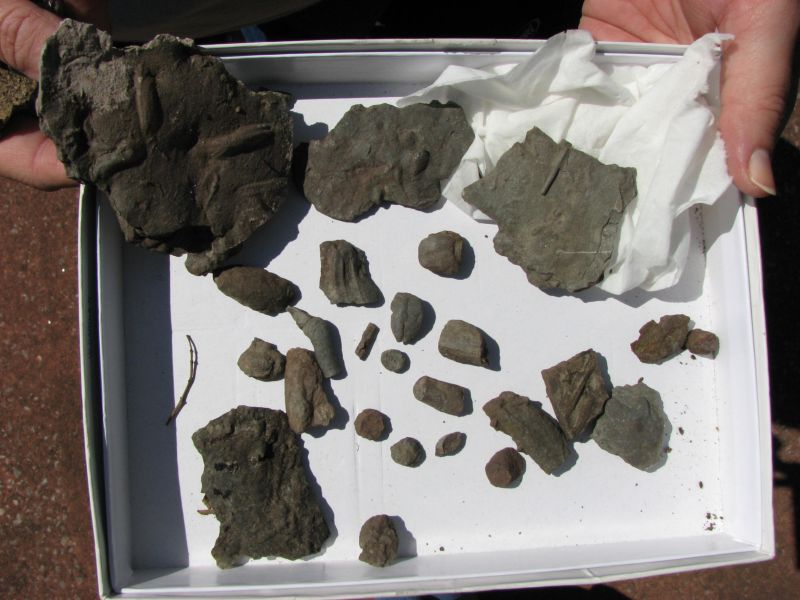
Leisa's fossil finds.
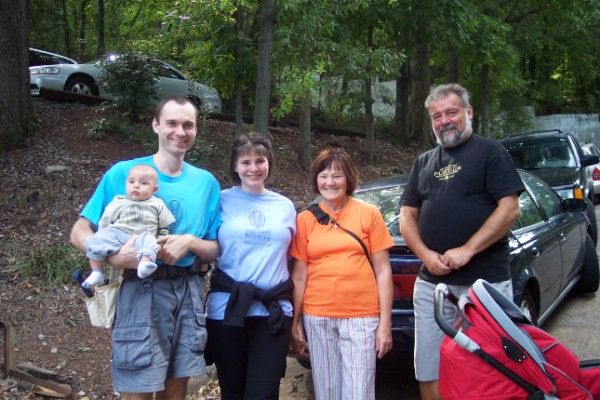
If we had given a prize for the people who traveled furtherest to attend the field trip, it would have to go to Sylvie's parents, who came all the way from the Czech Republic. Well, perhaps they really came to visit their new grandson, Eli, but we certainly were glad to have them!
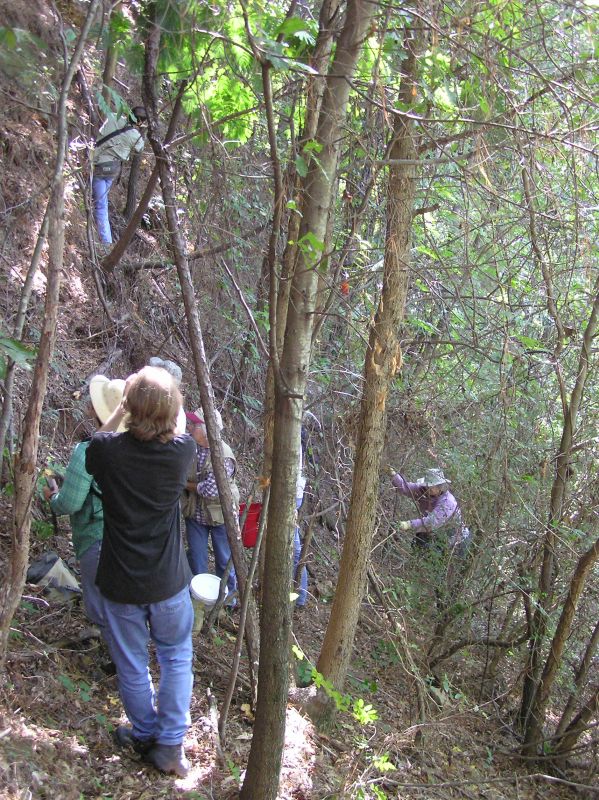
James.... are you SURE we need to climb all the way up there???
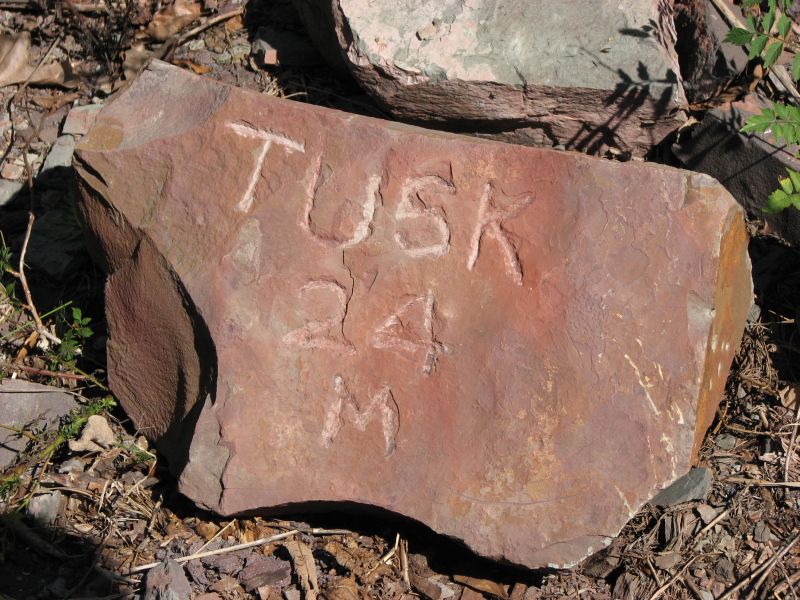
A mystery rock. Apparently, one just like it was brought to McWane Center. This one wasn't here in the past, and doesn't appear to have fallen from the top. Anyone know about this rock? Is it a marker of some kind, a hoax?? Send us an email if you can shed light on this mystery.

Page 1 - General trip photos (this page)
Page 2 - Fossils and minerals
October 28, 2006 - Mississippian Fossils, Blount Co, AL
After the butterfly viewing, we then convoyed to a quarry of Mississippian age Fort Payne chert where we had permission to hunt the whole day! Doesn't get much better than this, and the weather was absolutely perfect! Along with more large crinoid stems, several kinds of coral, brachiopods and a few trilobite pieces were found. Quite a few of us found beautiful geodes and concluded that this is just about as exciting as the fossils. They certainly are gorgeous souvenirs.
Later in the afternoon, a few of us sneaked off to one of Greg's barbecue spots and chowed down on some excellent vittles while our more dedicated crew-members devoted themselves to the task at hand. Well, you can't have everything. Sometimes a blackberry cobbler just has your name on it.
--Edited by Vicki Lais
(pictures courtesy Bill Fowler and Vicki Lais)
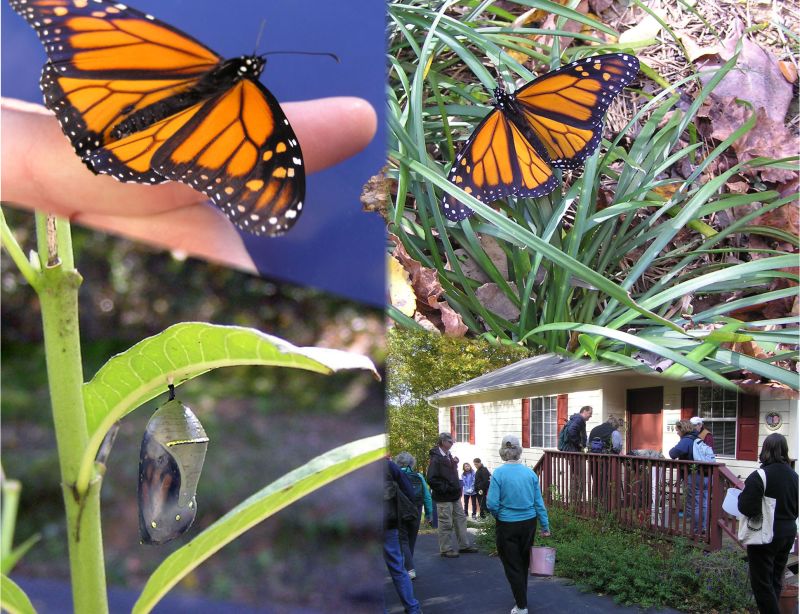
Our first stop of the day, where we found Monarch chrysalis on numerous surfaces, including plants and house siding. This chrysalis has turned clear, and you can see the butterfly inside. There were several newly emerged Monarch butterflies slowly pumping their wings, waiting for them to harden (that's what everyone's staring at on the porch.)
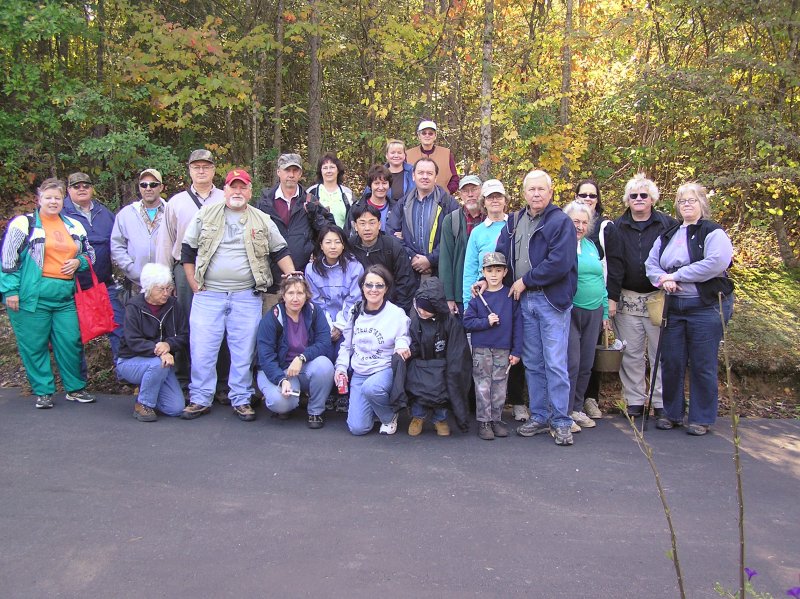
We had a great turnout and beautiful weather; here we pose for a group picture before setting off on our day's adventure.

The first fossil stop, a gravel road paved with chert from the Mississippian age. Almost all the rocks have crinoid stems or impressions in them.

Examining recent finds.
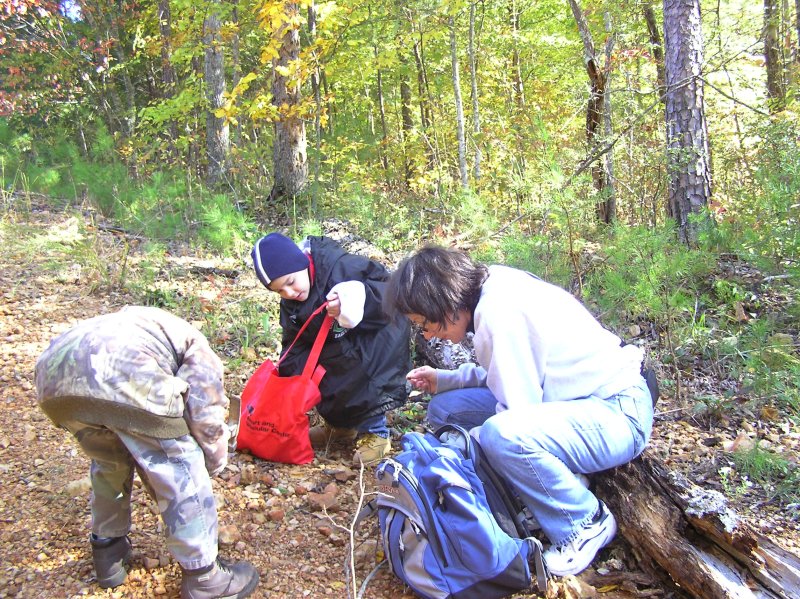

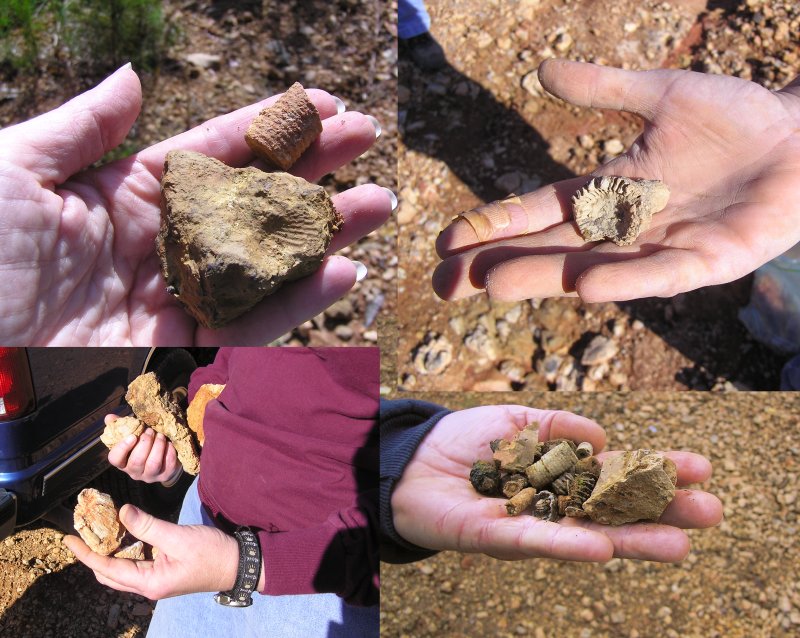
Samples of fossils found today.

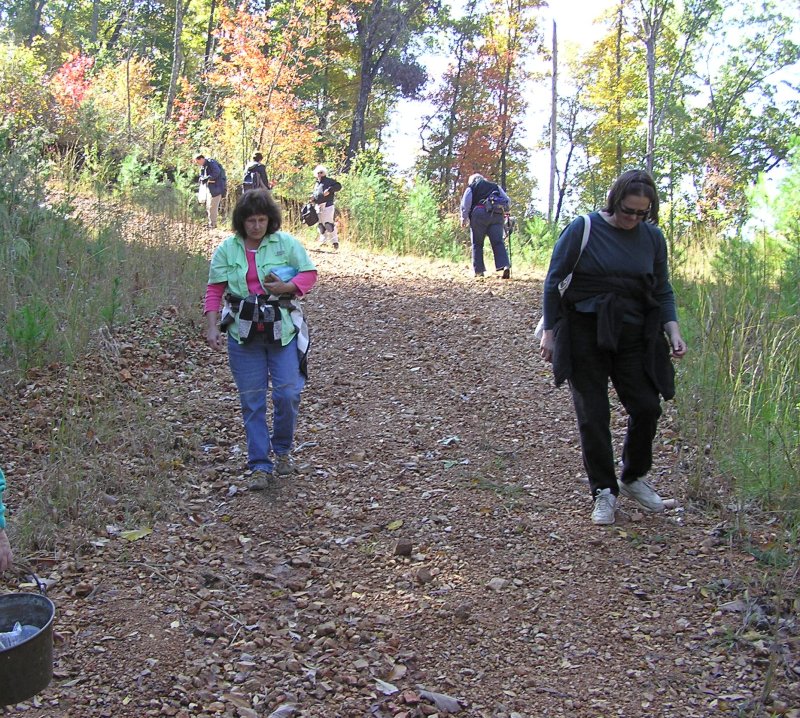
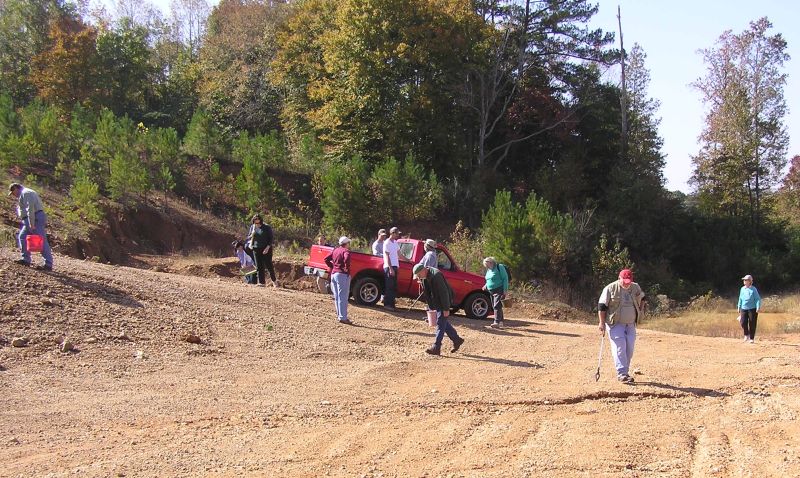
On to the next stop at a nearby quarry which was large, hilly and had multiple collecting areas. Everyone scattered in different directions to collect, so it was difficult to get closeups of people and their finds during the day.

Crinoid stems in matrix.

Crinoid stems.

Crinoid stems. Click picture for closer view.

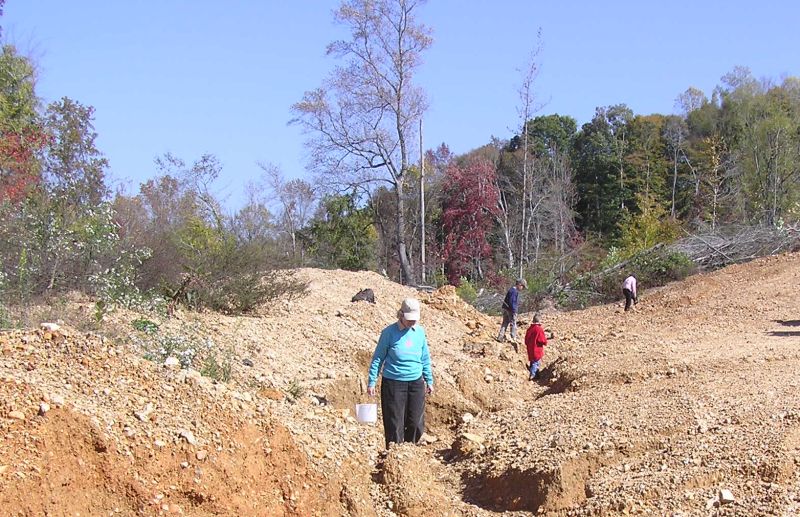

Horned coral found by Bill.
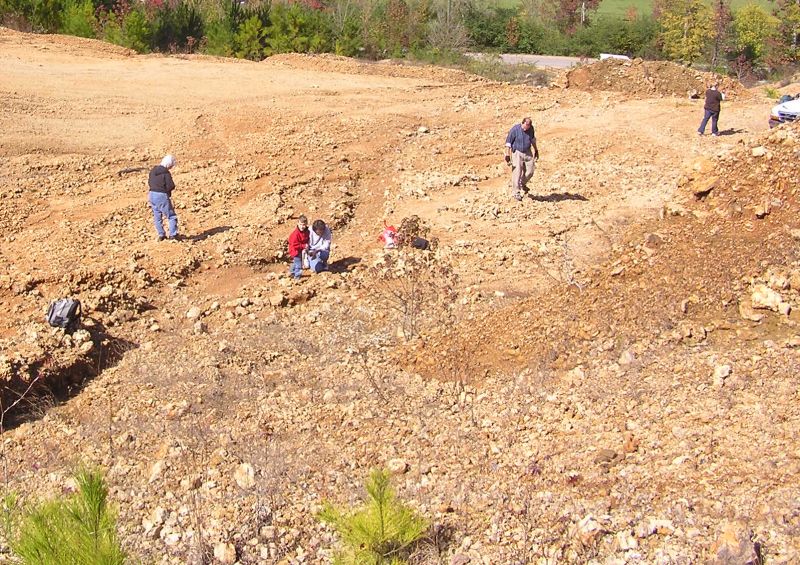
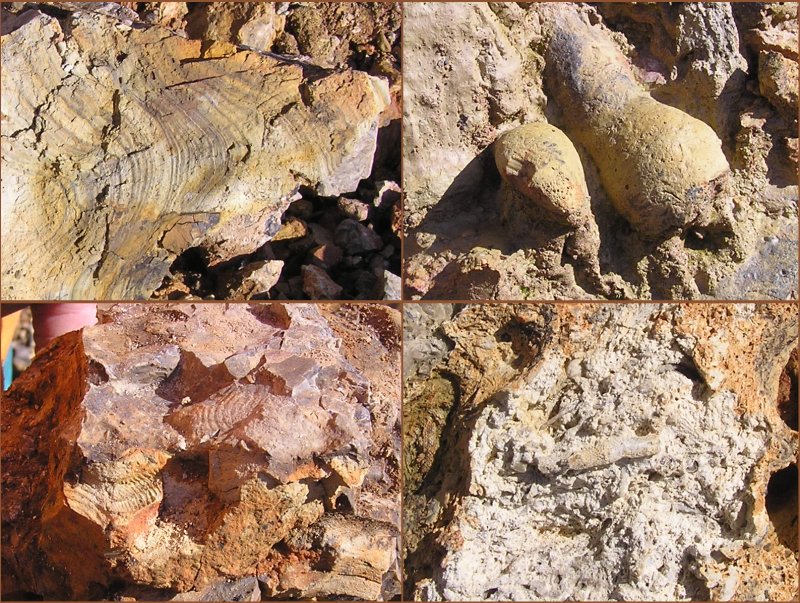
Clockwise, from upper left - unknown (possible stromatolite), possible burrow, part of a trilobite and shell, bryozoan.
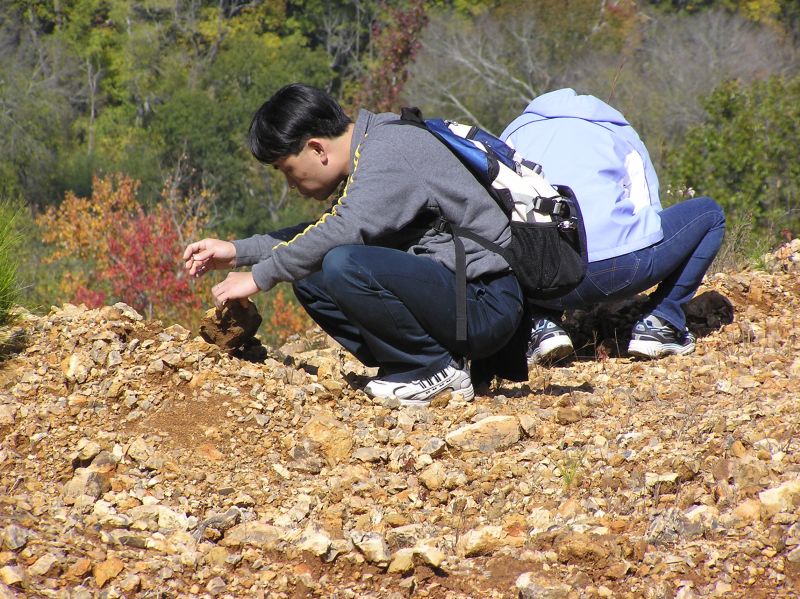
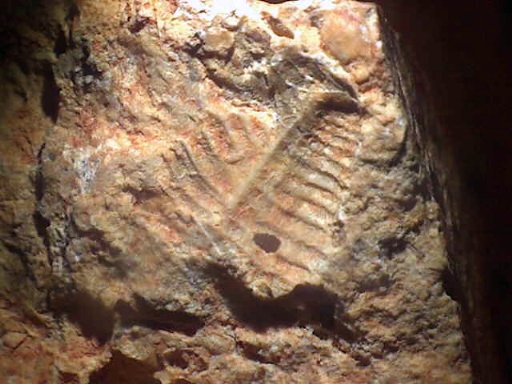
Small trilobite found by Bill, magnified.

Large trilobite found by Bill. This is what we came for, he must have found their secret hiding place!
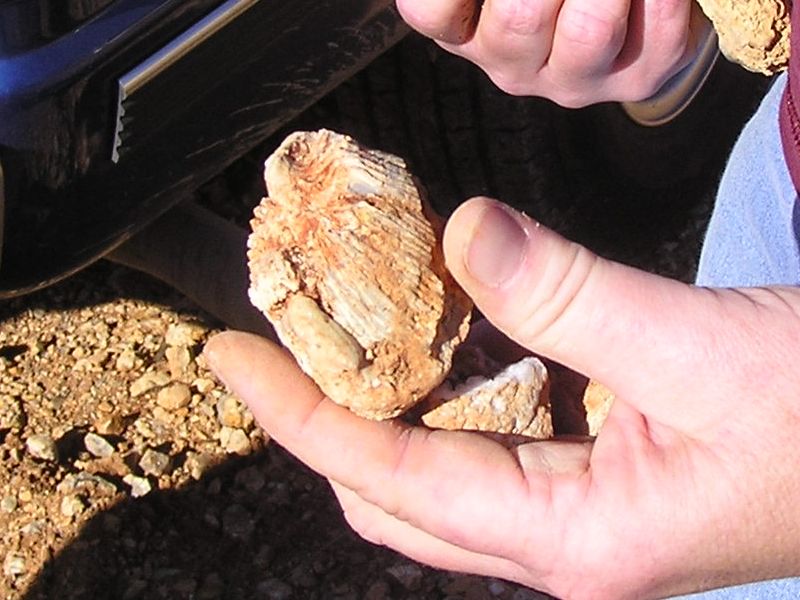
Coral.
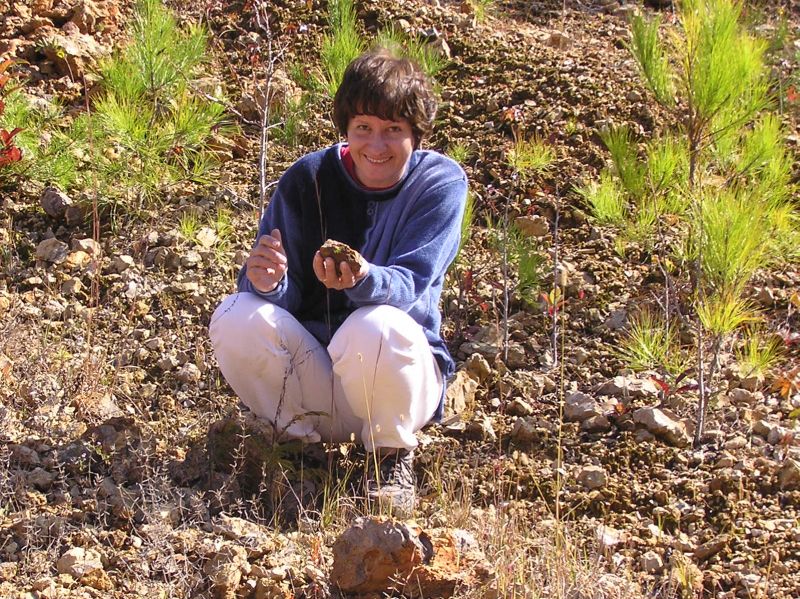
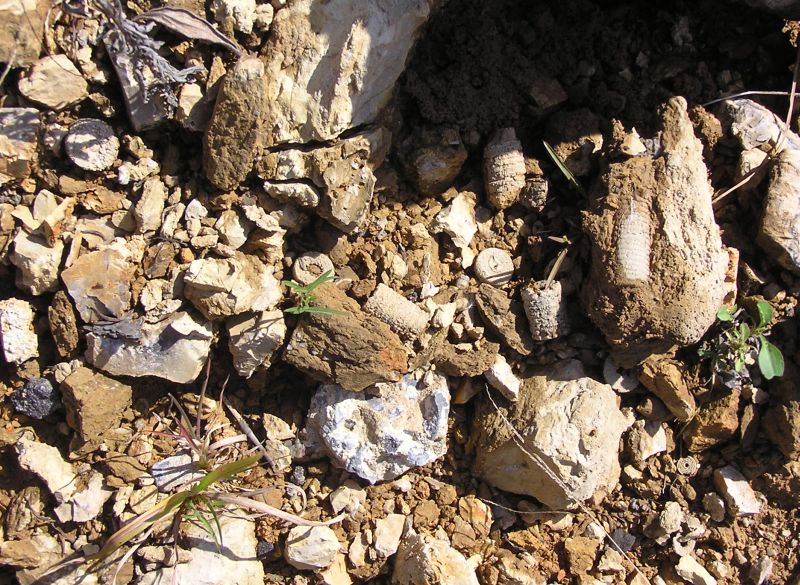

Part of a trilobite.
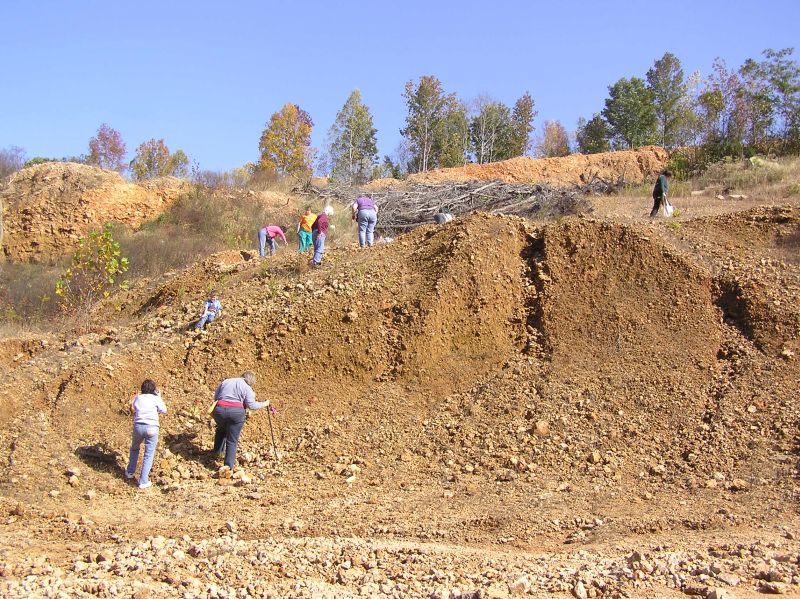

Crinoid encrusted rock.
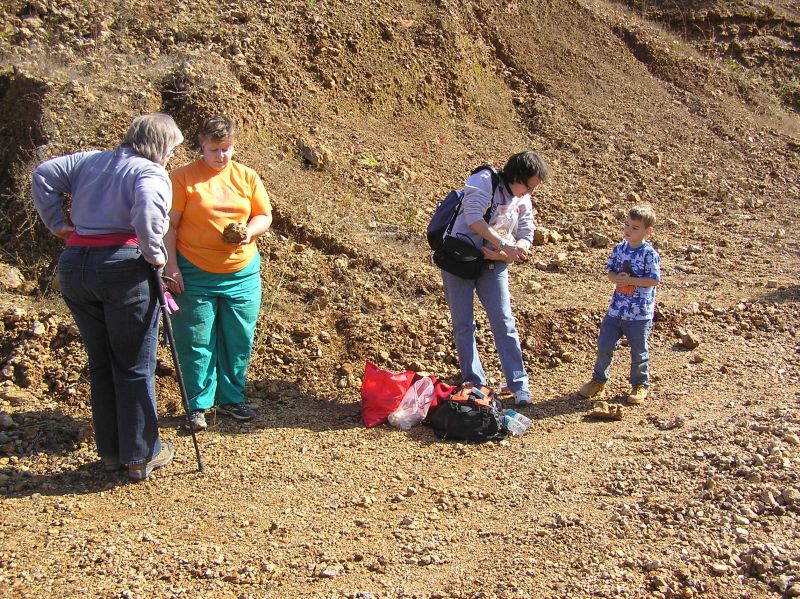
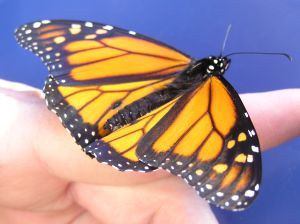
December 2, 2006 - Mississippian Fossils, St. Clair Co, AL
--Edited by Vicki Lais
(Photos courtesy Becky Guthrie and Vicki Lais)
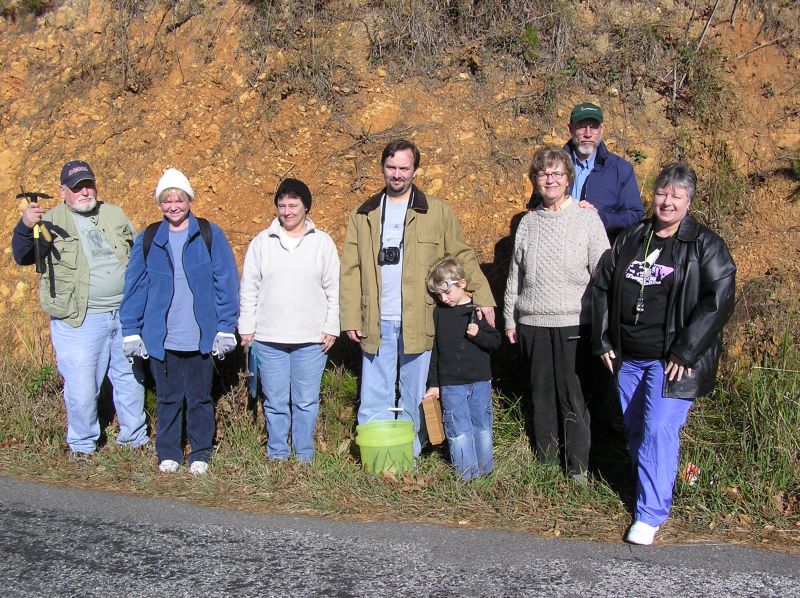
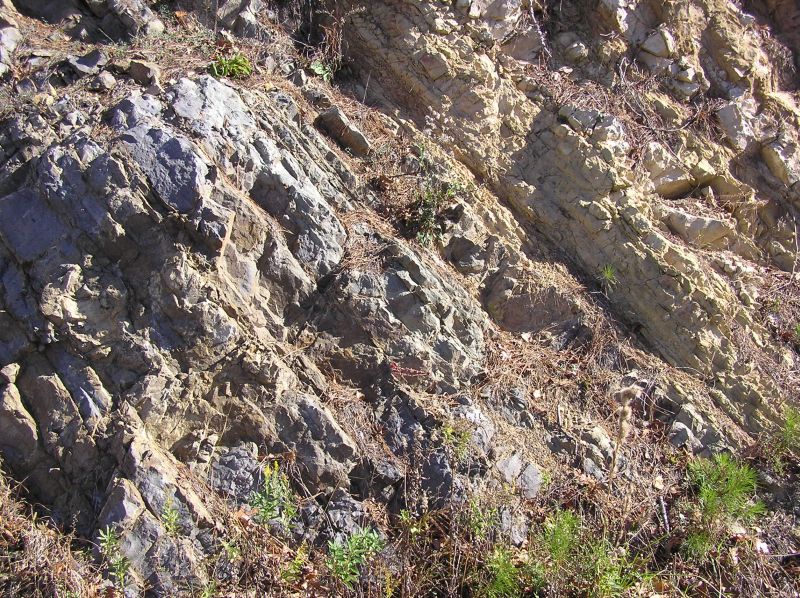
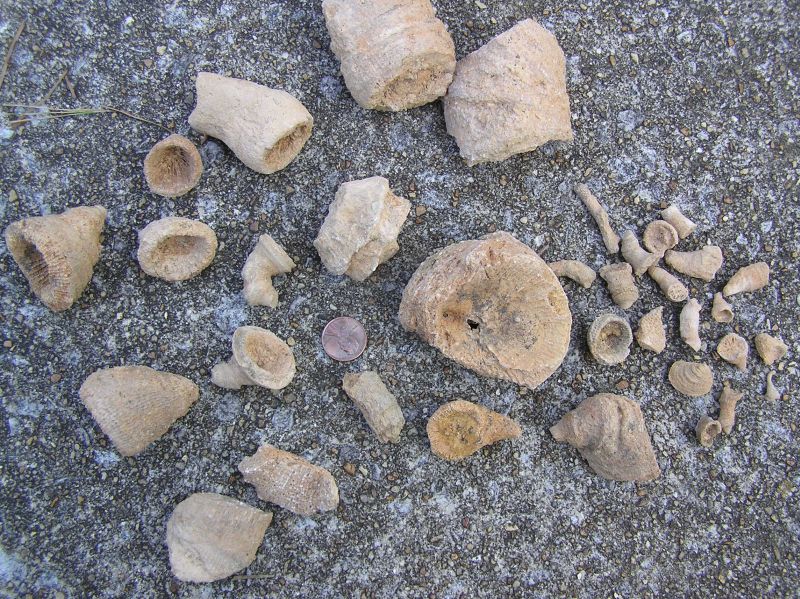
The most common fossil at this location is coral.
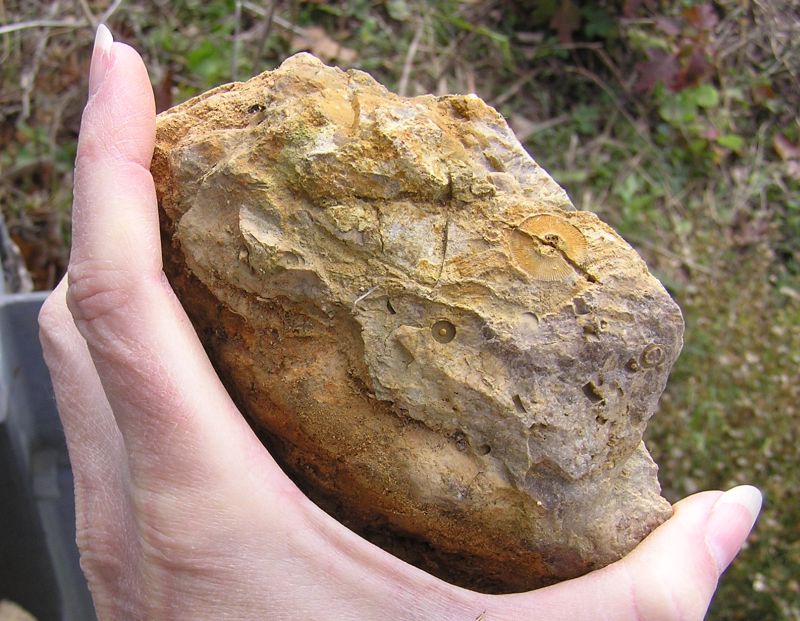
Crinoids are also found.
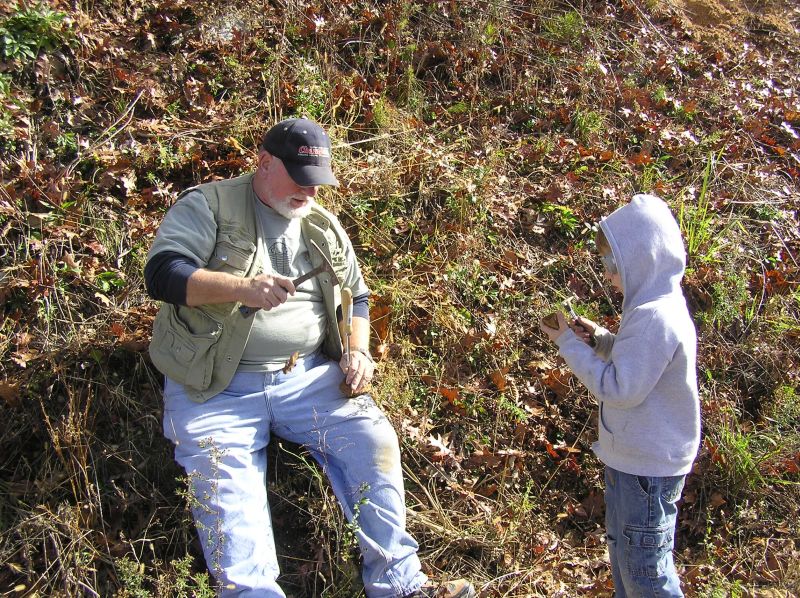
Greg shows Nathan how to crack the rocks to find the fossils inside.
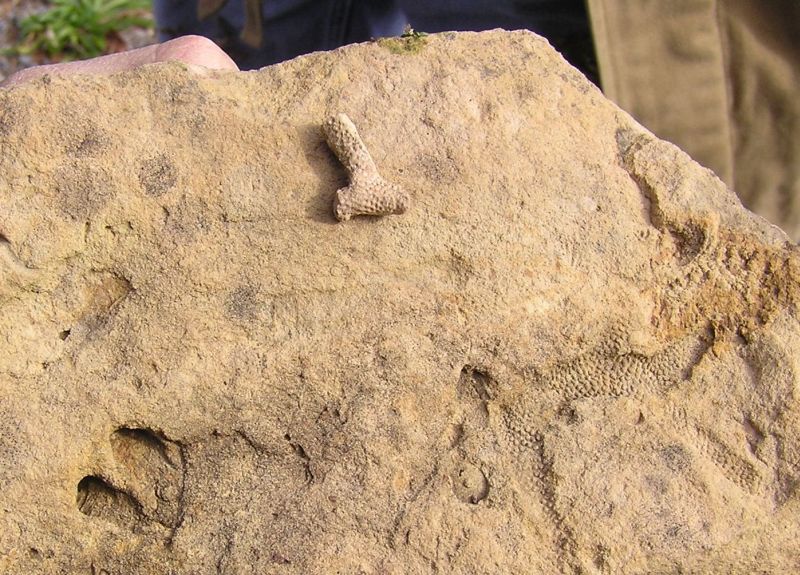
Nice bryozoan impression and actual fossil remains.
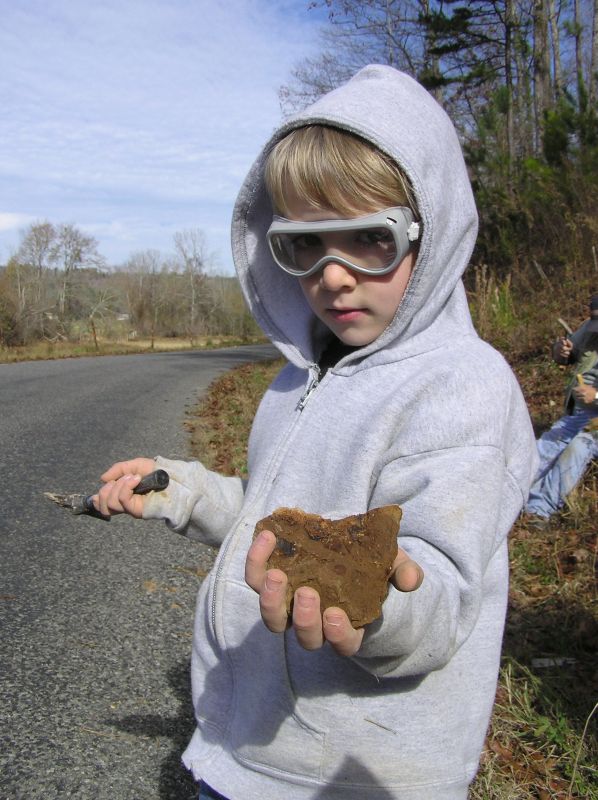
Nathan has found fossil brachiopods. Click picture for closer view.
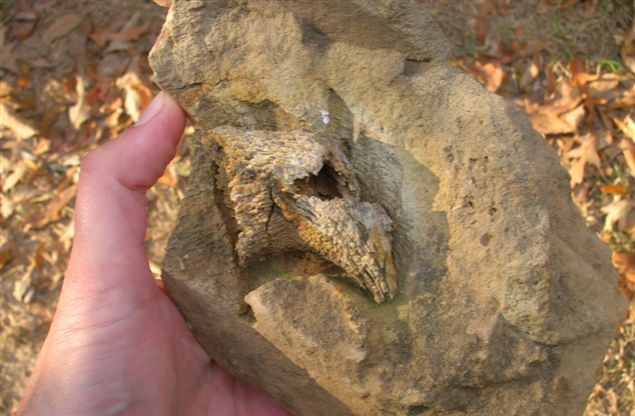
An interesting piece of horned coral, laying loose in a hollow shaped like it. This specimen has obviously been weathering in this same location for many years.
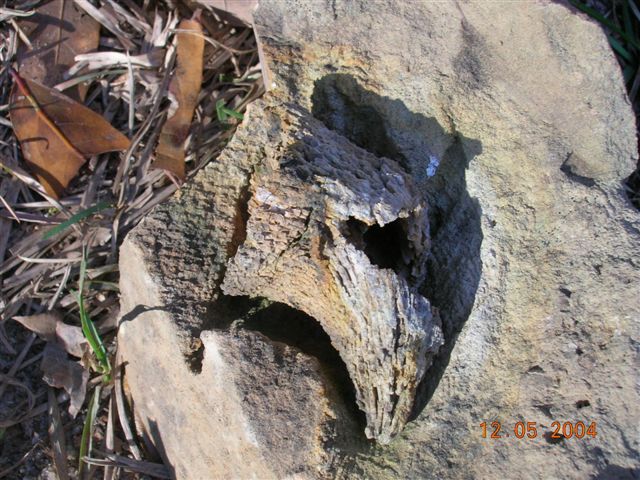
Another view of the horned coral.

Becky also has a nice slab of brachiopods.
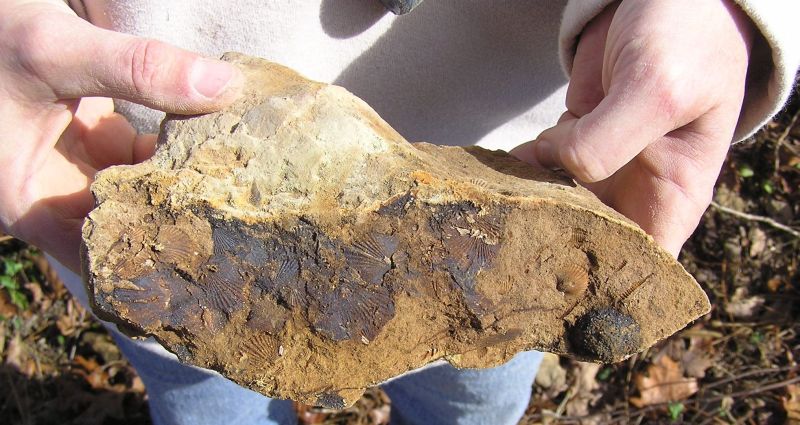
A closer look at Becky's slab.
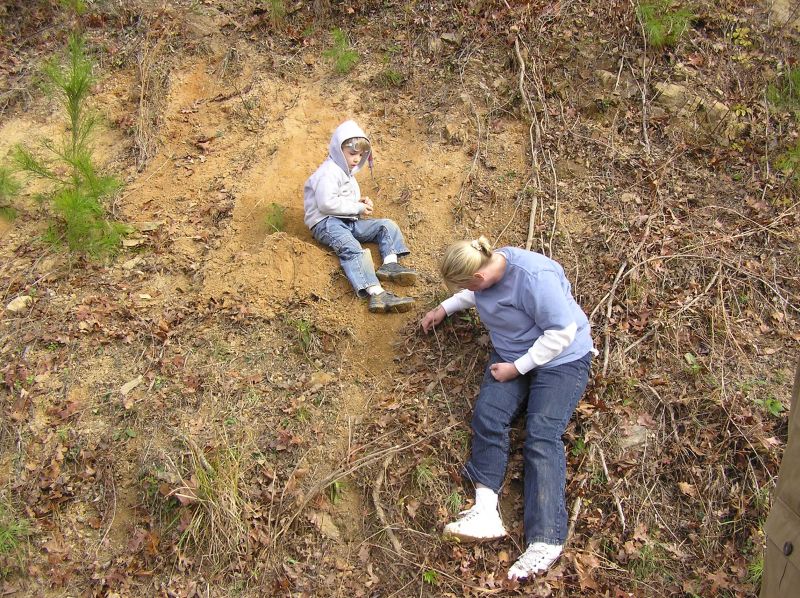
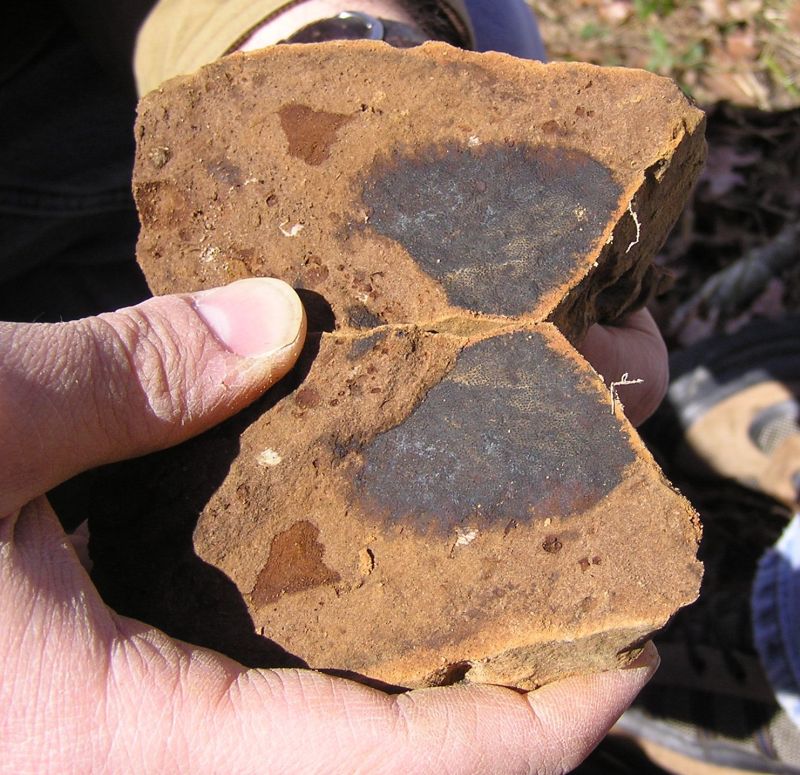
Nice sponge; at higher resolution, the pores are easily visible.

More brachiopods.

And here's what we were hoping to find - trilobites!
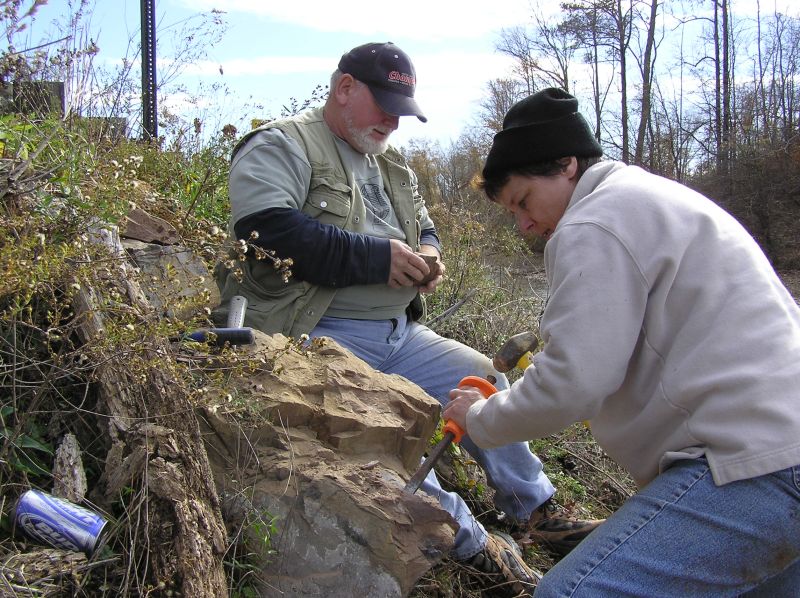
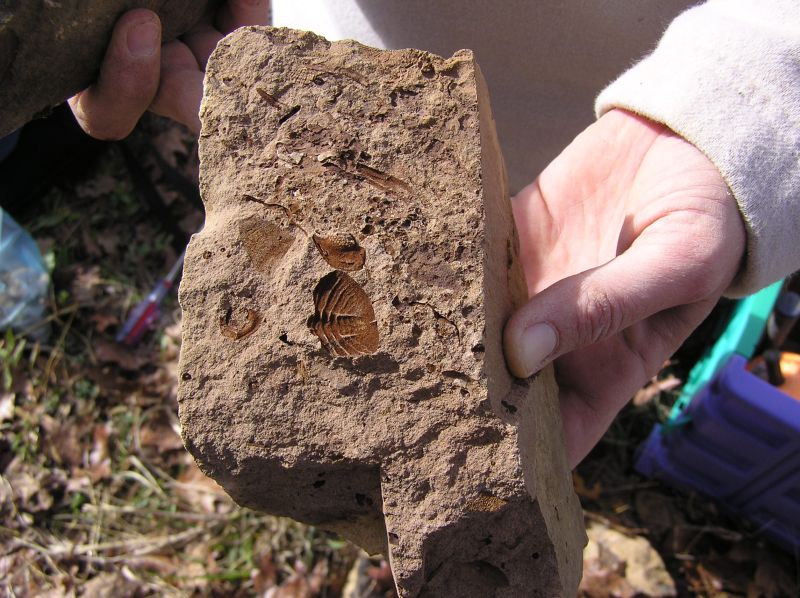
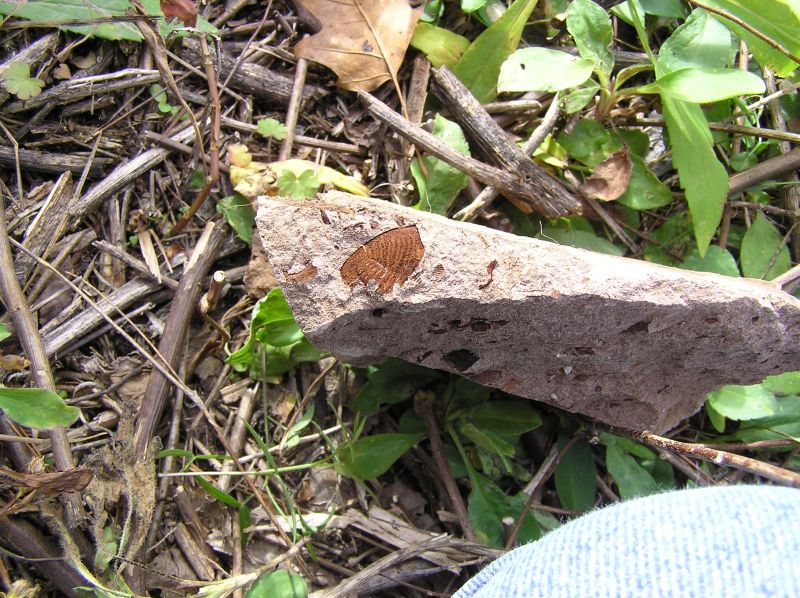
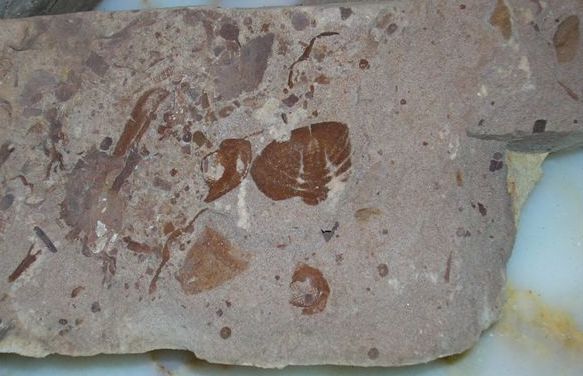

As nice as the trilobites are, this straight cephalopod was the find of the day!
December 16, 2006 - Mississippian & Ordovician Fossils, Jefferson Co, AL
Since the grey-on-grey of the limestone makes it difficult to photograph the details clearly, Chris took multiple photos of the boulder, then used “stitch” photo technology to create detailed photographs of the complete rock surface. By using extreme macro and pasting the sections together, we have gotten far better records of those surfaces and the fossils they contain than with past techniques.
The Ruffner Mountain quarry is a fascinating place to visit and learn more about the Alabama fossil record. BPS is glad that we can contribute to the educational services of the Nature Center by our documentation.
After a late lunch at a locally famous hamburger joint, it was time to head home and get ready to party! All-in-all, a great day, topped off by the annual Xmas party. Good company, good food, Dirty Santa, a lot of laughter, and live music from our very own Lea Novak. It doesn’t get much better than that!
--Edited by Vicki Lais
(Photos courtesy Chris and Vicki Lais)

Part of the group deciding which way to go.
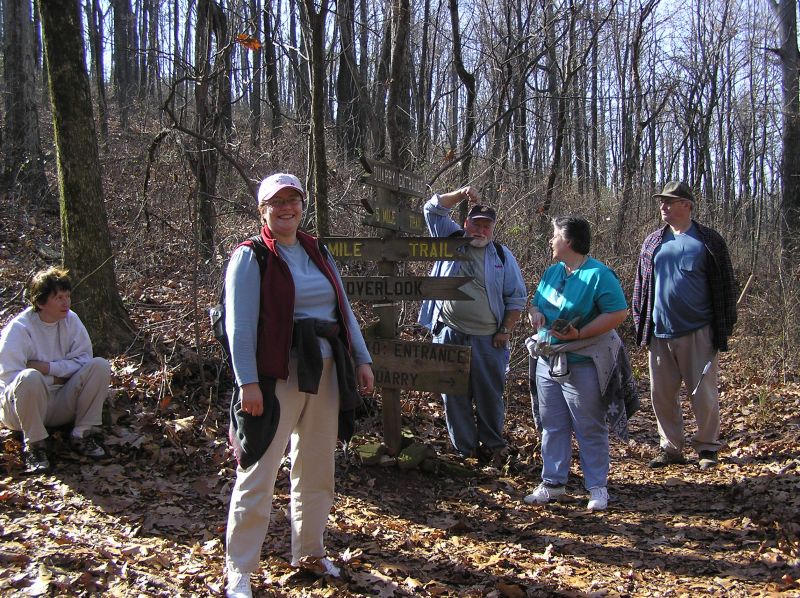
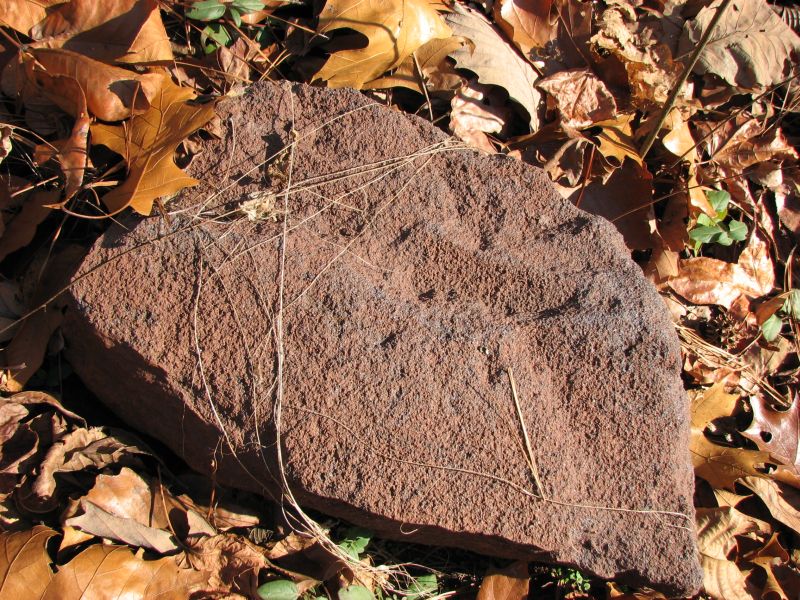
Iron ore spotted on path to quarry.
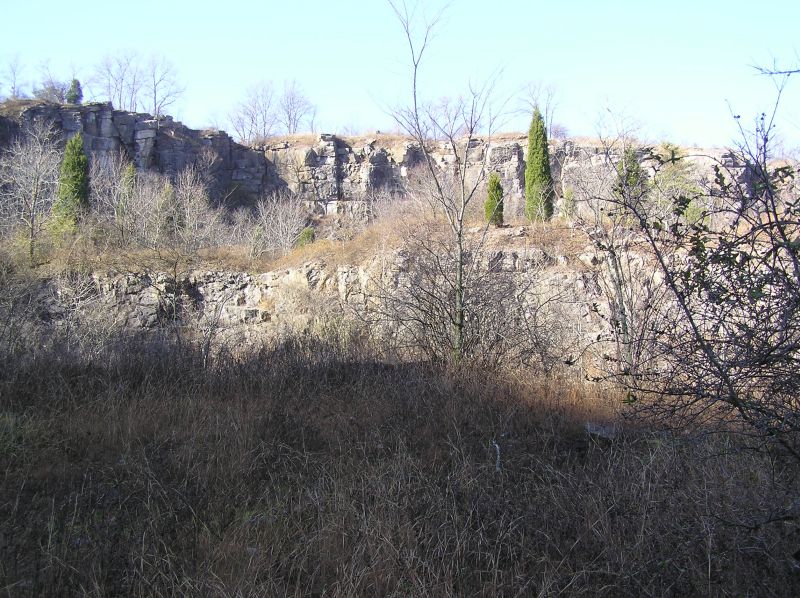
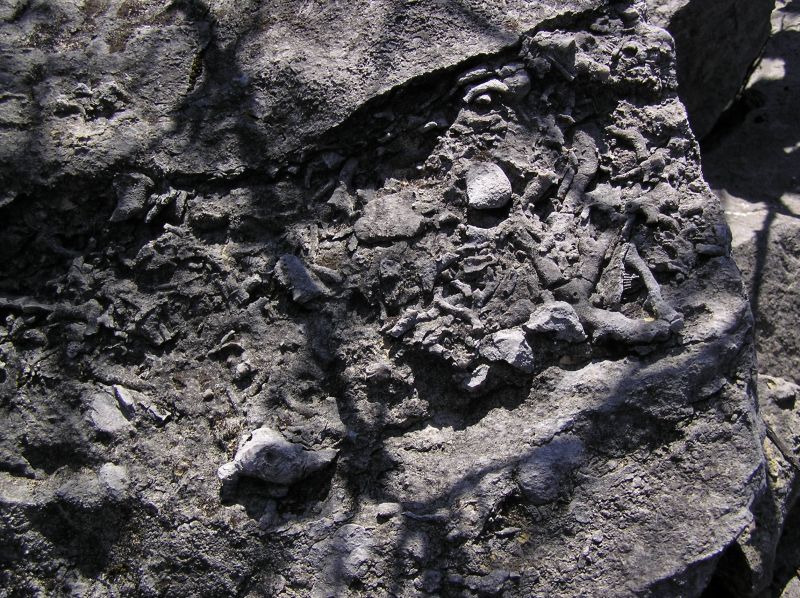
Mixture of fossils including brachiopods and bryozoans.
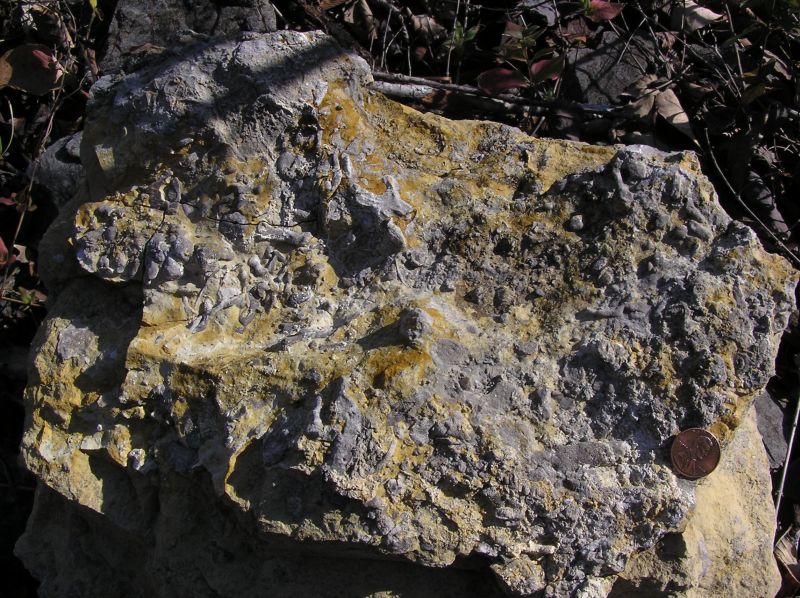
Most of the fossils are badly weathered.
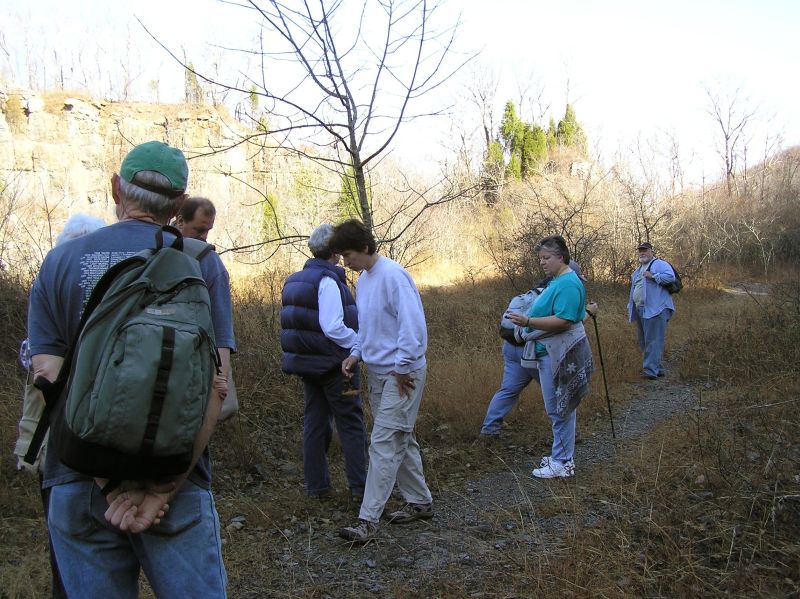
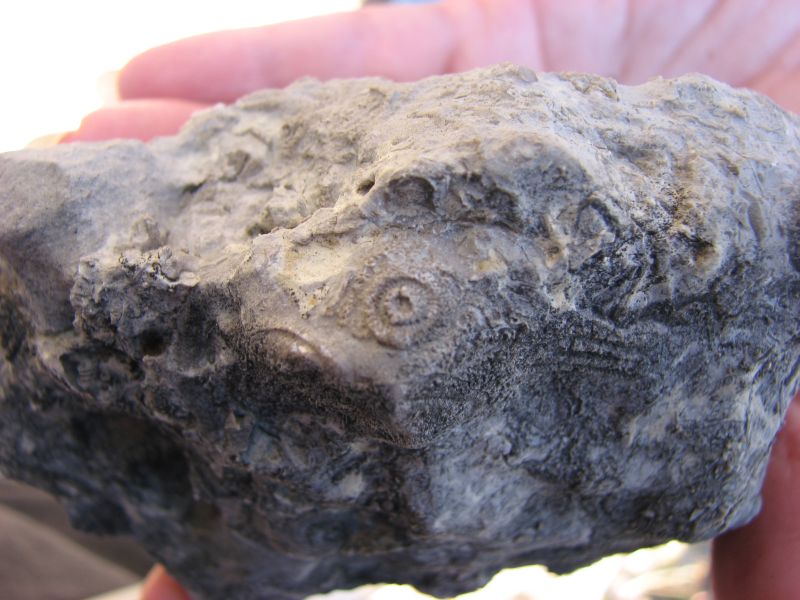
Coral.

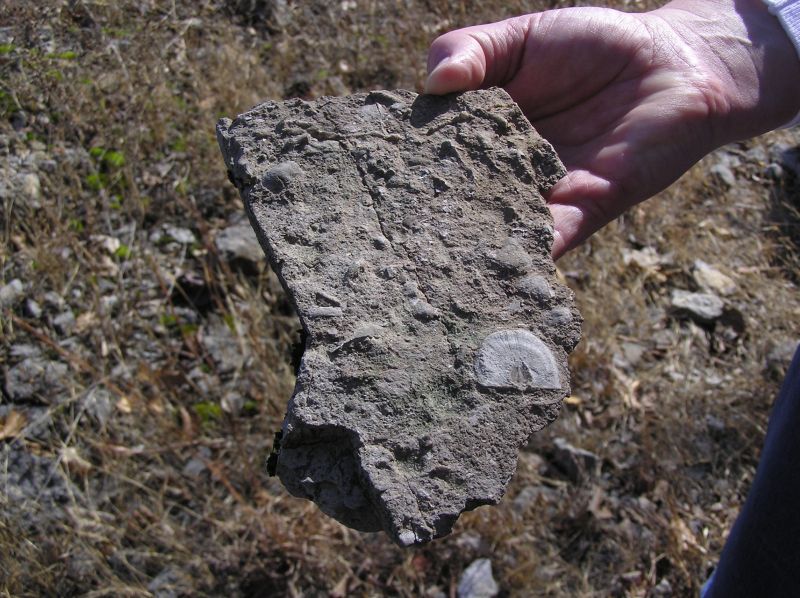
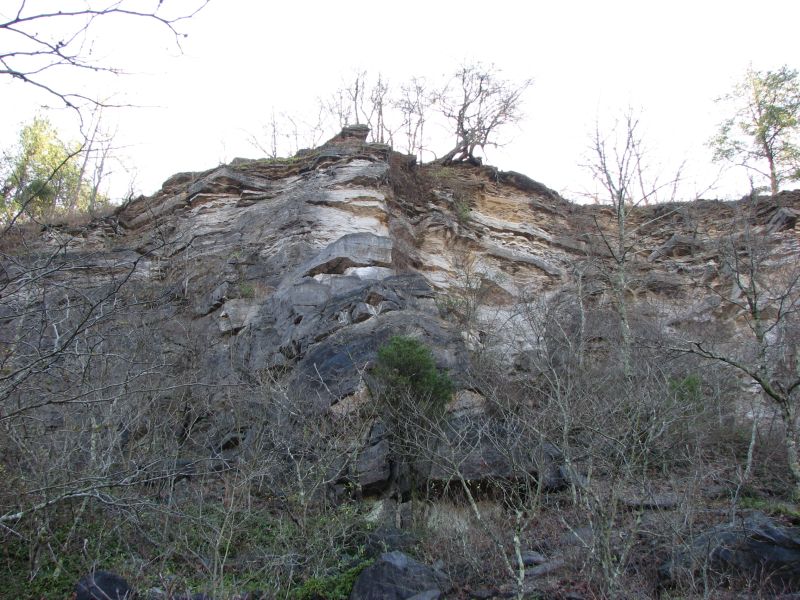
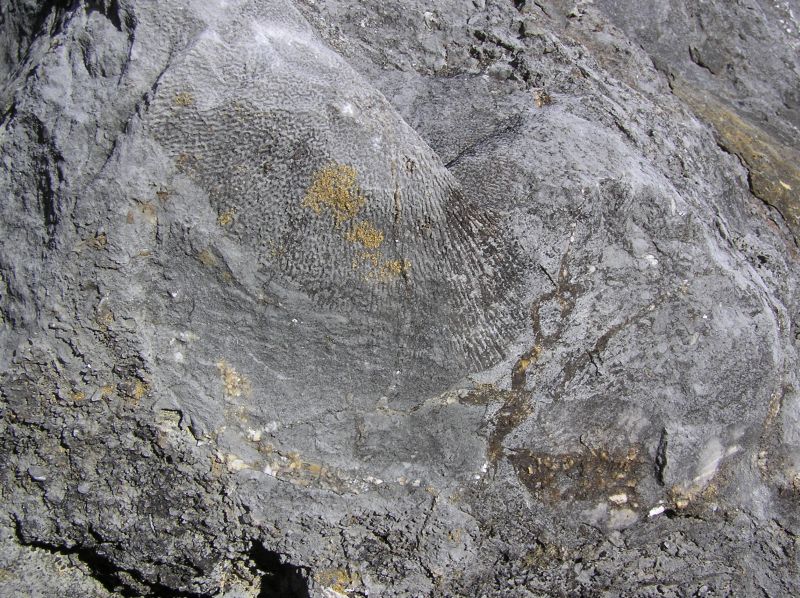
Large coral in boulder.

Another view of the same coral.

This is very tiny, no more than 1/2 inch across (My apologies for lack of a scale). Dr. Phil Novack-Gottshall says this appears to be a diploporitan, a type of echinoderm .

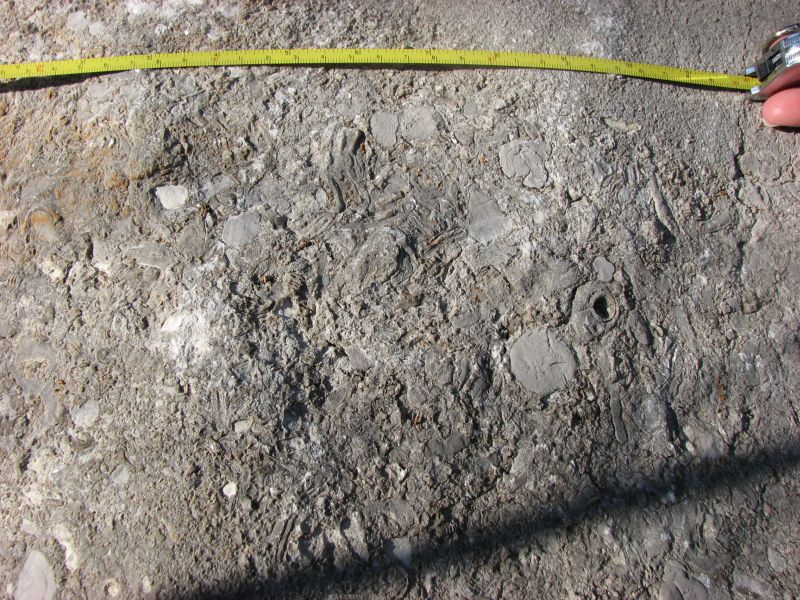

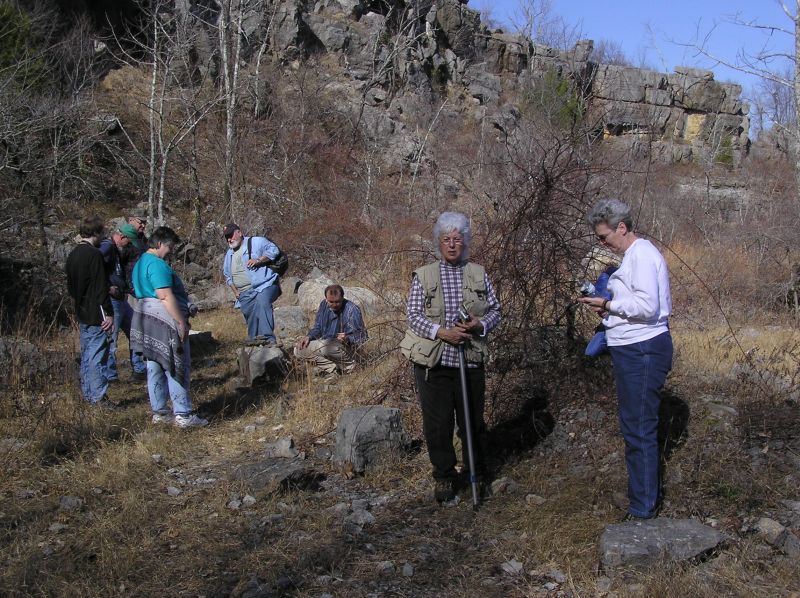
Taking a break.
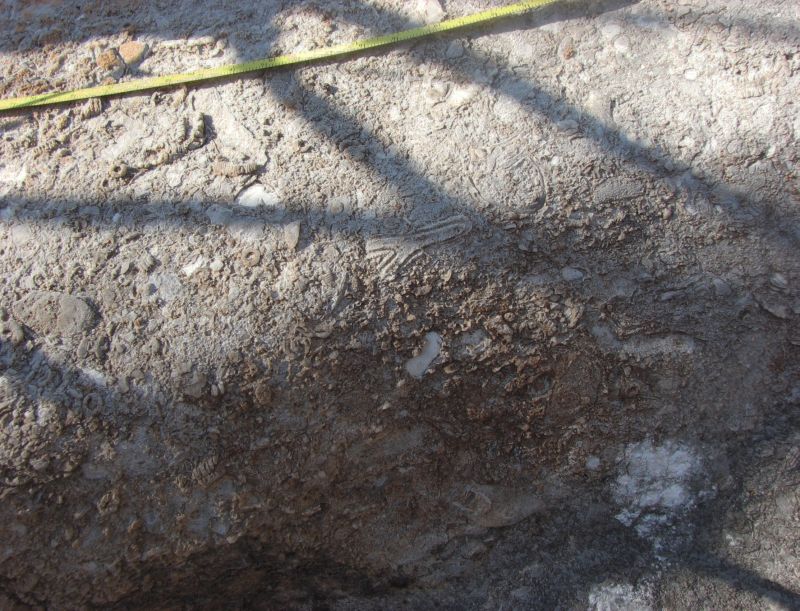
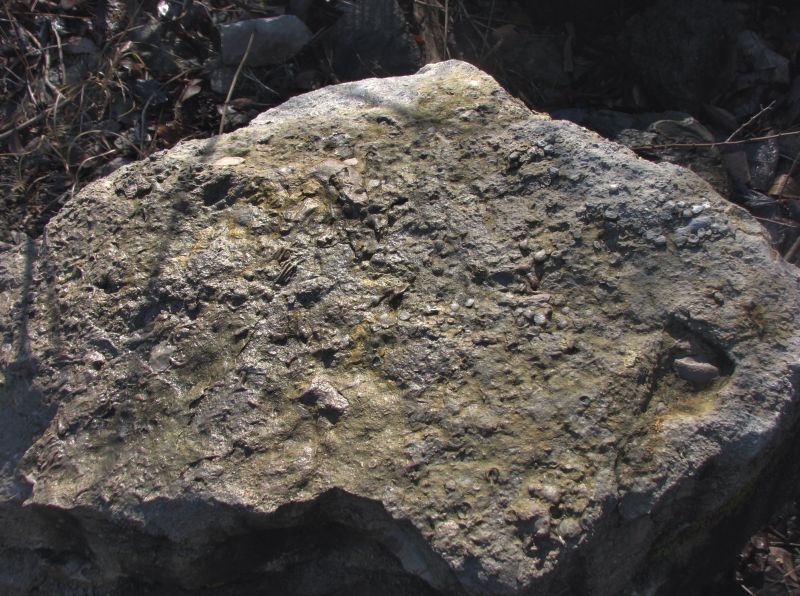
This is the rock/boulder that has been etched so that more fossil material is visible.
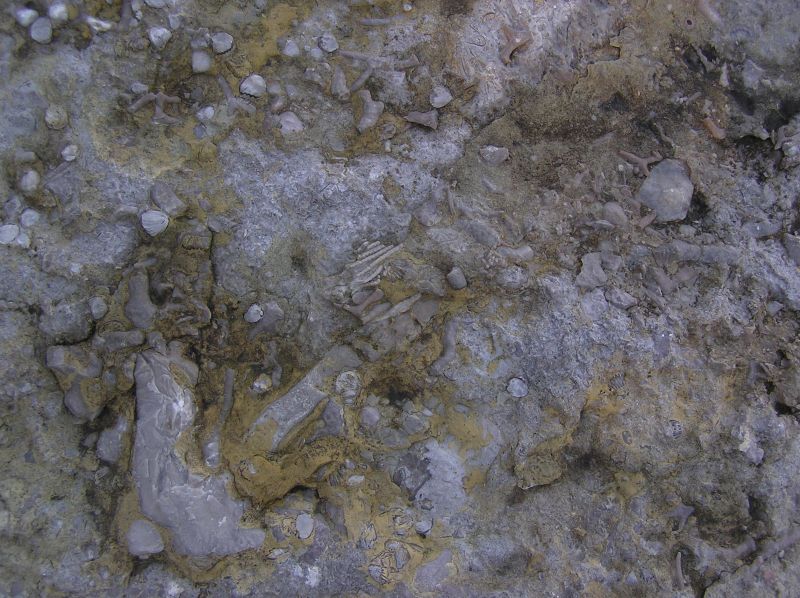
A closer view.
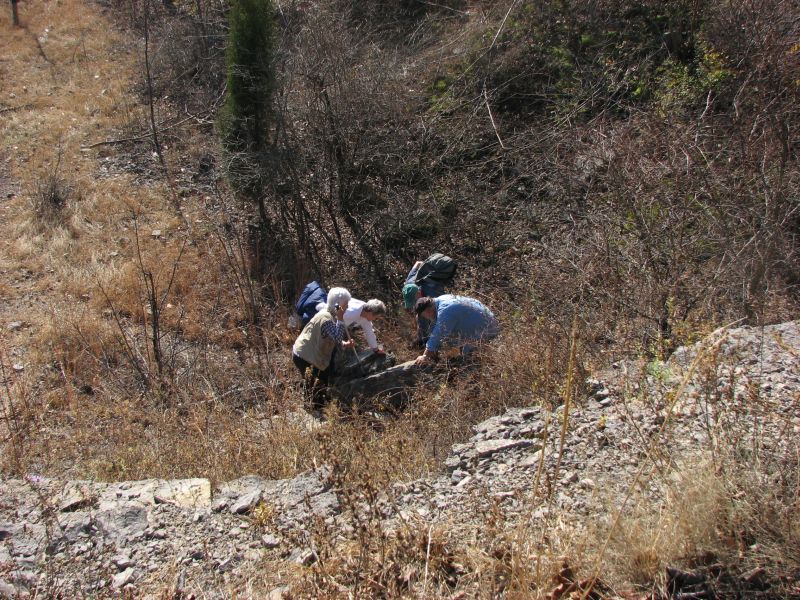
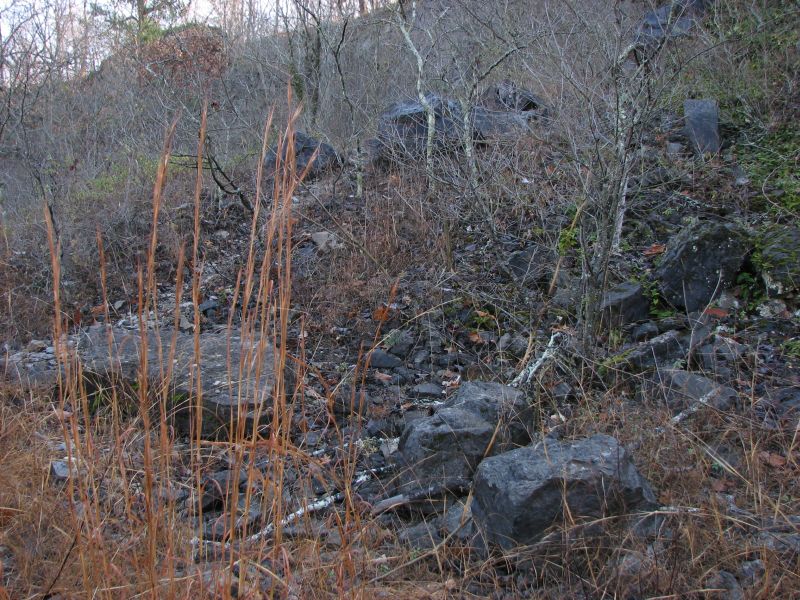

This odd looking fossil had us speculating, but according to Dr. Phil Novack-Gottshall, it is a crinoid stem with very regular cirri.

A macro view of the unusual crinoid stem.
